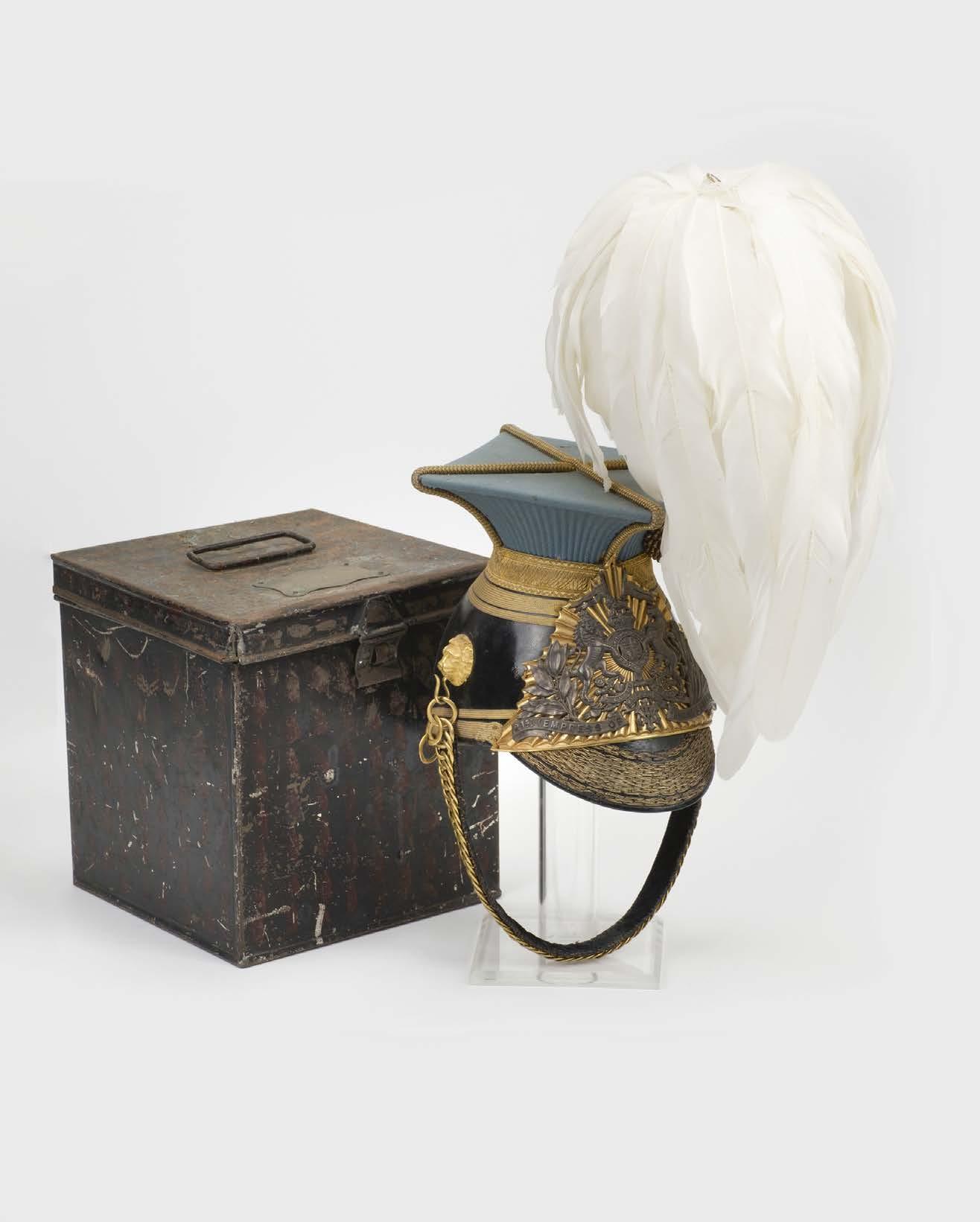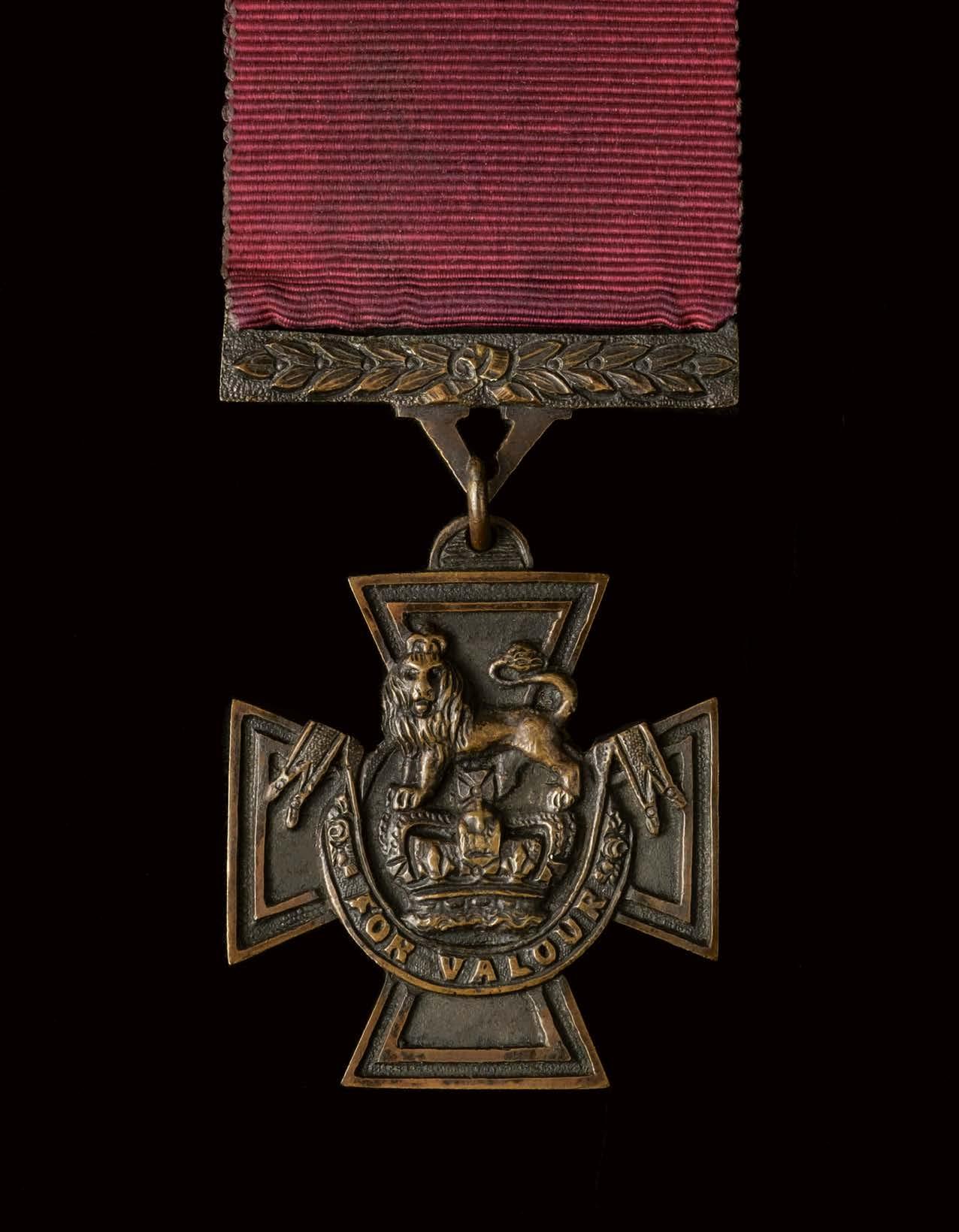






VIEWING Monday, Tuesday & Wednesday 18/19/20 November 9.30am-5.30pm Sale mornings from 9am (other times by appointment)
AUCTIONEER
Henry Meadows MRICS
Light refreshments available on view days with extra lunch options on sale days

Mallard House, Broadway Lane, South Cerney, Cirencester, Gloucestershire, GL7 5UQ
T: +44 (0) 1285 860006
E: info@dominicwinter.co.uk www.dominicwinter.co.uk




Condition reports now including video conferencing can be requested in the following ways:
T: +44 (0)1285 860006
E: info@dominicwinter.co.uk
Via the relevant lot page on our website www.dominicwinter.co.uk
All lots are fully illustrated on our website (www.dominicwinter.co.uk) and all our specialist staff are ready to provide detailed condition reports and additional images on request. We recommend that customers visit the online catalogue regularly as extra lot information and images will be added in the lead-up to the sale
Customers may submit commission bids or request to bid by telephone in the following ways:
T: +44 (0)1285 860006
E: info@dominicwinter.co.uk
Via the relevant lot page on our website www.dominicwinter.co.uk
Live online bidding is available on our website www.dominicwinter.co.uk (surcharge of 3% + vat): a live bidding button will appear 60 minutes before the sale commences. Bidding is also available at the-saleroom.com (surcharge of 4.95% + vat) and invaluable.com (surcharge of 3% + vat).

For payment information see our Information for Buyers page at the rear of this catalogue. For details regarding storage, collection, and delivery please see our Information for Buyers page or contact our office for advice.
If you intend to export goods you must find out in advance if:
a. there is a prohibition on exporting goods of that character e.g. if the goods contain prohibited materials such as ivory.
b. if they require an Export Licence on the grounds of exceeding a specific age and/or monetary value threshold as set by the Export Licensing Unit. We are happy to offer the submission of necessary applications on behalf of our buyers but we will charge for this service to cover the costs of our time. The typical cost of an application is £50 + VAT, but this price cannot be guaranteed or fixed.
All lots are offered subject to the Conditions of Sale and Business printed at the back of this catalogue. For full terms and conditions of sale please see our website or contact the auction office. A buyer’s premium of 20% of the hammer price is payable by the buyers of all lots, except those marked with an asterisk, in which case the buyer’s premium is 24%. Artist’s Resale Rights Law (Droit de Suite). Lots marked with AR next to the lot number may be subject to Droit de Suite. For further details see Information for Buyers at rear of catalogue.

Catalogue Produced by Jamm Design – 020 7459 4749 info@jammdesign.co.uk
Photography by Marc Tielemans – 07710 974000 | marc@tielemans.co.uk Darren Ball – 07593 024858 | darrenball1989@gmail.com
Railway, Motoring & Maritime Memorabilia 1-27
Military Ephemera 28-44
A Private Collection of Regimental Badges 45-55
Militaria 56-115
Edged Weapons 116-147
Orders, Decorations, Medals & Coins 148-217
Aviation Photographs & Ephemera 278-277
Aviation Art 278-303
The Norman Parker Aviation Collection 304-324
Aviation Memorabilia 325-396
The Bill Townsend Dambusters Collection 397-401

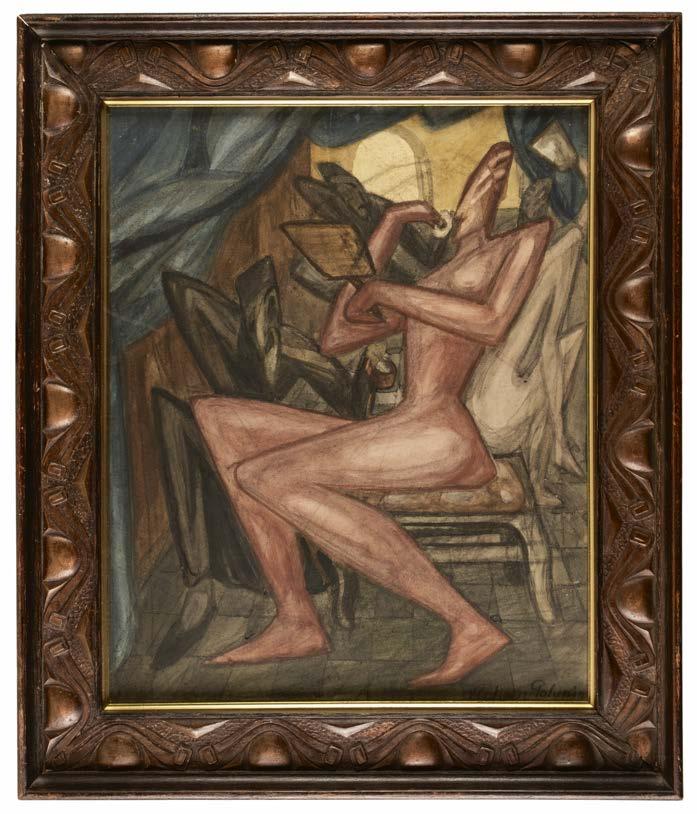
Vladimir Polunin (1880-1957). La Toilette, circa 1918, watercolour and black chalk on paper, signed lower right, sheet size 60 x 48.5 cm (23 1/2 x 19 ins), in a contemporary carved wooden frame with repeated abstract motif (73.5 x 61.5 cm)
Exhibited: Diaghilev’s Ballets Russes, Worcester City Art Gallery & Museum, 2019 (curated by Professor Richard Edmonds).
£700-£1,000 (to be offered in British & European Paintings & Prints, including works from the collection of Professor Richard Edmonds, March 2025)
Thursday 12 December
Friday 13 December
Wednesday 29 January
Wednesday 12 February
Wednesday 5 March
Wednesday 12 March
Thursday 13 March
Printed Books, Maps & Documents
An Important Collection of Original Woodblocks by Thomas & John Bewick
Children’s & Illustrated Books, Modern First Editions
Original Illustrations, Early Playing Cards & Games
Early Printed Books, Incunabula, Maps & Decorative Prints
Economics, Philosophy, Politics, Science & Medicine
British & European Ex Libris from a Private Collection
Printed Books, Maps & Documents
Printed Books, Maps & Documents
Travel, Exploration & Natural History
British & European Paintings & Prints
Old Master & Modern Prints
Including the Collection of Professor Richard Edmonds
Antiques, Jewellery & Historic Textiles
Including the Collection of Professor Richard Edmonds
Entries are invited for the above sales: please contact one of our specialist staff for further advice
RAILWAY, MOTORING & MARITIME
To commence at 10am

1AR* Broom (Gerald, 1944-). 'Gordon Castle', watercolour on paper, showing this famous locomotive crossing the River Tilt near Blair Atholl, signed lower right, 36 x 51 cm, mount aperture, gilt frame, glazed, frame size 58 x 73 cm (1)

£300 - £500
2AR Broom (Gerald, 1944-). 'Gordon Class No. 907', oil on canvas, showing this famous locomotive on Beattock Bank Dunbartonshire circa 1919, signed lower left, 43 x 49.5 cm, gilt frame, frame size 53.5 x 62 cm (1)
£500 - £800
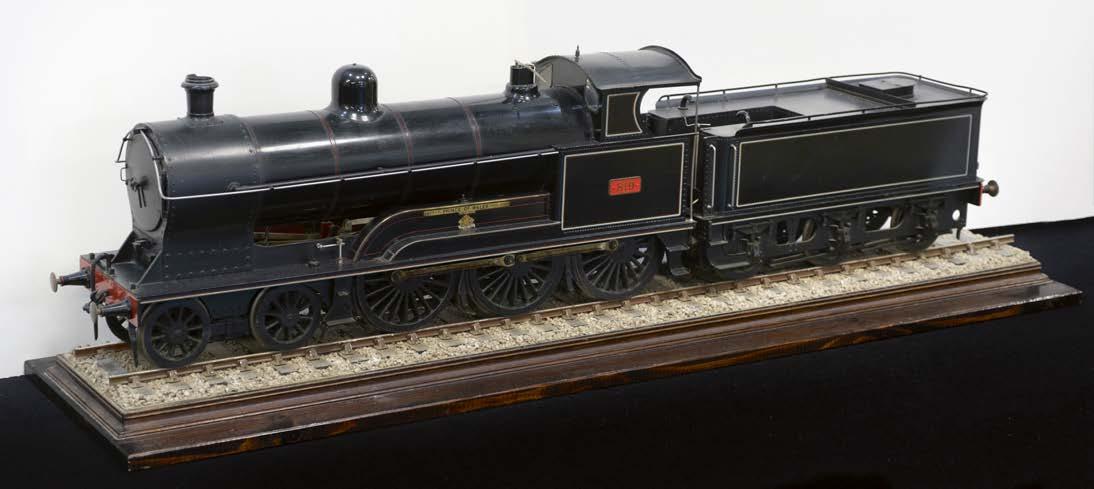
3* Locomotive. A finely engineered and detailed 3 1/2 in. gauge model of the London and North Western Railway Experiment Class 46-0 locomotive and tender No. 819, built by H.T.Lee, Bournemouth (28cm x 114cm), complete with brazed superheated copper boiler with fittings including water and pressure gauges, safety blower, clack and blowdown valves, chassis details include twin inside cylinders with Joy valve gear, finely fluted coupling rods with bearing lubricator cups, eccentric driven feed pump and by-pass, dummy brake and sanding gear, rear coupled axle lubricator boxes and pipework, riveting, steps, hand and lamp irons and lamps and other details, tender details include hand-operated brake gear, hand feed pump, tank vents, fine rivet detail, steps, hand and lamp irons, finished in correct L.N.W.R. livery and lining with etched name and number plates
Provenance: Christie’s, 16 April 1986, lot 117. (1)
£1,500 - £2,000
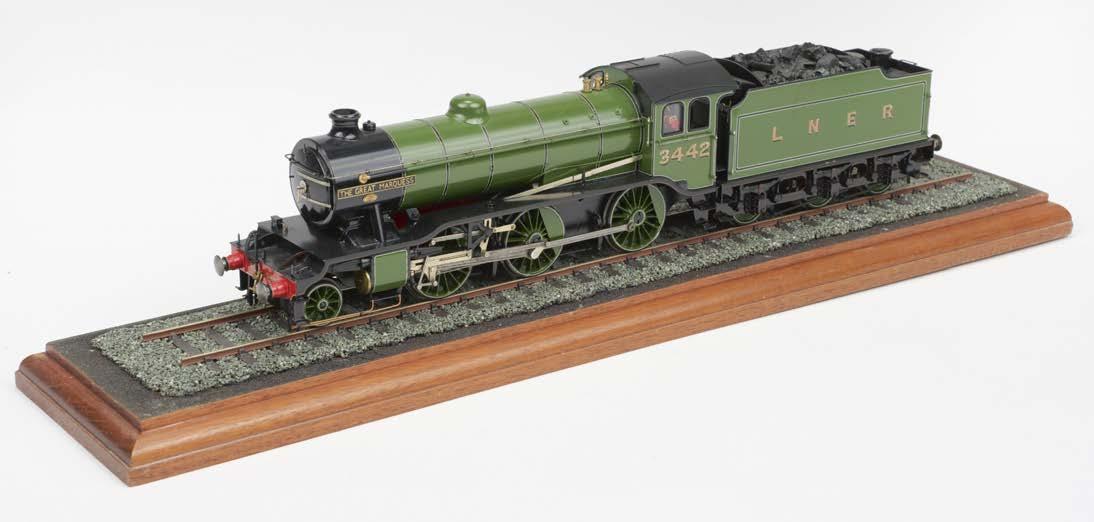
4* Locomotive. A well-presented and detailed 7 mm fine-scale (2-rail) electric model of the LNER Class K4 2-6-0 locomotive and tender No. 3553 ‘The Great Marquess’, built by P.Everton, Rotheram, (9.5 cm x 41. 5cm), complete with external details including fluted connecting and coupling rods, brake and sanding gear, lubricators, lubricator boxes and pipework, fine pipework, scale cab and backhead fittings, steps, hand and lamp irons, tender details include pick-up scoop, brake gear, tool boxes, water cocks, filler caps, steps, hand and lamp irons, finished in finely lined LNER green livery and lining, set on track in the display case
Provenance: Christie’s, 23 December 1986, lot 161. (1)
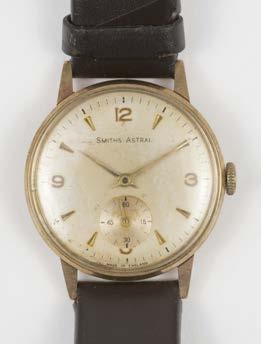
£700 - £1,000
6* Maritime Books. Lloyd’s Register of Yachts, 1914, 1920, 1921, 1923, 1932, 1937, 1946, 1949, 1958, all green cloth with gilt embossed covers, together with Chapman (Frederick Henrik) Architectura Navalis Mercatoria, Adlard Coles Ltd London 1962, Chapman (Frederick Henrik) The First Naval Architect and His Work by Daniel G Harris, 1989, Two Hundred and Fifty Years of Shipbuilding, Scotts Greenock 1961 and other related books+ (3 cartons)
£100 - £200
7* McKie (Helen). Waterloo Station, War and Peace, a pair of modern colour prints after the famous Southern Railway posters, approximately 30 x 47 cm, mount aperture, ornate gilt frame, glazed, frame size 50 x 66 cm (2)
£70 - £100

£150 - £200
5* London Transport. A 9ct gold gent’s Smiths Astral wristwatch, the silvered dial with Arabic numerals and batons, subsidiary seconds dial, the backplate engraved ‘London Transport R.W. Austin in appreciation of 44 years service’ on a black leather strap (1)
8* Model Cars. Dinky diecast model racing cars, comprising, Alfa Romeo (23F), H.W.M. (23J), Ferrari (23H), Mercedes Benz, Auto Union, Hotchkiss, Speed of Wind, Gardner’s MG (23P), Thunderbolt (23S), all playworn, and lacking boxes (9)
£100 - £150
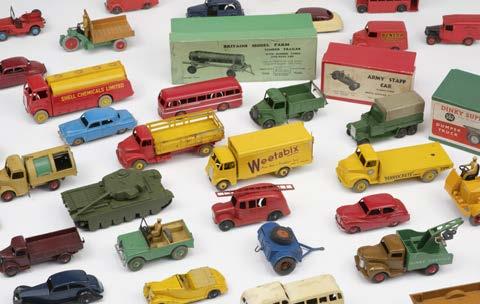
9* Model Cars. Dinky diecast model vehicles, mostly commercial, agricultural, military and road cars, including Austin Taxi, Trojan (Esso & Dunlop), Bedford, Hudson Sedan, Rover 75, Austin Somerset, Studebaker, Jaguar, Austin Devon, Sunbeam Talbot, Jeep, A.E.C. Monarch Thompson Tank, Duple Roadmaster, Muir-Hill Dumper, Leyland Comet, Guy (Weetabix), Leyland Comet (Portland Cement), Foden, Hindle Smart Helecs (30W) and other models, all playworn and unboxed, plus juvenalia including Meccano boxed sets (a carton)
£300 - £500

10* Model Cars. Tri-Ang Minic, Cabriolet, clockwork, blue and grey, one replacement tyre, 12 cm long, boxed, Cabriolet, clockwork, great and green, one tyre missing, boxed, Open Tour Car, clockwork, red and blue with passengers, Searchlight Lorry, clockwork, green, one tyre perished, caravan with original box, green, one tyre perished and another tyre missing, together with two Schuco clockwork cabriolets plus a German made clockwork cabriolet, 17 cm long, all playworn and in variable condition (8)
£100 - £150
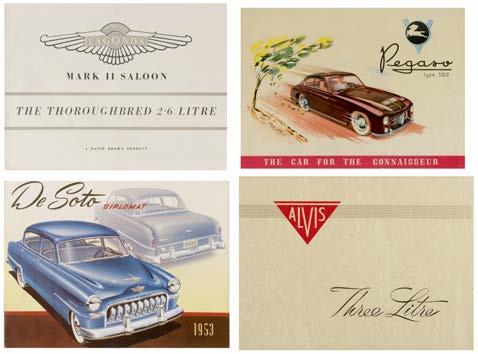
11* Alvis. Three Litre brochure, circa 1950s, monochrome illustrations, original printed wrappers with glasine dust jacket, plus a duplicate of the same title (with glasine dust jacket torn), Armstrong Siddeley, The Car of Character, 1953, motoring brochure with colour illustrations, original pictorial wrappers, oblong 4to plus other motoring brochures, mostly from the 1950s, manufacturers include Daimler, Lanchester, Citroen, Pegaso etc (approx. 25)
£200 - £300
12* Morgan Motor Company. A collection of advertising brochures and promotional literature, circa 1960-90s, together with 12 Morgan Motor Company receipt books (all blank) circa 1950, and a miscellaneous selection of motoring and transport books, mostly late 20th century publications (3 cartons)
£200 - £300


13* Morgan Motor Company. A humerous painted cloth banner formerly displayed at the Morgan Workshops circa 1960s, titled ‘My Heart Belongs To Morgan’ depicting a man hugging the bonnet of a Morgan motorcar, surrounded by sunflowers, some overall browning, damp stains mostly to right hand side, 130 x 244, together with modern reprint photographs of the workshop including one showing this banner in the background (1 carton)
£200 - £300

14* Morgan Motor Company. Morgan Sports Car Club Japan banner, celebrating the 100th anniversary of the Morgan Motor Company, signed in black and green ink signatures of the Japanese Morgan Sports Car Club, 134 x 190 cm, together with some large Morgan car photographic reproductions used for display purposes, plus Pirelli Seasons calender, 1995, Morgan calenders and other related items (a carton)
£100 - £150

15* Morgan Motor Company. The Morgan Three Wheeler Model “F” 18, duplicate maintenance booklets, circa 1950s, monochrome illustrations, orginal printed wrappers, a few issues with light dust soiling, slim 8vo, together Riley, Instruction Book for the 1 1/2 Litre Model, circa 1950s, monochrome illustrations and diagrams, original cloth back boards, slim 8vo, together with a small selection of Lucas wiring diagram sheets for various Morgan models and other motoring related reference (approx. 30) £100 - £150
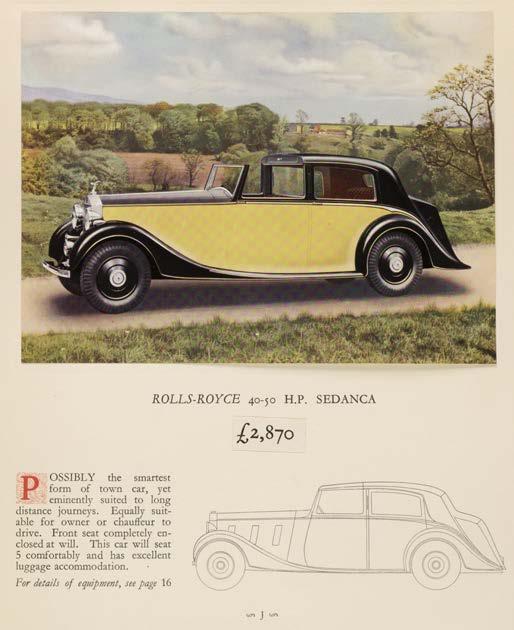
16* Rolls Royce. Motoring brochure for the 40-50 H.P. Rolls Royce Phantom III, 1930s, mounted colour illustrations within, original printed wrapper, spiral bound, slim folio, together with Bentley, The Silent Sports Car Bentley 3.5 Litre, circa 1936, mounted monochrome illustrations, original wrappers, detached and some wear, slim, 4to, Bentley, On the Road, No.12, motoring brochure circa 1930s, monochrome illustrations throughout, original wrappers, slim folio, Riley Cars, Designed & Manufactured Exclusively by Riley (Coventry) Limited, circa 1930s, monochrome illustrations throughout, original wrappers, creased and some wear, slim 4to plus one other (5)
£200 - £300

£500 - £800
17* Norman Hillwood Motoring Archive. An archive of motoring photographs, trophies, timekeeper stopwatches, car badges and related, all relating to motorsport racer and developer Norman Hillwood, archive includes two photograph albums and numerous loose photographs of Norman Hillwood’s workshop, car development and construction, images of races and related classic sports cars etc., together with several trophies including Goodwood Competitor 19481966 N. Hillwood J4 MG 750 S/C, K3 MG 1087 S/C, Lister Jaguar, Hillwood Fiat; Crystal Palace 2nd August 1954, The Glade Trophy Race K3 MG 1087 S/C Driver Norman Hillwood; K3 MG Special 1087cc S/C Castle Combe 28th August 1954; Sunbac High Speed Trial Silverstone 1958 N. Hillwood 64.38 MPH; Essex Car Club National Speed Trial West 1501 to over 2000cc N. Hillwood 1959; A.H.C. R.A.F. 1-10-72 Class Q 1st, European Historic Grand Prix Zolder medal 8.9.10.08.86, plus three racing timekeeper stopwatches (comprising a Broad Arrow Time Piece TP 1/10 and two Helier), with a small selection of car and club badges including Bugatti Owners Club, MG, MG Car Club, Hillwood Edgware, Lister Cambridge etc., a few toy racing cars, and Magnette-ised, The Pedigree of MG K3015-2 from 1934 to 2007 by Leonard Goff, 2007 and Lister-Jaguar: Brain Lister and the Cars from Cambridge by Paul Skilleter, 2010, inscribed by the author Norman Hillwood (1926/27?-2016) was the son of a jeweller based in Edgware, London. As a teenager, he acquired a keen interest in cars and began developing and racing a range of special racing cars, including vintage MGs, Lister Jaguar, and Hillwood Fiat etc. He enjoyed many types of racing events including hillclimbs, sprints and circuit racing. Two of Norman Hillwood’s trophies in the lot (Crystal Palace Glade Trophy Race 1954 & Castle Combe K3 MG Special 1954) are illustrated in Magnette-ised, The Pedigree of MG K3015-2 from 1934 to 2007 by Leonard Goff, 2007 (p.49 fig.53). (a carton)
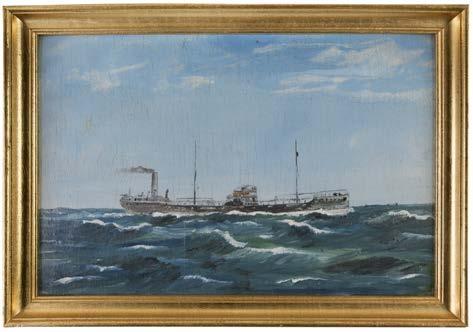
18* Knight (Albert Victor). San Dunstans, 1917, oil on board, showing this vessel in open waters, unsigned, 30.5 x 46 cm, period gold painted frame, frame size 35 x 51 cm, manuscript label to verso inscribed ‘San Dunstans no 132743 Port of Registry London September 5th 1917, Extract from Official Log Book’
The logbook is inscribed, ‘At about 6.40 pm G.M.T when about 30 miles S.W. of Scilly Isles, steamer was struck on port side between no 2 & 3 tank, by torpedo fired from an enemy submarine. 6.50 pm ordered into boats as ship was settling and steering gear was jammed. Whilst lowering port life-boat the 2nd cook made a leap to get into it and missed it and fell into the water. He had his lifebelt on but was gassed by fumes from the cargo and was drowned. 7 pm port lifeboat left ship as she was unable to remain alongside ship on account of fumes from the naphtha on no 3 tank. 9.30 pm boats picked up H.M.S. Defender ship which eventually saved and towed into Falmouth and was afterwards towed to Cardiff for dry-dock’ signed Albert Victor Knight.
An additional note is inscribed
‘Painted by Albert Victor Knight (my uncle) an officer in the Merchant Navy, a pupil of Chudleigh Grammar School, lost at sea May 1918.’ (1) £200 - £300

19* Sager (Xavier, 1881-1969). ‘Et si j’aiconseil à vous donner ne faites jamais plus de 100 kilomètres à l’heure dans les endroits tres fréquentés! (if I was to give you some advice don’t do more than 100 kilometres an hour in busy areas!), pen and ink humerous cartoon, signed and dated (19)07 lower right, inscribed in pencil lower left ‘Au/29’ and titled along the lower edge, 43.5 x 64 cm, framed and glazed, frame size 49 x 69cm, together with Oxley (Alex) ... and he used a word I dare not think about to this day, pen and ink, a humerous cartoon showing Morgan sports car hitting a pedestrian outside a car showroom, signed and dated 1973 lower left, 21.5 x 33 cm (2)
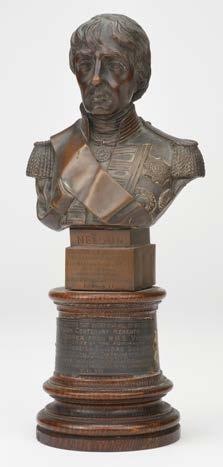
£100 - £150
20* Nelson (Horatio, 1758-1805). A copper half bust of Nelson in full admiral uniform, titled ‘Nelson’, ‘This bust Contains Victory Copper For Nelson Centenary Oct. 21. 1905 Presented By British & Foreign Sailors Society E.R.VII.’, the circular oak base with a brass plaque engraved ‘England Expects Every Man Will Do His Duty, Nelson Centenary Momento Oak & Copper From H.M.S. Victory Given By Lords of the Admiralty To British & Foreign Sailors’ Society Patron Vice Admiral H.R.H. The Prince of Wales. K.G., And Presented By The Society To Sir Otto Jaffe (Consul General at Belfast to German Empire, A Similar Bust Was Publicly Presented To The German Emperor, E.R.VII.’, 31 cm high
Sir Otto Moses Jaffe (1846-1929) was a German-born British businessman, he was twice elected Lord Mayor of Belfast and was a leader of the Jewish community in the city. (1)
£400 - £600

21* Nelson (Horatio, 1758-1805). H.M.S. Victory centenary copper wall plaque, the copper panel embossed with H.M.S. Victory with a profile of Nelson facing left beneath and inscribed ‘England expects that every man will do his duty, Admiral Lord Nelson Oct. 21. 1805’, ‘Made of copper from H.M.S. Victory & Foudroyant, presented by Lord Strathcona & Mount Royal GCMG though British & Foreign Sailors Society for Canadian Schools 1907’, mounted an oak shield, 34 x 22 cm, together with another similar from the Admiralty British & Foreign Sailors Society, 24.5 x 20 cm (2)
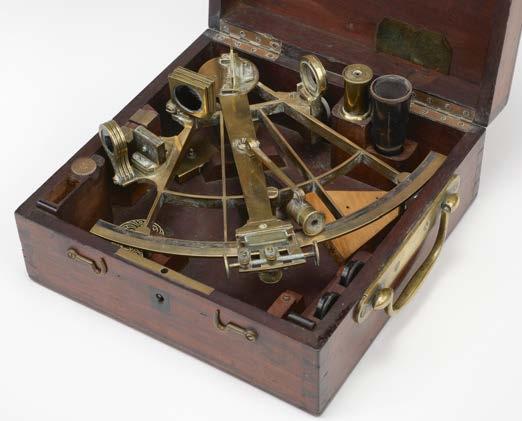
£150 - £200
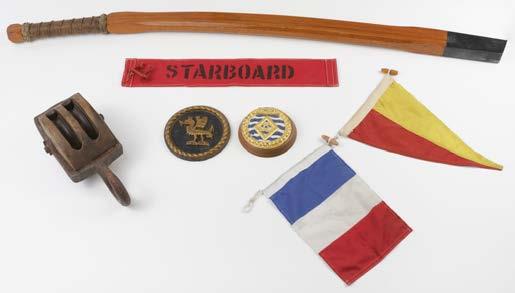
22* Nauticalia. A teak boat tiller, the handle bound in rope, 141.5 cm long, a Victorian cathead ships block, hardwood with a substantial iron hook, 33 cm long, a bronze boat badge from H.M.S. Drake, finished in gold and black, with rope twist edge, 17.5 cm diameter, plus one for H.M.S Consort, this a later lightweight reproduction, 13 cm and three pennants including one red example stamped ‘Starboard’ (6)
£200 - £300
23* Sea Charts. A large collection of sea charts, various locations including Dieppe and Approaches, February 1982, Cardigan Bay 1973 and British Isles, contained in plastic weatherproof bags (approx. 140)
£70 - £100
24* Sextant. A ship’s sextant by E. Lorieux, Paris, circa 1872, with brass ladder frame signed and dated 1872, with silvered scale divided to 160º, vernier with hinged magnifier on index arm stamped ‘E. Lorieux constructeur A Paris’, contained in a mahogany box with brass handles, with accessories including telescopes, shades etc (1)
£200 - £300
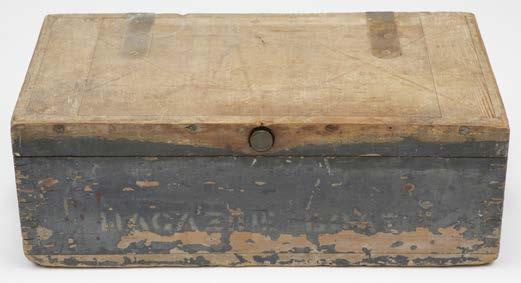
25* Boat Magazine. A late Victorian painted pine box, with brass hinges and lock, the front panel stencilled ‘Magazine Boat’, the inner lid with original paper label printed ‘Magazine, Boat. Mark I.N. Wood’, with a list of items that could be stored in this box including rockets, cartridges, keys, lanyards etc, inscribed in pencil ‘galley’, no doubt where this box was originally stored, 19.5 cm high x 54 cm wide x 29 cm deep (1)
£100 - £150
26* Telescope. A marine telescope by Negretti & Zambra, London, circa 1920, reputedly owned by Lieutenant Commander Anthony Troughton Bond, Royal Navy, stamped ‘Negretti & Zambra London’ on the single draw, the main tube bound in white canvas with rope twist ends, optics a little grubby, 60 cm long (fully extended).
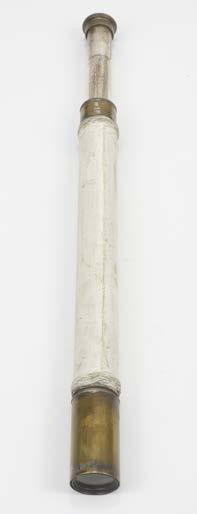
Provenance: Lieutenant Commander Anthony Troughton Bond, Royal Navy (19141976). Bond joined the Royal Indian Navy as a Sub Lieutenant in 1936, and was appointed to H.M.S. Hindustan, an Escort Vessel in 1937. He continued to serve in this vessel until promoted to Lieutenant in 1939. His next appointments were Haideri (1939) in Command, Excellent (1941) Gunnery Course, Dilawar (1943), and Investigator (1944) in Command. He was promoted to Acting Lieutenant Commander in 1944, and subsequently served aboard Dilawar (1946) in Command, and was promoted to Lieutenant Commander 1947. He transferred to the Royal Navy and was loaned to the Royal Pakistan Navy in 1948 and promoted to Acting Commander in Command of Himalaya. He resigned from the service in 1949, his name being placed on the List of Emergency Lieutenant Commanders in 1949. His medals were sold at D.N.W. (now Noonan’s), The Douglas Morris Collection of Naval Medals, 15 February 1997, lot 594. (1)
£100 - £150


27* White Star Line. An Edwardian Minton’s pottery sugar bowl supplied by Stonier & Co Ltd, Liverpool circa 1912, with cobalt blue rim and Etruscan repeating decoration, the base with the famous White Star Line logo and makers markings, 4 cm high x 7.5 cm diameter, light crazing and some gilding rubbed otherwise in good condition
The cobalt blue wares were traditionally made for first class passengers. (1)
£100 - £150
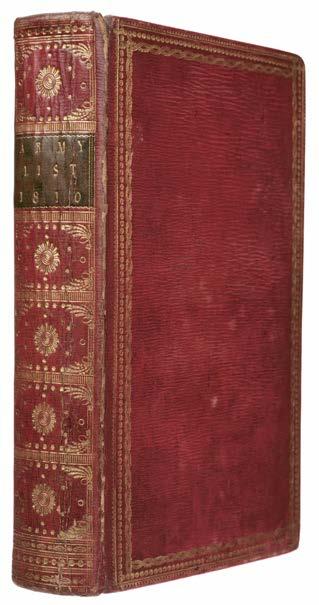
28 Army List. A List of all the Officers of the Army and Royal Marines on Full and Half-Pay: with an index and a succession of Colonels, London: printed by C. Roworth for the War Office, 1810, a few early leaves with contemporary ink annotations, corrections and marginalia, all edges gilt, contemporary crimson straightgrained morocco gilt, joints a little rubbed, 8vo (1)
£100 - £150
29* Andalusia Internment camp. A scrap album from Andalusia Internment camp, Transvall, South Africa, 1940-1966, comprising 90 leaves in German, mainly typewritten to one-side, containing 48 uncoloured woodcuts, 4 programmes for various performances at Stadtheater Andalusia, 1943-1944, a Weih Nach Ten programme for events held during December 1943, a copy of Die Wanze, Nr .4, dated 21.12.40, emergency money distributed from 26 July - 15 August 1941, and various typewritten notes including: Vorträge und Kurse im Internierungslager 24-30 November 1940, Camp Orders (issued in English by Major C. Whittet) giving a list of periods and periodicals permitted in the camp, 15.4.41, a few leaves in English and German post World War Two, etc., some pages with two hole punch marks to left edge, intermittent spotting, together with a printed copy of Diefer kalender wurde hergeftellt im Internferungslager, some creases, bound in contemporary red morocco paper backed boards, spine rubbed with some wear, all leaves loosely contained within, oblong 4to (17.3 X 23 cm) (1)
£100 - £150
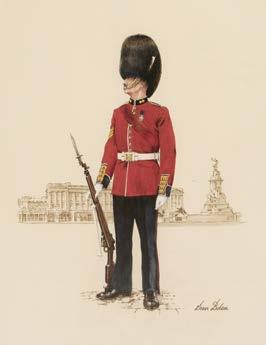
30* Bolan (Sean). Queen’s Guard, watercolour on paper, showing an armed soldier standing before Buckingham Palace, signed lower right, 38 x 31 cm, mount aperture, framed and glazed, frame size 60 x 53 cm, an additional signature to verso (1)
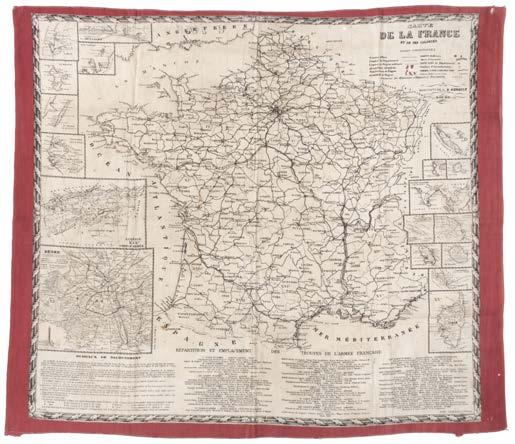
£100 - £150
31 Gardyne (Lt.-Colonel C. Greenhill). The Life of a Regiment. The History of the Gordon Highlanders..., 4 volumes, mixed editions, 1929-58, volumes I-II 1929 reprints, volumes III-IV 1st editions, colour illustrations, folding maps, some toning to endpapers, original cloth, volume IV spine and covers faded, some stains to covers, 8vo, together with The Sixth Gordons in France and Flanders (with the 7th and 51st Divisions), by Captain D. Mackenzie, 1st edition, 1921 (with a presentation inscription of James Dawson, Hon. Col. 6th Gordon Highlanders) (5)
£70 - £100

32* Grenadier Guards. An Edwardian military documents box belonging to Colonel Mark Edward Makgill Crichton Maitland, C.V.O., D.S.O., D.L., the rectangular black leather box gilt embossed ‘Capt Mark E. Crichton Maitland, Grenadier Guards, A.D.C. Government House, New Zealand’, with recessed brass handle and Bramah lock, the hinged lid enclosing a lift out tray, 15 cm high x 46 cm wide x 31 cm, some wear notably on the corners and lacking key Colonel Mark Edward Makgill Chrichton Maitland, C.V.O., D.S.O., D.L. (18821972) was educated at Eton, and Royal Military College Sandhurst. He was commissioned 2nd Lieutenant in the Grenadier Guards in 1901 and served in South Africa during the Boer War from 1902 (medal). He was promoted to Lieutenant in 1904 and Captain in 1910. Maitland served as A.D.C Governor in New Zealand from 1910-1911. He served on the Western Front during WWI where he was wounded and subsequently awarded the D.S.O. and Croix de Guerre. He was promoted to Major in 1915 and Lieutenant-Colonel in command of 1st Battalion in 1916, 2nd Battalion in 1919 and 3rd from 19231927. He commanded the regiment at the outbreak of WWII before retiring from service in 1960. Maitland resided at Island House, Wilton, Salisbury. (1) £200 - £300
33 Handkerchief. Carte de la France et de ses Colonies, Rouen: Manufacture de E. Renault (fl. 1860-1890), printed in red and black on fine cream linen, with a large map of France, flanked by a number of smaller maps, titled upper right corner, and with text to lower margin: ‘Bureaux de Recruitement’; ‘Répartition et Emplacement’; and ‘Troupes de L’Armée Français’, foliate border, selvedges to sides, top and bottom edges machine-stitched, lightly toned, a few small holes (towards edge) and fox spots, 68 x 81 cm (26.75 x 32 ins), together with: Draughts, the Favourite Game of Our Soldiers in the Trenches and Our Sailors on the Sea, circa 1914, printed in brown and blue on cream twilled cotton, depicting a chequerboard against a background of army and navy scenes, within a border of draught pieces incorporating a vignette of a soldier on one side and a sailor on the other, a few fox spots, very small hole in lower left corner, 49 x 62.5 cm (19.25 x 24.5 ins), plus The Military Map of Aldershot and Surrounding Country, London & Aldershot: Gale & Polden, 1895, printed in black on fine linen, partially toned, and 4 British wartime escape maps printed on silk
For a similar handkerchief by E. Renault see: The Met, accession number: 1989.246.15.
This unusual handkerchief is in the same format as a series of thirteen ‘Mouchoirs Militaire D’Instructions’ patented by the commandant of the Rouen garrison, Pierre Perrinon, in 1875, and produced by E. Renault. Presumably the handkerchiefs were a useful tool for instruction in the period following France’s defeat in the Franco-Prussian War, when widespread conscription was re-introduced, providing as they did information about drill, kit, weapons handling, first aid for the wounded and other essential military topics in a durable and convenient format. Our map does not seem to be part of the numbered series, but also bears the name of manufacturer E. Renault, and details the structure of the French army beneath the map.
For the second item see: Imperial War Museum, catalogue number EPH 2594.
(7)
£150 - £200

34 Honourable Artillery Company. Journal of the Honourable Artillery Company, issues 1-422 in 59 volumes, a run, 1923-1982, colour and monochrome illustrations, folding maps, occasional light spotting, volumes 1-34 with upper wrappers only bound in uniform crimson half-morocco, regimental arms to upper covers, a few edges a little rubbed, light fading to a few spines, volumes 35-59 in original wrappers with staple rust, a few spines rubbed, 8vo (132)
£300 - £500
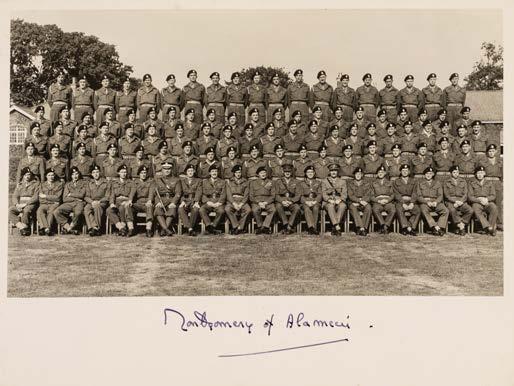
35 Montgomery (Bernard Law), Viscount Montgomery of Alamein. El Alamein to the River Sangro, 1st edition, 1946, colour maps and plans, mostly folding, with author’s signed presentation inscription to Johnny Henderson ‘who accompanied me as A.D.C. during the operations described in these pages’, signed and dated ‘Berlin 6-1-46’, original blue cloth, 8vo, some spotting and wear to spine, with accompanying slipcase, together with 5 black and white photographs showing Montgomery during service, (one signed in ink), 16.5 x 22 cm

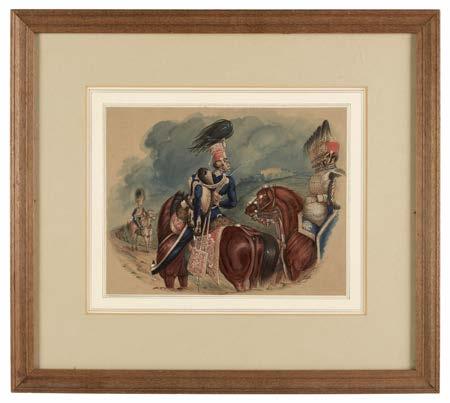
£200 - £300
Major John ‘Johnny’ Ronald Henderson C.V.O., O.B.E. (1920-2003) was aidede-camp to Field Marshal Viscount Montgomery of Alamein. He served with the 12th Royal Lancers and later lived at West Woodhay House, Berkshire, holding the offices of High Sheriff and Lord Lieutenant of Berkshire. (6)
36* Norrie (Orlando, 1832-1901). The 17th Lancers at the Crimea, watercolour on paper, signed lower right, 23.5 x 33 cm, toned, modern frame, glazed, frame size 42 x 51.5 cm
Christopher Foyle OBE (1943-2022), chairman of Foyles Bookshop and founder of cargo airline business.
(1) £200 - £300
37* Read (Blackwood Moutray, 1820-1865). ‘A Captains address to his Squadron’, watercolour on paper, showing Hussars in full dress on horseback, signed lower right, 19.5 x 24.5 cm, laid on card with mount aperture, framed and glazed, frame size 38.5 x 43 cm, together with another by the same artist, ‘Scene from an Indian Comedy’, watercolour on paper, unsigned but attributed to verso, 8.5 x 6.5 cm, cut down and framed and glazed, frame size 25 x 22.5 cm
Christopher Foyle OBE (1943-2022), chairman of Foyles Bookshop and founder of cargo airline business.
(2) £100 - £150
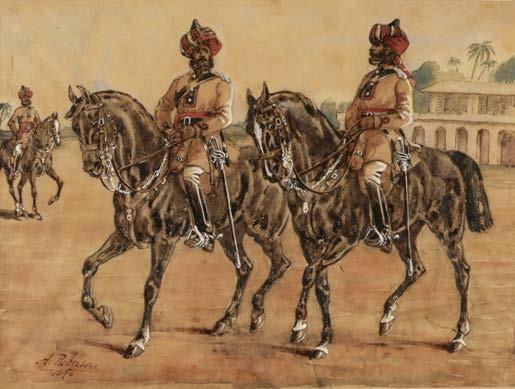
38* Roberson (A). 1st Bengal Cavalry, 1894, watercolour on paper, showing officers on horseback, signed and dated lower left, 19 x 25 cm, pin holes in the corners, mount aperture, titled in pencil ‘1st Bengal Cavalry - Full dress ‘Review’ order, framed and glazed, frame size 37 x 41 cm, together with a pen and ink sketch titled ‘Indian Cavalry Types’, showing two profile portraits and a lancer on horseback, 18.5 x 23 cm, mount aperture, framed and glazed, frame size 28.5 x 33 cm (2)
£100 - £150
39* Royal Military Academy. Compass Sketch of Woolwich Common, a pen and ink estate plan drawn by Cadet Henry Godfrey Howarth, circa 1880, scale 1/5280, hand coloured and folding creases, signed lower right, 50.5 x 40 cm, mount aperture, framed and glazed, frame size 63 x 53 cm (1)
£150 - £200

40* Stereocards. A collection of Boer War stereocards by Underwood & Underwood circa 1900, comprising 92 cards, showing battlefields, soldiers, nursing, embarkation for South Africa and other related photographs, together with a stereoviewer by Underwood & Underwood, tin and wood (1) £100 - £150
41* Sword Reference Books. A collection of reference books, including Whitelaw (Charles. E.) Scottish Arms Makers, WilkinsonLatham (John) British Cut and Thrust Weapons, other titles include British Military Bayonets, Scottish Sword and Dirks, Naval Swords, Shoulder-Belt Plates and Buttons, British Gallantry Awards and other military books (16)
£70 - £100
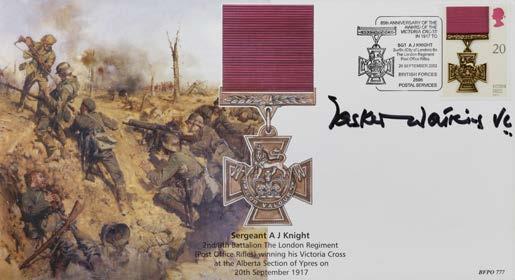
42* Victoria Cross. A collection of 60 first-day covers signed by VC winners, including Tasker Watkins, Ian Fraser, Thomas Gould, Edward Kenna, Keith Payne, Richard Annand, Charles Smith Rutherford, Patrick Porteous, Harry Laurent, Henry Foote, John Cruikshank, Bill Reid, Leonard Cheshire, Norman Jackson, Godfrey Place, Bill Speakman and others, presented in an album with 7 cut signatures including Ishar Singh, Henry Tandey, Evelyn Wood and John Mahoney (67)
£100 - £200 Lot 43

43* Victoria Cross. The Legion Book, Edited by Captain H. Cotton Minchin, Cassell and Company Ltd, Third Impression 1919, hardback publication inscribed in ink by Major General Daniel Marcus William Beak V.C., D.S.O., M.C. & Bar, ‘This book published as a result of the interest of H.R.H. The Prince of Wales was a gift from him to all V.C.s who attended the dinner he gave them and presided over at the House of Lords on Saturday Nove 29th 1929’, with additional signature, Morroco binding 29.5 x 23.5 cm
Major-General Daniel Marcus William Beak, V.C., D.S.O., M.C. and Bar (18911967), was born in Southampton and joined the Royal Naval Volunteer Reserve in 1915. He served in Gallipoli and was present at the evacuation. He joined the Royal Scots Fusiliers in 1918 and was transferred to the King’s Regiment with the rank of Major in 1932. From 1939-1940 he commanded the 1st Battalion, South Lancashire Regiment. He was promoted to Brigadier in 1940, and saw service in France, being made Acting Major-General in 1941. Beak was appointed General Officer Commanding at Malta in 1942. He was awarded the Victoria Cross in 1918.
V.C. London Gazette: 15.11.1918
‘For most conspicuous bravery, courageous leadership and devotion to duty during a prolonged period of operations.
He led his men in attack, and, despite heavy machine-gun fire, four enemy positions were captured. His skilful and fearless leadership resulted in the complete success of this operation and enabled other battalions to reach their objectives.
Four days later, though dazed by a shell fragment, in the absence of the brigade commander, he reorganized the whole brigade under extremely heavy gun fire, and led his men with splendid courage to their objective.
An attack having been held up, he rushed forward, accompanied by only one runner, and succeeded in breaking up a nest of machine guns, personally bringing back nine or ten prisoners. His fearless example instilled courage and confidence into his men, who then quickly resumed the advance under his leadership.
On a subsequent occasion he displayed great courage and powers of leadership in attack, and his initiative, coupled with the confidence with which he inspired all ranks, not only enabled his own and a neighbouring unit to advance, but contributed very materially to the success of the Naval Division in these operations.’
(1)
£100 - £150

44* WWI Trench / Battlefield Panoramas. An original WWI pen and ink drawing on waxed cloth formed in two parts and joined together, showing German and British front line, noting various locations including Oblong and Wieltue Farm, Calf Avenue, Kitchener’s Wood, Canadian Dug Outs and Caliban Trench, various co-ordinates and some hand colouring, overall length 140 cm, together with another similar showing the Caliban Trench Reserve and the German Front Line with Bellevue Farm on the right, 51 cm long plus another titled ‘View From Hasler House O.P.’ showing Paschendale on the left and Zonnebe on the right, hand coloured, 55 cm long, all rolled and foxed
(3)

£100 - £150
45* Cap Badges. A collection of 55 Glengarry badges, representing regiments from the 2nd Foot to the 104th Foot (with gaps) including East Devonshire Regiment, Cornwall Light Infantry and Nottinghamshire Regiment, presented on three card display boards (55)
£300 - £500
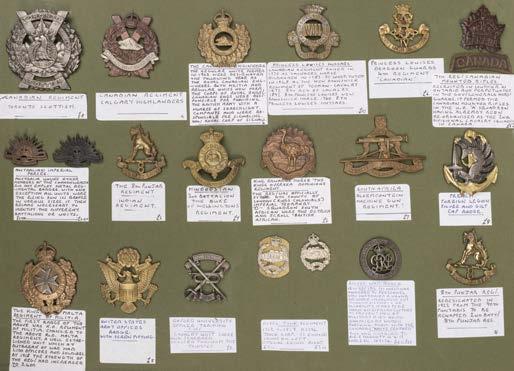
46* Cap Badges. A collection of regimental badges, including Canadian Regiment Calgary Highlanders, Canadian Engineers, Australian Imperial Force, Oxford University Officer Training Corps, Royal Tank Regiment, Guards Machine Gun Battalion, Somerset Light Infantry, Glamorgan Yeomanry and many others, presented on four card display boards (105)
£200 - £300
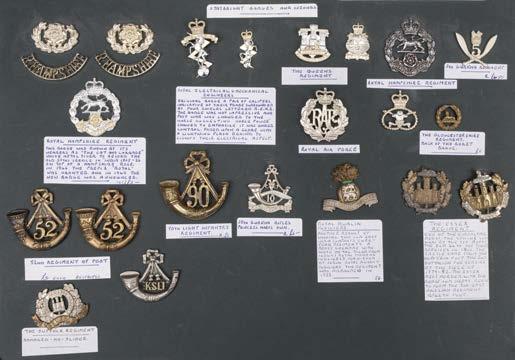
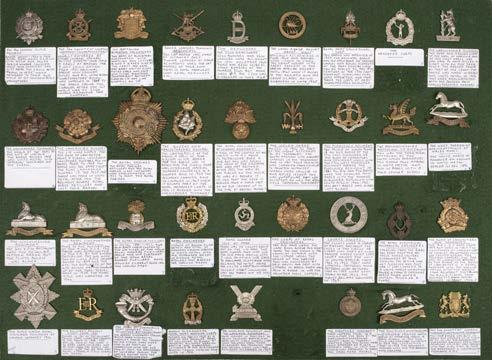
47* Cap Badges. A collection of cap badges, including The Duke of Lancasters Own Yeomanry (Royal Tank Regiment), The Parachute Regiment, Royal Pioneer Corps, The Lovat Scouts, Royal Army Ordnance Corps, The Queen’s Own Yeomanry, The Welsh Regiment etc, presented on four display boards (approx. 110)
£200 - £300
48* Cap Badges. A collection of Scottish military cap badges, including The King’s Own Scottish Borderers, The Highland Light Infantry, The Black Watch, The Highland Brigade, presented on a card display board, together with two further boards of mixed badges including Scottish and others (58)
£300 - £500
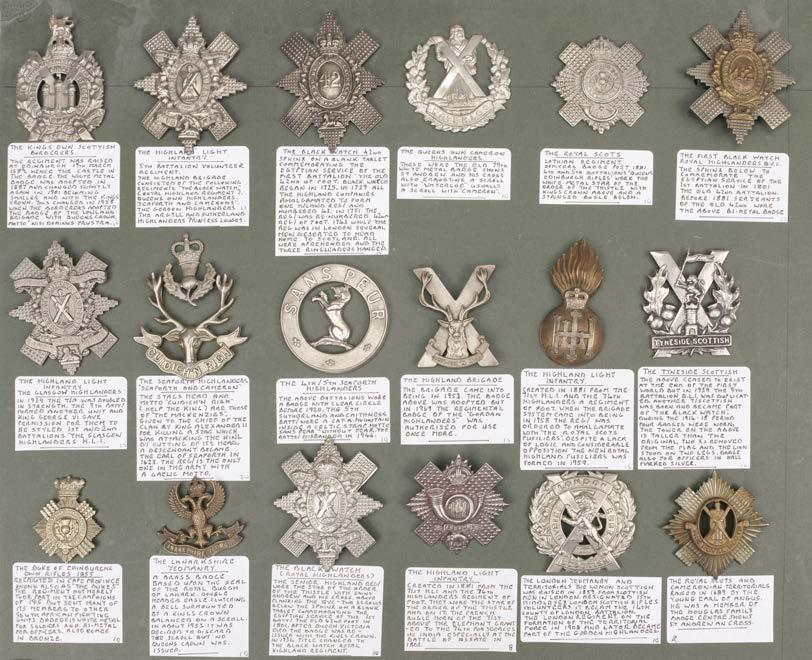
£200 - £300
49* Cap Badges. A comprehensive collection of military cap badges, including Royal West Kent Regiment, Royal Berkshire Regiment, The Queen’s Own Warwickshire Regiment, The Sherwood Foresters, The Gloucestershire Regiment, The Black Watch, Lovats Scouts, The Shropshire Yeomanry, The Welsh Horse etc, presented on four display boards with information (110)

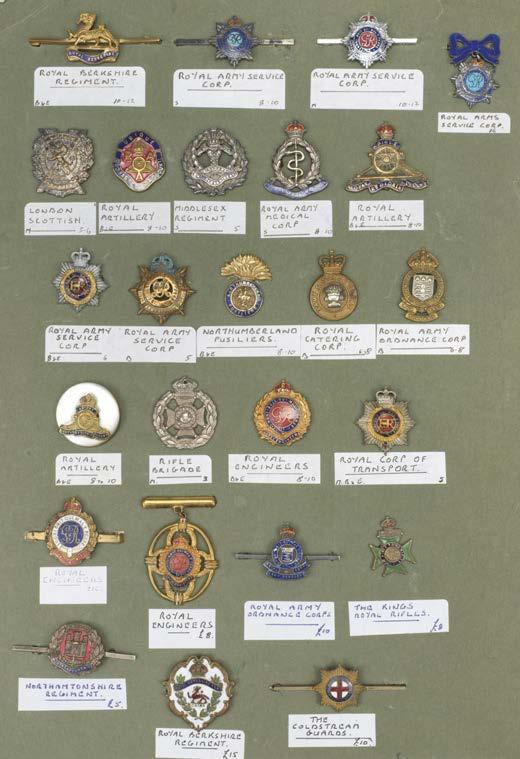
50* Cap Badges. A nicely presented collection of military cap badges, comprising The Tyneside Scottish, The Lowland Regiment, The London County Volunteer Rifles Battalion, The Duke of Lancasters Own Yeomanry, The Fife Forfar Yeomanry, The Ayrshire Earl of Carrick Yeomanry, laid of green felt, together with three boards of military buttons, mostly corps including The Royal Tank Regiment, some regiments including Wiltshire, Oxfordshire Volunteer Rifles etc and one other board with a WWI “war souvenir” comprising trench art letter opener, the blade engraved Mt Lemerle plus a spectacles case (1)
£100 - £150
51* Military Badges. A collection of military sweetheart badges, including Royal Berkshire Regiment, London Scottish, Middlesex Regiment, Rifle Brigade, Seaforth Highlanders, Royal Artillery, together with various miscellaneous medals including The Navy League, German British Fascists etc (52)
52 No Lot
£100 - £150

53* Shoulder Titles. A good collection of regimental brass shoulder titles for regiments and corps, including Royal Warwickshire, Essex, Dorset, Wiltshire Regiment, Royal Guernsey Militia, Somerset Light Infantry, Roy Highland Light Infantry, Green Howards, Buffs, Middlesex etc (approx. 120)
£200 - £300
54* German Medals. WWII German War Merit Cross with Swords (2), another without swords, Wehrmacht Long Service Medal, Russian Front Medal WWI Cross of Honour 1914-1918, Blockade Breaker badge (restrike) and other related items, presented on a board for display (10)
£100 - £150
55* Cap Badge Books. A collection of reference books, including Kipling (Arthur. L.) & King (Hugh. L.), Head-dress Badges of the British Army, Volume I & II, Wilkinson (F), Badges of the British Army 1820 to the Present, New Ninth and Tenth Editions and other related books, plus The Medal Collection, an album containing 28 reproduction British campaign medals all with a first day cover giving historical information (a carton)
£70 - £100
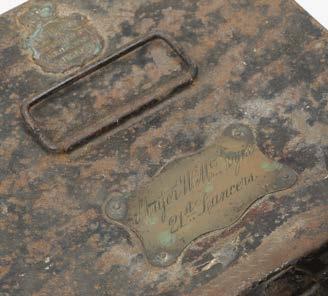

56* Battle of Omdurman. A fine Victorian officers' lance cap of the 21st Empress of India Lancers belonging to Major William Markham Doyne, who led the charge of 'C' Squadron during the Battle of Omdurman on 2 September 1898, the black leather skull with the upper portion of French grey melton cloth showing minor moth damage, with gold gimp cord across the top and down the angles, to the left side is a gold bullion boss with cypher, the gilt lance cap plate is mounted with silvered Royal Arms, battle honours and title scroll, leather peak with gold bullion lines, two gilt metal lion head boss’s support the chin scales with velvet backing, leather sweatband to the interior with full feather dress plume and original square helmet tin with manufacturers/retailers plaque stamped 'Sandilanus 12 Conduit St Regent St London' and brass plate contemporarily engraved 'Major W.M. Doyne 21st Lancers'
William Markham Doyne (1862-1924) was born in Lewisham, London. He was commissioned as Lieutenant in 1879 with the Donegal Artillery Militia (The Prince of Wales's) at Letterkenny. He joined the Garrison Artillery, North Irish Division, 3rd Brigade in 1882 and subsequently the 21st Lancers in 1883, where he rose to the rank of Major in 1898. Doyne led the charge of 'C' Squadron during the Battle of Omdurman on 2 September 1898.
The Battle of Omdurman, 2 September 1898
The 21st Lancers fought through the packed enemy and moved away, dismounted and opened a withering fire using carbines, forcing the Dervishes to withdraw. During this action, the regiment suffered 21 men dead and 50 wounded, with three Victoria Crosses awarded. Sir Winston Churchill, 4th Hussars, commanded 'A' squadron during the famous charge.
The 21st Lancers were awarded the title Empress of India’s by Queen Victoria and became the only regiment entitled to wear her royal cypher also being permitted to return its French-grey facings, previously replaced by scarlet.
Major Doyne's medals were sold at Spink, London on 29 August 2024, lot 389 for a hammer price of £9500.
(1)
£2,000 - £3,000
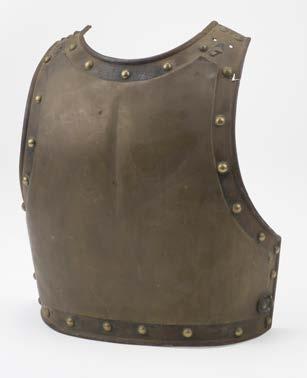
57* Armour. A French Cuirass backplate, 19th century, steel with brass rivets, the opposite side engraved with roman numerals (probably inspection stamps), 42 cm long (1)

£100 - £150
60* Cap Badges. A collection of military cap badges, including Royal Scots Greys, 17th Lancers, Tank Corps, 91st Regiment Canadian Highlanders, Argyll and Sutherland Highlanders, Seaforth Highlanders and other badges, mostly lacking lugs (35)
£150 - £200
61* Cap Badges. A collection of Victorian and later regimental cap badges, including Victorian Irish Lights, Warwickshire Rifle Volunteers, Royal Highland Regiment of Canada, Royal Welsh Fusiliers, Black Watch and other badges, all lugs are missing and these are all probably un-issued badges (37)
£100 - £150
62* Compass. A WWI officer’s brass compass, stamped F-L No 2 and dated 1917, in brown leather case, together with a brown leather cartridge pouch, the front flap applied with a white metal Argyll and Sutherland Highlanders badge, brown leather gun holster and other military items including a French helmet plate and copy 16th Lancers helmet plate (7)
£100 - £150
63 Compasses. A Watts & Sons Ltd London brass compass, circa 1920, the heavy brass case numbered 23312, with glass dial and number plate with internal bubble levels, together with a later compass by E.R. Watts & Son, London, plus four further pocket compasses and an O.M. Watts Ld London parallel rule, boxwood stamped ‘Capt Fields Improved Parallel’ contained in original wooden box inscribed ‘G. Small, R.N.V.R. Personal Property ‘ (7)
£70 - £100
58* Bloomsbury Rifles. A Victorian shako plate circa 1868, bronzed finish with a Maltese cross with lions between the limbs surmounted by a crown, a circlet inscribed ‘Bloomsbury Rifles’ with a strung bugle, green felt backing, 9 x 6.5 cm (1)
£100 - £150
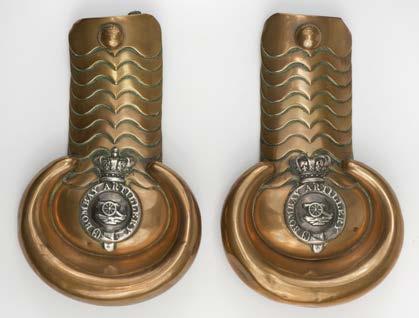
59* Bombay Artillery. A pair of Officer’s Undress shoulder scales by Landon & Co, 17 Jermyn St, London, circa 1840, copper with white metal crowned badge featuring a cannon within a belt inscribed Bombay Artillery, 17 cm long, heavily polished (1) £100 - £150

64* Corps of Guides. An officer’s shoulder pouch, curved white metal frontis piece with interlaced monogram and ‘Guides’ above, on a plain ground with foliate engraved border, red leather pouch 17 cm long, together with two further related Corps of Guides belts including one with brown leather pouch (3)
£200 - £300
65* Cross Belt Prickers. A Victorian silver cross belt pricker plate and fixings by Bent & Parker, Birmingham 1888, the shield shape plate finely cast with foliate scrolls, and two holders to support the arrow shaped prickers, suspended by a chain, 8.5 x 6 cm, together with another by BWL, London, no date letter but circa 1880s, gross weight 154 g (2)
£100 - £150

66* Cross Belt. A George V silver mounted cross belt, the 5.5 cm wide silver embroidered belt with red leather back stamped ‘Hawke & Co, 14 Piccadilly, W.’, the ornate silver mounts include a crowned G.R.V. cypher, hallmarks for Jennens & Co, Birmingham 1912, with additional white metal lion head buckle and prickers, 80 cm long
(1)
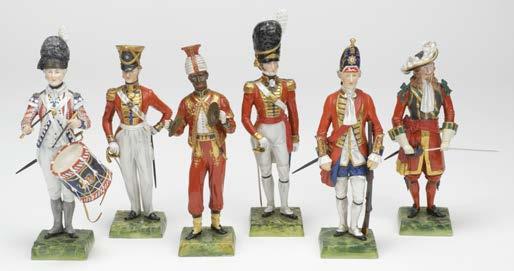
£200 - £300
67 Dioramas. A collection of Napoleonic Wars collectables, including 13 modern dioramas each with Perspex case, showing battlefields, mounted riders and foot soldiers, together with related prints, books and ornaments (3 cartons)
£100 - £200
68* Dioramas. 'Normandy to Berlin, 1945', a composite diorama showing American soldiers and a tank entering a war-torn Berlin, mounted on a plinth 25 x 38 cm, together with a similar diorama, 20 x 20 cm (2)
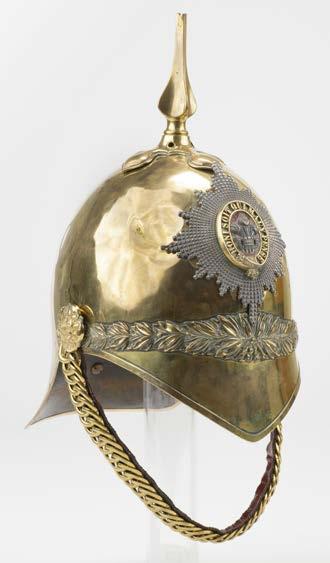
£100 - £150
70* Dresden Porcelain. A collection of six Dresden porcelain military figures, comprising Officer Coldstream Guards 1660, Drummer First Guards 1792, Officer Grenadier Comp Coldstream Guards 1760, 1st Regiment of Foot Guards 1815, Sergeant 3rd Guards, Jean Baptiste Time Beater 1840, all titled in gold to the base, approximately 30.5 cm high, minor wear and a very small chip to the base of Sergeant 3rd Guards (6)
£300 - £500
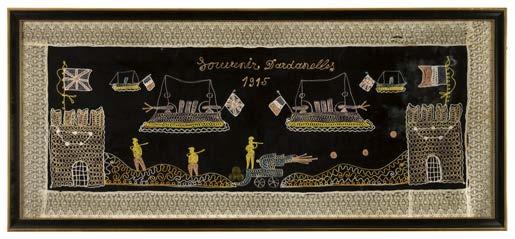
71* Gallipoli. A souvenir embroidery commemorating the Allied Naval Assault on the Dardanelles 1915, in various colours showing British and French naval gunboats, two forts and soldiers with a cannon bordered by fine crochet work cotton, 56 x 134 cm, black and gilt frame, glazed, frame size 62.5 x 139.5 cm (1)
£200 - £300

£300 - £500
69* Dragoon Guards. A Victorian 1871 Pattern Troopers helmet of 3rd (Prince of Wales’s) Dragoons, circa 1895, the brass skull with a helmet plate featuring silver Prince of Wales feathers on red enamel ground (chipped and some loss) surrounded by a garter motto ‘Honi Soit Qui Mal Y Pense’, laid on a silver twelve pointed star, with gilt oak leaf seam and backstrap, with brass plume holder and chin scales with rosettes, original tan cloth and leather lining, dings and dents commensurate with age (1)
72* Grenadier Guards. A 1949 Pattern Battledress Blouse, with tailors label by B. Bloom Ltd 1953, the left arm with cloth insignia including red and white Grenadier Guards shoulder title, Sergeant’s stripes, 1st Guards Armoured Division, with 1949 Pattern trousers and red sash, moth damage, together with a service dress tunic with tailors label by Meyer & Mortimer Ltd, inscribed with original owners name 2nd Lt. W. Coulson and struck through with the name Capt B.T., dated 3.2.88, Grenadier Guards Officer’s buttons, pips and medal ribbon bars with 8th Army bar and M.I.D. oak leaf, 87cm long, inner arm length 43 cm, with trousers and other Grenadier Guards clothing including desert camouflage waterproof jacket with ISAF insignia, two Officer’s caps and other items (9)
£200 - £300
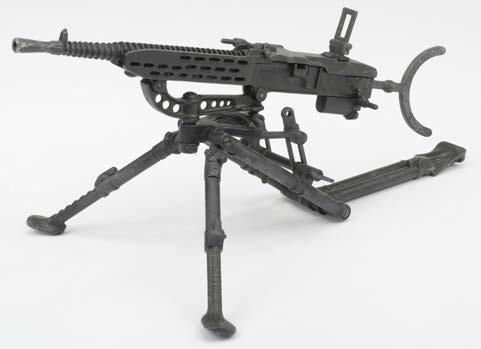
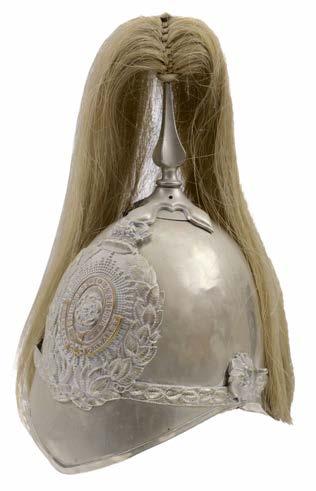
75* Helmet. Victorian Albert pattern helmet of 1st West Yorkshire Yeomanry Cavalry, white metal skull with bi-metal helmet plate, horse hair plume and leather lining, dings and dents commensurate with age
Christopher Foyle OBE (1943-2022), chairman of Foyles Bookshop and founder of cargo airline business.
(1)
£300 - £500
73* Gun Model. Skoda Z.B. 37 German machine gun model, stamped SKODA Z.B., Z.B. 37 No 0962, 40cm long, mounted on a tripod base (1)
£100 - £150

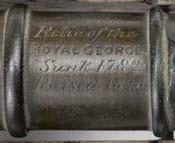
74* H.M.S. Royal George. A bronze model cannon, the bronze cannon engraved ‘Relic of the Royal George, Sunk 1782, Raised 1840’, mounted on an oak gun carriage, the cannon 19 cm long, together with a cast iron miniature cannon in relic condition, with drilled touch hole and therefore, probably a signal cannon, 17 cm long plus a novelty inkwell in the form of a cannon, with glass liner, 18 cm long
H.M.S. Royal George was a ship of the line of the Royal Navy. A first-rate with 100 guns on three decks. She was sunk at Spithead, Portsmouth on 29 August 1782 with the loss of 900 lives including Admiral Kempenfelt. Various attempts were made in 1839 and 1840 to recover items from the wreck including cannons. Gunpowder cylinders caused a great column of water to rise in the air and a circular wave 180 yards in diameter. Woodwork floated to the surface and was collected and made into snuff boxes, books and other souvenirs.
(3)

76* Holster. A WWI German P08 Luger pistol holster, the brown leather with good stitching and with hinged flap enclosing additional magazine numbered ‘9298’ and tool contained in a small pouch, the holster indistinctly stamped with makers mark and dated 1916, additionally inscribed with owners name, ‘F. Rasiki [?]’, a nice example with minor scuffs and wear
(1)
£100 - £150
77* Hussars. Three pairs of inter-war Hussars dress overall trousers, each with blue cloth and yellow side lines, with tailors labels for The Rego Clothiers Ltd 1937, together with two waistcoats, both with red and yellow facings, original cloth tailors label by Hobson & Sons (London) Ltd 1956, plus a related belt
(6)
£150 - £200
£150 - £200
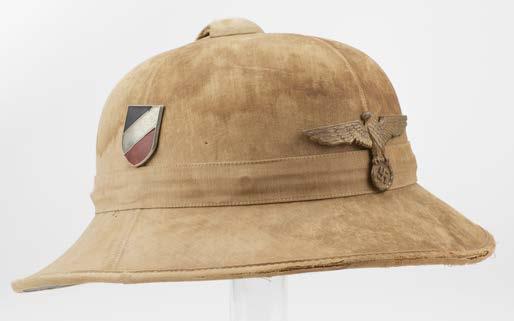
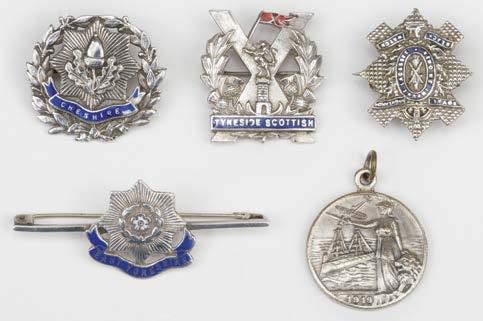
78* Kriegsmarine. A WWII German pith helmet of the North Afrika Corps, original cork helmet covered in cloth, with Kriegsmarine eagle to the front and National Tricolour shield to one side and two-tone eagle shield to the other, some period staining and wear, commensurate with age and use (1)
£200 - £300

79* Kriegsmarine. A WWII German Ship or U-boat bulkhead clock, the 15 cm circular dial with black Arabic numerals and Kriegsmarine device, numbered 15379 N with winding hole, the hinged glass faceplate with locking arbor numbered 34, the bulkhead case with three suspension points, backplate numbered 16134, the movement 8 day with winding key, case size 20 cm diameter (1)
£1,000 - £1,500
80* Military Badges. A good collection of Boer War and WWI sweetheart badges, including Tyneside Scottish, silver and enamel, 30 x 22 cm, Black Watch, silver and enamel, 30 x 26 mm, Cheshire Regiment, silver and enamel, hallmarks for Birmingham 1915, 25 x 30 mm, East Yorkshire Regiment bar brooch, silver and enamel, 55 mm and many others (approx. 60)
£200 - £300
81* Military Belts. An Edwardian belt of the 9th Lancers, ornate bi-metal buckle, with ‘9’ over crossed lances surmounted by a king’s crown, on a gold embroidered belt with red leather backing, 53 cm long, together with another similar for the 16th Lancers (lacking one half of the buckle) and other military dress belts and buckles (10)
£200 - £300
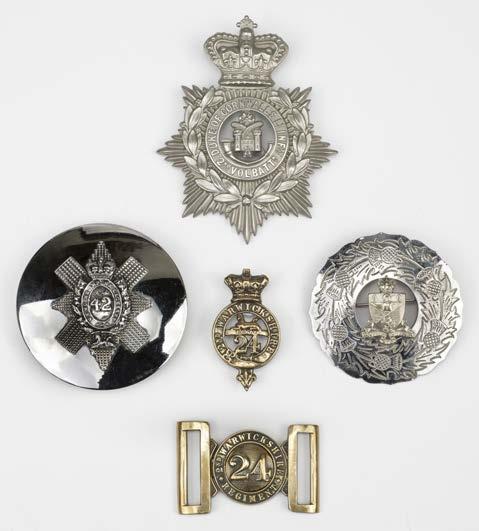
82* Military Cap Badges. A mixed collection of badges and belt buckles, including a Victorian 2nd Warwickshire 24th Foot brass pouch badge and conforming brass belt buckle, a Queen’s Crown 2nd Volunteer Battalion, Duke of Cornwall’s Light Infantry white metal helmet plate, 42nd (Black Watch) Foot silver plated pipers plaid badge, 9.5 cm diameter, another for St Andrews University O.T.C., 9 cm diameter plus a mixed collection of cap badges mostly British line regiments including Northamptonshire and East Surrey regiments etc (a small box)
£200 - £300
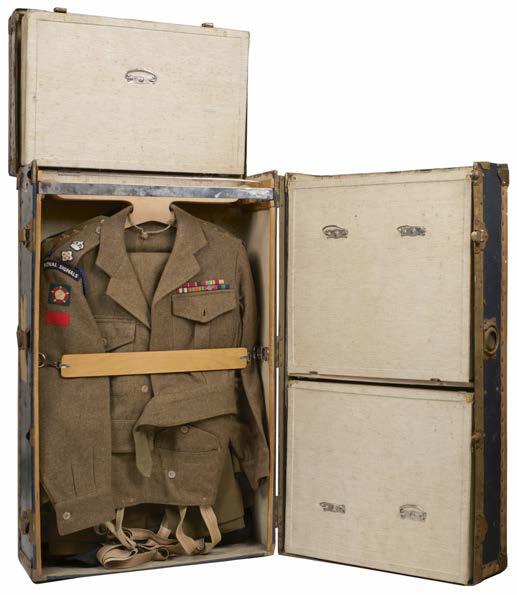
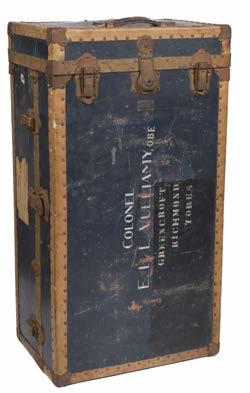
83* Military Chest. A regimental chest, circa 1950s belonging to Colonel E.L.L. Vulliamy, O.B.E., Royal Signals, containing 1949
Pattern Battledress Blouse, size No.8, with medal ribbon bar and cloth badges, the lining with a printed label, together with trousers, a battle dress tunic with E.II.R staybrite buttons and medal ribbon bar, with trousers, tropical dress jacket and two civilian jackets, plus three fitted boxes containing, socks, collars, shirts and undergarments, all contained in an ingenious travelling chest manufactured by “BAL” Built Baggage, chest size 105 cm high x 55 cm wide x 37 cm deep
O.B.E. London Gazette: 24 August 1944
‘Italian Theatre of War’
Edmund Lewis Llewelyn Vulliumy, O.B.E., M.I.D, Royal Signals, was commissioned 2nd Lieutenant in 1926, he advanced to Major in 1943, Lieutenant Colonel in 1951, and Colonel 1957, Vulliumy was placed on the reserve of officers list in 1964 .
(1)
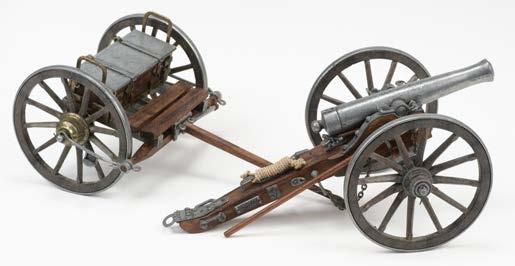
£200 - £300
84* Model Cannon. An American Civil War ‘Dahlgren’ field gun, late 20th century, the 18 cm barrel mounted on a wooden carriage labelled ‘Dahlgren 1861’ with two large 12 spoke wheels, with 2 wheel limber and ramrod, overall length approximately 75 cm Dahlgren guns were muzzle-loading naval guns designed by the American Navy Rear Admiral John. A. Dahlgren (1809-1870). They were mostly used during the American Civil War. (1)
£100 - £150
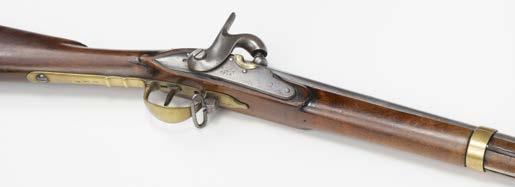
85* Musket. A Russian 13-Bore Period ‘Tula Arsenal’ percussion musket dated 1838, the 105 cm circular steel barrel numbered 15023 with inspection stamps, percussion hammer, side lock with Tula Arsenal mark, fully walnut stocked with brass furniture and ramrod, overall length 145 cm, a nice clean example in full working order (1)
£400 - £600
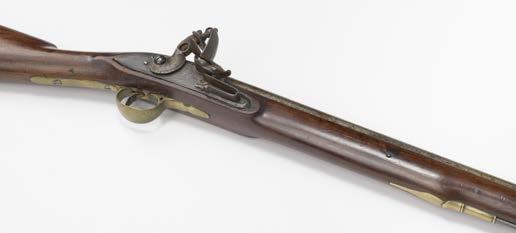
86* Musket. An India Pattern flintlock musket, the 99 cm steel barrel with fully stocked with lock engraved ‘Tower’ and crowned G.R., brass furniture and sling straps, with ramrod, overall length 138 cm, a good example with fully working action (1)
£600 - £800

87* Officer’s Pouch. A post WWII officer’s pouch of the Pakistan Army Armoured Corps, with white metal badge featuring an armoured fist with crossed lancers and Urdu motto beneath, within a brass wreath on a white metal base with foliate engraved border, with red leather pouch with silvered bullion decoration and lined with metal and with brass belt loops, 18.5 cm long
In 1947 Pakistan gained independence from India and the Pakistan Armoured Corps was established. It’s motto is ‘Death Before Disgrace, War Cry’.
(1)

£100 - £150
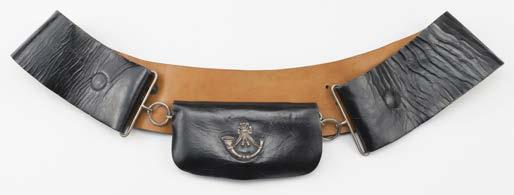

88* Officer’s Pouch. A Rifle Corps officer’s black leather pouch and belt circa 1900, the pouch applied with a silver strung bugle, fully hallmarked but not clear (probably Jennens & Co), the 8 cm wide black and tan leather belt with a white metal lion head boss with a chain and whistle (1)
£100 - £150

89* Officer’s Pouch. A Victorian officer’s pouch, with crowned interlaced VR cypher on a white metal base with foliate engraved border, black leather pouch with metal lining and belt loops, some wear to the leather, 18 cm long (1)
£200 - £300
90* Officer’s Pouch. An Edward VII officer’s silver mounted pouch of the 9th Lancers, the curved silver by Joseph Jennens & Co, Birmingham 1908, applied with a crowned badge of the 9th lancers, showing crossed lancers with a three-part banner below inscribed ‘Hodson’s Horse’ the brass badge mounted an engraved border, the front detached from the brown leather pouch which is missing its flap, with hallmarked silver belt loops, 18.5 cm long (1)
£100 - £150
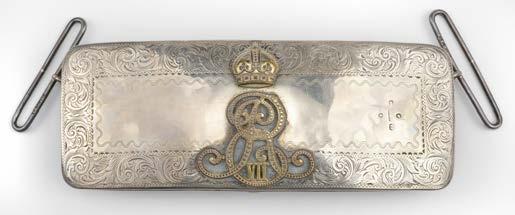
91* Officer’s Pouch. An Edward VII period officer’s silver mounted pouch, the curved silver hallmarked Birmingham 1875 with a young head Victorian mark and the makers mark worn, applied with a crowned E.VII.R. cypher on an engraved border, the black leather pouch with silver mounts and belt loops, 18 cm long (1)
£200 - £300

92* Officer’s Pouch. A Victorian Crimean War period officer’s pouch of the British German Legion, Light Cavalry, black leather with brass crowned VR cypher with an ornate three-part scroll beneath inscribed ‘Light Cavalry British German Legion’, brass edges, the black leather pouch with silver wirework decoration and red metal lining, brass belt loops affixed by acanthus mounts, 16.5 cm long
The British German Legion was a group of German soldiers recruited by the British to fight in the Crimean War of 1854-56. (1)
£300 - £500
93* Order of the Garter. A Queen Elizabeth II ceremonial banner, featuring an embroidered badge of the Order of the Garter showing George slaying a dragon with the motto Honi Soit Mal Y Pense, within a green laurel wreath applied with red coral and a number ‘I’ beneath, the burgundy velvet cloth banner with yellow edges and tasselled fringe, 150 x 150 cm, together with a Boer War period brass bugle by Boosey & Co, dated 1901, in poor condition but with a mouthpiece
(2)
£200 - £300

94* Pith Helmet. A WWII pith helmet belonging to Lieutenant R.D. de Sola, Royal Naval Volunteer Reserve, the hat by Lock & Co, London, in a black metal tin with plaque for Gieves and inscribed ‘R.D. de Sola. R.N.V.R., the hat in good condition with a few minor stains, with various research
Raphael David de Sola (1902-1989) was born in Canada, he became a multimillionaire stockbroker in London after his sister married the ship owner Sir John Ellerman, they worked together and gave away millions to good causes. In 1940 he gave £1,000,000 to help the victims of an earthquake in Turkey. He volunteered to help with the evacuation from Dunkirk and went with a party using towed lifeboats to take men to the ships. In June 1940 he was commissioned Sub-Lieutenant, R.N.V.R. and Lieutenant in September. He was posted to shore bases at Wildfire (Sheerness), May 1943 to Cormorant (Gibraltar), Hannibal (Taranto, Italy) November 1944, Acting Jewish-Chaplain in Algiers and finally Caroline (Belfast) May 1945, he relinquished commission April 1946.
(1)
£150 - £200

95* Pouch and Belt. A Victorian Royal Artillery Officer’s pouch and belt, the pouch with black melton cloth, silver braid edge, a bullion embroidered Royal Artillery crest with a white metal cannon, the motto ‘Quo Fas Et Gloria Ducunt’ on a red three-part banner, the silver braid belt with ornate mounts including a flaming grenade, some moth damage to the pouch otherwise a good example of an early officer’s pouch
(1)
£200 - £300
96* Powder Flasks. A collection of powder flasks, including a Victorian horn and brass example, of bag shape form with copper pivotal nozzle stamped ‘1000’, with green cord carrying straps, 25 cm long, together with four copper and brass flasks, unmarked and condition variable plus a leather and brass shot flask and gun capping tool
(8)
£100 - £150
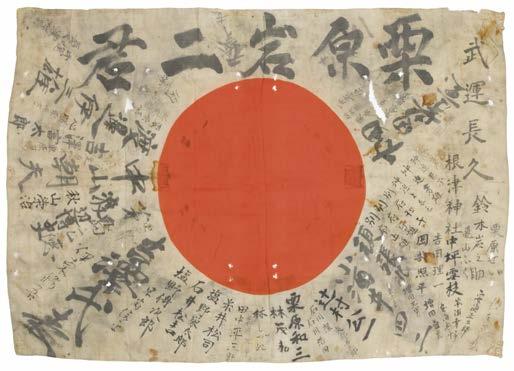
97* Prayer Flag. A WWII Japanese Airman's Prayer Flag, multiple signatures and good wishes including the Tokyo shrine and Nezo one of the oldest Shinto shrines in Japan, 96 x 68 cm, displayed in a modern frame
(1)
£200 - £300

£100 - £150
98* Queen’s Regiment. Uniforms and accoutrements belonging to an officer of the Queen’s Regiment, comprising battle dress tunic and trousers anodised E.II.R. buttons, tailors label with owner’s name Captain G.C. Brown dated 1972, tropical tunic and trousers, the tunic with staybrite buttons and collar badges, 70 cm long, inner arm length 41 cm, a black parade tunic and side cap, mess jacket, trousers and waistcoat, three berets, a bag of buttons, spurs and other related items (a carton)
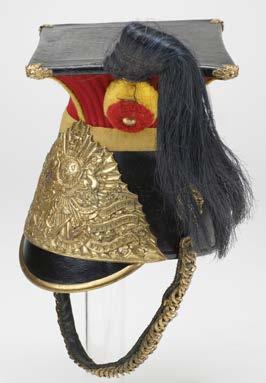
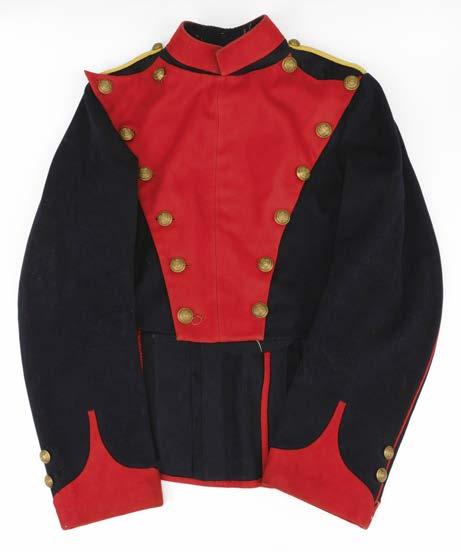
99* Royal Irish Lancers. An Edwardian Trooper’s lance cap of the Fifth Royal Irish Lancers, the leather body with peak and crown with gilt metal fleur mounts, the upper section of scarlet cloth and yellow cloth, with brass helmet plate (this probably a copy) brass chin scales with lion head bosses, black plume, cloth lining, the underside of the peak with an original adhesive label and stamped ‘7466’ and ‘9 02’, together with an Edwardian full dress tunic of the Fifth Irish Lancers, blue cloth with scarlet facings and plastron, with scarlet piping, yellow cord loops and brass buttons by J Dowler, 40 cm chest, inner arm 52 cm (2) £300 - £500


100* Royal Navy. An Admiralty Pattern Rangefinder by Barr & Stroud, circa 1920s, Type F.T.37, in original mahogany stowage case with makers label stamped 10.080 and B.A.73.901, with accessories, box measures 18 cm high x 117 cm long x 26 cm deep (1)
£300 - £500
101* Royal Ulster Constabulary. A Queen Elizabeth II Northern Ireland R.U.C. female’s uniform, comprising, green cloth and black peaked cap, anodised black harp badge surmounted by a Queen’s crown, blue cloth lining with printed label ‘6 7/8 55’, with green cloth tunic (bust size 38), with medal ribbon and R.U.C. buttons, inner arm length 42 cm, a green cloth skirt, black tie, wooden truncheon and two black leather belts (1)

£70 - £100
102* Schutzstaffe. A WWII German SS dagger by Richard Abraham Herder, Solingen, the 22 cm double edge blade etched ‘Meine Ehre heißt Treue (my honour is loyalty), the opposite side with erased inscription (probably an Ernst Röhm dedication) nickel crossguard stamped with inspection number ‘1’, black ebonised grip inset with eagle and SS emblems, overall length 34.5cm, in steel scabbard with nickel mounts (1)
£500 - £800

103* Special Air Service. Various accoutrements including stable belts and buckles (4), the chrome buckle featuring the SAS crest and the motto ’Who Dares Wins’ the reverse stamped ‘Reuter Mfg Salisbury’, together with 10 SAS buckles but these lacking a belt or makers stamp, a similar Parachute Regiment buckle, Rhodesian camouflage shirt, Rhodesian Army brass belt buckles (6), each with crest and the motto Sit Nomine Digna (May she be worthy of the name) plus a chrome example, all in sealed packaging, Parachute Regiment maroon felt beret, SAS brown felt berets (3) including one with tailors label for ‘S.A. Beret Manfrs (Pty.) Ltd, a kukri knife, the 29 cm curved steel blade with foliate engraving, the grip bound in cord, overall length 40.5 cm, in black leather scabbard with two additional knives and other items (a carton) £300 - £500

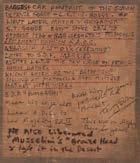
104* Sudan Defence Force. A collection of mementoes belonging to “Brigadier” S.T. Goode, Sudan Defence Force, comprising car pennant, the central white cloth strip embroidered with S.D.F. within a wreath, on a black cotton ground, a white metal S.D.F. camel badge, a L.R.D.G. scorpion badge (this believed to be a later example) plus a crown badge, presented in a period wooden frame, glazed, frame size 35 x 41 cm, information inscribed to verso The inscription reads ‘Badges and car pendant [sic] of the Sudan Defence Force + L.R.D.G. badge of Lieut later Major & “Brigadier” S.T. Goode Egypt since 28/6/28, address 1936=8SH Sesostris Heliopolis Armament Branch R.A.O.C. Abbassia Asst ... (executive) later to S.D.F. married. Assisted L.R.D.G. one day while on petrol [sic] hence badges. Known later as the “Brigadier” selling at Portobello Road Antique Market with wife” various other notes written including “he also liberated “Mussolini’s” bronze head & left it in the desert”, “Knew him for years Portobello Rd Market, this was on display there for years”.’ (1) £100 - £150
105* The Welsh Regiment. A fine Victorian officer’s helmet plate circa 1891, in silver on a black-velvet ground, the Prince of Wales’s plume with scroll below inscribed ‘Gwell angau na Chwilydd’, on the universal scroll ‘The Welsh Regiment, three lugs and vertical pin to the rear, 12 x 10.5 cm (1)
£100 - £150

106* Third Reich. Luftwaffe peaked cap badge, brass with lacking one lug, 65 mm long, together with various related items including two wound badges, one finished in black the other brass, German Entry into Austria 13 March 1938 silver commemorative medal, 33 mm diameter, NSDAP party enamel badge and other items (11)
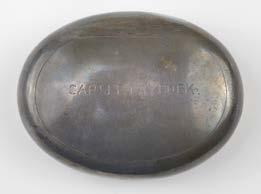
£100 - £150
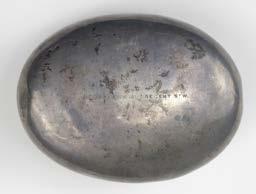
107* Tobacco Box. A silver squeeze tobacco box by Cornelius Desormeaux Saunders and James Francis Hollings (Frank) Shepherd, Birmingham 1899, of plain oval form, the lid engraved ‘Capt J.F. Laycock’, the base engraved with retailers mark for ‘J.C. Vickery 181-3 Regent St W’, 8.5 cm wide, 64.5g
M.I.D. London Gazette: 4 May 1900
D.S.O. London Gazette: 27 September 1901, Captain, Nottinghamshire Yeomanry Cavalry
‘In recognition of services during the operations in South Africa’ Captain Sir Joseph Frederick Laycock, D.S.O. (1867-1952), was born at Wiseton Hall, Nottinghamshire and was the son of R. Laycock M.P. He served during the Second Boer War as A.D.C. to the G.O.C., Cavalry Division and was present at Natal in 1899, including actions at Elandslaagte, Rietfontein and Lobard’s Kop. He took part in the advance on Kimberley, including the action at Magersfontein, and in the Relief of Kimberley; also in operations in the Orange Free State in 1900, including Paardeberg in February; actions at Poplar Grove, Driefontein, Houtnek (Thoba Mountain), Vet River and Zand River, various action in the Transvaal including Diamond Hill, he is entitled to a Queen’s South Africa medal with 6 clasps.
Laycock served during WWI with the Nottinghamshire Horse Artillery, Territorial Force and was mentioned in despatches, he was given the Brevet of Lieutenant-Colonel, created C.M.G. in 1917 and K.C.M.G. in 1919. He retired from service as Honourary Captain in His Majesty’s Army.
Laycock was also an Olympic sailor and both he and Hugh Grosvenor, 2nd Duke of Westminster competed together in the 1908 Olympics at Water Motorsport. Laycock was also a member of the Royal Yacht Squadron in Cowes. He commissioned a steel auxiliary 3-masted steam yacht, the Valhalla which was built by Ramage & Ferguson of Leith and completed in 1892. The Valhalla was the only steam yacht in the world to have a full ship rig and was crewed by 100 deckhands.
(1) £70 - £100
108* Tribal Art. An African knobkerrie, the hardwood club with spherical head and long shaft, 81 cm long, together with a Malayan kris, the 32 cm wavy steel blade with carved garuda hilt, overall length 39cm, in its wooden scabbard (2)

£100 - £150
109* Tribal Art. An Australian Aboriginal throwing club, elongated hardwood with a Christie’s label (12 December 1989, lot 63), overall length 72.5 cm long, together with two boomerangs, one made of eucalyptus wood 83.5 cm, the other, hardwood and painted in the traditional style. 73.5 cm long (3)
£100 - £150
110* Victorian Officer’s Uniform, of the 1st Volunteer Battalion Royal Welsh Fusiliers, the scarlet tunic with black facings and bullion epaulettes, collar and cuffs, regimental silver buttons by W Jones & Co, 78 cm long x 36 cm chest, with trousers, a good example to a high ranking officer with minimal wear (1)
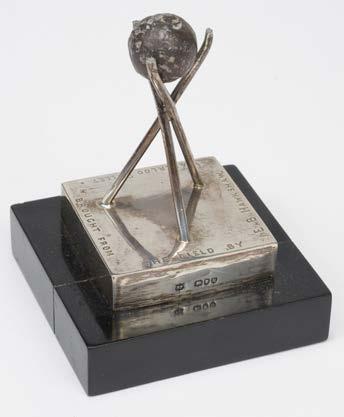
£100 - £150
111* Waterloo Relic. The Waterloo bullet, presented on a silver stand hallmarked by Rupert Favell, London 1891, the base engraved ‘Waterloo Bullet Brought From The Field By E.B. Hawkshaw’, on an ebony plinth, overall height 11 cm (1)
£200 - £300

112* Waterloo Relic. Two Waterloo relic cannonballs, presented on a wooden base with a brass plaque engraved ‘Brought from the Field of Waterloo, 4LB Galloper Artillery 12.3.92’, the base 23 cm long (small carton)
£200 - £300
113* Welsh Guards. A novelty table lighter in the form of a corded regimental drum circa 1960s, painted in the traditional fashion with the badge of the Welsh Guards, stamped Potter & Co Aldershot, the chrome petrol lighter by Rolstar, 9 cm high x 7.5 cm diameter (1)
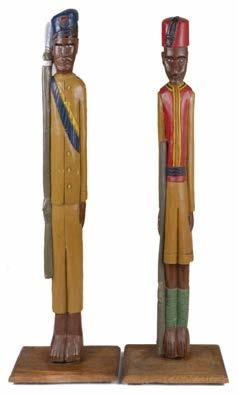
£100 - £150
114* Wooden Soldiers. A pair of African carved wood soldiers, early 20th century, comprising the Royal West African Frontier Force (RWAFF), together with another of the the Royal Niger Coy. Constabulary, each approximately 117 cm high
The Military Force of the Royal Niger Co were given the Royal Charter to govern and manage the trade and occupation of Northern Nigeria and evolved into what we now know as Unilever.
(2)
£100 - £150
115* WWI Tank. A large scratch-built model of a WWI British tank D7 742, wooden construction with composite cannon, side gunnacelles painted in camouflage and painted wood slatted tracks, a very realistic representation, 50 cm long (1)
£150 - £200
116* Bayonet. A French Chassepot bayonet with matching serial numbers, the 57.5 cm yataghan steel blade with inspectors stamps, the top edge typically etched and dated 1874, hooked steel quillon stamped L7839, brass grip, overall length 70 cm, in its steel scabbard numbered L7839, a nice clean example of its type (1)
£50 - £80
117* Bayonets. A British 1853 Pattern socket bayonet by Deakin, the 43.5 cm triangular steel blade stamped Deakin and with inspection stamps, additionally marked ‘G 72 49’, overall length 53.5 cm, together with a British 1907 Pattern bayonet by Sanderson, the 43 cm steel blade stamped Sanderson and with inspection stamps and crowned G.R., wooden grips, overall length 55 cm, in its leather scabbard, plus a reproduction socket bayonet (3)
£80 - £120
118* Bayonets. Two WWI French Gras bayonets, each with 52 cm blade, together with four WWI French Chassepot bayonets, each with approximately 57 cm yataghan blade, all rusted and lacking scabbards, presented on two wooden shields for display (5)
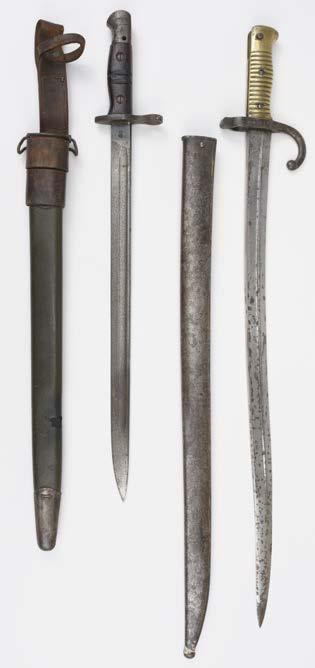
£100 - £200
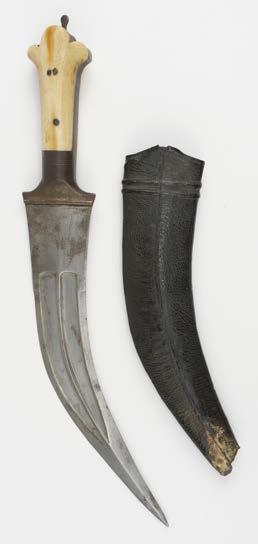
120* Dagger. An Indo-Persian dagger, early 19th century, the 24 cm curved steel blade with double fuller, bone handle with steel rivets, overall length 36 cm, in its black leather scabbard applied with an old manuscript label, the tip of the scabbard missing (1)
£200 - £300

119* Bayonets. A WWI American P1917 Winchester bayonet, the 43 cm steel blade stamped with the Winchester trademark and dated 1917, the opposite side stamped U.S. with flaming grenade and inspection stamps, wooden grips, overall length 55 cm, in its green leather scabbard stamped ‘H.E. Jewell 1918’ with leather frog, together with a WWI French Chassepot bayonet, the 57 cm yataghan steel blade (lacking the traditional engraving on the top edge), with hooked steel quillon numbered 52129, with brass grip, overall length 69 cm, in its steel scabbard, general pitting to both (2)
£100 - £150
121* Fighting Knife. A WWII 3rd Pattern Fighting Knife by John Nowill, the 17.5 cm blackened steel blade with oval steel crossguard, coppered grip with cross key makers mark and hexagonal top nut, overall length 29.5 cm, in its brown leather and brass scabbard, together with a Canadian Model 1910 Ross Rifles bayonet, the 25.5 cm steel blade with wooden grips and steel terminal stamped ‘Ross Rifle Co Quebec Patent 1907, overall length 37 cm long, in its brown leather scabbard with frog plus a Diana MOD 16 air rifle and a Diana G25 .22 air rifle with scope (4)
£150 - £200


124* Jambiya. A Middle-Eastern jambiya, the 22 cm curved steel blade with ornate metal and horn grip inset with two coins, overall length 31.5 cm, in its brown leather scabbard with accompanying belt (1)
£100 - £150
122* Fighting Knife. A WWII Wilkinson Sword 2nd Pattern Commando Knife, the 17.5 cm blade with trade mark at the forte, the opposite side marked ‘Made in England’, oval steel crossguard, chequered brass grip and top nut, overall length 30 cm, in its brown leather scabbard with brass chape (1)
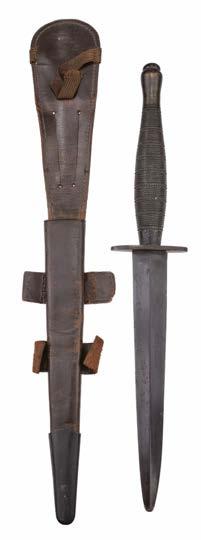
£300 - £400
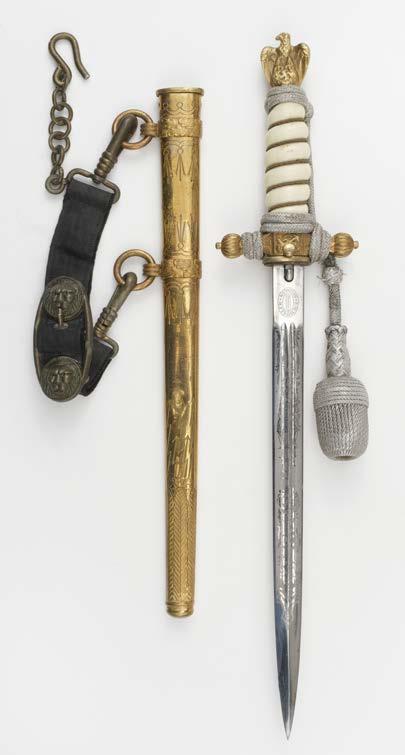
123* Fighting Knife. A WWII Fairbairn-Sykes ‘Beaded and Ribbed’ pattern fighting knife, 16.5 cm blued steel blade (tip rounded), with blued steel straight guard, brass grip with nine beaded bands and war department arrow, overall length 29 cm, with brown leather scabbard with blued steel mount (1)
£200 - £300
125* Kriegsmarine. A WWII German Second Model Naval Dirk by F.W. Holler, Solingen, the 25 cm steel blade etched with ship and scrolls, the opposite side with an anchor, brass crossguard and eagle pommel, cream celluloid wirebound grip bound, overall length 38.5 cm, in its brass scabbard with belt strap and bullion sword knot (1)
£200 - £300

126* Luftwaffe. A WWII First Model Luftwaffe Officer’s Dagger, the 31 cm blade by Siegfried Solingen, aluminium fittings and wirebound leather grip, overall length 45 cm, its black leather covered scabbard with steel mounts and OLC chain, a good example (1) £400 - £600

127* Naval Dirk. A George V Royal Naval officer’s dirk, post 1902 type, the 45.5 cm blade etched Gieve’s Portsmouth London & Devonport, with owners initials ‘G.F.D.F. 1915’, crowned fouled anchor and George V cypher amongst scrolls, gilded crossguard with acorn terminals and central crowned fouled anchor emblem, wirebound fishskin grip, lions head back and pommel with ring and sword knot, overall length 59.5 cm, in its black leather scabbard with gilt metal mounts engraved ‘G.F.D.F. 1915’, a particularly good example in fine condition (1)
£300 - £500
128* Parade Bayonet. A WWII German Parade Bayonet, the 25 cm plated blade stamped ‘S.T.A.L. 48.’, with black composite grip, overall length 37.5 cm, in its black steel scabbard, together with a mixed collection of militaria including a WWII canvas map case and various charts, the inner flap inscribed ‘D.B. Girling R.A.’, two copper bugles each applied with Argyll & Sutherland Highlanders badge, WWII leather cordite bucket stamped ‘No 57 III B.H & G Ltd II-1939’, with carrying handle, 28.5 cm high, three Russian steel helmets (post WWII) and other items (4 cartons)
£200 - £300
129* The George III shamshir presented to Major-General Sir Hugh Robert Rollo Gillespie K.C.B. from his serving officers as a token of esteem for the suppressing of mutineers at Vellore on 10 July 1806. Gillespie was once described by military historian Sir Fortescue as "the bravest man to ever wear a red coat" the 77 cm curved steel blade left plain (an indication this was a fighting sword), the grip probably rhino horn with three silver studs, the cruciform crossguard with lions paw terminals, this and the scabbard of white metal and almost certainly silver and silver gilt, one side contemporarily engraved in running script ' from the serving officers to Col Gillespie', the other 'Vellore 10th July 1806', with a repeating crescent and foliate scroll engraved decoration throughout, overall length 90 cm, the upper section of the scabbard would benefit from some restoration as currently detached and the tip missing
Provenance: Vice-Admiral Sir Cecil Charles Hughes-Hallett, K.C.B., C.B.E., Royal Navy (18981985), thence by family descent.
Please note, a CITES license is required for exporting outside of the U.K. and the buyer must obtain one if necessary.
Hugh Robert Rollo Gillespie (1766-1814) was born in Comber, County Down, Ireland. He was educated in England and in 1783 was commissioned into the 3rd Irish Horse (6th Dragoon Guards). Gillespie was known for being physically strong and a hot-headed character and on one occasion he found himself involved in a pistol duel whilst serving in Ireland. The duel resulted in the opposition, a youth named Barrington being killed and Gillespie fled to Scotland. He eventually gave himself up and was tried for murder in 1788, however, he was acquitted after a verdict of justifiable homicide was reached.
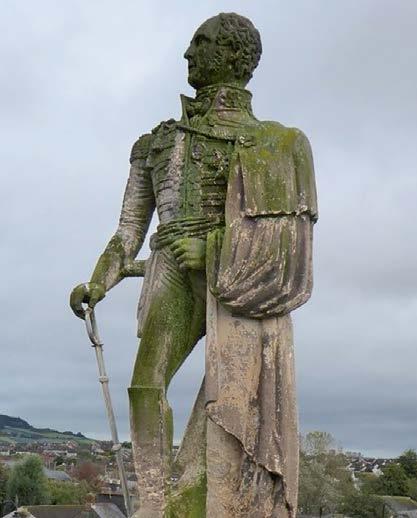
He transferred to the 20th Light Dragoons in 1792 and embarked with the regiment to the West Indies. Unfortunately, the ship never reached the West Indies and was wrecked off the coast of Madeira. Gillespie somehow made his way to shore but was struck down with yellow fever. He recovered and on reuniting with his regiment, he volunteered to take part in an expedition to St Domingo with the regiment remaining in Jamaica. Once settled in St Domingo he was appointed adjutant-general. One night he was woken by eight men breaking into his house. Gillespie armed with his sword confronted them and killed six with the other two fleeing for their lives.
Gillespie distinguished himself in St Domingo and was promoted to Captain and given command of the regiment. He advanced to Lieutenant-Colonel in 1799. In 1802 the 20th Light Dragoons were ordered back to England and Gillespie was granted 100 guineas by the Jamaican House of Assembly in recognition for his service to the island. He used this money to buy himself a special presentation sword. He was, however, arrested and accused of drawing pay for dead men (a common practice in those days). His defence was that he used the money for the good of the regiment and not to line his own pockets, he was acquitted in 1804.
Following on from his trial he went to India and commanded the 19th Light Dragoons (stationed at Arcot near Vellore). A few days after taking up this new post, Gillespie was warned of the Vellore Mutiny (10 July 1806). Gillespie and twenty men equipped with galloper guns set out ahead of the main relief force. Gillespie being the daring man that he was charged ahead of his men and arrived at Vellore within two hours of the alarm being raised. He found surviving troops from the 69th (South Lincolnshire) Foot being hacked and killed by hundreds of mutineers and about sixty men were holding the ramparts but had run out of ammunition. Gillespie, unable to gain entry through the main gate requested that his sergeant lower his belt so that he could climb up the wall onto the battlements. Once reaching the battlements, Gillespie led the 69th in a ferocious bayonet charge along the ramparts. When the 19th Light Dragoons arrived, Gillespie ordered them to blow the gates and they then made a second charge along with the 69th. This cleared the space for the gate to allow the cavalry to deploy. The 19th and Madras Cavalry then charged through the gates and slaughtered the mutineers. About 100 mutineers were captured and subsequently executed. Gillespie arrested the sons of Tipu Sultan (who were suspected of masterminding the mutiny) they were sent under guard to Madras. In 1811 Gillespie commanded the men who took part in the invasion of Java and on his return to India there was an incident when a tiger had escaped and was roaming around the Bangalore racecourse, Gillepsie not being one to hold back, killed the tiger with a spear.
In October 1814 he led a column to attack Kalanga in the Nepal War against the Gurkhas. Here the story of Gillespie comes to a close as during the battle of Nalpani on 31 October 1814 Gillespie tried to force his way into the fort at the head of a party of 8th Light Dragoons. It failed and he renewed the attack with companies of the 53rd (Shropshire) Foot. Thirty yards from the fort Gillespie was reported to have shouted "One shot more for the honour of Down" and he charged with his men. He was hit by a Nepalese sniper who shot him straight through the heart and he died on the spot.
Major-General Sir Hugh Robert Rollo Gillespie is commemorated with a statue in his hometown of Comber, County Down. The statue stands on a 55ft high column. It was unveiled in 1845 to commemorate "the strongest man in Comber". There is also an impressive marble statue on display at St Paul's Cathedral in London.
(1)
£3,000 - £5,000
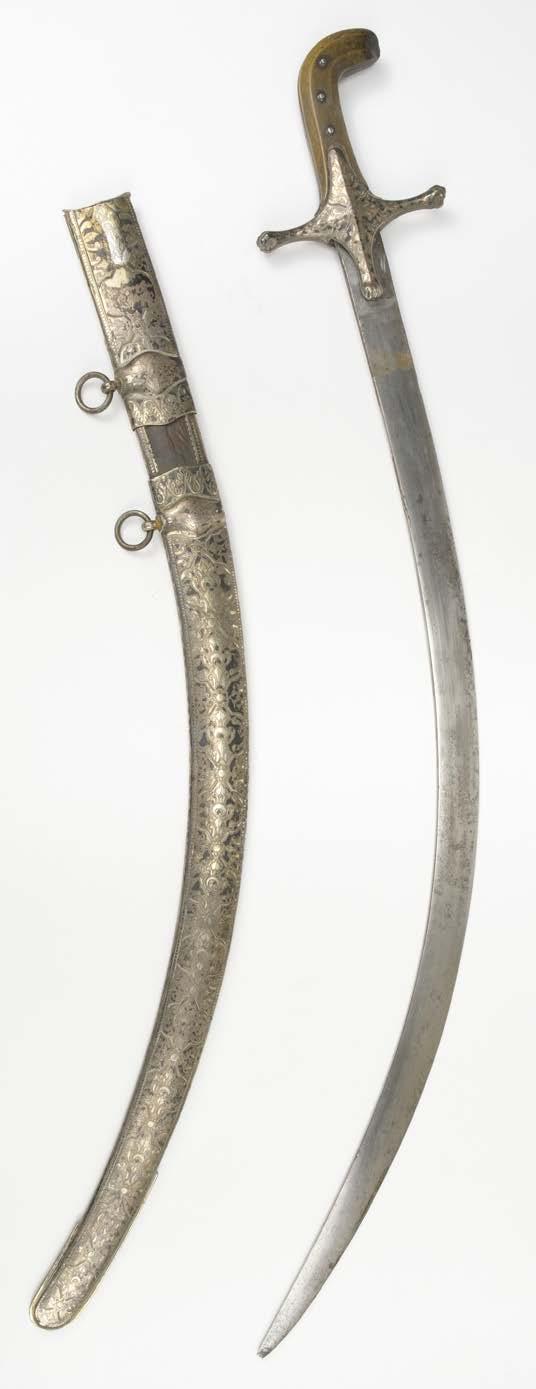
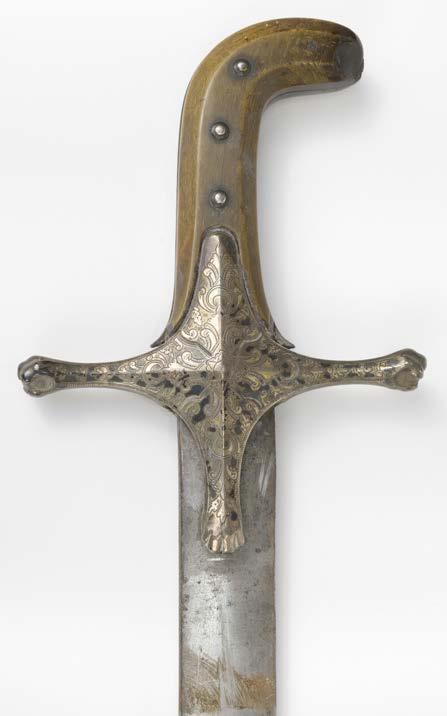
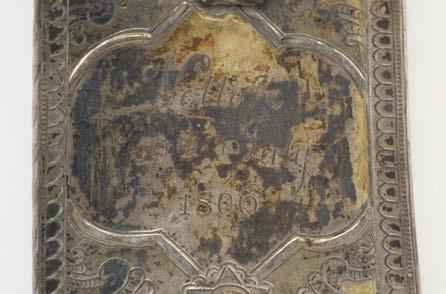
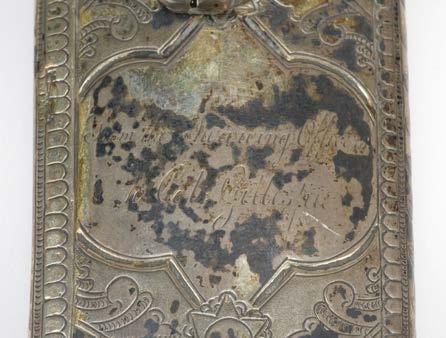
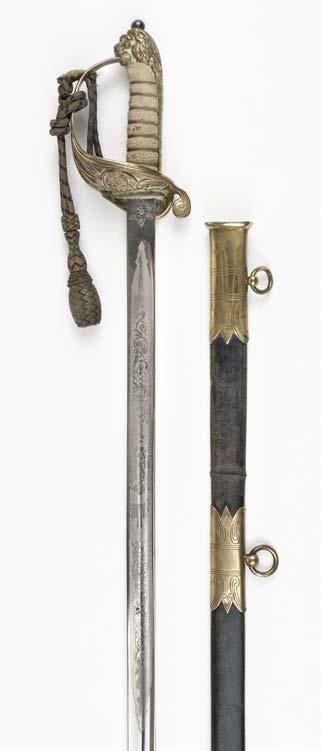
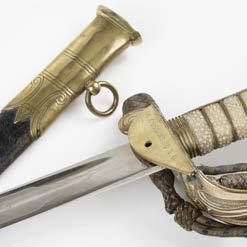
130* Royal Navy. A British Naval Officer’s dress sword retailed by Gieves, numbered 3347, the 81 cm straight steel blade etched with royal coat of arms and fouled anchor, with solid brass gothic hilt and folding guard engraved ‘G. Cussins. D.S.C.’, wire-bound fishskin grip, lion head pommel with bullion sword knot, overall length 96.5 cm, in its black leather scabbard with brass mounts and allweather sword bag
D.S.C. London Gazette: 27 December 1940
‘For courage and continuous good services in the Channel Mobile Balloon Barrage.’
George Cussins joined the Royal Naval Reserve at the age of 16. He was appointed Midshipman in 1938, and served in various ships throughout WWII and submarines from 1943-45, including his first ship HMS City of Lyons in which he sailed round the world three times and took part in the rescue of nine people from the Portuguese schooner Donna Amelia in July 1937. The crew had been adrift in the South Atlantic for many days, for this the Portuguese Consul in Liverpool made a presentation and publically thanked the ship’s captain. He was in command of HMS Inglis from 194546, HMS Birch from 1946-47, and the minesweeper HMS Byms in 1947. Cussins was in charge of seamanship training of Upper Yardman at the Royal Naval College, Dartmouth from 1951-53, followed by extensive service commanding ships, until retirement in 1965.
(1)

£200 - £300
131* Sword. A British 1908 Pattern Cavalry Troopers Sword, the 89 cm straight steel blade by Mole with inspection marks, the top edge stamped ‘P’08’, steel bowl guard stamped Mole, chequered composite grip, overall length 110.5 cm, in its steel scabbard (1)

£200 - £300
132* Sword. A Coldstream Guards Officer’s sword retailed by Edward Smith, Boyle Street, Saville Row, serial number 14457, the 83.5 cm steel blade etched with owner’s initials ‘E.F.R.’ and battle honours, with G.V.R. cypher to one side and the Colstream Guards badge to the other, pierced plated guard with guards crest, wirebound fishskin grip, chequered back and domed pommel, overall length 100 cm, in its plated scabbard, in refurbished condition, with copied research
Eustace Frederick Robb was born 1889 in Kensington, London, son of Major-General Sir Frederick Robb. Commissioned 2nd Lieutenant Coldstream Guards 21 August 1918. Lieutenant February 1920. Retired May 1922 on account of ill health. Worked for the BBC and produced the first experimental TV broadcasts from Broadcasting House in 1932. He eventually became Director of Television. He inherited the estate of Great Tew Park in Oxfordshire. Commissioned Lieutenant Coldstream Guards January 1940 and “spent the war receiving and distributing messages that were decoded at Bletchley Park.” He spent the post-war years running the estate and died there 21 August 1985.
(1)
£500 - £600



133* Sword. A rare George III 1796 ‘Cornucopia’ Pattern blued and gilded Officer’s sword by Reeves & Greaves, the 80.5 cm curved steel blade with military trophies and foliate scroll decoration, engraved ‘Reeves & Greaves’, the blade very strong in blue and gilding, the gilt metal with acanthus langets, cornucopia and an abundance of flowers, wirebound fishskin grip and acanthus moulded pommel, overall length 93 cm long, in its black leather scabbard with brass mounts, the scabbard may have been restored at some stage in history, an elaborate sword no doubt carried by an officer with great character (1)
£1,500 - £2,000
134* Sword. A George III 1796 variant sword, the 75.5 cm curved steel blade finely etched with military trophies and foliate decoration, the opposite side with a crown amongst foliate decoration, gilt metal bowl guard and stirrup hilt, brass wirebound grip and plain rounded pommel, with original bullion sword knot, overall length 90 cm, lacking scabbard but beautifully balanced and a good fighting sword (1)
£800 - £1,200
135* Sword. A reproduction Scottish 1828 pattern regulation broadsword, the 82.5 cm steel blade etched G.V.R., amongst scrolls, steel basket hilt lined with red felt, faux wire bound fishskin grip and domed pommel, overall length 101 cm, in its brown leather scabbard (1)
£100 - £150
136* Sword. An Elizabeth I swept hilt rapier, circa 1560, the 93 cm straight tapered blade with a fuller that runs the entire length of the blade, a flattened ricasso with unidentified armourers mark leading to the rounded bar hilt, wirebound grip and octagonal iron pommel, overall length 112 cm, a very good example of an early sword (1)
£1,500 - £2,000
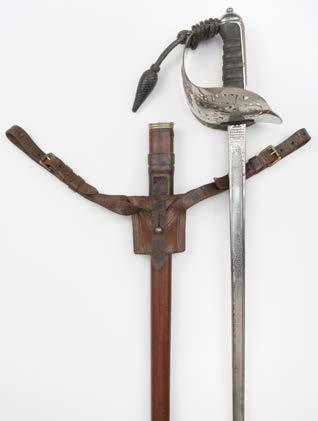
137* Sword. An 1897 pattern Officer’s sword by Henry Wilkinson, serial number 60867, the 83.5 cm dumbbell blade etched with Henry Wilkinson, Pall Mall London trade logo and owners initials ‘H.L.’, G.V.R. cypher and scrolls, plated guard, wirebound fishskin grip, chequered back and domed pommel, overall length 99 cm, in its sam browne scabbard with leather frog and sword knot
The Wilkinson register shows that the sword purchased in August 1927 by a “C.S.M. J. Knightley” (no regiment shown). Possible scenario is that a senior NCO was being commissioned and so his fellow-NCOs chipped-in to purchase him a sword? Further research required to identify “H.L.”commissioned from NCO, around 1927-28?. (1) £300 - £400

138* Sword. An American Civil War period cavalry troopers sword, the 91 cm curved steel blade with brass guard stamped ‘90’ and leather grip, lacking some wire, overall length 106 cm, in its steel scabbard (the scabbard pitted but the blade is a nice clean example) (1)

£100 - £150

139* Sword. An impressive Victorian Officer’s sword, the 82 cm slightly curved blade engraved crowned V.R. cypher and with 30 battle honours in a guilloche repeating border, one side dating from 24 September 1810 to 19 January 1811, including Busaco, Cuidad Rodrigo, the opposite side with battle honours from 6 April 1812 to 24 March 1813 including Badajoz, Madrid, Nivelle and Hyderabad, an angel family crest to either side and the makers mark faint, but probably Hamburger, Rogers & Co, with gilt metal gothic hilt with pierced V.R. cypher and folding guard, wirebound fishskin grip, acanthus backstrap and stepped domed pommel, the blade has been pitted and polished, overall length 97 cm with an associated brown leather scabbard
The sword remains unidentified however, the battle honours and family crest may be sufficent to identify the officer who carried it. An interesting sword and worthy of further research. (1)
£300 - £500
140* Sword. An Indian tulwar, fitted with a 75.5 cm British issue straight steel blade, the Indian grip with unusual finial, overall length 90.5 cm long, in a brown leather scabbard with a fitted steel mount (1)

£100 - £150
141* Sword. An Ottoman sword, early 19th century, the 82 cm curved steel blade of Hungarian manufacture and engraved with a soldier and eagle on both sides with illegible text, white metal crossguard and inlaid wooden grip (some loss), overall length 95.5 cm, in its black leather scabbard with white metal mounts, general wear throughout (1)
£400 - £600

142* Sword. A British 1796 Infantry Officer’s Sword, the 82 cm straight steel blade engraved ‘J.J. Runkel Solingen’ on the top edge and crowned G.R. cypher with military trophies, the opposite side with royal coat of arms, gilt metal double shell guard, wire bound grip, curved knucklebow and urn pommel, overall length 100 cm, lacking scabbard, general wear commensurate with age (1)
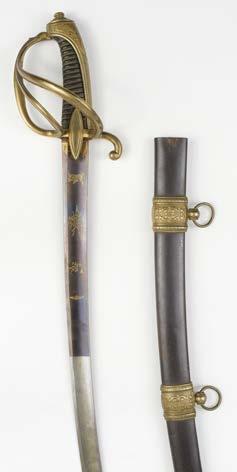

£100 - £150
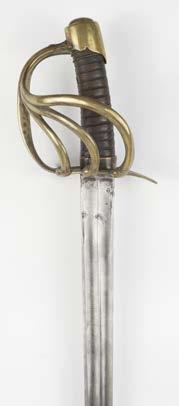
143* Sword. A French Cuirassier’s Sword, Napoleonic Period, the straight steel blade engraved and dated 1814 along the top edge, with inspection stamps, substantial brass guard stamped ‘303’ on the knuckle bow, leather grip and brass pommel, overall length 110 cm, lacking scabbard (1)
£200 - £300
144* Sword. An Imperial French Chasseur Cavalry Officer’s Sabre, Napoleonic Period, the 84.5 cm curved steel blade blued and gilded with military trophies, ornate gilt metal three brass hilt with oakleaves, wire-bound back leather grip, overall length 99 cm, in its steel scabbard with ornate mounts, minor wear commensurate with age (1)
£700 - £1,000
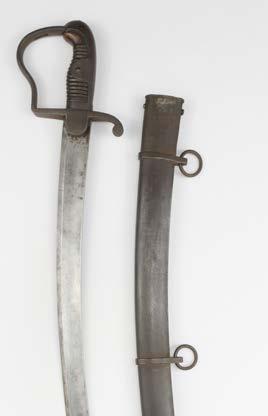
145* Sword. A Prussian Model 1811 Blücher Sabre, the 81.5 cm curved steel blade stamped ‘58’, the steel langets stamped ‘A.M.IV. 6’, stirrup hilt, wooden grip, overall length 95 cm, in its steel scabbard with the same markings plus ‘R.T.A.5.18.’, some pitting but generally in good condition
Often confused with the British 1796 Light Cavalry Sabre. The Blücher was a much more cumbersome weapon. (1)
£400 - £600
146* Sword. A Saxony Model 1867 Infantry Officer’s Sword, the 84 cm straight triple fullered steel blade etched with crowned A.R. cypher and ‘Gustav Emil Doring Leipzig’, the pierced brass guard with Royal Saxon Army coat of arms, brass knuckle bow and wire bound fishskin grip (old tape repair), overall length 98 cm, in its black metal scabbard (1)

£200 - £300
147* Wakizashi. A Japanese wakizashi, 19th century (or earlier), the 42 cm curved steel blade (unsigned), with copper habaki, iron tsuba inlaid with gold and copper flowers, copper menuki and mounts each with gold and copper foliate decoration, shagreen grip bound in black cord, overall length 58cm, in its wooden saya the base applied with a gold on steel cap decorate with a large dragonfly, with additional knife, some loss and general wear (1)
£300 - £500
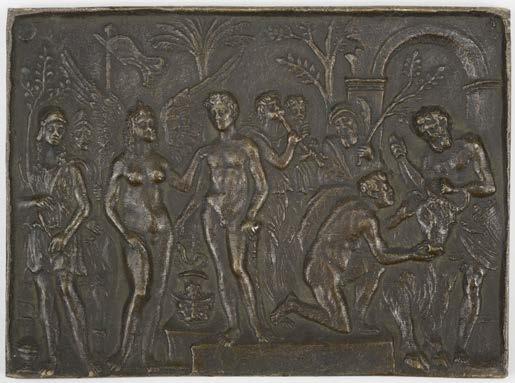
148* Briosco (Andrea, 1470-1532). Homage to the Hero, cast bronze plaquette, probably a later cast, 7.5 x 10.5 cm, 196g (1)
£200 - £300
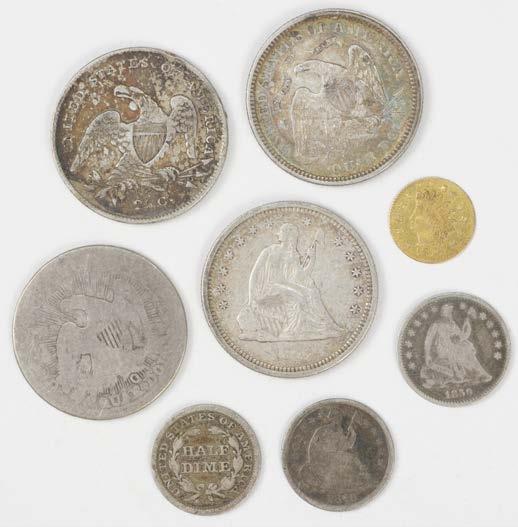
149* American Coins. A small collection of coins including, American 1/2 Dollar Cal, 1874, gold coin, together with Quarter Dollar, 1871, 1877, 25 Cents, 1831 and other American coins, variable condition (8)
£100 - £150
150* Coins. A collection of Victorian silver coins, including One Rupee, India 1875, 25 Cents, Canada 1872, plus miscellaneous world coins, mostly 19th century, variable condition, contained in a tin (a tin)
£100 - £150
151* Coins. A very mixed collection of British and World Coins, mostly 20th century including 1935 and 1951 Crowns, 2013 Gibraltar gold plated one crown, silver prize medal for Devon County School West Buckland, 40 mm diameter, 22g, in fitted case of issue, another silver prize medal for Christ's College Finchley Scott Memorial Prize, 50 mm diameter, 52g, in fitted case of issue, George III workhouse token, very worn etc (a carton)
£200 - £300

152* British Coins. A small collection of early British milled coins, including Queen Anne Shilling, 1711, Queen Anne Sixpence, 1711, George II Sixpence, 1745[?], George III Sixpence, 1787 and other coins, variable condition (1`1)
£100 - £150
153* Franco-British Exhibition, London 1908. A struck coal plaque for Levallois-Perret, Paris, the obverse with le carbone on scroll above legend, the reverse with arms and supporters, 58 x 58 mm, in very good condition and contained in original buff fitted and decorated case of issue, together with various commemorative medals and coins etc (1)
£100 - £150
154* Afghanistan 1878-80 Medal, no clasp (Bistie Heera 24th N.I.), suspension loose and very worn, together with two defective Crimea 1854-56 Medals, one engraved (Pte Geoe Symonds 14th Ft), the medal has been brooch mounted and replacement suspension and clasp, the other unnamed with the soldered suspension bent to form a loop
(3)
£100 - £150
155* An intriguing copy of the Indian Mutiny Victoria Cross awarded to sponge-man Gunner William Connolly of the Bengal Horse Artillery who, although severely wounded by several musket balls, causing him great faintness and partial unconsciousness, refused to retire from the battle and worked on tirelessly shouting to his commanding officer 'No sir, I'll not go there whilst I can work here', Connolly remained at his post before finally collapsing from loss of blood'
Victoria Cross. A Victorian tailor's copy, bronze, the reverse suspension engraved in sloping serif capitals 'Gunner William Conolly[sic], Bengal Horse Artillery', the reverse centre dated '7th July 1857', good very fine and of very good quality, as is the standard of engraving
V.C. London Gazette: 3 September 1858
The following account of Connolly's bravery is extracted from Carter's Medals of the British Army, pp. 176-77:Lieutenant Cookes, Bengal Horse Artillery, reported that 'About daybreak on that day (7 July 1857) I advanced my troop and engaged the enemy within easy musket range. The sponge-man of one of my guns having been shot during the advance, Gunner Connolly assumed the duties of second sponge-man, and he had barely assisted in two discharges of his gun, when a musketball through the left thigh felled him to the ground. Nothing daunted by pain and loss of blood, he was endeavouring to resume his post, when I ordered a movement in retirement, and, though severely wounded, he was mounted on his horse in the gun-team, and rode to the next position which the guns took up, and manfully declined going to the rear when the necessity of his doing so was represented to him.
About eleven o'clock a.m., when the guns were still in action, the same gunner, whilst sponging, was again knocked down by a musket-ball striking him on the hip, thereby causing "great faintness and partial unconsciousness", for the pain appeared excessive and the blood flowed fast. On seeing this I gave directions for his removal out of action; but this brave man, hearing me, staggered to his feet, and said, 'No sir, I'll not go there whilst I can work here; and shortly afterwards he again resumed his post as sponge-man. Later in the afternoon of the same day my three guns were engaged at one hundred yards from the walls of a village with the defenders, namely the 14th Native Infantry, mutineers amidst a storm of bullets which did great execution.
Gunner Connolly, though suffering severely from his two previous wounds, was wielding his sponge with an energy and courage which attracted the admiration of his comrades, and while cheerfully encouraging a wounded man to hasten in bringing up the ammunition, a musket-ball tore through the muscles of his right leg: but with the most undaunted bravery he struggled on; and not till he had loaded six times did this man give way, when through loss of blood, he fell in my arms, and I placed him on a wagon, which shortly afterwards bore him in a state of unconsciousness from the fight.'
Gunner William Connolly V.C. (1817-1891)
William Connolly (whose name is frequently misspelt by the census records and also by the military authorities) was born in Liverpool. He joined the Indian Army in 1837 and embarked from Exmouth on a heroic and long career which earned him the Gwalior Star, Sutlej Medal, Punjab Medal and Indian Mutiny Medal. He joined as a gunner in the Bengal Horse Artillery (1st Troop, 3rd Brigade) and his regimental number was 678.
After a period of 20 years, he re-enlisted at Peshawar on 2 May 1857 and held the same rank as a gunner. A few weeks later he was involved in one of the little-known battles of the Indian Mutiny, at Jhelum, in Rawalpindi, on 7 July, when he acted fearlessly while loading the guns. In spite of being wounded on three occasions by musket balls during the day, he continued as a "sponge-man" for the guns until he finally collapsed from loss of blood. His senior officer on that day, Lieutenant Charles Henry Cookes, 1/3 Bengal Horse Artillery, personally carried him out of the action and recommended him for the Victoria Cross. 150 of Cookes' regiment were killed by mutineers during the Battle of Jhelum, such was its ferocity.
Provenance
Sotheby's, the collection of J. Steven of Epsom, 9-10 February, 1886, lot 218, sold for £10 to Spink. Sotheby's, the collection of the late M. Hodgkinson Bobart, 13-14 November 1894, lot 87, unsold.
After the medal was unsold at the Sotheby's sale in 1894, it passed to Adolphus Grimwood-Taylor (18471914) the executor to Hodgkinson Bobart's will and (joint) guardian of Bobart's infant daughter, from whom it passed by descent to the current vendor. The somewhat convoluted story of the provenance of this fascinating medal is discussed at length in an article The Journal of the Victoria Cross Society, October 2005, a copy of which is sold with the lot.
Although this medal is undoubtedly a copy, as confirmed by the National Army Museum, Messrs Hancocks (in 1998) and the late John Hayward, it is nevertheless one of the most intriguing copied Victoria Crosses likely to appear for public sale. A study of the two Sotheby's catalogues in 1886 and 1894 (copies of both are included in the lot) makes it abundantly clear that the medal offered in this catalogue was undoubtedly accepted as authentic on both occasions. Whilst the price realised at the first auction of £10 may seem derisory by today's standards, it is worth noting that in Sotheby's next medal sale on 25 June 1886, the VC to John Berryman for his gallantry in the Charge of the Light Brigade at Balaklava only realised the same paltry £10.
(1)
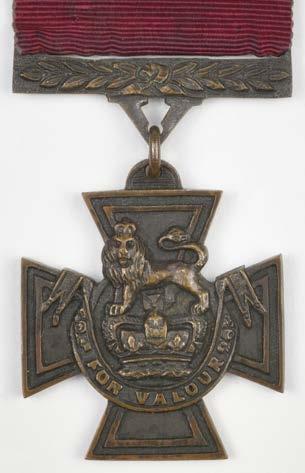
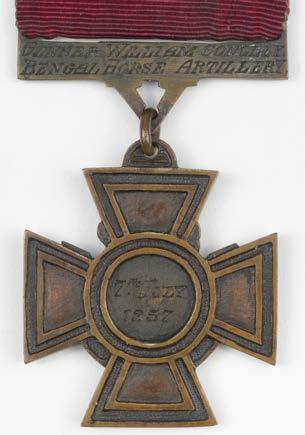
£3,000 - £5,000
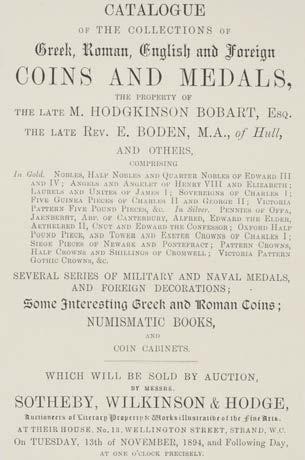

156* Afghanistan Medal to Sergeant M.H. Anteel, Royal Fusiliers, who drowned in the sea of Cannahore in 1885 Afghanistan Medal 1878-1880, 1 clasp, Kandahar (1537, Pte M.H. Auteel, 2/7th Foot), good very fine
Martin H. Anteel (please note the medal bears the surname Auteel) was born in Stroud, Gloucestershire in 1852, he served with the 2nd Bn, 7th (Royal Fusiliers) Foot and was drowned at Cannanore, India in 1885. The accident was reported in the “Homeward Mail” on 28 September 1885 with the headline Fatal Accident to Two-Non-Commissioned Officers ‘A melancholy accident, resulting in the loss of two non-commissioned officers of the “Royal Fusiliers” took place at Cannanore early on the morning of Sunday, Aug 30. Lance-Sergeant Anteel and Corporal Morley, who had been unpacking some regimental stores which had arrived the preceding day from England, finished work just after midnight. The night being very fine, with a clear moon, one of them appears to have proposed a bath before turning in, and for this purpose they proceeded to the beach two other men who had been engaged at work with them, but who did not accompany, returning to bed. Early next morning it was discovered that neither of them had returned to barracks, and it being feared that an accident had occurred a search was made. The clothes of the two unfortunate men were discovered on the cliff, and, after a short search, the body of Corporal Morley was found on the rocks, where it has been washed by the tide. A prolonged search made in the hopes of recovering the body of Sergeant Anteel, but no trace of it was discovered. At the inquest on the remains of the late Corporal Morley, a verdict of “accidental death by drowning” was returned. Both the deceased were young non-commissioned officers, of exceptionally steady character and habits.’
The recipient is entitled to a Kabul to Kandahar Star. (1) £150 - £200

157* WWI ‘Salonika’ Meritorious Service Medal to Sergeant Quarter Master A. Philip, M.S.M., M.I.D., Army Service Corps Army Meritorious Service Medal, G.V.R. (S2-SR-03317 S. Sjt: -A. S.Q.M. Sjt: A. Philip. A.S.C.), extremely fine
M.I.D. London Gazette: 21.7.1917
M.S.M. London Gazette 3.6.1918 ‘For devotion in Salonika’
Adam Philip served during the Great War in Salonika with the Army Service Corps
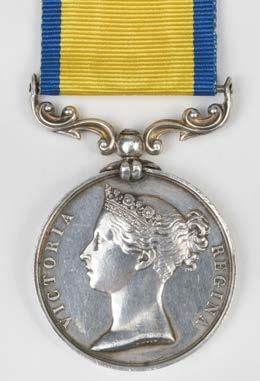
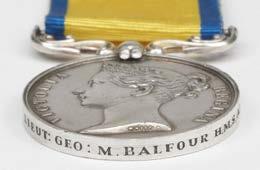
159* Baltic Medal 1854-55 (Lieut: Geo: M. Balfour H.M.S. Ajax), contemporarily engraved in neat serif capitals, very fine with copied paperwork
£100 - £150
398 Army Meritorious Service Medals were awarded in Salonika (1)

158* Ashantee Medal 1873-75, no clasp (J. Reeves, Sk Bth Attdt H.M.S. Rattlesnake. 73-74), minor official correction on the date, attractively toned and very fine
The Ashantee Medal 1873-74 to the Royal Navy and Royal Marines compiled by Neil Tucker confirms that Reeve was the only Sick Berth Attendant serving in H.M.S. Rattlesnake during the Ashantee campaign and therefore a unique roll on this ship.
H.M.S. Rattlesnake was engaged in a fierce action at Chamah on the River Prah on 14 August 1873. Commodore Commerell was wounded. No doubt Reeves would have tended to his gunshot wounds. An interesting medal and worthy of further research.
(1)
£200 - £300
George Macintosh Balfour (1823-1896) was born in Ireland. He joined the Royal Navy in 1837 and was promoted to Lieutenant in 1846 serving in various ships including H.M.S. Ajax in 1851, H.M.S. Porcupine in 1856, H.M.S. Siren on the southeast coast of America in 1858 (Commander) and Coast Guard Commander at Wicklow, Ireland in 1860, he retired from service in 1870. (1)
£200 - £300
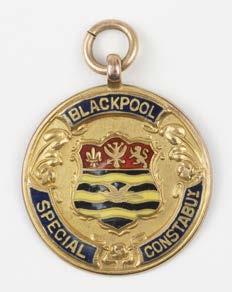
160 Blackpool Special Constabulary. A WWI 9ct gold and enamel tribute medal by Thomas Fattorini, Birmingham 1919, the obverse inscribed ‘Blackpool Special Constabulary’ featuring the crest of Blackpool, the reverse engraved ‘Constable 107 C. Parkinson, For Services Rendered’, 25 mm diameter with suspension ring, very fine, 6.3g
(1)
£100 - £150
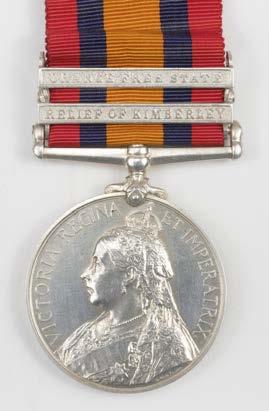
161* Boer War. A Queen’s South Africa Medal to Private F. Graves, 18th Hussars, who was severely wounded at Klips Drift, Kraal, 16 February 1900
Queen’s South Africa 1899-1902, 2 clasps, Relief of Kimberley, Orange Free State (3418. Pte. F. Graves. 18/Hrs.), ghost dates on the reverse, good very fine, with copied service papers
Francis Graves was born in Bristol in 1869. He joined the 18th Hussars in 1889 and served in South Africa from 21 November 1899 to 5 May 1900 he was severely wounded at Klips Drift, Kraal on 16 February 1900, and subsequently discharged from service on 25 September 1900 having served 11 years 138 days with the Colours. (1) £100 - £150
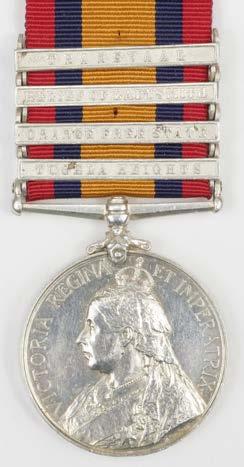
162* Boer War. A Queen’s South Africa Medal to Private J. Holland, 13th Hussars, who was severely wounded on 23 April 1901 at Langzekoegat and died a few days later Queen’s South Africa Medal 1899-1902, 4 clasps, Tugela Heights, Orange Free State, Relief of Ladysmith, Transvaal (3791 Pte J. Holland. 13/ Hussars.), ghost dates to the reverse, good very fine, with copied paperwork
Private J. Holland was killed in action having been severely wounded at Langzekoegat on 24 April 1901. He died on 29 April and is commemorated on the south wall of the 13th Hussars memorial at Royal Garrison Church, Aldershot. (1)
£300 - £400

163* Boer War. A Second Boer War Pair to Private J. Fisk, 18th Hussars
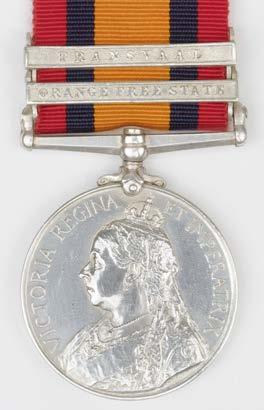

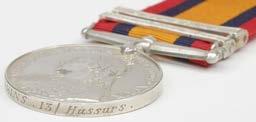
Queen’s South Africa Medal 1899-1902, 3 clasps, Orange Free State, Transvaal, Laing’s Nek (4126. Pte J.W. Fisk. 18/Hrs:), officially engraved, King’s South Africa Medal 1901-02, 2 clasps (4126 Pte J. Fisk. 18th Hussars), good very fine (2)
£200 - £300

164* Boer War. A Queen’s South Africa Medal to Private W. Nicholls, 18th Hussars, killed in action at Roodepoort, 2 February 1901
165* Boer War. A Queen’s South Africa Medal to Lieutenant C.E. Jenkins, 13th Hussars, reported missing in action at Buffalo River, 21 August 1900 Queen’s South Africa 1899-1902, 2 clasps, Orange Free State, Transvaal (Lt. C.E. Jenkins. 13/Hussu[sic]rs.), ghost dates to the reverse, officially engraved, good very fine
Although Hussars is spelt incorrectly this medal, it is entirely as issued.
Queen’s South Africa 1899-1902, 4 clasps, Orange Free State, Laing’s Nek, Belfast, South Africa 1902 (3797. Pte: W. Nicholls. 18/Hrs:), ghost dates to the reverse, officially engraved, scratches to the obverse, good very fine (1)
£400 - £500
Charles Edward Jenkins was a native of Cruckton Hall, Shrewsbury. He was reported missing on 21 August 1900, when serving with the regiment at Buffalo River. A report included in the lot reads ‘When news came that 200 Boers were crossing the Buffalo River at Wool’s Drift, Major Smithson took his weakened squadron to a slight rise, since named Smithson’s Ridge, about one and a half miles from Wool’s Drift. They had to fall back to help A Squadron, and Smithson was shot in both knees. He was taken prisoner but the two Squadrons managed to fend off the enemy attack. In the action, Private Dempsey dismounted and helped a comrade onto his (Dempsey’s) horse. He ran alongside but was shot dead and later died. Lt Charles Jenkins was at the mercy of advancing Boers and was offered help from Private Herbert and SgtFarrier Hunt but was injured and captured.’ Jenkins was later released and repatriated. He went on to serve with the Shropshire Yeomanry (Major) during WWI and is entitled to a pair plus Territorial Force War Medal. (1)
£200 - £300
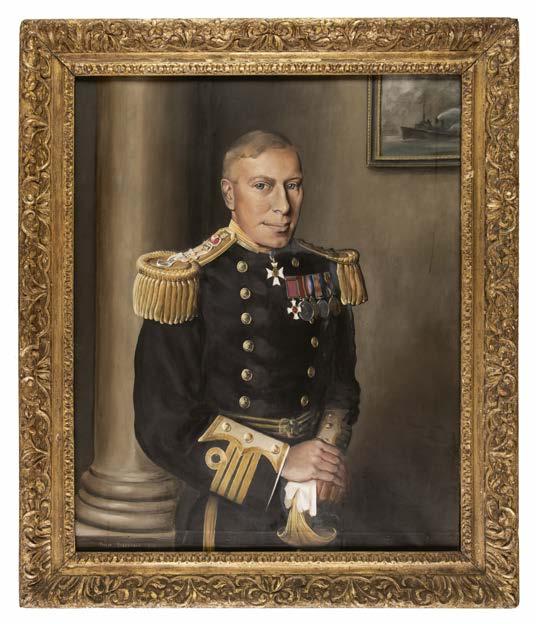
166* Steegman (Philip, 1903-1952). A portrait of Rear Admiral Henry Dalrymple Bridges C.V.O., D.S.O, oil on canvas, in full naval dress wearing his medals, signed lower left, 75 x 61 cm, period ornate gilt gesso moulded frame, frame size 90.5 x 76 cm, manuscript biographical information to verso
See lot 167
Henry Dalrymple Bridges (1881-1955) was born in Ewell, Surrey. He was commissioned Lieutenant in the Royal Navy in 1902, advancing to Lieutenant-Commander in 1910. Bridges was appointed torpedo officer in HMS Diamond and joined HMS Defiance for command of mining vessels in 1911. He was appointed torpedo officer in Defiance the following year before joining HMS Vernon in 1913 and HMS Hyacinth later in the year at the Cape of Good Hope Station. He was serving in Hyacinth at the outbreak of WWI and was promoted to the rank of Commander in 1915.
Post-war service saw Bridges serving as Rear Admiral Commanding North America for torpedo duties in 1919 and the following year he moved to the torpedo division where he was promoted to Captain in 1921. He was promoted to the rank of Rear-Admiral in 1933 and placed on the retired list but re-engaged for service during WWII, being appointed as a Commodore of Convoy to serve as Commodore, Second Class, Royal Naval Reserve, he was placed on the retirement list in 1940 with a small stint of service in 1941 working at Director of Patrols. Bridges retired from service in 1942.
(1)
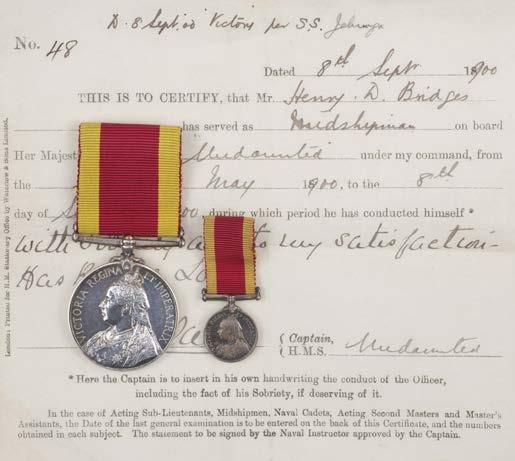
167* A China Medal 1900 to Rear Admiral Henry Dalrymple Bridges, C.V.O., D.S.O.
China 1900, no clasp (Midn H.D. Bridges. R.N. H.M.S. Undaunted.), renamed, good very fine, Spink & Sons ribbon brooch, with miniature dress medal and original conduct slip to the recipient dated 8 September 1900, his commanding officer in H.M.S. Undaunted remarks 'with sobriety and to my satisfaction has kept a log'
See lot 166 (a fine portrait of the recipient).
(2)
£200 - £300
£700 - £1,000

168* Crimea Medal 1854-56, 4 clasps, Alma, Balaklava, Inkermann, Sebastopol (G. Brown. 1st Batt Rifle Bde.), officially impressed and attractively toned, good very fine, contained in Sotheby Parke Bernet & Co envelope when it was sold as lot 71 (sale date unknown) George Brown was killed in action on 12 April 1855 (London Gazette: 24 April 1855).
(1)
£600 - £800
169* Three: Sergeant Thomas Herbert, 48th (Northamptonshire) Foot Crimea Medal 1854-56, 1 clasp, Sebastopol (Sergt Thos Herbert 48th Regt), Turkish Crimea Medal, British issue ‘Sergt Thos Herbert 48th Regt’, Army Long Service & G.C. Medal ‘Sergt Thos Herbert 48th Regt’, all three contemporarily engraved, fine (3) £200 - £300

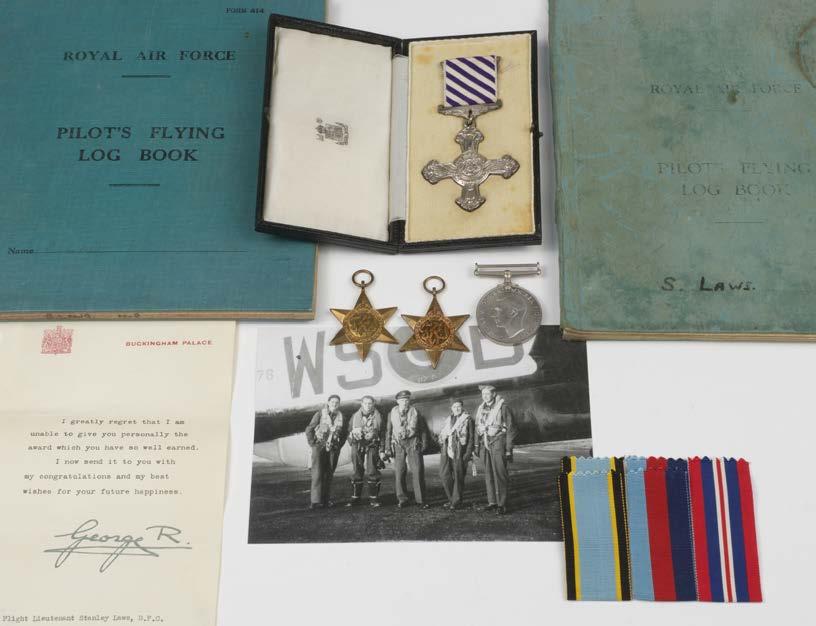
170* D.F.C. Group. An impressive WWII D.F.C. group to Flight Lieutenant S. Laws, D.F.C., 9 Squadron, Royal Air Force, who flew alongside 617 Squadron on special operations, he being one of the pilots to sink the Tirpitz in Tromsø Fjord, Laws also raided the Sorpe Dam and took part in the very last RAF raid of WWII on Hitler’s Berchtesgaden hideaway in the Bavarian Alps
a) Distinguished Service Cross, G.VI.R., reverse officially dated ‘1945’, in Royal Mint case of issue with Buckingham Palace letter of condolence named to the recipient
b) 1939-1945 Star
c) Air Crew Europe Star
d) Defence Medal, extremely fine, with two logbooks, for the period of 11 May 1943 to 22 March 1946, and 1 April 1946 to 16 December 1946, a modern black and white photograph of the recipient and his crew plus related newspaper cuttings
Stanley Laws (1921-1995) was born in Dunstan, Durham. He joined the RAF in 1942 and was commissioned as Flight Lieutenant. He flew 35 operations. Laws was awarded the D.F.C. for his part in the attacks on the Tirpitz in Norway, the Ruhr railway during the Dambuster operation and Hitler’s mountain chalet. 29 October 1944
Lancaster WG235 flown by Laws set off as part of Operation Obviate. The target was the German Battleship Tirpitz which was in her new anchorage of Tromsø in northern Norway. The attack followed up the successful Operation Paravane on 15 September 1944, when the Tirpitz was crippled by RAF heavy bombers.
The attack took place on the morning of 29 October, but thick clouds over Tromsø made it difficult for the allied airmen to accurately target the Tirpitz. The battleship was not directly hit, but was damaged by a bomb that exploded near her hull. Several aircraft were damaged in the unsuccessful operation. After the war Laws was posted to India, and whilst flying a Lancaster he almost killed a vulture. It crashed through his cockpit and knocked him out. As the Lancaster plunged out of control, with his terrified navigator unable to help, he regained consciousness and pulled out of the dive in the nick of time. (4)
£4,000 - £5,000

Defence of

Picton’s Medal, silver, light surface scratches, otherwise extremely fine and scarce
£1,000 - £1,500

172* East and West Africa Medal to Captain A.B. O’Donnell, D.S.O., M.I.D., West India Regiment, later Warwickshire Regiment
East and West Africa Medal 1887-1900, 1 clasp, Sierra Leone 1898-99 (2. Lieut: A.B. O’Donnell. 1/W India R,), impressed naming, good very fine, presented in a glazed display case with miniature dress medals, Royal Warwickshire cap badge and biographical information, frame size 27.5 x 22.5 cm, with copied paperwork
D.S.O. London Gazette: 26 September 1916
‘For conspicuous gallantry in action. During an attack, when all his senior officers had become casualties, he took command, led the companies on, and captured the enemy’s trench. He then reorganized the company and consolidated the defences. He himself shot six of the enemy in the trenches.’
Albert Bernard O’Donnell was born in Bombay, India in 1876. He was educated at the Oratory School, Edgbaston, Birmingham and then the Royal Military College, Sandhurst. He was commissioned 2nd Lieutenant in the West India Regiment from 1897 and served through the Timini and Mendi Rising in Sierra Leone. He resigned his commission in 1900. O’Donnell served in the European War first as a Sergeant in the Natal Light Horse and through the South Africa Rebellion and the German South West African Campaign. Then he went to England and enlisted in 2nd King Edward’s Horse serving on the Western Front from August 1915 to April 1916 where he was commissioned in the 10th (S) Battalion, Royal Warwickshire Regiment and advanced to Captain on the field. He was taken prisoner of war on 17 August 1916, mentioned in despatches twice, awarded the French Croix de Guerre with Palm and the D.S.O. for gallantry at Bezentin-le-Petit. (1)
£300 - £500
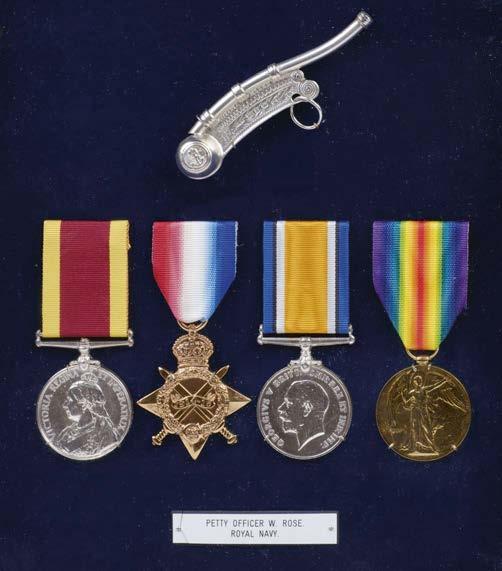
173* Four: Petty Officer W. Rose, Royal Navy China Medal 1900 (W. Rose Lg Smn HMS Dido), 1914-15 Star (178322 W. Rose P.O.1., R.N.), British War and Victory Medals (178322 W. Rose P.O. R.N.), good very fine, presented in a Spink display case with bosun’s whistle, case size 31.5 x 24.5 cm

174* Four: Warrant Officer C. Banham, M.S.M., Royal Artillery British War and Victory Medal (24928 A.W.O.Cl. C. Banham. R.A.), Meritorious Service Medal, G.VI.R. (24928 W.O. Cl.1. C. Banham. R.A.), Long Service & G.C., G.V.R. (24928 Sjt: C. Banham. R.G.A.), generally good very fine, with the recipient’s identity tags
Charles Banham served with the 82nd Heavy Brigade, Royal Garrison Artillery.
(4)
£150 - £200
William Rose was born in London in 1878, he joined the Royal Navy in 1896, and he served in various ships including HMS Dido from 1898-1903, his last ship was HMS Abdeil before he retired from service in 1919. The bosun’s whistle belonged to the recipient and was added to the frame in 1996 (a letter from the recipient’s daughter to Spink requests this). (4)
£150 - £200

175* Four: Warrant Officer J.L.A. Rodgers, Royal Air Force 1939-1945 Star, Africa Star, Defence and War Medal with M.I.D. oakleaf, RAF Long Service & G.C., G.VI.R. (W/O. J.L.A. Rodgers. (505996) R.A.F.), good very fine and last nicely toned, mounted as worn, with copied paperwork and related cloth RAF badge
M.I.D. London Gazette: 1 January 1945
John Leslie Armstrong Rodgers was born in Oldham, Lancashire in 1907, he resided in Gloucestershire and died in 1967. (5)
£100 - £150
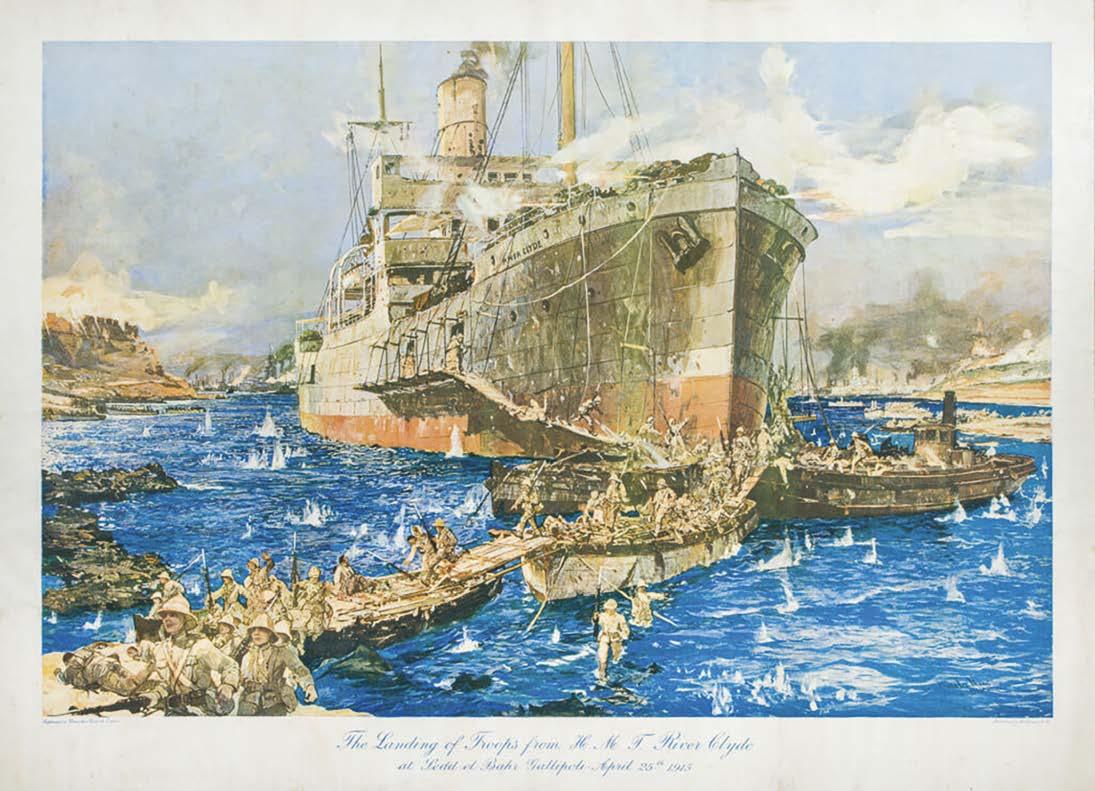
176* The historically important WWI ‘Gallipoli Landings, “V” Beach’ C.G.M. medal group awarded to Petty Officer Frederick Gibson, C.G.M., M.I.D., Royal Navy. Gibson, on seeing that the landing bridge from the River Clyde didn’t reach the shore, jumped overboard from his ship H.M.S. Albion and, under heavy enemy fire, transported multiple wounded men back to River Clyde in a rowing boat. On his second trip to the beach, he grabbed a tin of biscuits and used this to protect his back; the tin was hit three times a) Conspicuous Gallantry Medal, G.V.R. (191025. F. Gibson. P.O.2Cl. H.M.S. Albion.)
b) 1914-15 Star (191025. F. Gibson. C.G.M., P.O.1.R.N.)
c) British War and Victory Medals (191025. F. Gibson. P.O.1. R.N), with M.I.D. oakleaves
d) Royal Fleet Reserve Long Service Medal, G.V.R. (191025 (Ch.B. 3829) F. Gibson. P.O. R.F.R.)
e) France, Médaille Militaire, silver and enamel, polished, very fine or better, presented in a ‘Spink’ glazed case with biographical information and copied photographs of both River Clyde and HMS Albion to verso, case size 45.5 x 43 cm
C.G.M. London Gazette: 13 August 1915 Gallipoli Campaign, Landings
Petty Officer, Second Class, Frederick Gibson, H.M.S. Albion
‘He jumped overboard with a line and got his boat beached to complete bridge from ‘River Clyde’ to shore. He then took wounded to ‘River Clyde’ under heavy fire’
Médaille Militaire London Gazette: 28 August 1918
Gallipoli Campaign - Landings 25 and 26 April 1915
The landing commenced at 4.20 am on the 25th. The general scheme was as follows. Two main landings to take place, the first at a point just north of Gaba Tepe, the second on the southern end of the peninsula. In addition, a landing was to be made at Kum Kale, and a demonstration in force was to be carried out in the Gulf of Xeros near Bulair.
Landing at “V” Beach
This beach was anticipated to be the most difficult to capture, it possessed all the advantages for defence that “W” beach had (1st Battalion Lancashire Fusiliers had embarked for “W” beach in HMS Euryalus and Implacable. The regiment had come under heavy fire from the enemy suffering many casualties). In addition, the flanks were strongly guarded by the old castle and village of Seddul Barhr on “V” beach, the whole foreshore was covered in barbed wire entanglements which extended in places under the sea. The position formed a natural amphitheatre with the stage being the beach.
The first landing here, as at all the other beaches (“W”, “X”, “Y” beaches) was made in boats, but the experiment was tried of landing the remainder of the force by means of a collier River Clyde. This steamer had been specially prepared for this occasion under the direction of Commander Edward Unwin V.C., large ports had been cut in her sides and gangways built whereby the troops could reach the lighters which were to form a bridge onto the beach.
“V” beach was subjected to a heavy bombardment similar to “W” beach, with the first attempt to land being met with heavy fire from rifle, pom-pom and machine gun, which was not opened until the boats had cast off from the steamboats.
A landing on the flanks on this beach was impossible and practically all of the first wave was either killed or wounded, though a few managed to find shelter under a bank on the beach. In several boats all were either killed or wounded. Immediately after the boats had reached the beach the River Clyde was run ashore under heavy fire on the eastern end section.
As the River Clyde grounded, the lighters which were to form the bridge to the shore were run ahead of the collier but unfortunately, they failed to reach their proper stations and a gap was left between two lighters over which it was impossible for men to cross, some men attempted to land by jumping from the lighter and wading to shore. This method proved too costly with the lighter being heaped with dead and the disembarkation was ordered to cease.
The troops in the River Clyde were protected from rifle and machine-gun fire. Commander Unwin, seeing how things were going left the River Clyde and standing up to his waist in water under heavy fire, got the lighters into position.
The bridge to the shore, though now passable, could not be used by the troops, anyone appearing on it being instantly shot, and the men in the River Clyde remained until nightfall.
At 9.50am HMS Albion sent in launch and pinnace (ship’s boat) manned by volunteer crews to assist in completing the bridge, these boats, however, could not be got into position until dark owing to heavy fire.
It had already been decided not to continue to disembark on “V” beach, and all other troops were diverted to “W” beach. The position remained unchanged on “V” beach throughout the day, the remaining crew of River Clyde did their utmost to keep down the fire directed on the men under the partial shelter on the beach.
During this period many heroic deeds were performed in rescuing wounded men from the water.
During the night of the 25-26th, the troops in River Clyde were able to disembark under cover of darkness and obtain some shelter on the beach and in the village of Seddul Bahr, this was proceeded by heavy fighting. The fight continued, supported by gunfire from HMS Albion until 1.24 pm, when the troops had gained a position from Hill 141. The hill was gallantly stormed by the troops led by Lieutenant-Colonel C.H.H. Doughty-Wylie, who fell as the position was won. The taking of this hill effectively cleared the enemy from the neighbourhood of the “V” beach, which could now be used for the disembarkation of the Allied armies. The capture of this beach called for a display of the utmost gallantry and perseverance from the officers and men of both services.
Frederick Gibson was born in Reed Street, West Hartlepool, Durham in 1880. He was a wagonway man at Littleburn Brandon and Wingate Collieries before joining the Royal Navy in 1898 for a period of 12 years. He served in various ships, his first being HMS Impregnable from 1896-97, followed by 8 further ships up to 1906. He then rejoined the Royal Naval Reserve at Chatham in March 1906 and re-enrolled in 1910 to 1916. His service saw him serve in HMS Prince George in 1914, Albion from 17 August 1914 to 18 May 1916, and 3 further ships, his last being HMS Pembroke I on 26 December 1918.
Gibson distinguished himself during the Gallipoli landings when he and Ordinary Seaman Jesse Lovelock got the boats into position and also assisted in getting the wounded from “V” beach and the lighters back into the River Clyde. Gibson jumped from HMS Albion with a line and beached

his boat to complete the bridge from the River Clyde to shore. He then took the wounded to River Clyde under heavy fire. Both men were awarded the rare and historically important Conspicuous Gallantry Medal.
A report in the Northern Daily Mail on 1 November 1915, incorrectly headlined ‘Wingate man wins the V.C.’, gives a first-hand account of the action by Gibson.
“I volunteered to go in and try to get a better landing stage rigged to get the soldiers ashore, but the firing was too heavy: it was impossible for me and my men and a soldier wounded in my boat within a few minutes of my arrival. I saw soldiers leave the River Clyde - only two got safely on the beach.
I busied myself doing what I could amongst the wounded dressing wounds, getting some out of the water etc, but I had to give up the work, not that I valued my own life, a thing I never thought of at the time, but the enemy had shot two of the wounded whom I had already got out of the water. One bullet shaved my hair, while another grazed my little finger. After that I had 13 wounded and seven dead in two boats put into my care for transmission to the hospital ship.
I received my thanks from the wounded and was also cheered. This seemed to give me the strength of a lion. Where I got my strength from to handle the helpless and wounded God only knows.
An officer, with two men, brought a boat to me, and we managed to get 11 off and safely back to the River Clyde. When rowing back the second time I placed a large box full of biscuits at my back for safety. The box got three bullets into it.
My narrowest escape on the shore was when I left the boat. I took a few of our soldiers by surprise, for I was the only person on the beach wearing blue clothes and my black silk handkerchief was over my head to keep the sun off. One of our soldiers, thinking I was one of the enemy aimed his rifle at me, and had his bayonet fixed.
As luck would have it I was close enough to him to knock his rifle into the air. At the same time clicked off my silk handkerchief and the mistake was discovered.”
(6)
£20,000 - £25,000

177* British Order. The Most Honourable Order of the Bath, G.C.B. (Military) Knight Grand Cross, original case of issue by Garrard & Co Ltd, 24 Albemarle Street, London, some wear to the edges (1)
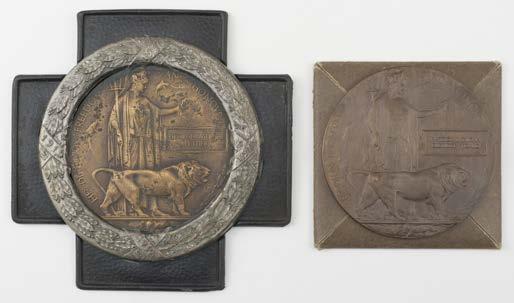
£200 - £300
178* General Service Medal 1918-62, G.V.R., 1 clasp, N.W. Persia (5330038 Pte S Pierpoint R. Berks R.), lacquered, good fine (1)
180* H.M.S. Hampshire. WWI Bronze Memorial Plaque ‘Patrick Lanigan Eldridge Tizard’, extremely fine, with envelope, letter of condolence from Buckingham Palace and card packaging, together with another memorial plaque ‘George William Pether’, good fine, presented in a metal 1916-1918 memorial frame
£70 - £100
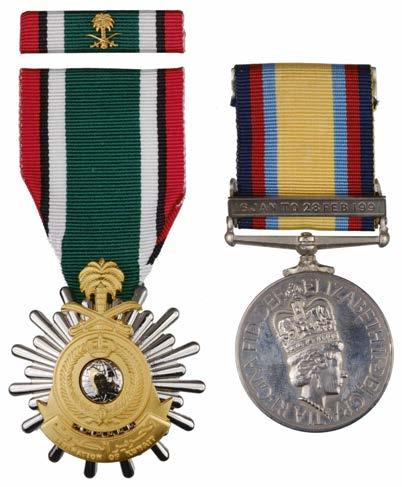
Patrick Lanigan Eldridge Tizard (1889-1916) served with the Royal Marine Light Infantry. He was killed in action whilst serving in H.M.S. Hampshire when she was conveying Field Marshal Lord Kitchener on a diplomatic mission to Russia. She struck a German mine off the Orkney Islands on 5 June 1916 and sank within 15 minutes with the loss of 737 lives, including Kitchener. There were only 12 survivors. Tizard is commemorated on the Portsmouth Naval Memorial.
(2)
£100 - £150

£100 - £150
179* Gulf Medal 1990-91, 1 clasp, 16 Jan to 28 Feb 1991 (24799406 Fus M.W. Kennally RRF), extremely fine with card box of issue, with Saudi Arabia, Kingdom, Medal for the Liberation of Kuwait 1991, with ribbon bar, in case of issue and Kuwait, Emirate, Medal for the Liberation of Kuwait 1991, 4th Grade, with ribbon bar, in case of issue, extremely fine (3)
181* India General Service Medal 1854-95, 1 clasp, Burma 18857, bronze issue (Jhorawallah Magail 2nd Mad Lcrs), good very fine
Provenance: DNW (now Noonan’s), Awards to the Indian Army from the collection of A.M. Shaw, 19-21 June 2013, lot 1677.
(1)
£70 - £100
182* A fine Victorian group of medals awarded to Major-General Fitzroy Hart-Synnot, C.B., C.M.G., The East Surrey Regiment, representing five military campaigns. Hart-Synnot, who was wounded multiple times, was described by his brother Sir Reginald Hart V.C. as 'the bravest man he had ever met'
a) The Most Honourable Order of the Bath, C.B. (Military) Companion's breast badge, gold and enamels, with gold swivel bar suspension and gold three-prong ribbon buckle
b) The Most Distinguished Order of St. Michael & St. George, C.M.G., Companion's breast badge, gold and enamels, with gold swivel bar suspension and gold three-prong buckle
c) Ashantee Medal 1873-74, 1 clasp, Coomassie (Capt: A.F. Hart, 31st Foot. 1873-4.)
d) South Africa Medal 1877-79, 1 clasp, 1879 (Capt A.F. Hart. 31st Foot)
e) Egypt Medal 1882-89, dated reverse, 1 clasp, Tel-El-Kebir (Major A.F. Hart E. Surr: R.)
f) Queen's South Africa Medal 1889-1902, 5 clasps, Cape Colony, Tugela Heights, Orange Free State, Relief of Ladysmith, Transvaal (Maj: Gen A. Fitz. R. Hart-Synnot. C.B, C.M.G.)
g) King's South Africa Medal 1901-02, 2 clasps (Maj. Gnl. A. Fitz. R. Hart-Synnot. C.B. C.M.G. Staff.)
h) Ottoman Empire. Order of the Osmania, silver gilt and enamels
i) Khedive's Star 1882, minor damage and loss to the British orders, the Ottoman order has more significant loss to the green points of the star, otherwise the campaign medals are good very fine or better, presented in a Spink glazed display case with tight claws holding each medal and with biographical information to verso, case size 43 x 45.5 cm
Major-General Arthur Fitzroy Hart-Synnot, C.B., C.M.G. (1844-1910) was born in Portsmouth. He was the son of Lieutenant-General Henry George Hart (who rose to fame for establishing Hart's Army List). Hart-Synnott was educated at Cheltenham and Sandhurst. He passed out as Ensign with the 31st (Huntingdonshire) Foot.
He served with Sir Garnet Wolseley on the Gold Coast of Africa in 1873 and noted for training the Sierra Leone Company of Russell's Regiment, which he led through the Ashantee War of 1873-74. He was slightly wounded and mentioned in despatches twice for this campaign and was present at all fighting up to the capture of Coomassie.
The Ashantee
The Drums of Kumasi (pp.162-163).
'An officer of Russell's Regiment, Lieutenant Hart, who was lying low in the trees near a clearing to the south-west of the village, caught sight of something no one else in Wolesley's force had yet seen yet; an Ashanti fighting group moving across open ground. His observations show how remarkably they differed from the popular conception of an undisciplined tribal army of that time'
'Soon after the village was taken, I saw about 150 Ashantis file out of the brush skirting the village on the south-west side, and entering the clearing, which was several acres of stumps of plantain trees, the remains of the grove which the Ashantis had evidently cut down. I had been watching this clearing, hoping that some of the enemy might retreat across it, and thereby come under a very effective fire from the company, which was halted in the road about 300 yards south of Odasu and separated from the clearing by a fringe of five or six yards' width of bush. The Ashantis, as they entered the clearing marched southwards in single rank parallel to the road, and 200 yards from it. Their arms were all sloped; every man was closed up to what we call fronting distance; their pace was quite regular, though much slower than our quick march and, except for that, and the fact they were all talking they moved as do our best-drilled soldiers. This unexpected regularity made me doubt that they were Ashantis - they seemed to me more likely to be some natives of Wood's Regiment that had passed on to Odasum and I called up one of my corporals and asked what he thought of them. He said they were Bonny men. They had hidden up to the waist by the stumps of the plantain trees, but their muskets looked like very long and unlike Sniders. In another minute I had decided that they were not Bonny men, Ashantis; when just as I was turning to order my men to open fire, the Ashantis, who hitherto had looked neither to right nor left, caught sight of me. One after the other, their muskets came down to the "ready", and the corporal and I returned to our company, escaping the volley fired
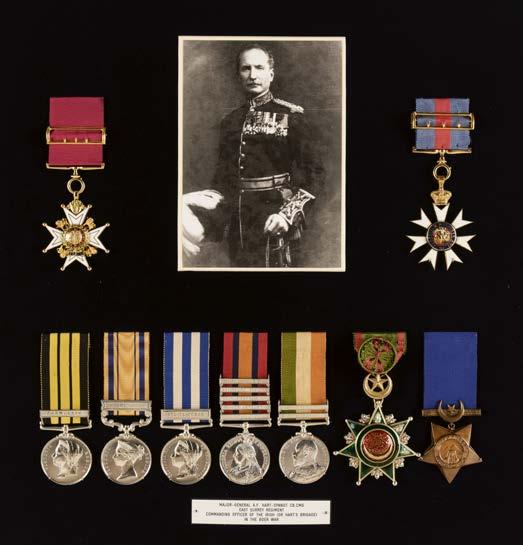
at us by stooping among the plantain stems. My men, and the rest of Russell's Regiment, opened fire and it was warmly returned. The Ashantis in the clearing must have been reinforced in large numbers, for their fire rapidly increased and extended until it overlapped or left flank. We then drew into Odasu and formed front there, facing to our rear and down the road we had just marched up. In no degree did we diminish the Ashanti fire, which had now extended quite across our rear, against which they were removing with shouts and war songs.'
The Zulu War
Hart-Synnot went to South Africa to fight the Zulus from 1878-79 on special duties. He was a Staff Officer to two Battalions of the 2nd Regiment Natal Native Contingent, being present with Pearson's Column at the engagement of Inyezane, then as a Staff Officer in the Ekowe relieving column and at Gingindlovu.
Near the Inyezene River on 22 January, as the men of No.1. Column were finishing their breakfasts, a few Zulus appeared on a spur above Pearson's encampment. Hart and his company which had become disordered after crossing a ravine, "a mass of Zulus suddenly appeared over the crest and began pouring down the spur". At the sight of the Zulus, Hart's Kaffirs fled into the ravine, "leaving the European officers and N.C.O's to make to fruitless stand before being swept aside". Afterwards, he served as a Brigade Major and finally as Principal Staff Officer to Clarke's Column. He was mentioned in despatches for the Zulu Wars and advanced to Brevet Major.
The Boer Wars and Egypt
Hart-Synnot was in South Africa during the first Boer War of 1881 and Egypt the following year as Assistant Adjutant and Quarter Master General in the Intelligence Department and took part in the actions of Magfurm Tel-elMahuta and Kassassin (9 September) where he was wounded in the arm. He then served in the second action of Kassassin and the Battle of Tel-el-Kebir, where he was reunited with his brother, Reginald Hart V.C., he received a mention in despatches and advanced to Lieutenant-Colonel.
He commanded the 1st Battalion, The East Surrey Regiment in India from 1891-1895 and was promoted to Major-General. Hart Commanded the 5th (Irish) Brigade during the second Boer War of 1899. He served throughout this campaign and fought in the Battle of Colenso, Spion Kop and Hart's Hill (named after him), Monte Christo and all the engagements on the Tugela including the Relief of Ladysmith. Hart was mentioned in despatches and received the C.M.G.
Hart-Synnot retired from service in 1904 and resided in Armagh, Northern Ireland. He married a daughter of Mark Seton Synnot and assumed the family name, Hart-Synnot. He suffered an accident in 1910 and died as a result of the aftereffects of an operation. His brother, Sir Reginald Hart V.C. proclaimed Hart as 'the bravest man he had ever met.' (9)
£8,000 - £12,000
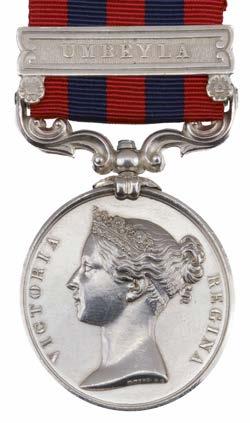
183* India General Service Medal 185495, 1 clasp, Umbeyla (3745. T. Slater H.Ms. 1st Bn. 7th Regt), minor edge bruise, therefore, nearly extremely fine Thomas Slater served with 1st Bn, 7th (Royal Fusiliers) Foot during the Crimea campaign where he was wounded at Sebastopol on 14 June 1855, he was discharged from service in June 1865.
(1)
£150 - £200
184* An impressive group WWI and later group to Brigadier Hugh Charles Stephens Minchin, Indian Army 1914-15 Star (Lt. H.C. Minchin, 52/Sikhs F.F.), British War and Victory Medals (Capt. H, C.S. Minchin.), General Service Medal 191862, G.V.R., 2 clasps, Kurdistan, Iraq (Capt H.C.S. Minchin.), India General Service Medal 1908-35, G.V.R., 2 clasps, Waziristan 1921-24, North West Frontier 1930-31 (Capt. H.C.S. Minchin. 2-12 F.F.R.), 1935 Jubilee Medal, India General Service Medal,193639, 1 clasp, North West Frontier 1937-39, naming erased, India Service Medal, War Medal, generally very fine, mounted on a contemporary cloth board for display, together with 26 black and white photographs of the recipient in uniform, group photographs including 2nd Battalion, 12th Frontier Force Regiment (Sikhs) on parade, the original bestowal certificate for the 1935 Silver Jubilee Medal on Viceregal Lodge, Simla headed paper, uniform, comprising jacket, trousers, waistcoat and side cap, plus Bridadier’s peaked cap, all contained in an old suitcase
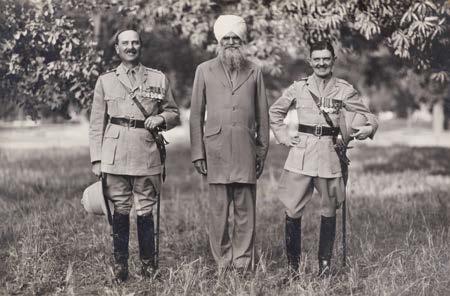

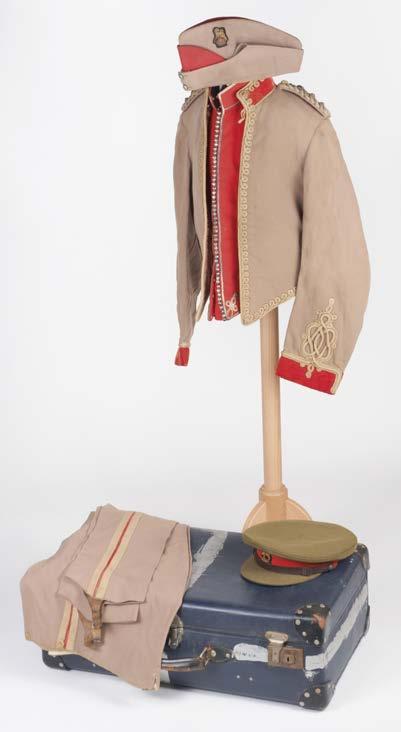

186* Italy, Kingdom, Messina Earthquake Commemorative Medal 1908, silver, by L. Giorgi, unnamed as issued, edge bruises, very fine with original case of issue
Brigadier Hugh Charles Stephens Minchin (18931957), was commissioned, 2nd Lieutenant in the Indian Army in November 1914, advancing to Colonel in 1941. (a suitcase)
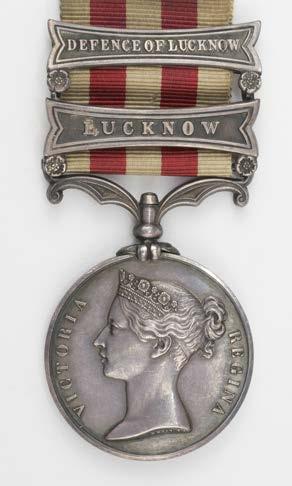
£1,000 - £1,500
185* Indian Mutiny Medal 1857-58, 2 clasps, Lucknow, Defence of Lucknow (R. Pemberton, 90th Lt Infy), attractively toned and original ribbon, good very fine (1) £600 - £800
On 28 December 1908 a devastating earthquake hit Sicily and Calabria, southern Italy. The epicentre was the Strait of Messina, with a magnitude of 7.1 and a maximum Mercalli intensity of XI. The cities of Messina and Reggio Calabria were almost completely destroyed and between 75,000 and 82,000 people died. The earthquake was the deadliest in the history of Europe. For further reading see Angels in Blue Jackets, Navy at Messina 1908 by J.W Wilson and Roger Perkins. (1)
£100 - £150

187* Japan, Order of the Sacred Treasure, 3rd Class neck badge, silver-gilt and enamel, with neck cravat complete with metal fitments and lapel rosette, in hinged lacquer case of issue, good very fine, together with Japan, Order of the Rising Sun, 8th Class breast badge, silver, in lacquered case of issue, extremely fine, together with Japan, Red Cross Medal, silver, in lacquered case of issue, extremely fine (3) £100 - £150
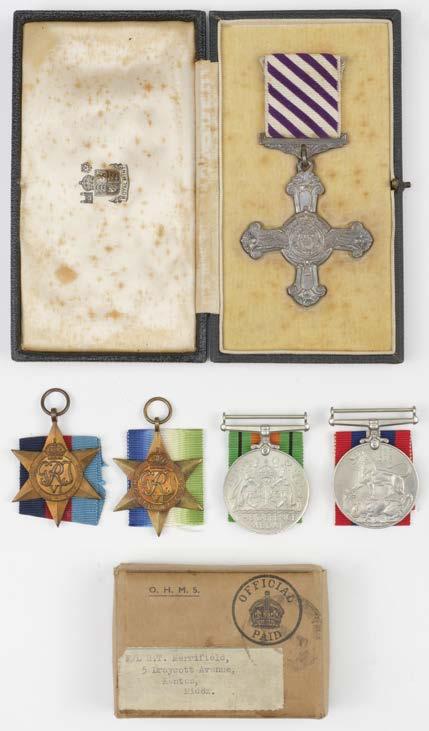
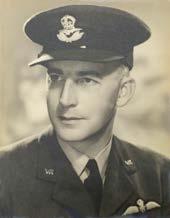
188* A WWII D.F.C. group of five to Liberator Pilot Flight Lieutenant Robert Thomas Merrifield, 53 Squadron, Royal Air Force, who was engaged by four hostiles over the Bay of Biscay in July 1943, a fight which lasted 47 minutes and resulted in two enemy aircraft being shot down; all three crew were decorated for setting an "example worthy of the highest praise"
a) Distinguished Flying Cross, G.VI.R., reverse officially dated '1943', attractively toned in Royal Mint case of issue, the case interior spotted b) 1939-1945 Star
c) Atlantic Star
d) Defence and War Medals, in Air Ministry box of issue named to 'F/L R.T. Merrifield, 5 Draycott Avenue, Kenton, Middx', extremely fine, with typed medal entitlement slip, with a large back and white portrait photograph of the recipient in RAF VR uniform, 25 x 20 cm, glass frame
See lot 189
D.F.C. London Gazette: 23 July 1943 Merrifield. Robert Thomas. FO. (111567). RAFVR. 53 Sqn
A joint citation with an Australian Flying Officer G.F. Wood (D.S.O.) and RAF Flight Sergeant Niven (D.F.M.)
'In July, 1943, Flying Officers Merrifield and Wood and Flight Sergeant Niven were pilot and beam gunners respectively of an aircraft engaged on antisubmarine patrol over the Bay of Biscay. During the flight, the bomber was engaged by 4 hostile aircraft. In the running fight which ensued, these members of aircraft crew displayed great courage and tenacity. Coolly and skillfully, Flying Officer Merrifield manoeuvred his aircraft while his beam gunners used their guns most effectively shooting down 2 of the attackers and driving off the others. During the action, which lasted for 47 minutes, these members of aircraft crew set an example worth of the highest praise.' (5)
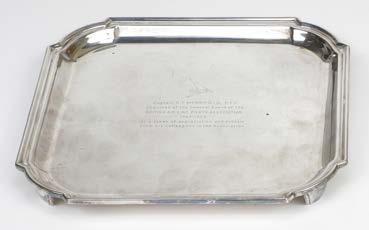
£1,500 - £2,000
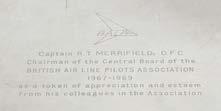


189* Presentation Salvers. A shaped silver salver by Alexander Clarke & Co Ltd, Sheffield 1960, engraved ‘Captain R.T. Merrifield, D.F.C. Chairman of the Central Board of the British Air Line Pilots Association 1957-1960 as a token of appreciation and esteem from his colleagues in the association’, additionally engraved with an ensign three-part banner ‘Service With Safety’, on four curved feet, 26.5 x 26.5 cm, 597g, together with another shaped silver salver by Robert & Dore, Birmingham 1970, engraved ‘Captain R.T. Merrifield, D.F.C, Chairman of the Central Board of the British Air Line Pilots Association 1967-1969 as a token of appreciation and esteem from his colleagues in the Association’, on four shaped feet, 26 x 26 cm, 733g
See lot 188
(2)
£500 - £700

190* Military General Service Medal 1793-1814, 1 clasp, Talavera (R. Cablewright, 40th Foot), very fine and scarce
1 of 5 medals with a single clasp for Talavera awarded to the regiment. Although the medal bears the name Cablewright the published transcript roll states ‘Robert Kibblewhite’ and the remark ‘This medal is named Cablewright. The original roll, a copy which is held at the Regimental Museum, shows the entry as ‘Kibblewhite of Cablewright.’ Preston 1971.
Broadley Collection 1982.’
(1)
£1,000 - £1,500
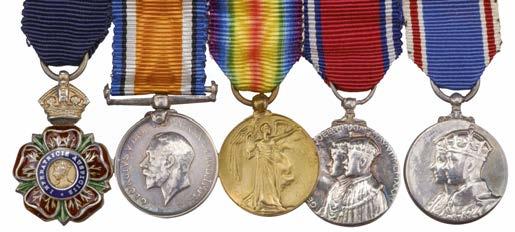
191* Miniature Medals. A group of five miniature dress medals attributed to A.V. Askwith, C.S.I., C.I.E., Indian Civil Service
a) The Most Eminent Order of the Indian Empire, C.I.E., Companion’s badge, silver-gilt and enamel
b) British War and Victory Medals
c) Jubilee Medal 1935
d) Coronation Medal 1937, very fine or better, swing mounted as worn
Arthur Vivian Askwith (1893-1971) was educated at Bedford School and joined the 28th Light Cavalry, Indian Army in 1919. He served in Salonika and Transcuacasia. He then joined Indian Civil Service in 1921 being appointed Assiantant Commissioner, Punjab, he received various promotions advancing to Chief Commissioner, Delhi from 1940-45 after which he retired from service and resided in Hereford.
The full size medals (along with these miniatures) were sold at Sotheby’s on 12 September 1989, lot 366.
(5)

192* Miniature Medals. A group of dress miniature medals awarded to Captain Philip Basil Cuddon, M.C. & Two Bars, C.B.E., M.I.D., Hampshire Regiment later North Lancashire Regiment
a) Military Cross, G.V.R. with Second and Third Award Bars
b) 1914-15 Star
c) British War and Victory Medals with M.I.D. oakleaves
d) Defence and War Medals
e) Belgium, Order of Leopold (Military) Knight's Breast Badge
f) Belgium, Croix de Guerre, extremely fine and lacquered, court mounted by Spink & Sons Ltd, together with full-size Military Cross case, ribbon bar, with various sundry items including white metal Hampshire Regiment cap badge, 1914-1918 Belgium Commemorative Medal etc
Pair: Miss Gladys Evelyn Cummings, M.I.D., Volunteer Air Detachment
British War and Victory Medals (G.E. Cummings. V.A.D.), with M.I.D. oakleaves, extremely fine and mounted as worn, with dress miniature medals
The full-size medal group awarded to Captain Philip Cuddon, M.C. & Two Bars was sold at Noble Numismatics Pty Ltd, Australia on 20-23 November 2018, lot 3538. The items offered in this lot are the remaining items which are being sold directly on behalf of the Cuddon family.
M.C. London Gazette: 18 June 1917 2nd Lt. (temp. Capt) Philip Basil Cuddon, Hamp R.
Monchy 14 April 1917 'For conspicuous gallantry and devotion to duty. He displayed great ability in placing a part of the village in a good state of defence at a most critical stage, On a later date he led his company into action, captured a trench containing a large number of the enemy, and defended the right flank of the Division when the advance was held up.'
M.C. Second Award Bar. London Gazette: 27 July 1918 (Hampshire Regiment)
Near Vieux Berquin 3 April 1918 'For conspicuous gallantry and devotion to duty. When the line on the left suddenly broke under an enemy attack, this officer galloped up and took the men forward, re-establishing the original firing line. His energy and drive saved a very critical situation.
M.C. Third Award Bar. London Gazette: 27 October 1919 (Hampshire Regiment)
£100 - £150
Gladys Evelyn Cummings was a native of the Promenade, Cheltenham and received her Mentioned in Despatches for Salonika. Here she carried out special work cooking for invalided soldiers at one of the hospitals. She is reported to have supplied (with her helpers) 600 pints of lemonade in a day. In one week they negotiated 11,000 portions to soldiers.
The Cummings and Cuddons are linked by marriage.
(1)
£200 - £300

193* Modder River. A Second Boer War Medal to Private T. Hill, Argyll & Sutherland Highlanders, severely wounded in action crossing the Modder River, Natal Colony, 28 November 1899 King’s South Africa Medal 1901-02, 2 clasps (4018 Pte T. Hill. A. And S. Highrs:), good very fine
Provenance: Aberdeen Medals, with a very good write-up by the dealer.
Please note, the medal is named precisely as transcribed from the published transcript roll, with the typo ‘T’ [sic] instead of the forename letter ‘F’. The naming entirely as issued.
T Hill (in fact Francis Gregory) was born in Kensington, London in 1872. He joined the army in 1891 and was posted to the Argyll & Sutherland Highlanders. He was severely wounded in action at Modder River, Natal Colony, South Africa on 28 November 1899. The losses of 1st Bn Argyll & Sutherland Highlander at Modder River were nearly double those of any other battalion with an estimated 20 men and 2 officers killed and 93 men wounded.
(1)
£100 - £150
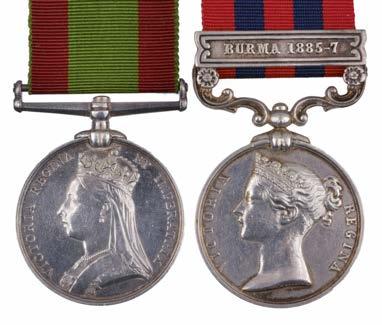
194* Pair: Colonel A.D. Parsons, 2nd Madras Lancers, late South Devon Militia
Afghanistan Medal 1878-80, no clasp (Cap: A.D. Parsons. 1st M, Lt C.), India General Service Medal 1854-95 (Colonel A.D. Parsons 2nd Madras Lcrs), good very fine, with copied service papers
Arthur Dewar Parsons (1834-1918) was the son of Lieutenant-Colonel J.W. Parsons, 10th Hussars. His obituary which was published in the Exeter and Plymouth Gazette on 1 November 1918, states ‘Colonel Parson served with the South Devon Militia when it was embodied during the Crimean War and received, through Lord Grey, one of the first Queen’s cadetships to India, joining the 1st Madras Light Cavalry in 1856’. Parsons served in Afghanistan, being invalided from Jacobadad in July 1880 and later served in Burma. He retired from service in 1899 and resided in Middle Chinnock, Crewkerne, Somerset.
(2)

195* Pair: Colour Sergeant H. Ayres, Royal Fusiliers
Canada General Service Medal 1866-70, 1 clasp, Fenian Raid 1866 (1432. Pte. H. Ayres. 2/7 R. Fus:), Army Long Service & G.C. (600. Cr Sergt. H. Ayres. R. Fus:), extremely fine, with copied service papers
Henry Ayres was born in Amersham, Buckinghamshire in 1849, he joined 2nd Bn, 7th Royal Fusiliers in 1864 and was appointed Drummer the following year. Ayres served in Canada from 1866, later advancing to Colour Sergeant in 1879. He retired from service in 1887 having served 23 years and 64 days with the Colours. Ayres resided in Hounslow and died in 1902.
(2)
£300 - £400
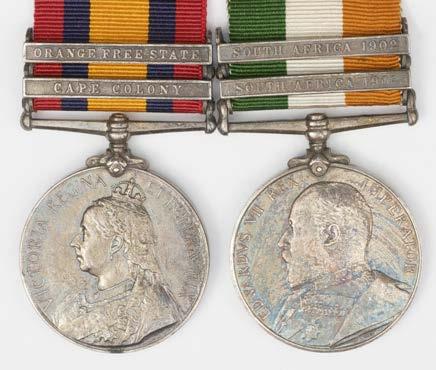
196* Pair: Lieutenant J. Black, M.I.D., Royal Lancaster Regiment, killed in action on the Western Front in 1917
Queen’s South Africa 1899-1902, 2 clasps, Cape Colony, Orange Free State (Lieut. J. Black. Rl. Lanc: Rgt.), King’s South Africa, 2 clasps (Lt. J. Black. Rl Lanc. Rgt.), very fine, with copied service papers
M.I.D. London Gazette: 15 May 1917
John Black was killed in action on 26 September 1917 whilst serving with the regiment on the Western Front, he is commemorated in St. Sever Cemetery, Rouen, France.
(2)
£250 - £300
£300 - £400
197* Prussia. Iron Cross, 2nd Class, hallmarked on the suspension ring, 45 x 45 mm, together with various medals including Territorial Efficiency Medal, G.VI.R., ‘Territorial’ scroll suspension (1448542 B.Q.M.S. J.S. Hodges. R.A.), very fine, India General Service Medal 1908-35, G.V.R., 2 clasps, Waziristan 1921-24, North West Frontier 1930-31 (4832 L-Nk. Faqir Mohd. 17 D.T.T.Coy, 1953 Coronation Medal, Russia, Order of the Red Star, silver and enamel, reverse engraved ‘260219’ with screw plate, Russia, Order of the Patriotic War, later issue, reverse engraved ‘974092’, with screw back, France, Saint Helena 1792-1815 medal and other medals (10)
£100 - £150

198* Six: Sick Berth Attendant S.J.J. Beasley, Royal Navy
a) The Order of St. John of Jerusalem, Knight of Grace’s breast badge, silver and enamel, with heraldic beasts in angles b) 1939-1945 Star
c) Atlantic Star
d) Africa Star with North Africa 1942-43 clasp
e) War Medal
f) Service Medal of the Order of St John, with three Additional Award Bars (40285 Div/Off. Sidney J.J. Beasley. Warwick. 1948), good very fine, swing mounted as worn, with an album of WWII photographs showing the recipient in uniform, H.M.S. Formidable and various aircraft including Albacores, Martlets, Fulmars, Swordfish, Sea Fires, a fighter pilot with his pet monkey in the cockpit window etc, with a typed diary from 17 October 1940 to 17 September 1941, various entries including ‘We left on the 6th May with a very important convoy to Malta, this was very exciting because owing to the fact that we had helped to evacuate Greece we were in a danger area all the time, we had shot down 6 planes up to the 9th and just as I am writing this there are depth charges bring dropped everywhere, so it is obvious there is a submarine somewhere...’ , plus certificates including H.M.S. Glasgow ‘A Proclamation’ and other related items
Sidney John James Beasley joined the Foleshill and Longford St Johns Ambulance Division in 1935. He held many posts including Assistant County Secretary for Warwickshire and Secretary of the Coventry Centre in 1969. Beasley served during WWII as a sick-berth attendant in H.M.S. Formidable, a Red Cross identity card dated 5 May 1944 is included with the lot. (6) £150 - £200
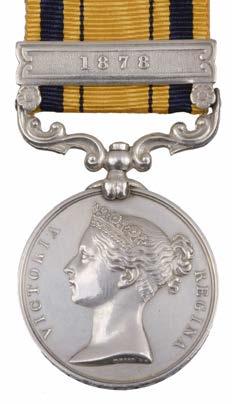
199* South Africa Medal 1877-79, 1 clasp, 1878 (1231. Pte W. Harvey, 80th Foot.), good very fine, with copied roll
Clasp confirmed. (1)

£400 - £600
200* South Africa Medal 1853 (John Gilmore 91st Regt), edge bruise, very fine, with copied roll
John Gilmore took part in the 2nd and 3rd Kaffir wars. (1)
201* South African Medals
£200 - £300
Four: Private R.G. Home, 1st Royal Natal Carbineers 1939-1945 Star, Africa Star, War Medal, Africa Service Medal ‘4249 R.G. Home’, good very fine, mounted as worn
Five: Corporal R.M.A. Tomlinson, The Cape Town Highlanders 1939-1945 Star, Italy Star, Defence and War Medals, Africa Service Medal ‘8566 R.M.A. Tomlinson’, good very fine
Four: Gunner H.J. Wagenaar, South Africa Artillery 1939-1945 Star, Africa Star, War Medal, Africa Service Medal ‘104446 H.J. Wagenaar’, very fine
With detailed copied service papers for each group, plus a South Africa memorial brooch, the reverse numbered ‘4000’
Hermanus Johannes Wagenaar was severely wounded at Sidi Rezegh in November 1941.
Robert Gordon Home was wounded at Sidi Rezegh on 30 November 1941. (14)
£100 - £200
202* An impressive D.S.O. group to Captain Percy Wyfold
Stout, D.S.O., O.B.E., Royal Naval Volunteer Reserve, Later Machine Gun Corps, who was five times mentioned in despatches, and prior to his military career was an international rugby player, playing alongside his brother Frank for Gloucester and England, the brothers are particularly noted for being the first siblings to both score in an international match for England
a) Distinguished Service Order, G.V.R., silver-gilt and enamel with top bar
b) The Most Excellent Order of the British Empire, O.B.E. (Military) Officer's 1st type breast Badge, London 1919
c) 1914-15 Star (Lieut P.W. Stout. R.N.V.R.)
d) British War and Victory Medals with M.I.D. oakleaves (Capt. P.W. Stout.)
e) Egypt. Order of the Nile, 4th class breast badge by Lattes, silver and enamel with rosette on ribbon, an attractive tarnished tone throughout, very fine or better, together with a large collection of research
See lot 203.
D.S.O. London Gazette: 26 March 1917 T/Lt (A./Capt.) Percy Wyfold Stout, 11th L.A.M. Bty., Motor M.G. Corps
Near Gaza
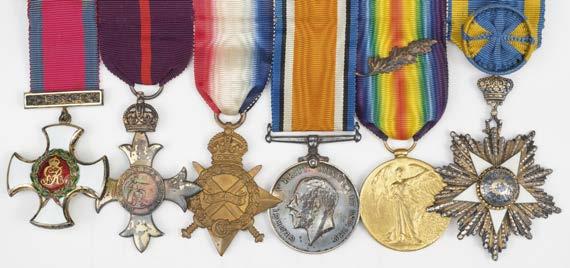
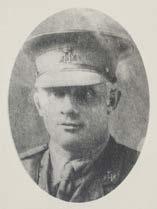
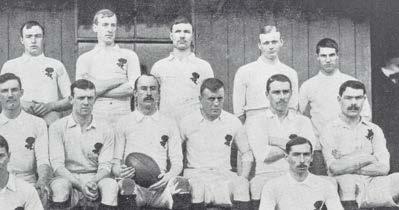
'For conspicuous gallantry and devotion to duty. At a critical moment, when a number of armoured cars were in danger of being cut off, he led the attack to their relief, and after two hours of heavy fighting gained the objective, after inflicting heavy losses on the enemy'.
O.B.E. London Gazette: 1 January 1919.
Percy Wyfold Stout (1875-1937) excelled in almost every sport he could. He played for Gloucester AFC, Gloucester City Cricket Club, and with international distinction at Gloucester Rugby. He was born in Barnwood Gloucester in 1875. His father William was a professional rower, and Percy was one of several siblings to play at a high profile, notably alongside his brother Frank (see lot 203).
He made his first debut for Gloucester AFC aged 16 where he became the first man to score 20 goals in a season. He became the club's all-time record appearance holder and goalscorer, being described in the Gloucester Journal as 'one of the best, if not quite the very best centre forward ever called upon to wear the black and white shirt of Gloucestershire FA'.
In 1895 Percy switched to rugby union playing for Gloucester Rugby alongside his brother Frank and from 1898 the brothers played five times for England Rugby, including away at Scotland, Ireland and Wales, the latter saw both brothers score a try, and this was the first time that any brothers had both scored in an international match for England.
Percy continued playing rugby until 1900 when he retired from sport and moved to Cairo to become a stockbroker. Percy joined the army on the outbreak of WWI and was commissioned 2nd Lieutenant in 13th Reserve Regiment of Cavalry. He relinquished his commission in 1915 and later that year he was promoted to Lieutenant in the R.N.V.R. where he served in the Armoured Car Squadron, R.N.A.S. He transferred to the Machine Gun Corps in 1916 and served in Egypt from 1917 he was mentioned in despatches five times. After the war, Percy returned to Cairo to resume his career as a stockbroker, becoming a director of the Egyptian Delta Land Co and the Anglo-American Nile. Percy died in Marleybone, London in 1937 aged 61. (7)
203* The Military Cross awarded to Lieutenant Frank Moxon Stout, 20th Hussars Later Machine Gun Corps, who prior to his military career was an international rugby player playing alongside his brother Percy for Gloucester and England, the brothers are particularly noted for being the first siblings to both score in an international match for England
Military Cross, G.V.R., reverse privately engraved 'Lt F.M. Stout 1916', toned, good very fine in case of issue, with copied research
See lot 202.
Military Cross, London Gazette: 15 March 1916
'On hearing that a number of the enemy were working close to the British lines. Temporary Second-Lieutenant Frank Moxon Stout, attached to the 20th Hussars, took Corporal G. Tester, of the same regiment, and a light machine gun to a saphead. Then having mounted the machine gun, the corporal stood on the lieutenant's back and opened fire on the enemy, who were thirty or forty yards away. He fired 150 rounds while exposed to a heavy return fire, and then got down to allow Second-Lieutenant Stout to mount on his back and open fire in turn. Next morning fourteen of the enemys dead were counted. For his conspicuous gallantry and resource Second-Lieutenant Stout was awarded the M.C., and Corporal Tester was awarded the D.C.M. for his gallantry and good work.'
£1,500 - £2,000
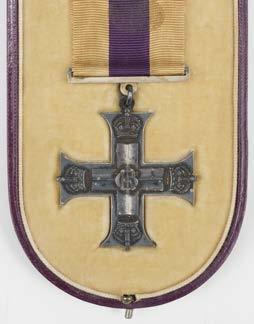

Frank Moxon Stout (1877-1926) was born in Barnwood, Gloucester. His father William was a professional rower and Frank was one of several siblings to play at a high profile, notably alongside his brother Percy (see lot 202). Frank played forward for Gloucester Rugby Club and Richmond. He played internationally for England and was selected for the British Isles on two tours in 1899 and 1903. In 1898 he and Percy played five times for England Rugby, including away at Scotland, Ireland and Wales the latter saw both brothers score a try and this was the first time that any brothers had both scored in an international match for England.
Frank served on the Western Front with the 20th Hussars from April 1915 and was promoted to Lieutenant in 1918, he was attested to the Machine Gun Corps. (1) £400 - £500
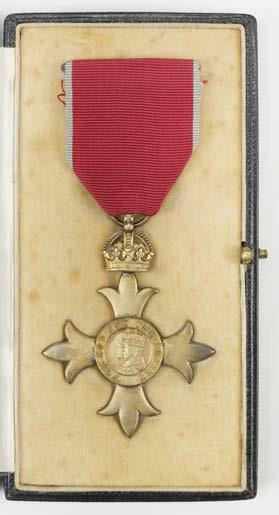
204* The Most Excellent Order of the British Empire, O.B.E. (Civil) Officer’s 2nd Type breast badge, silver-gilt, good very fine, in Royal Mint case of issue
(1)
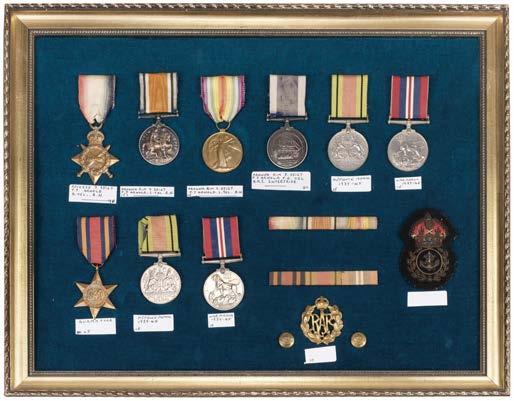
£100 - £150
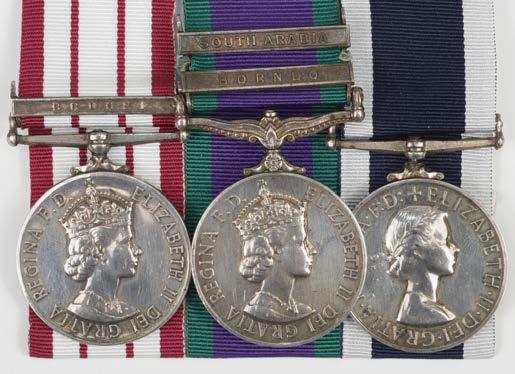
205* Three: Corporal C. Brooks, Royal Marines Naval General Service 1909-62, E.II.R., 1 clasp, Brunei (R.M. 20071 C. Brooks Mne. R.M.), General Service 1962-2007, 2 clasps, Borneo, South Arabia (RM. 20071 C. Brooks. Mne. R.M.), Naval Long Service & G.C., E.II.R. (P.020071T Cpl C. Brooks RM), 1st with surname officially corrected, very fine or better (3)
£200 - £300
206* Three: Petty Officer Telegraphist F.J. Arnold, Royal Navy 1914-15 Star (J.35167 F.J. Arnold, B. Tel., R.N.), British War and Victory Medals (J.35167 F.J. Arnold. L.Tel. R.N.), Naval Long Service Medal, G.V.R. (J.35167 F.J. Arnold P.O. Tel. H.M.S. Enterprise), very fine, presented on a display board with WWII Burma Star, Defence Medal (2), War Medal (2) and associated cloth badges, together with another display board comprising, WWII Pacific Star, France & Germany Star, Burma Star, Africa Star, Atlantic Star, Atlantic Star with copy Air Crew Europe clasp, WWI 1914 Star (1633 Pte. J.E. Puddle 5-Lond. R.), copy 1914 Star and clasp, 1939-1945 Star with copy Battle of Britain clasp, France & Germany Star, Africa Star with 8th Army clasp, variable condition (20)
£100 - £150
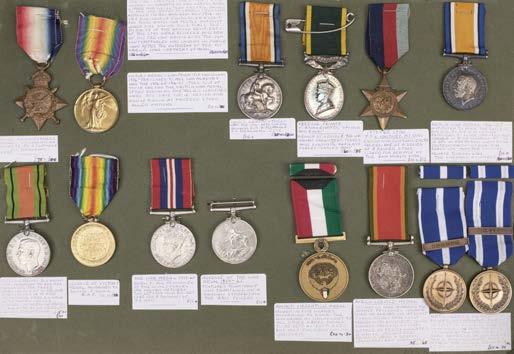
207* Three: Private H. Flippance, 1st Dragoons 1914 Star (5232 Pte H. Flippance. 1/Dns), British War and Victory Medals (1DN-5232 Pte. H. Flippance. 1-Dns.), presented on a card display board with various medals including Territorial Efficiency Medal, G.VI.R., with ‘Territorial’ scroll suspension (5382802 Pte. E.W. Bridgwater. Oxf. &. Bucks.), extremely fine and toned, British War Medal (4344. Pte. T. Cairns.Ches. R.), extremely fine and toned, together with another display board, with Pair: British War and Victory Medals (242156 2. A.M. P. Sands R.A.F.), good very fine plus various medals including British War Medal (2) (F.12248 A.M.1 R.N.A.S / S4-043600 Staff Sgt F.S. Hodson A.S.C.), Victory Medal (230309 Gnr C.W. Bradshaw R.A.), Hong Kong 1902 Coronation Medal, Battle of Jutland Tribute Medal etc (24)
£200 - £300
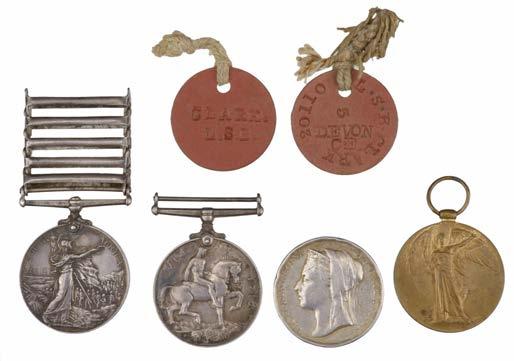

211* United States of America. A WWII D.F.C. group to H.L. Poulin, United States Navy, who was stationed at Kaneaka Bay, Hawaii during the attack on Pearl Harbour 7 December 1941 Distinguished Flying Cross, bronze, with original box of issue and ribbon bar, American Campaign Medal, World War II Medal, Asiatic Pacific Campaign Medal, plus Aviator’s Flight Logbook kept by Poulin for the period of 23 March 1943 to 3 December 1944, a Pearl Harbour 50th Anniversary Commemorative Medal, bronze, in original presentation case with card packaging plus U.S. Navy service hat with tally, with copied research and related copied photographs
D.F.C., 28 April 1944.
£70 - £100
208* Three: Private L.S.B. Clark, 83rd (Sharpshooters) Company, Imperial Yeomanry later Royal Engineers Queen’s South Africa Medal, 1899-1902, 5 clasps, Cape Colony, Orange Free State, Transvaal, South Africa 1901, South Africa 1902 (28134 Pte L.S.B. Clark. 83rd Coy Imp Yeo:), British War and Victory Medals (508299 Sjt. L.S.B. Clark. R.E.), very fine with identity tags, together with an unrelated Egypt 1882-89 medal, dated reverse (T. Westcott. S. Cook. 1 Cl. H.M.S. Invincible’, brooch mounted and in poor condition (4)
‘For extraordinary achievement while participating in sustained operational flight missions in the Southwest Pacific area from 13 September 1943 to 30 December 1943 during which hostile contact was probable and expected’. Henry Leo Poulin served with the Naval Aviation Patrol Squadron and was stationed at Kaneaka Bay, Hawaii. A copied newspaper report includes a photograph of Poulin under the headline “Youths from Waterville, and surrounding towns in Hawaii War in Pacific finds many local youths in action”.
(1)
£50 - £80
209* Three: Sergeant E.G. Ansley, South African Motor Cycle Corps 1914-15 Star (Pte E.G. Ansley, 8th Infantry), British War and Bilingual Victory Medal (Sjt E.G. Ansley. S.A.M.C.C.), very fine, swing mounted as worn (3)
£400 - £600
212* Waterloo 1815. A contemporary miniature dress medal, privately engraved in running script ‘Lt J.P. Gardener 1st Battn Ry B [?]’, steel clip and suspension ring, the ribbon with ornate top buckle, edge bruising and wear, good fine
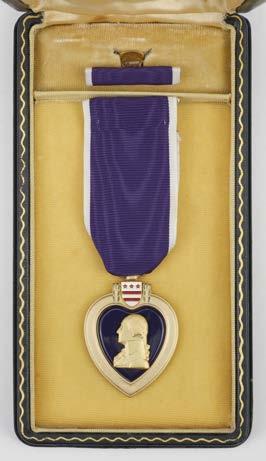
£100 - £150
210* United States of America, Purple Heart, gilt metal and enamel, extremely fine, in original case of issue with ribbon brooch (1)

Lieutenant J.F. Gardener served with the 1st Battalion 95th Regiment of Foot under Captain J. Leach’s Company at Waterloo. This company distinguished itself in the sand pits before La Haye Sainte. (1)
£400 - £600
213* Waterloo Medal 1815, original steel clip and suspension ring (George Johnston, Royal Artill. Drivers.), good very fine (1)

£1,000 - £1,500

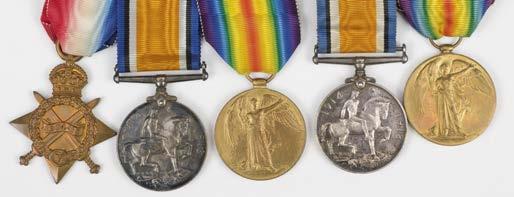
214* Three: Private W. Stringer, Northamptonshire Regiment
1914-15 Star (17659 Pte. W. Stringer. North’n R.), British War and Victory Medals (17659 Pte. W. Stringer. North’n.R.), extremely fine
215* Pair: Driver W.V. Knight, Royal Artillery
British War and Victory Medals (614576 Dvr. W.V. Knight. R.A.)
Pair: Driver W.C Slade, Royal Artillery
British War and Victory Medals (8016 Dvr. W.C. Slade. R.A.)
Special Constabulary Medal, G.V.R. (William London), War Medal, together with a collection of miscellanea including a Victorian horn beaker retailed by W. Thornhill & Co, New Bond Street, London, the rim with hallmarks for Thomas Johnson II, London 1881, with a silver plaque engraved ‘St Ives Athletic Sport, presented by Mrs Morrant Quarter Mile Race 1st Prize won by N.H. Marsh’, 13 cm high, another beaker but coopered oak bound in silverplate with vacant shield cartouche, 12.5 cm high, silver-plated nurses buckle and belt, Victorian 1889 silver crown, 1889 double florin and other items (a small box)
£100 - £150
Pair: Corporal H.C. Parker, Royal Irish Regiment British War and Victory Medals (10251 Cpl. H.C. Parker R. Ir. Regt), good very fine, mounted as worn with identity bracelet, regimental cap badge and related school medals plus a mixed collection of military cap badges, medal ribbons and miscellanea (1)
£100 - £150
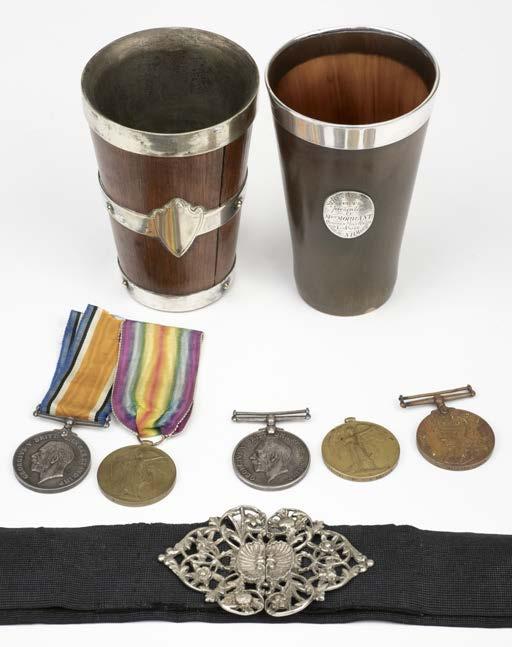

216* A WWII group of seven to Flight Sergeant T. Walker, Royal Air Force
1939-1945 Star, Africa Star with North Africa 1942-43 clasp, Defence and War Medals, these named ‘Boots’ style ‘F/Sgt T Walker’, General Service 1918-62, G.VI.R., 1 clasp, Palestine 1945-48 (561796 F. Sgt. T. Walker. R.A.F.), Long Service & G.C., G.VI.R. (561796 F. Sgt. T. Walker R.A.F.), good very fine, mounted as worn with card box of issue for the GSM, a photograph of the recipient, inscribed ‘T Walker Egypt (Desert) 1942 208 Sqn, transmission slip, RAF certificate of service and other original documents
Tom Walker was born in 1911, he served as an engine fitter in the RAF throughout WWII and retired from service in 1953. His certificate of service records that he completed courses for the Bristol engine course, Napier Jaguar, Jupiter Kestrel, Pegsasus Lynx, Merlin III and Merlin XX Major, his commanding officer wrote ‘he has always placed duty before pleasure or personal desire’.
(7)
£300 - £400
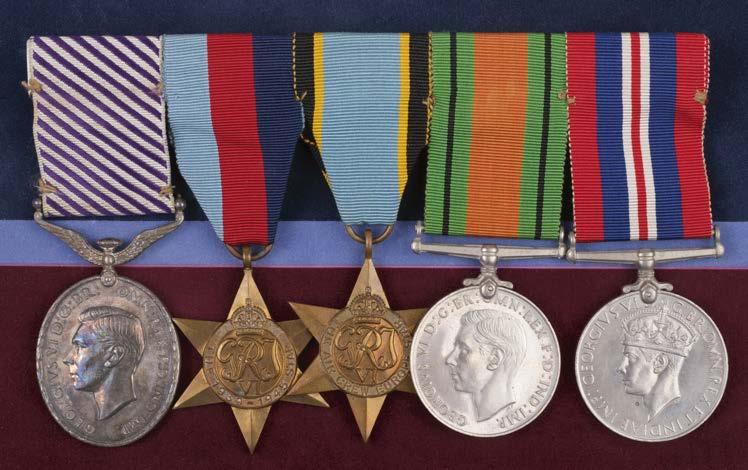

217* WWII RAF Medals. A WWII ‘1943’ D.F.M. group to Flight Lieutenant N.A. Beale, DFM, RAF
a) Distinguished Flying Medal, GVIR (751620. F/Sgt. N.A. Beale. R.A.F.)
b)1939-1945 Star
c) Air Crew Europe Star
d) Defence and War Medal, extremely fine and swing mounted as worn, together with a copied photograph of the recipient in full dress, framed and glazed plus Observer’s and Air Gunner’s Flying Log Book. commencing 7 July 1940 to 31 October 1945, type of aircraft flown 16 including Hawker Hart, Demon, Westland Wessex, Avro Five, D.H. Rapide, Avro Anson, Fairey Battle, Handley Page Hampden, Vickers Wellington, Halifax I & II, Vickers Wellington, Dakota and Fiesler Storch
D.F.M. London Gazette 10 September 1943
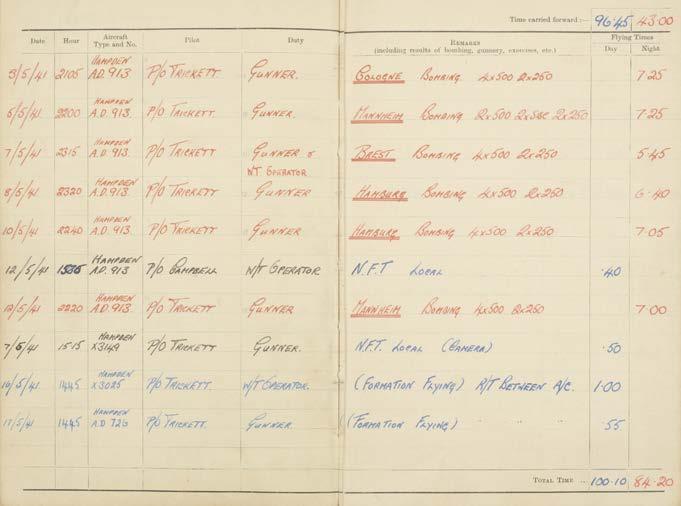
‘Flight Sergeant Beale as Wireless Operator / Air Gunner has completed in two tours of operations the splendid total of 53 offensive sorties involving 325 hours flying. During his second tour, he completed 20 sorties in 123 flying hours. These sorties have included visits to such heavily defended targets as Cologne, Essen, Duisburg and Berlin. On practically every occasion, the aircraft in which he flew successfully completed its mission and a good deal of the credit for this must go to him for his excellent work. He is a Wireless Operator in whom his crew have complete confidence. I consider that his fine record of achievement, which has been an inspiration to the rest of the squadron and to all who have ever flown with him, merits the award of the Distinguished Flying Medal.’
Norman Beale joined the Royal Air Force in 1940 and after finishing basic training he was assigned to RAF Cranwell where he qualified as a Wireless Operator. On successfully completing the course on 28th June 1940, Norman Beale was then assigned to various Operational Training Units where he received further advanced training as a Wireless Operator and qualified as an Air Gunner.
On 29th December 1940, he was transferred to 44 ‘Rhodesian Squadron, a front line unit operating with the Handley Page Hampden. Norman Beale finished his first tour of operations in October 1941, having completed a total of 34 operational sorties against targets in France and Germany.
After several assignments to various Operational Training Units during the remainder of 1941 and 1942, he began his second tour of operations with 102 Squadron, based at RAF Pocklington in Yorkshire, on 5th February 1943. He completed his last operational flight on 30th April 1943, his 21st with 102 Squadron, and his 55th in total, against the Ruhr city of Essen.
On 10th September 1943, the award of his Distinguished Flying Medal was announced in the London Gazette. Norman Beale finished the war as a Flight Lieutenant and left the Royal Air Force at the end of 1945.
(5)
£2,000 - £3,000
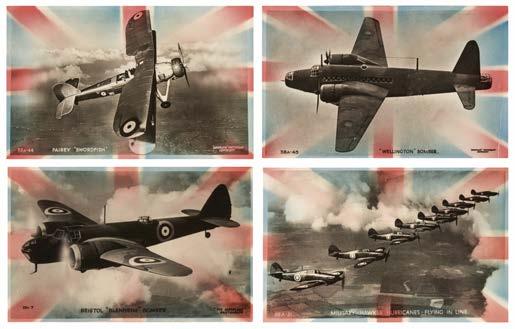


£100 - £150
218* Aircraft Postcards. A good collection of 127 WWII Valentine postcards, consisting of the various types of aircraft, each card carries the name of the aircraft depicted and is emblazoned with the Union Jack (1 binder)

219* Aircraft Prints. An impressive collection of 90 ‘Squadron Prints’, depicting a wide range of types in service with the RAF and USAF, all prints have multiple signatures, measuring 44 x 29 cm, many have authenticity notes confirming limited print runs (90)
£600 - £800
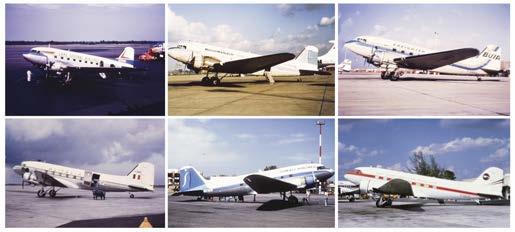
220* Aircraft Slides. A collection of 900+ 35mm colour slides, depicting the iconic Douglas DC-3 Dakota, mainly civilian images, although the collection does contain some military examples, taken at worldwide locations over the last 60 years (one box)
£100 - £200
221* Aircraft Slides. A large collection of approximately 10,000 original 35mm colour slides, comprising images taken from around the world, including USA, Canada, Far East, Australasia and Europe incorporating aircraft of all types – propliners/classics, warbirds, military, etc, displayed in plastic sheets and housed in 27 ring binders each one showing details of what particular type is included in that particular binder (27)
£600 - £800

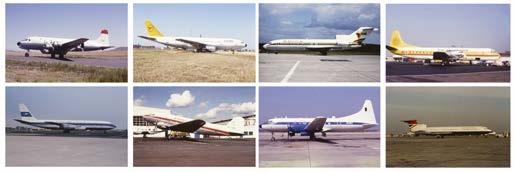
222* Airliner Slides. A comprehensive collection of approximately 7,000 35mm colour slides, taken mainly in the 1980s/90s although there are some that date back even earlier, worldwide coverage of the majority of major airliner types in service at the time (9 slide cases)
£300 - £400
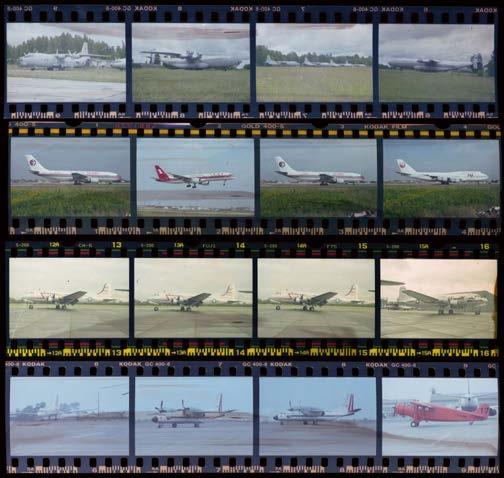
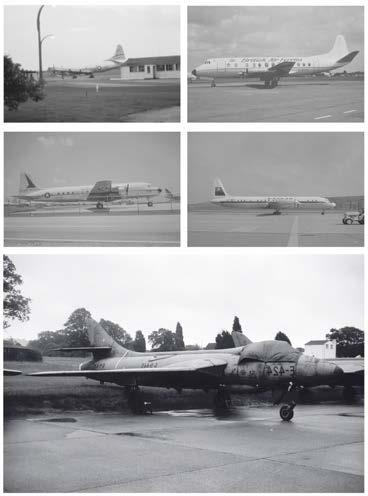
223* Aviation Negatives. A collection of approximately 20,000 mostly 35mm colour negatives, of both civilian and military aircraft taken at various locations around the world mainly during the past 40 years (a carton)
£300 - £500
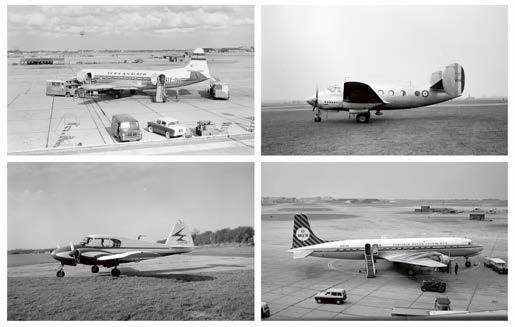
224* Aviation Negatives. A superb, private collection of original black and white negatives, comprising approximately 8,000 35 mm and approximately 1,500 3.5” x 2.5” negatives, the majority of images were taken in the UK during the 1960s and are of civilian aircraft, airliners, third-level and light aircraft, although there are some military examples, contained in 8 long storage albums, with indexed details of the type/registration in each strip, 29 small storage albums and 63 cardboard wallets (an archive)
£800 - £1,000
225* Aviation Negatives. Civil and Military aircraft negatives, a large unsorted collection of approximately 3,500 negatives, approximately 2,000 colour and 1,500 black and white dating back to the 1970s (1 box)
£200 - £300
226* Aviation Photographs. A collection of photographs relating to Flight Lieutenant Harry Reeves, D.F.C., 542 Squadron, including a black and white portrait photograph of Reeves in uniform with D.F.C. ribbon bar, 11 x 15.5 cm, 8 various service photographs including Spitfire and cockpit instruments, 52 Air Ministry aerial reconnaissance photographs (542 Squadron) circa 1944 including Le Havre on 5 June 1944, V1 Site “just bombed” on 30 April 1944, presented in a ring binder file, an album of newspaper cuttings relating to Vivian V.D. Hewitt’s biplane, circa 1908 and other related aviation ephemera (a carton)
£200 - £300
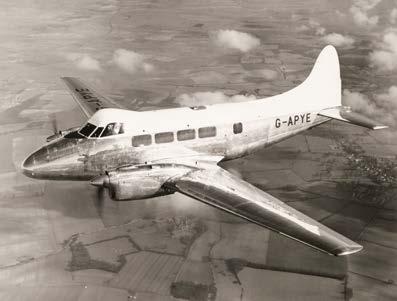
227* Aviation Photographs. A collection of approximately 1,250 manufacturers', press, air force and airline photographs, size mostly 8 x 6 ins, nearly all black and white (approx 1250)
£200 - £300
228* Aviation Photographs. A collection of approximately 1,100 manufacturers', press, air force and airline photographs, comprising approximately 800 black & white and 300 colour photographs, size mostly 10 x 8 ins (approx. 1100)
£200 - £300
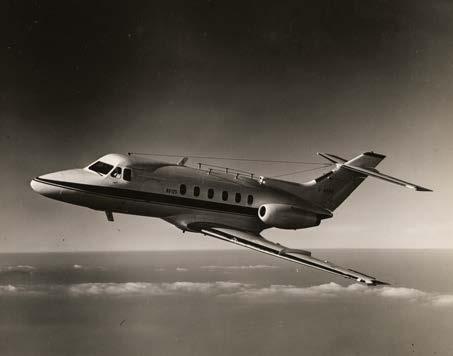
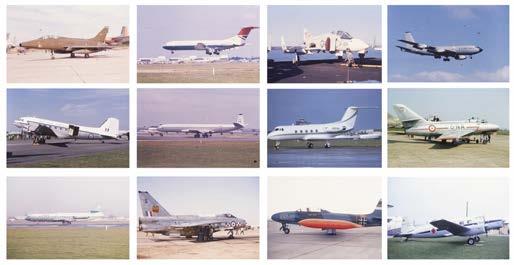

£200 - £300
229* Aviation Photographs. A collection of approximately 1,100 manufacturers', press, air force and airline photographs, comprising approximately 800 black & white and 300 colour photographs, size mostly 10 x 8 ins (1 box)
230* Aviation Photographs. A collection of approximately 12,000 post-war NATO aircraft photographs, featuring aircraft from Germany, France, Belgium, Netherlands, Italy, Denmark, Norway, Canada etc., from established photo houses such as MAP (Military Aircraft Photographs) or APN (Aviation Photo News), approximately 6,000 black & white photographs, 5.5 x 3.5 ins, and 6,000 colour, 6 x 4 ins (approx. 12,000)
£400 - £600

231* Aviation Slides. A miscellaneous collection of approximately 2,000 unsorted 35mm colour slides, a mixture of both civilian and military subjects, some dating back to the 1960s, shot at various locations around the world, together with: BAe 146 Archive. A comprehensive archive on the British Aerospace 146, 100+ photographs, various press releases, and other information along with the Flight Test Programme and Flight Development Engineer’s Report for the inaugural flight of G-SSSH on 3 September 1981 (2 boxes)
£100 - £150
232* Aviation Slides. A small collection of approximately 4,000 35 mm original colour slides, the majority taken in the UK in the 1970/80s, although there are some taken in the US and Europe during the same period, predominantly military (1 box)
£200 - £300
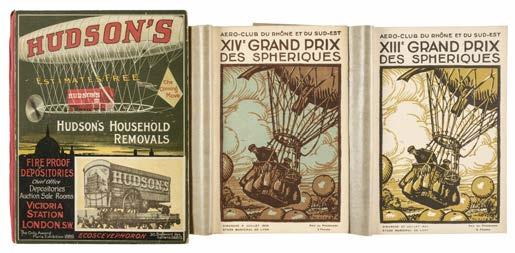
233* Ballooning. An large collection of approximately 70 items of ballooning-related ephemera, late 19th to late 20th century, including a number of postcards and envelopes from notable Balloon flights (first New Zealand Balloon Post 1965, 182nd year of balloon channel crossings 1967, balloon over Africa 1966 (also signed by Aeronaut John Boesman) and others), ballooning material from various publications (including Le Petit journal, Picture Post, Revue Aerienne), balloon contest material, menus, brochures, magazines, programmes, documents relating to Louis Godard (aero engineer and son of aeronaut Eugène Godard), photographs, signed itemsSteve Fossett, Bertrand Piccard, Brian Jones, and others, advertising material relating to the 1919 film ‘Dirigible’, books, colour and monochrome decorative prints, overall in very good condition, most items held in individual plastic wallets (approx. 70)
£100 - £150

234* Batchelor (John Henry, 1936-2019). An original pen and watercolour drawing, showing the workings of Gruman TBF Avenger (1942-1955) with pencil annotations, sheet size 52 x 75 cm, together with an oil on canvas showing an American aircraft nose with silver two-blade propeller and a mirror image of figures on the spinner, signed ‘John Batchelor’ lower right, sheet size 49.5 x 60.5 cm, 6 further sketches by the same artist, some related naval prints plus 12 preliminary pencil on card aircraft sketches, comprising, North American F.86 Sabre, Me.262, Northrop B-2, Vought F4-U Corsair, Panavia Tornado, Hawker Fury, Consolidated B.241 Liberator, Boeing 737/200, North American X-15, Vickers Vimy, Bell.UH-I.H ‘Huey’ and Early Experimental Zeppelin, all 15 x 21 cm
Provenance: John Henry Batchelor M.B.E., Aviation Artist (1936-2019). (24)
£100 - £150
235* Bristol Perseus. Air Ministry reports issued by the Engine Research Department, Aero Engine Department, Bristol Aeroplane Company Ltd, comprising 5 typed reports dated 23 December 1933, 22 June 1934, 18 August 1934, 14 February 1935 and 22 July 1935, each reporting on research running contract on Bristol “Perseus” Air Cooled Sleeve Valve Unit, numerous black and white photographs of cylinder barrel sleeves and pistols plus diagrams, 33 x 21 cm
The Bristol Perseus was a nine-cylinder single-row, air-cooed radial aircraft engine manufactured by the Bristol Engine Company starting from 1932. It was the first production sleeve valve aero engine.
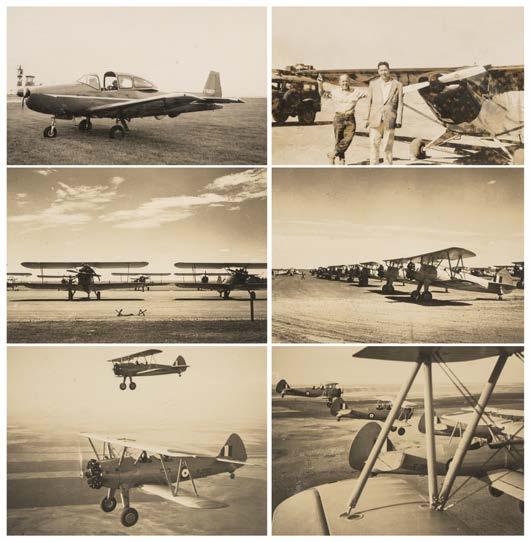
£100 - £200
The engine was fitted to the Short Empire flying-boats, Westland Lysander, Vickers Vildebeest, Blackburn Botha, Skua and ROC bombers. (1)
236* Brown (Stephen). Concorde - The Homecoming, artist proof 32/50 colour print, showing Concorde (G-BOAF) on her final journey to Filton, Bristol on 26 November 2003, signed in pencil by the artist and complete with two Concorde flight crews, comprising David Rowland (Pilot), Dick Routledge (First Officer), Paul Egginton (Flight Engineer), Derek Woodley (Pilot), Peter T Sinclair (First Officer) and Trevor Norcott (Flight Engineer), and additionally signed by the crew of the final voyage, Michael Bannister (Chief Concorde Pilot), Les Brodie (Pilot) and Warren Hazleby (Flight Engineer), sheet size 45.5 x 66 cm, mount aperture, framed and glazed, frame size 63 x 83 cm, with certificate of authenticity (1)
£100 - £150
237* Civil Aviation. A comprehensive collection of approximately 150 black and white civil aviation photographs and real photo postcards, circa 1950-90s, the photographs are mostly laid on card and captioned but the real photo postcards are loose, the photographs include Rolls Royce Tyne - Ambassador Flying Test Bed 15 x 20 cm, Handley Page Hermes, Avro Tudor Mv (scrapped at Stanstead, July 1959), Silver City BAC air to air, 19 x 23.5 cm, Armstrong Whitworth air to air, 15.5 x 20.5 cm, Viscount 700, Jetstream Cockpit with Decca Avionics Fit etc, the postcards include Silver City Airways Bristol Wayfarer, Bristol Super Freighters at Ferryfield circa 1957, BEA Viscount Airliner in Flight, B.O.A.C. Britannia plus several promotional brochures including Rolls Royce circa 1990s, all presented in a modern album, together with another album of British and American mono and bi-planes photographs circa 1940-90s (approx. 100), mostly laid on card, including N2S-3 Kaydet, Wichita dated 22 June 1943, 17 x 23 cm, Piper Cub F3, Hanworth 25 July 1938, 6 x 12.5 cm, others include Piper Navajo 300 at Gatwick Airport plus various promotional brochures including The Beechcraft Baron 58, Beechcraft King Air B200, presented in a modern album (approx. 250)
£300 - £500
238* Combat Report. Intelligence Combat Report from No. 11 Group to Headquarters, Fighter Command, 16 February 1941, for an incident which occurred between Ford and Bognor on 3 February 1941, two aircraft of 302 (Polish) Squadron were ordered to “scramble”, two Ju88 were approaching Tangmere from the North, the interception took place over Bognor resulting in both being destroyed, printed on A4 paper, together with another combat report from a Gunnery Officer of 106 Squadron to 5 Group Gunnery Officer dated 24 August 1943, the report states that on the night of 23/24th August 1943, Lancaster “G” EE.191 was detailed to attack Berlin, whilst on the homeward bound journey a Ju88 was sighted after an exchange of gunfire, the Ju88 was seen to catch fire and was last seen crashing into the sea and burn for some time, the report is printed in A5 paper and signed in ink by the Gunnery Officer of 106 Squadron (1)
£100 - £150
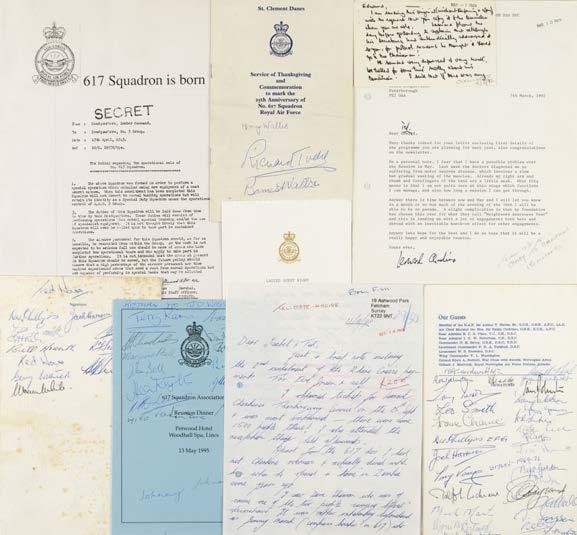
239* Dambusters Autographs. An archive of letter all signed by veterans of 617 Squadron to Squadron Leader Ted Wass, 617 Squadron Association Secretary, the letters circa 1992-95, comprising Dambuster veterans, Ken Brown (3 letters), Basil Feneron (compliment slip), Joe McCarthy, Les Munro, Steve Oancia, Len Sumptner (1 letter), Daniel Walker (2 letters), plus Tirpitz veterans and other members of the squadron including Frank Appleby, J.D. Barnes-Moss, Donald A. Bell, Roy Brand, Frank Cardwell, Donald H. Cheney, Leonard Cheshire, Joe Dacey, Danny Daniel, Trevor Davies, J.M. Dunscombe, Basil Fish, Benny Goodman, Bill Gordon, Loftus Hebbard, Archie Johnstone, Arthur Joplin, Terry Kearns, Nick Knilans, Jack Lammas, John Leavitt, Alex McKie, Alan Quinton, Bill Reid, Frank Richards, George Riley, Les Smith, Ken Sumner, James Tait, Arthur Ward, Gray Ward, together with approximately 35 Reunion Dinner Menu Cards, many signed including Petwood Hotel, Woodhall Spa, 13 May 1995 with 14 signatures including Johnny Johnson, Les Knight, John Bell and Basil Fish, another for 19 May 1968 signed by Barnes Wallis, Mary Wallis and other related ephemera
Provenance: Squadron Leader Edward “Ted” Wass, thence by family descent. Squadron Leader Edward “Ted” Wass was the 617 Squadron Association Secretary. He served during WWII with 617 Squadron as a gunner in 1944. Wass took part in two raids on the Tirpitz, including the one in which it was sunk on 12 November 1944. He also took part in a number of high-profile operations, usually alongside Squadron Leader Tony Iveson. Wass was forced to bale out over Germany in January 1944 and spent the remainder of the war in a POW camp. The letters and related items in this lot reflect his many years with the association where he was known to treat members with the greatest courtesy and efficiency.
(a box file)
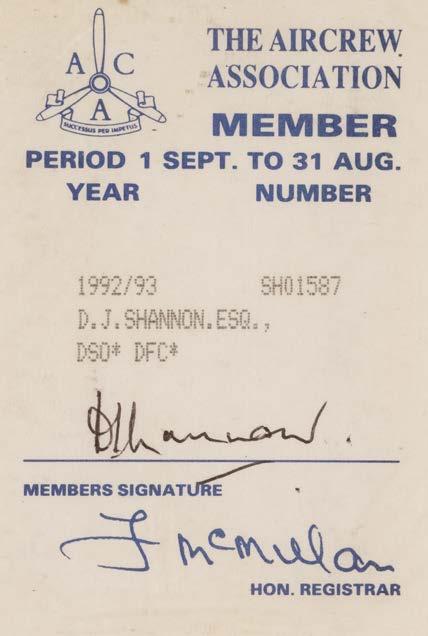
240* Dambusters Raid. The Aircrew Association Members Card Belonging to Squadron Leader David “Dave” John Shannon, D.S.O. & Bar, D.F.C. & Bar, issued for the period of 1 September 1992 to 31 August 1993, printed D.J. Shannon. Esq., DSO* DFC*, and signed in black ink by Shannon, 9 x 6.5 cm
David “Dave” John Shannon, D.S.O. & Bar, D.F.C. & Bar (19221993) joined the Royal Australian Air Force (RAAF) in 1941 and learned to fly under the Empire Air Training Scheme. After further training in the United Kingdom, was posted to No.106 Squadron, RAF, flying Avro Lancaster. He was awarded the D.F.C. in January 1943. In March 1943 Shannon was selected by Wing Commander Guy Gibson, to join the newly formed No.617 Squadron for Operation Chastise better known as the Dambusters Raid on 16/17 May 1943. Shannon was among a group of Lancasters led by Gibson in assaults on the Möhne and Eder Dams. Shannon along with Henry Maudsley and Les Knight was successful in delivering his bouncing bomb on the Eder Dam which ultimately destroyed the dam. He was awarded the D.S.O. Following the raid, he continued to fly with the squadron until October 1944, during which time he was awarded the second award bars for the D.S.O. and D.F.C. Shannon retired from service at the end of the war with the final rank of Squadron Leader.
(1)
£300 - £400
241* Dirigible. US 1-sheet film poster, [1931], rerelease 1949, colour lithographic poster, folds as issued, 104 x 69 cm, fine, framed and glazed. frame size 112 x 76 cm
Rare poster for this Zeppelin air aviation adventure, which was one of Frank Capra’s first major successes. The film starred Jack Holt, Ralph Graves, Fay Wray and Hobart Bosworth (who was seriously injured during the production when he placed dry ice in his mouth to simulate cold breath).
(1)
£700 - £1,000
£100 - £150
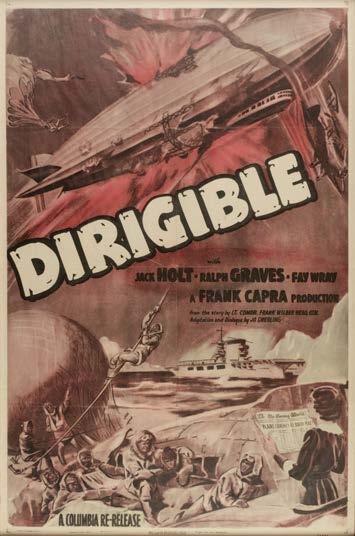


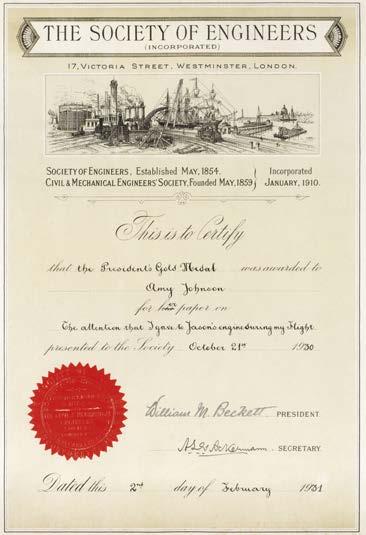
245* Johnson (Amy, 1903-1941). The Society of Engineers, for the President’s Gold Award issued to Amy Johnson “The attention that I gave to Jason’s engine during my flight” presented to the society on 21 October 1930, signed in ink by President William M. Beckett and Secretary A.S.E Ackermann, dated 2 February 1931. with officially stamped red seal, 45.5 x 34 cm, rolled, light spotting and edges slightly frayed
Amy Johnson C.B.E. (1903-1941) was the first woman to fly solo from London to Australia in 1930, achieving worldwide recognition.
Her first aircraft was a secondhand de Havilland DH.60 Gipsy Moth which she named “Jason” after her father Lord Wakefield’s business trade mark. On 5 May 1930 she flew Jason from Croydon Airfield and landed in Darwin Northern Territory on 24 May, she had covered a distance of 11,000 miles.
£100 - £150
242* Gibson (Guy, 1918-1944). The Flying Log Book No 2 of Wing Commander Guy Gibson, VC, DSO, DFC (facsimile), a good hardback bound facsimile of Gibson’s Royal Air Force Pilot’s Flying Log Book, published by After the Battle magazine, London, 1976. The facsimile of Gibson’s second log book covers the period 1940-44 and therefore includes his entry for Operation Chastise. Bound in blue boards with a facsimile of the original cover (1)
243* Group Captain Peter Townsend C.V.O., D.S.O., D.F.C. & Bar. A black and white group photograph (reprint), signed lower left by Peter Townsend O.C. 82 Sqn, 16.5 x 22 cm, together with a Royal Air Force Bomber Command Reunion Dinner Menu for 1 May 1982, signed by Sir Arthur T. Harris (Bomber Harris) 25.5 x 19 cm (2)
Johnson received her C.B.E shortly after her record and also made an Honorary Fellow of the Society of Engineers the following year was presented with the President’s Gold Medal for her paper on “The attention that I gave to Jason’s Engine during my flight”. She delivered this to the society at a dinner to commemorate her lone flight to Australia.
£50 - £80
244* John ‘Cat’s-Eyes’ Cunningham. A framed collection of signed documents, comprising an original letter written on ‘The De Havilland Aircraft Company Limited’ headed notepaper from Cunningham to E.G.A. Wilton, dated 6 December 1950, the typed letter thanks Wilton for asking him to be an Independent Umpire at the Aircraft Recognition contest for which Cunningham politely declines, also a 604 Squadron Association Reunion Luncheon invitation and menu dated 2001 and signed by Cunningham and two further distinguished pilots, frame size 65.5 x 27.5 cm, together with two related books including Night Fighter by C.F. Rawnsley and Robert Wright, the forward written by John Cunningham and signed by Cunningham and dated 6 October 1980 (3)
She continued her flying career into WWII where she was a part of the Air Transport Auxiliary. On Sunday 5 January 1941 Amy left Blackpool in an Airspeed Oxford, which she was to deliver to RAF Kidlington, near Oxford. The aircraft mysteriously came down off course in the vicinity of Herne Bay in the afternoon and she crashed into the Thames estuary. Her body was never discovered and the exact details of her death are still unclear.
Amy Johnsons’ beloved Jason is on permanent display in the Flight Gallery of the Science Museum in London. An interesting point to make regarding this certificate is that “he” has been omitted with “she”, an amendment which would have been unheard of at the time!
£100 - £150
(1)
£300 - £500

246* WWI Logbook. A WWI ‘casualty’ logbook kept by Lieutenant John Arnold Spilhaus, 70 Squadron, Royal Air Force, commencing 26 May 1917, final entry 2 August 1918, together with Officer’s Record of Services book, General Index Map of the Western Front, letters to home written in the last two months or so of his life, 3 maps of France detailing aerial combat activities, original and copied photographs including one of Spilhaus, plus log book transcripts, RAF Museum and 70 Squadron correspondence and other related items
John Arnold Spilhaus was born in Montrose, Wynberg, Cape Province, South Africa. He served during WWI with 70 Squadron, Royal Air Force and was killed in action on 4 September 1918. Spilhaus is commemorated in the Douai British Cemetery, Cuincy, France. The log book included in the lot gives a detailed insight into Spilhaus’s service for example the final entry on 2 August 1918 ‘a great morning celebrated Hedas’s birthday by bombing the hell out of German aerodrome beyond Lille. Dropped 240-25 lb bombs fired thousands of Buckingham. Set 3 hangars alight.’
On 9 September 1918, 70 Squadron were engaged on an offensive patrol near Écaillon, 5 miles east of Douai, they were attacked by around 30 enemy aircraft, primarily from Jasta 26. Outnumbered, 70 Squadron had 8 aircraft shot down. They managed to claim two Fokkers but three pilots were shot down and killed including Spilhaus and five others shot down and taken prisoner.
(1)
£300 - £500

247* Logbook. A WWII RAF Pathfinder’s logbook kept by Sergeant Brian. E.B. Harris, D.F.C., 627 Squadron, commencing 19 January 1942, final entry 7 February 1946, a total of 66 operations, flying time 624hrs25mins, type of aircraft flown, Commodore, Anson, Wellington III, Stirling I, Oxford, Mosquito IV and XX, the logbook is additionally annotated by Harris, together with several related books including At First Sight, A Factual and Anecdotal Account of No. 627 Squadron, Royal Air Force 1943-1945, researched and compiled by Alan B. Webb, ex “A” Flight, with presentation copy inscription to Brian E.B. Harris, D.F.C., plus Kiwis Do Fly, New Zealanders in RAF Bomber Command by Peter J. Wheeler, the title page with 19 signatures including the last surviving pilot of the Dambusters Raid Les Munro, signed in 2010
D.F.C. London Gazette: 17 April 1945
Brian Edward Barton Harris, D.F.C. was born in Sidcup in 1920, he was educated at Bassetts School, Farnborough and Sevenoaks School. Harris joined the RAF in 1941 and initially trained in Canada and the U.S.A. From 2 December 1942, he served on Stirlings with 15 Squadron at Bourn and then on Mosquitos at Oakington with 627 Pathfinders Squadron from 18 February 1944.
The recommendation for the D.F.C. states
‘Flying Officer Harris is an excellent Navigator who has made 66 sorties and completed his second tour.
As a Navigator in a Stirling Squadron, this Officer completed his first tour of operations comprising 26 sorties, including attacks against Berlin, Hamburg, Turin and Essen. His standard of navigation was of a high order throughout the tour.
In Mosquito aircraft Flying Officer Harris has carried out 40 attacks, initially in the small force regularly attacking the most heavily defended targets in Germany. On many of these targets Flying Officer Harris’s aircraft was subjected to concentrated flak and searchlight opposition, he remained unmoved and his calmness and efficiency in action proved invaluable to his pilot.
Latterly this Officer has been a member of the Marking Force employed by No.5 Group for the low-level marking of enemy targets. He has taken part in the recent highly successful attacks on such heavily defended targets as Stuttgart, Dortmund-Ems Canal, Darmstadt and the dykes at Walcheren.’ (1)
£200 - £300
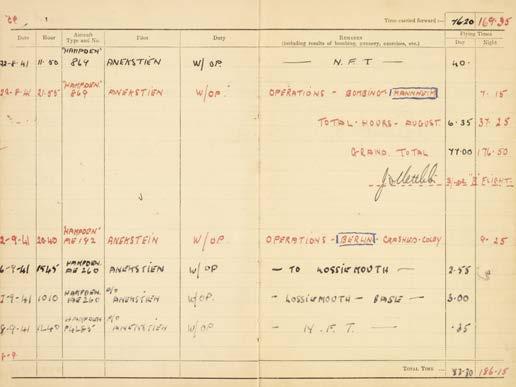
248* Logbook. A WWII Observer's and Air Gunner's Flying Log Book kept by Flight Lieutenant D. Walker, 44 Squadron, Royal Air Force, commencing 11 September 1940, final entry 29 March 1945, an astonishing 51 operations including bombing raids over Berlin, Dusseldorf, Cologne, Milan, Genoa, Bay of Biscay atc, Walker flew 411hrs01mins and served in 11 aircraft including Anson, Hampden. Oxford, Wellington and Lancasters (1)
£600 - £800
£400 - £500
249* Logbook. A WWII Flying Log Book for Navigators, Air Bombers, Air Gunners and Flight Engineers kept by E. Lyons, 106 Squadron, Royal Air Force, commencing 31 October 1944, final entry 12 June 1945, detailing 12 operations, together with students notebook belonging to Lyons, includes handrawn diagrams of Lancaster III bombers and instruments etc, a black and white 106 Squadron group photograph featuring Lyons, plus Instructors’ Handbook of Advanced Flying Training, 1st edition, May 1943 (3)
250* Logbook. A WWII Observer’s and Air Gunner’s Flying Logbook kept by Sergeant R.E. Newbold, 355 Squadron, Royal Air Force, commencing 24 April 1943, final entry 18 September 1945, the logbook records service in Liberator III’s based in India, detailing 27 operational missions against targets in Burma and Thailand from November 1943 to October 1944 including boming “He-Ho Airfield” on 4 February 1944 and Bangkok Railway Stations etc, a group photograph is glued on one of the pages featuring Newbold and other squadron members, all captioned in ink, with No. 355 Squadron Sergeant’s Mess card, Air Gunner’s cloth wing and enamelled squadron badge
Provenance: DNW (now Noonan’s), 22 September 2000, lot 490. (1)
£300 - £400
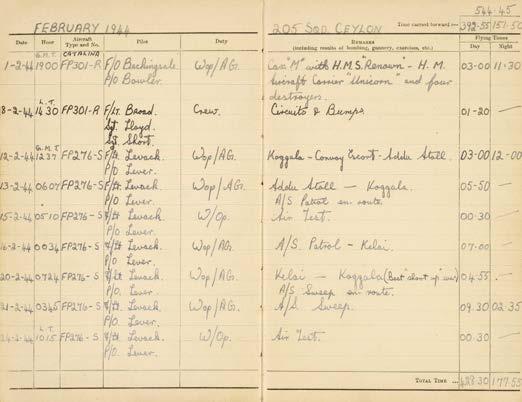
252* WWI Pilot’s Flying Logbook. Royal Flying Corps logbook kept by Lieutenant W.H. Crundall, Reserve Squadron, commencing 3 August 1916, 24 Reserve Squadron (M.F.L.H. 6712), 6 September, 38 Reserve Squadron, Rendcomb (BE.8.A.) 3 June 1917, 62 Squadron, Filton (BE.2.E.), final entry 26 June 1917, total time in the air 81 hours 23 minutes
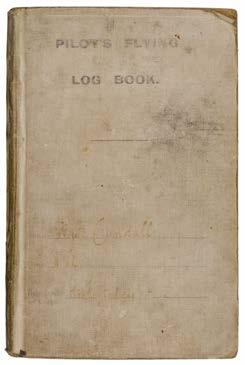
The log book is solely for UK service and has no overseas service. Mostly training around the South West with various remarks, for example ‘stopped 5 mins at Upavon & 45 mins at Netheravon. On returning, lost way at Brinkworth, landed to ask way, restarted successfully. Total time in air outward & return, 2 hours.’
Lieutenant W.H. Crundall lived at 81 Marchmont Street, London and served during WWI with the Royal Engineers before joining the Royal Flying Corps. (1)

£70 - £100
251* Logbook. A WWII Observer’s and Air Gunner’s Flying Log Book kept by Wireless Operator H. Smith, 205 Squadron, Royal Air Force, commencing 18 August 1942, final entry 12 July 1946, a full tour logbooks having flown 1555hrs 50mins, serving in Dominie, Proctor, Botha, Anson, Oxford, Catalina PBY5, II, IV, Fox Moth and Rapide, Smith served with 205 Squadron from 28 February 1943 to 15 September 1944 where the Catalinas flew anti-submarine and air-sea rescue patrold out of Koggala, Sri Lanka, many U-Boat hunts are recorded in this full tour logbook (1)
£400 - £500
253* WWII Logbook. Pilot’s Flying Logbook kept by Group Captain C.E. Williamson-Jones, D.F.C., 209 (Flying Boat) Squadron, Royal Air Force, commencing 1 August 1935 (209 FB Squadron), final entry 21 November 1945, total flying time 1530hrs 45mins, a total of 34 individual aircraft ‘land planes’ flown including Maurice Farman, DH6, Bristol Fighter, Hawker Hart and Lysander, with a further 10 ‘seaplanes’ flown including Saunders R24/31, Supermarine R24/31 and Singapore, together with a large envelope addressed to Group Captain C. Williamson-Jones DFC, RAF’ containing a portrait photograph of Williamson-Jones in RAF uniform, 20 x 14.5 cm, black and white photograph air to air of Hawker Tempest II PR533, 24 x 29 cm, various legal documents including his last will and testament
D.F.C. London Gazette: 21 September 1918 Lt/T/Capt. RAF (Manchester Regiment)
‘This officer has completed over 50 successful G.B. shoots, frequently under adverse weather conditions, and in the face of severe opposition from aeroplanes and anti-aircraft fire. The success of these operations was in many cases mainly due to his courage and perseverance. On one occasion, flying at 2,000 feet, he held up for a time the advance of hostile infantry.’
Clarence Edward Williamson-Jones was promoted to Group Captain on 1 September 1940. Much of his log book is UK based, however, he departed for New Delhi on 19 October 1943 and remained in India until 21 November 1945. (1) £200 - £300
254* Logbooks. Three WWI and Interwar logbooks kept by Wing Commander R.J. Divers, M.B.E. recording a 28year flying career from 1917-1945, logbook one commencing 15 September 1917 to 10 August 1921, logbook two 18 August 1921 to 24 August 1934, logbook three commencing 12 June 1936 to 13 May 1945, the first two logbooks are bound in half calf Morroco with gilt block lettering, 8vo, and the third is a standard Royal Air Force Pilot's Log Book
M.B.E. London Gazette: 2 June 1923
Rowland John Divers was born in 1897, he was commissioned in the RAF when it was formed on 1 April 1918. He served with No.8 Squadron in Iraq in 1924 and returned to England in 1926. He served as a Flight Lieutenant to RAF Staff College, Andover. He completed the Staff College Course, Camberley in 1934 and posted to No.3 (Indian) Wing, Quetta in 1935. Divers was promoted to Wing Commander in 1937 and retired from service in 1945.
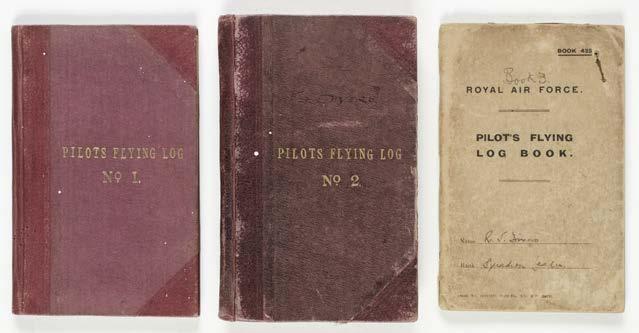
His citation reads ‘This officer has flown 345 hours giving dual instruction in aviation since he was posted to a Flying Training School in July, 1921. Both his ground work and his work in the air have been excellent. He is a very keen, efficient and trustworthy officer, and takes a great interest in his men.’ (3)

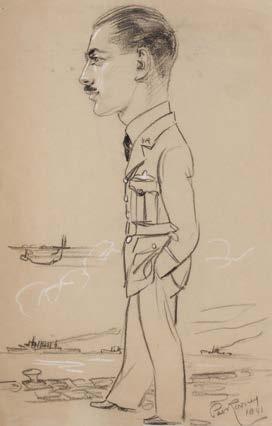
£300 - £500
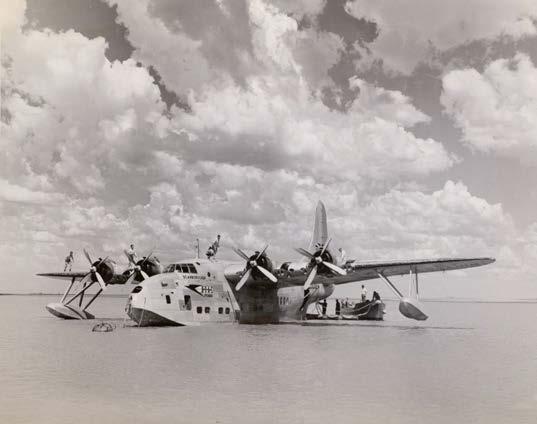
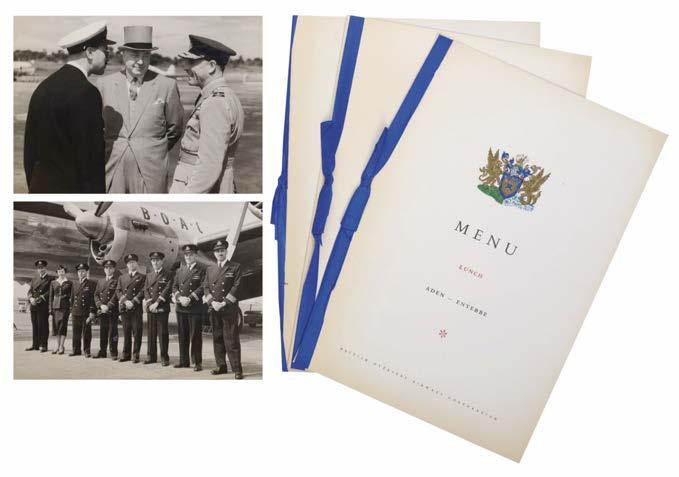
255* Logbook. An archive belonging to Wing Commander Kenneth Deadman, MID, Royal Air Force later a commercial pilot with British Overseas Airways Corporation (BOAC) and one of their “mileage millionaire” pilots having flown extensively abroad and at home including Short Flying Boats an Her Majesties first commonwealth tour in April 1954
Comprising Royal Air Force Pilot’s Flying Log Book, first entry 16 December 1940, training in Tiger Moths, after a period of training he left No.3. E & R.F.T.S. training school on 14 February 1941 and moved on to No1 Squadron, RAF Cranwell training in Oxford aircraft, completing his training on 7 March 1941. From 13 June 1941, he was training on Botha and Anson at No.3. School of General Reconnaissance, followed by further training at different locations throughout until 27 November when he joined 240 Squadron at Loch Erne, Northern Ireland, he flew Catalina before embarking for India on 20 June 1942, he writes in his log book “first time abroad”, he undertook various operational flights, mostly convoy escort and lists them as “Peeping Tom, on 4-8 February 1943 he was on operations from Addu Atoll in Maldives in support of troops ship convoy from Europe to Australia. In August 1943 he was posted to 225 Group Headquarters for Squadron Leader training at Bangalore, he flew Hornet Moth, Anson, Fairchild Catalina and Dakota. On 6 July 1944, he was seconded to British Overseas Airways Corporation (BOAC) for flying duties at Karachi, India. His logbook summarises his service for the period of 16 December 1940 to 8 July 1944 as having flown in Flying Boats a total of 941hrs50mins with 625hrs55mins on operations. The final entry in this log book is on 9 December 1945 having been flying on the “Horseshoe Route” from Durban-Cairo-Karachi-Cairo-LagosCario-Durban with BAOC.
Three further civil log books for the period of August 1944 to 31 December 1947, 1 January 1948 to 31 December 1953, 1 January 1954 to 28 August 1961, he flew a range of aircraft including Short “C” Class, Sunderland, Plymouth and Solent Class flying boats. Deadman was also on H.M. The Queen’s first Commonwealth Tour flight from Aden to Entebbe, Uganda from 25 to 27 April 1954 (Canadair C4 “Argonaut”), three original menus and photographs showing the Queen are included in the lot A final log book is for the period of 31 August 1961 to 12 December 1964 and covers his civil flying period with BOAC flying Comet 4 and VC10. Deadman retired from service on 31 December 1964 having flown 15,298hrs10mins, the lot includes an extensive collection of newspaper cuttings, black and white photographs from WWII service to flying boat and BOAC service, a Flight Navigator’s Licence, Flight Radio Operator Certificate of Competency in Radiotelephony, telegrams, invitations, menus, WWII mentioned in despatches certificate dated 1 January 1945, BOAC scarf and cigarette case, navigational computer, Imperial Airways “Empire” Class flying boat black and white photograph, 18.5 x 27 cm and many more related items, all contained in an old suitcase (1) £500 - £800

256* Logbooks. A WWII Mosquito Night-Fighters Logbooks kept by Flying Officer / Navigator Peter Williams, 604 Squadron, credited for two aerial victories logbook 1, (unsigned personal copy), commencing 28 May 1942, No 6 A.05., Staverton Gloucester (Anson), final entry 21 September 1945 “A” Flight G.C.A. Unit, Atherstone, Warwickshire (Wellington) logbook 2, officially signed by the commanding officer, commencing 28 May 1942, No. 6. A.O.S., Staverton, Gloucester (Anson), various training at 62. O.T.U., 54. O.T.U., 3 January 1943 joined 604 Squadron at Predannack, Cornwall (Beau I), 3 February 1943, 301 F.TU., Lyneham, Wiltshire, 13 August 1943 rejoined 604 Squadron in Scorton, Yorkshire (Beau I & IV), 7 September 1943 (Mosquito XIII) “operational”, 5 June 1944 “reserve for D -I Night Patrols”, 13 June 1944, Operation Neptune “shipping patrol (Ventnor (H.L) He177 destroyed 17 m E.N.E. of Barfleur (swastika emblem), 1 August 1944 “fighter pool 2 then to fighter pool 1, Junkers 188 destroyed 15m S.S.W. of Caen” (swastika emblem), final entry 21 September 1945, service in 19 type of aircraft, total flying time day and night 789hrs35mins, the second logbook is very comprehensive and has many later annotations by Williams and paperwork including related newspaper cuttings reporting on Williams aerial victories, two original combat reports, a “Goolie Chit” issued in February 1943 for the use of Arabic language plus 15 WWII airman’s maps for United Kingdom and Northern Europe
Flying Officer Peter Charles Williams was a native of Golders Green, London. He was educated at Haberdashers’ Aske’s School, Hampstead before joining the Royal Air Force in 1941. A newspaper article dated 30 March 1943 reports ‘It was soon after D-day when his squadron, the first night-fighter unit to fly from a landing strip on France, was engaged in giving night air cover to our troops fighting inland from the beaches, that Williams helped his pilot to destroy a four-engined Heinkel 177 over the sea. In August came his second victory, when a Ju. 188 fell to the Mosquito’s guns. Flying Officer Williams and his pilot Flight Lieutenant F.C. Ellis of West Ealing, were latterly the only all-Middlesex crew flying with the County of Middlesex Squadron.’ (2)
£300 - £500
257* Luftwaffe Airman’s Map. Karte des Deutschen Reiches (Map of the German Empire), 1:100000, dated August 1941, an incredibly detailed map printed in a soft charcoal grey, with official Luftwaffe stamp, 72 x 82 cm (1)
£70 - £100
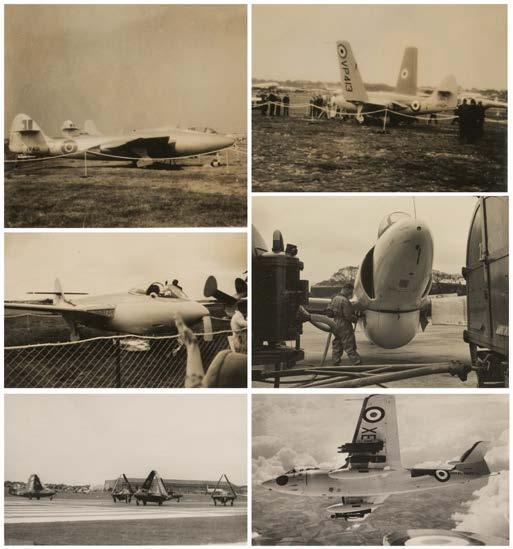
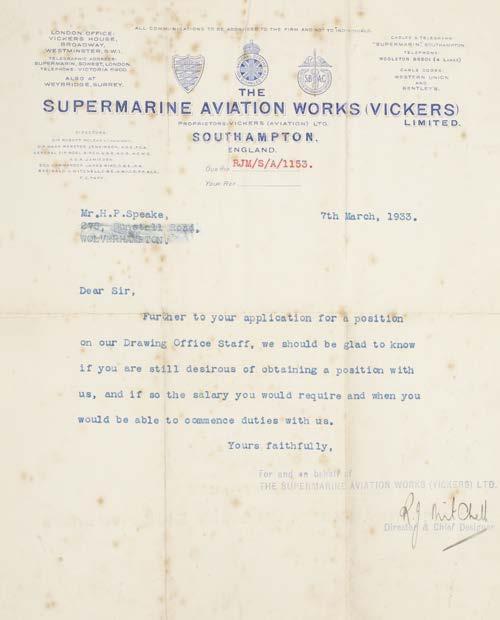
258 Military Aviation. A collection of approximately 120 black and white photographs of military aircraft circa 1940-90s, mostly laid on card and captioned, including Hawker N.7/46 Prototype Seahawk, September 1948, 5 x 5.5 cm, Buccaneer, 809 Squadron circa 1965, Sea Vixed, RNAS Fleetlands, Gosport 11 June 1994, 16 x 24 cm, Supermarine N113 Scimitar, 2nd Prototype 1956, 19 x 23.5 cm, DH.110 Second Prototype 1952, 14.5 x 20 cm, various warbirds including Super Hornet and promotional brochures including EA18G, Boeing JSF, F/A-18E/F Super Hornet etc, presented in a modern album (approx 120)
£200 - £300
259* Mitchell (R.J., 1895-1937). A Supermarine Aviation Works (Vickers) Limited signed letter dated 7 March 1933, the typed letter from Mitchell to Mr H.P Speake of Wolverhampton, reads ‘Further to your application for a position on our Drawing Room Office Staff, we should be glad to know if you are still desirous of obtaining a position with us, and if so the salary you would require and when you would be able to commence duties with us’, signed in ink by R.J. Mitchell, Director & Chief Designer, folded and foxed, the recipients address omitted, 25 x 20 cm
Provenance: Mr H.P. Speake and thence by family descent. The vendor’s father never took the job! (1)
£300 - £500
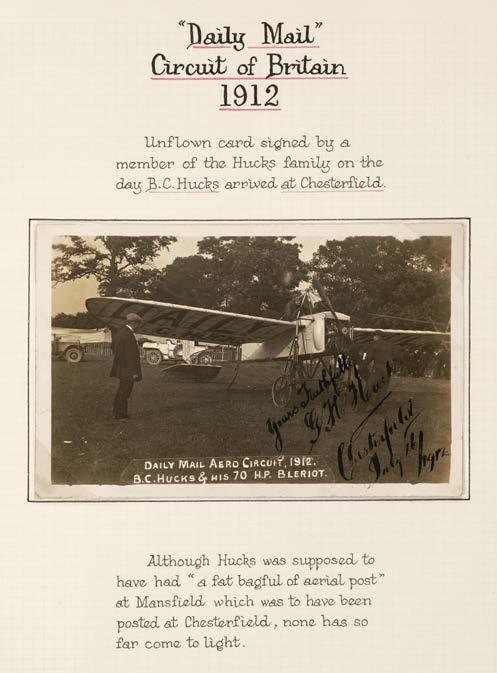
£400 - £600
260* Pioneer Aviation. An excellent collection of approximately 280 early photographic postcards and 17 items of postal history presented in 4 albums, mostly for pioneer aviation meetings in England but many other countries, each categorised for example, French Morocco, early commercial registers cover from Rabat to Manchester, June 1920, Great Britain, postcards for the Aviation Meeting at Doncaster, October 1909, Blackpool Air Meeting October 1909, Bournemouth Aviation Meeting, July 1910, Sheffield Aviation Week April 1914, Schneider Trophy, April 1914, India, photographs of the Viceroy’s visit to the aeroplane park at Risalpur, North West Frontier, April 1917, Italy, Wilbur Wright in the Air at Centocelle, April 1909, United States, an advertising card for the St Louis Centennial, October 1909, Argentina, colour proof stamps dated 1912, Germany, colour postcards, Zeppelins circa 1908, other themes include B.C. Hucks at Harrogate (two cards signed), Valentine leaving Bristol and another at Horsha, 1911, Military Trials at Larkhill, 1912 (including one signed by Perreyon), First World War, Seaplane Service at Windermere, 1912 and 1917, Hendon Aerodrome, 1914, Waterplanes at Eastbourne, 1912, Belgium Aviation Meeting at Spa, 1909, London to Manchester Air Race, 1910 etc, many cards signed by pioneer aviators from around the world including Paul de Lesseps, Emile Bruneau de Laborie, Juan Bielovucic, Charles Gordon Bell, Sydney Sippe, Henri Salmet, Robert Slack and John Moisant, all captioned and loose and presented in four green albums (4 albums)

261* RAF Memorabilia. A collection of WWII and later RAF memorabilia belonging to Pilot J.R. Yearsley-Struthers, 12 Group, who was killed in an air crash on 4 December 1953, including, Three: 19391945 Star, Defence and War Medals, extremely fine and mounted as worn, with cloth brevet and related badges, together with Logbook 1, commencing 6 July 1942, final entry February 1944 Logbook 2, commencing 1 March 1945, final entry 30 December 1949 Logbook 3, commencing 2 January 1950, final entry 1 December 1953 Aircrew Categorisation Card and Instrument Rating Card, an original telegram to his loved one dated 24 March 1951, several letters of condolence and related correspondence from the Air Ministry, 14 original RAF black and white photographs, 15 x 20 cm, each documenting the military funeral, 15 Tee Emm magazines for the period of December 1942 to May 1945 and other related items
John Robert Yearsley-Struthers was killed in an air accident on 4 December 1953, he is buried in Bingley Cemetery.
The Avro Anson Mk 1 of 12 Group Communications crashed at RAF Newton, Nottinghamshire.
The aircraft broke through the cloud and the pilot Yearsley-Struthers began a circuit to land using visual flight reference protocols. However, at a very late stage of the approach to RAF Newton, he attempted to overshoot, opened the throttles, and applied full power to both engines. (1)
£200 - £300
262* RAF Photographs. A WWII RAF Middle East photograph album, containing 44 black and white photographs, approximately 8 x 12.5 cm showing Hawker Hind in formation, Lysander inscribed to verso ‘A.O.C.’s inspection Ramleh, April 1940’, crashed Luftwaffe aircraft, camels etc, displayed in a period photograph album with 24 loose snapshot size photographs of serving personnel and aircraft, including Wing Commander Lance “Wildcat” Wade standing by his aircraft “Alma Baker Malaya”, together various reproduced photographs of WWII aircraft plus, a collection of 60 first-day covers, circa 1970s, mostly aviation and signed including 40th Anniversary of D-Day signed by Johnnie Johnson, another For Valour, Centenary of Australia’s First Victoria Cross, signed by Roden Cutler, Edward Kenna and Keith Payne V.C., contained in a ring binder (1)
£100 - £200
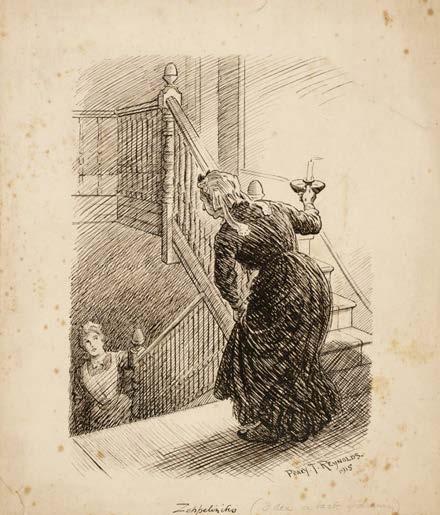
263* Reynold (Percy). “Zeppelinitis” 1915, original pen and ink drawing, showing a maid and housekeeper on the stairs, inscribed verso ‘Zeppelenitsi, “Sarah! you might bring up my spectacles. I left them on the dining room table, and if a bomb should come I don’t want them broken’, signed and dated lower right, some light mainly marginal spotting and small tear and loss at lower left corner, 27.5 x 23.5 cm, unframed, together with a pencil colour drawing showing an RNAS officer by Roy 1928 showing ‘Capt Percival Spencer’ with parachutist descending from an air balloon, 26.5 x 18 cm, mount aperture and laid on card, unframed, plus an original pen, ink and watercolour illustrating four air balloon scenes 1900, probably for a fan design, 21 x 20.5 cm, mount aperture, unframed Percy Reynolds (active 1900s) was a Punch cartoonist. His work “Zeppelinitis” was a name used by the press to describe the fear induced in the British population. (3)
£70 - £100
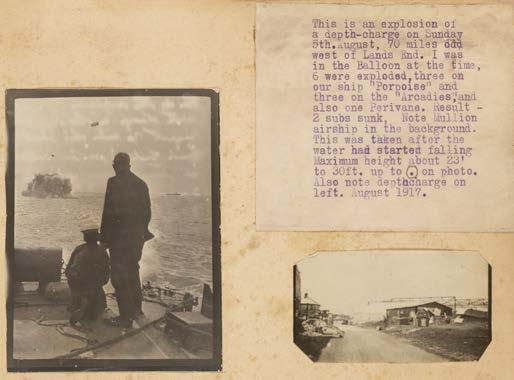
264* RNAS. An album of approximately 100 photographs, circa 1917, including photographs of airships, ships, aircraft, personnel, transport, stations etc, various sizes, the largest 14 x 8.5 cm, the smallest 6.5 x 4.5 cm, mounted on thick card (some spotting and toning to sheets), some fading to a few photographs (one with tear and marginal loss), original half morocco, a little rubbed, oblong 4to An interesting album of photographs relating to the Royal Naval Air Service during the First World War, one photograph with typescript note ‘This is an explosion of a depth-charge on Sunday 5th. August, 70 miles odd west of Lands End. I was in the Balloon at the time, 6 were exploded, three on our ship “Porpoise” and three on the “Arcadies”, and also one Perivane. Result - 2 subs sank. Note Mullion airship in the background. This was taken after the water had started falling. Maximum height about 23’ to 30ft... also note depth charge on left. August 1917.’ (1) £200 - £300
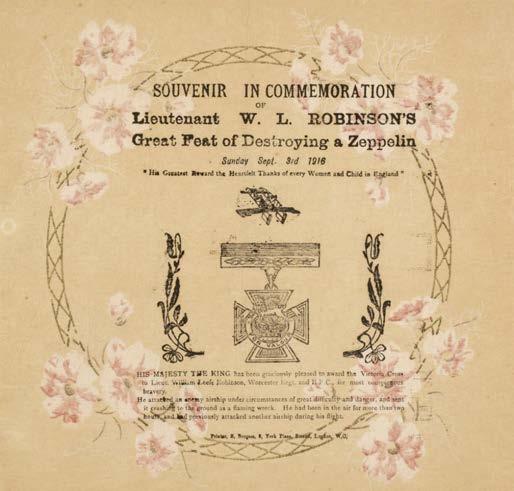
265* Robinson (Lieutenant William Leefe, 1895-1918). Souvenir in Commemoration of Lieutenant W.L. Robinson’s Great Feat of Destroying a Zeppelin on Sunday 3 September 1916, printed by S. Burgess, Strand, London, a tissue paper souvenir printed with a Victorian Cross and citation, 34 x 35 cm, together with a tissue paper souvenir In Commemoration of Essex Aviation Display, 24 September 1932, printed by S. Burgess, Strand, London, 34 x 35 cm, ‘Britain’s Glory’ Admiral Sir John Jellicoe commemorative cotton handkerchief showing an airship, 32 x 30.5 cm, Souvenir of the War’s Big Guns tissue paper souvenir, showing an artillery gun a, naval gunboat and airship, 34.5 x 34 cm, silk bookmark by Thomas Stevens ‘Birthday Greetings’ showing a hot air balloon with verses below, 37.5 cm, Graf Zeppelin commemorative cotton handkerchief, 32.5 x 35 cm, plus two airship pennants, one for the Graf Zeppelin flight to New York 1928/29, the other R100 visit to St Hubert (8)
£100 - £150

266* The Society of British Aircraft Constructors. British Aircraft, London: 1945, 23 colour and monochrome plates of Second World War military and civil airplanes, after Cuneo, Wootton, Nockolds, and others, with glossary at end listing suppliers & manufacturers to the industry, original blue cloth lettered in silver, spine faded, oblong 4to (23 x 28 cm) Scarce. (1)
£50 - £80
267* Royal Air Force College. The Journal of The Royal Air Force College, Cranwell Lincolnshire, Gale & Polden Ltd, Vol. XIX, No.2 Autumn 1934, Vol. XVII, No.1 Spring 1937, Vol. XVII No.2. Autumn 1937, Vol. XVIII No.1 Spring 1938, paperback publications featuring numerous adverts and illustrations, 25.5 x 19 cm, together with Air Cadet Training Handbooks, comprising Book 2 Map Reading, Book 4 Engines, Book 5 Airframes, Book 6 Weather Air Navigation, Book 7 Aircraft Operation The Helicopter The Hovercraft, Book 8 Radio/Radar, blue paperback publications circa 1967-68, 24.5 x 15 cm (10)
£70 - £100

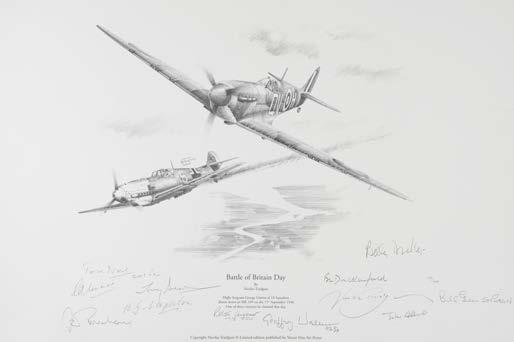
269* Trudgian (Nicolas). Battle of Britain Day, black and white print, published by Vector Fine Arts Prints and numbered 55/200, signed in pencil by 12 veteran pilots, including, George Unwin, 19 Squadron, Thomas “Ginger” Neil, 249 Squadron, Geoffrey Wellum, 92 Squadron, Peter Ayerst, 72 Squadron, Basil Gerald “Stepme” Stapleton, 603 Squadron, Tony Iveson, 616 Squadron, Byron Leonard Duckenfield, 501 Squadron, Billy Drake, 213 Squadron and Bill Green, 501 Squadron, sheet size, 32.5 x 45 cm, unframed
A dramatic image showing Flight Sergeant George Unwin of 19 Squadron shooting down an Me109 on 15 September 1940. This was one of three victories that he claimed that day.
(1)
£100 - £150
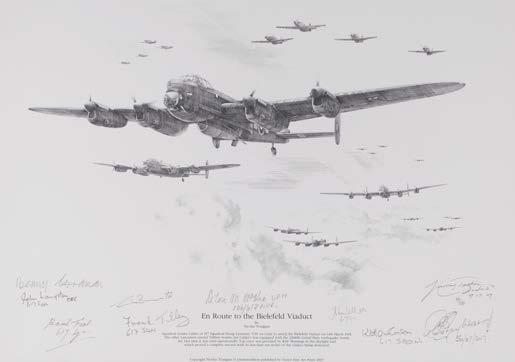
£200 - £300
268* The Aero, volumes V & VI, numbers 97-117, January 1911December 1912, numerous monochrome illustrations, including many after photographs, a few minor marks, modern maroon cloth gilt, large 4to, together with The Aeroplane, edited by C. G. Grey, volume IV-26, January-June, 1913, numerous monochrome illustrations, including many after photographs, contemporary plum cloth gilt, a little rubbed and outer edges damp marked, 4to, plus Aeronautics. A Monthly Journal devoted to the technique of Aeronautics, volumes VI & VII, number 59, January 1913-November 1914, numerous monochrome illustrations, including many after photographs, first volume with lower half of page 29/30 replaced by facsimile, second volume with two leaves missing (pp.243-246), now with photocopy facsimiles loosely inserted, contemporary half cloth and half morocco respectively, rubbed and some fraying and minor wear to head and foot of spines, 4to, and other aviation interest, including Charles C. Turner, Aerial Navigation of To-day, 2nd edition, 1910, Paul Brockett, Bibliography of Aeronautics (Smithsonian Institution), 110 (reprint edition 1966), The Life and Astonishing Adventures of John Daniel, 1926, R. A. Frazer and W. J. Duncan, The Flutter of Monoplanes, Biplanes, and Tail Units (Air Ministery, Aeronautical Research Committee Reports 1255), 1931, Aerosphere 1943, blue cloth, a quantity of aviation brochures and other promotional publications, mostly post World War II, including Hawker Siddeley Aviation Ltd., Hunetr, Conversion of MK.4 to MK.6, circa 1950s, a small quantity of aviation press photographs, etc (2 cartons)
270* Trudgian (Nicolas). Low Level Strike, black and white print published by the De Havilland Aircraft Museum Ltd, signed by 21 veteran pilots including, Eric “Winkle” Brown, Dick Maywood, Peter Twiss, Brian Cooper, Doug Gregory, Ted Dunford, the image shows Mosquito FB IV attack an important corridor in Normandy soon after D-Day, sheet size 42.5 x 60 cm, unframed, together with another print by the same artist, En Route to the Bielefeld Viaduct, numbered 20/250, signed by 9 veteran pilots of 617 Squadron, including Benny Goodman, John Langston, Basil Fish, Frank Tilley and John Bell, showing Squadron Leader Calder of 617 Squadron flying Lancaster ‘YZS’ en route to attack the Bielefeld Viaduct on 14 March 1945, sheet size 30.5 x 42.5 cm, unframed, plus Atack (Simon), Duxford 1940, black and white print numbered 107/300, signed by 13 veteran pilots, including, Peter Brothers, Michael Wainwright, Geoffrey Wellum, sheet size 30 x 45.5 cm, unframed (3) £100 - £200
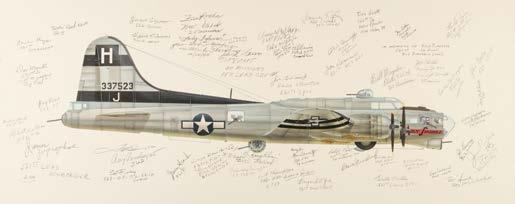
271* Valo (John). Boeing B-17G Flying Fortress – 388th Bomb Group – 45th Combat Bomb Wing – Eighth Air Force, a unique profile painting in airbrush on wove paper laid on card, showing B17G Flying Fortress, “Holy Smokes” of the 560th Bomb Squadron, signed in graphite pencil by several of 388th Bomb Group veterans, additionally signed by the artist and dated 2001 lower right, sheet 38 x 63.4 cm
John C. Valo is an American Illustrator from St. Cloud, Minnesota, he specialises in aviation art. For more details, see: (a copy of this short film accompanies the lot).
The signatures were obtained at various reunions or in person by the vendor.
(1)
273* Valo (John). Caudron C.714, Armee de L-Air French Air Force - Groupe de Chasse L/145, a unique profile painting in airbrush on wove paper laid on card, signed by the pilot Boleslaw Michal “Mike” Glaydch and inscribed “Boleslaw Mike Glaydch – Groupe de Chasse I/145” additionally signed in pencil by artist and dated 2007 lower right, sheet 30.48 x 63.50 cm
John C. Valo is an American Illustrator from St. Cloud, Minnesota, he specialises in aviation art. For more details, see: (a copy of this short film accompanies the lot).
£200 - £300
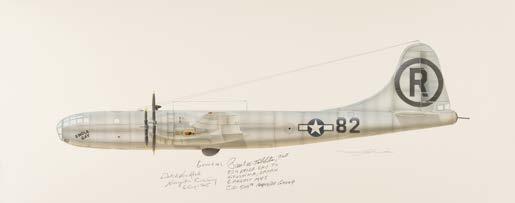
272* Valo (John). Boeing B-29 Superfortress “Enola Gay” 43rd Bomb Squadron / 509th Composite Group, a unique profile painting in airbrush on wove paper, laid on card, signed in pencil by the pilot, General Paul W. Tibbets and his navigator, Theodore “Dutch” Van Kirk, additionally signed by the artist and dated 2002 lower right, sheet 38 x 63.4 cm
John C. Valo is an American Illustrator, based in St. Cloud, Minnesota, he specialised in aviation art. For more details, see: (a copy of this short film accompanies the lot.)
On 6 August 1945 the “Enola Gay” flown by Colonel Paul W. Tibbets and his crew flew the fateful mission to Hiroshima, Japan and released the atomic bomb, “Little Boy” over the city of Hiroshima, Japan. (1)
£200 - £300

Boleslaw Michal “Mike” Glaydch served in the Polish Air Force, French Air Force and the Royal Air Force in the famed Polish Squadrons, 303 and 302 Squadron. He eventually served with the 61st Fighter Squadron / 56th Fighter Group, Eighth Air Force). (1)
£150 - £200

274* Valo (John). Curtiss P-40B Tomahawk / Hawk 81 – 2nd Pursuit Squadron “Panda Bears” – American Volunteer Group, a unique profile painting in airbrush on wove paper laid on card signed in pencil by the Pilot David Lee “Tex” Hill and Robert Layher (who both flew this aircraft while serving in the famed “Flying Tigers”), inscribed “Tex” Hill – Sqdn. C.O. 2nd Pursuit” and “Bob Layher 2nd Pursuit Sqdn.” additionally signed in pencil by artist and dated 2007 lower right, sheet 30.48 x 63.5 cm
John C. Valo is an American Illustrator from St. Cloud, Minnesota, he specialises in aviation art. For more details, see: (a copy of this short film accompanies the lot.) (1)
£150 - £200

275* Valo (John). North American P51 D Mustang “The Millie G”, a unique profile painting in airbrush on wove paper illustration board, laid card, signed in pencil by the pilot, General Edward Giller, inscribed “Edward Giller – 343rd Fighter Squadron – 55th Fighter Group – Pilot of “Mille G” – 3 Aerial Victories – Six Ground Victories” additionally signed by artist and dated 2004 lower right, sheet 38 x 63.4 cm, in excellent condition
John C. Valo is an American Illustrator from St. Cloud, Minnesota. He specialised in aviation art. For more details, see (a copy of this short film accompanies the lot.)
General Edward Giller was credited with three aerial victories, including a German Me-262 jet fighter and six ground victories (1)
£150 - £200
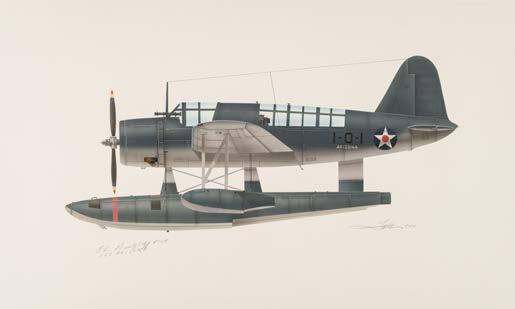
276* Valo (John). Vought Kingfisher U.S.S. Arizona, The Attack on Pearl Harbor, 7 December 7 1941, a unique profile painting in airbrush on wove paper laid on card, signed in pencil by Aircraft Maintenance Ordinance Mate, Edward Wentzlaff, inscribed “Edward Wentzlaff – USS Arizona” additionally signed by the artist and dated 2006 lower right, sheet 38 x 63.4 cm
John C. Valo is an American Illustrator, based in St. Cloud, Minnesota, specialised in aviation art. For more details, see: (a copy of this short film accompanies the lot.)
277* Wing Commander William Mayes Fry, M.C., Royal Flying Corps. An archive relating to his military service and personal life, including a WWI photograph album containing approximately 200 black and white photographs, all captioned for example No 8 Squadron, ruins of Matigny December 1917, aerial view of German Red Cross Hospital near Roulens, German gun position from E of Arras, Ypres from 3000 ft, September 1917, Hospital other photographs include airships, Ploegsteert Woods, Vickers, BE2C, Sopwith Sniper, SE5 aircraft, Bleriot at Dover and other related photographs, some pages cut and photographs removed, contained in a hardbound album, together with three albums for his time in Iraq, showing Arabs, biplanes and daily genre, a portrait photograph of Fry in RFC tunic with Somerset Light Infantry cap, plus other ephemera, mainly typescript documents and correspondence including: approximately 45 letters, plus copies, from and addressed to ‘Willie’, 1971-1989, signed from various people including: ‘Grid’ [K.L. Caldwell], Lord Balfour of Inchrye, Joe Warne, Michael Oakley, Philip Markham, AJ Bauer, A. Ed Ferko, David Luff, etc., typescript documents, some with manuscript editions, including: Willie’s early life and career, William Avery Bishop VC, RAF Hawkinge, 1941/42, Henlow: Mobile Lighthouse, Return to Hinaidi, No.7 (Bomber) Squadron, Bircham Newton, Iraq (including rough draft intended for publisher), etc., and various related publications
Edward Wentzlaff serviced the Vought Kingfisher and flew in the aft portion of the aircraft, launching from the U.S.S. Arizona. He was one of the 355 survivors who made it off the U.S.S. Arizona during the attack on 7 December 1941 (1)
£150 - £200

William Mayes Fry (1896-1992) was one of the few WWI airmen to survive to the 1990s. He was born in Twickenham and joined the army, he was commissioned Lieutenant in the Somerset Light Infantry in 1915 and later trained as a pilot, receiving his pilot license in 1916 and appointed Flying Officer with No 12 Squadron, and then No 11 Squadron, flying BE.2s over the Somme. He was promoted to Lieutenant on 31 October 1916.
He joined No 60 Squadron where he flew Nieuport 17 and on 2 May 1917 scored his first aerial victory. Two days later, he shared a victory with Air Marshal William “Billy” Bishop, V.C., C.B., D.S.O. & Bar, M.C., D.F.C.
On 13 and 19 May he claimed two more solo aerial victories and his fifth was whilst flying an Albatros D.III. which was driven down out of control on 16 June. He claimed this with Air Commodore Keith “Grid” Caldwell, C.B.E., M.C., D.F.C. & Bar. One of Fry’s squadron mates was Albert Ball.
On 16 August 1917 Fry was awarded the Military Cross ‘For conspicuous gallantry and devotion to duty. Diving to a very low altitude, and under heavy fire, he emptied all his ammunition into the retreating enemy. During the last month, he has brought down four hostile machines. He has done consistent good work as a pilot.’
On 1 September 1917 he was appointed Flight Commander and transferred to No 23 Squadron to command “C” Flight. With two aerial victories on 20 November and 4 December 1917. Another on 4 January 1918 and on 6 January he and Frank Granger Quiglet jointly shot down and killed Pour le Merite winner Leutnant Walter von Bulow-Bothkamp and on the 23 January Fry claimed another victory by shooting down an Albatross.
Fry transferred to No 79 Squadron and he claimed his final aerial victory whilst using a Sopwith Dolphin to take down a Fokker Dr.I on 11 May 1918. Fry continued his service post war and served in Egypt, being posted to the Depot at RAF Aboukir in 1931, he then moved to No 216 Squadron based at Heliopolis. Fry left the RAF om 1943 but re-engaged for service on the outbreak of WWII. He rose to the rank of Wing Commander and was mentioned in despatches. He retired from service in 1945 and retained the rank of Wing Commander.
(5 boxes)
£700 - £1,000
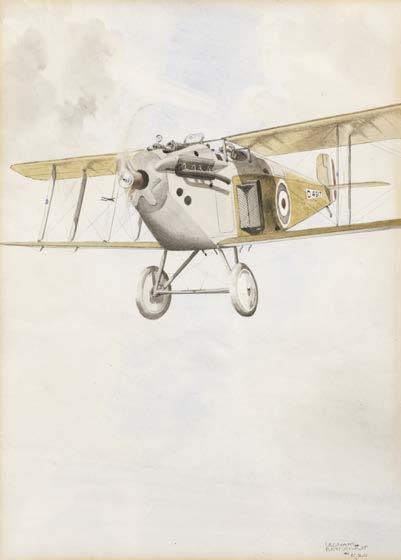
278* Bridgman (Leonard, 1895-1980). Sopwith Dolphin 1920, watercolour on paper, signed and dated lower right, 24 x 17.5 cm, mount aperture, framed and glazed, frame size 38 x 30.5 cm, together with another by the same artist, Nieuport Nighthawk, watercolour on paper, signed lower right, 24 x 17 cm, mount aperture, framed and glazed, frame size, 38 x 30.5 cm
The vendor’s father commissioned both works, and the lot includes a letter of provenance.
(2)
£100 - £150
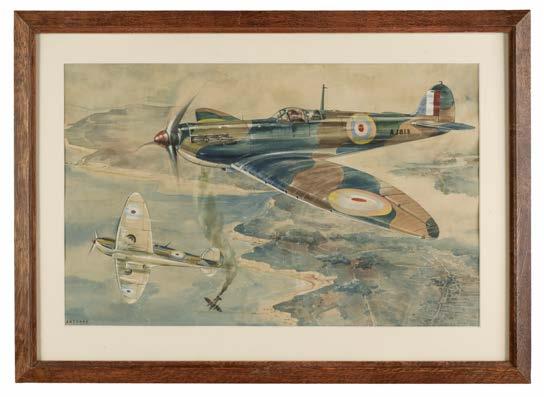
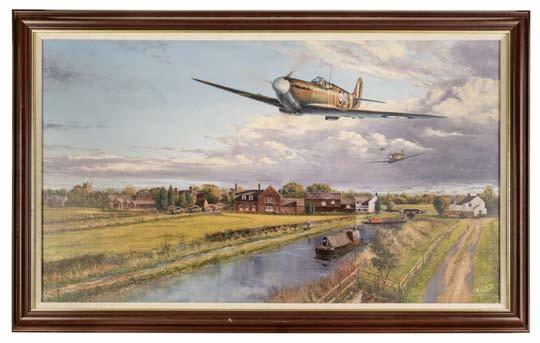
280AR* Brown (Stephen). Pinpoint Navigation, 1997, oil on canvas, showing Spitfire Mk Vb of 92 Squadron, signed lower right, 71.5 x 124 cm, framed, frame size 86.5 x 139.5 cm, Guild of Aviation label to verso, catalogue price £1475
Christopher Foyle OBE (1943-2022), chairman of Foyles Bookshop and founder of cargo airline business.
(1)
£500 - £800
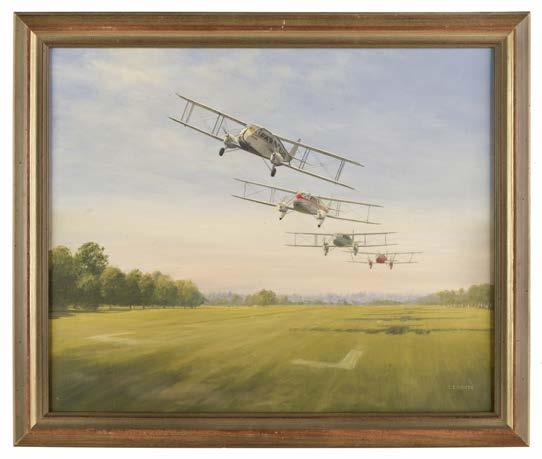
281AR* Coote (Charles). Landscape with Dragons, 1997, oil on canvas, showing D.H. Dragon and variants, signed lower right, 46 x 56 cm, framed, frame size 53.5 x 64 cm, Guild of Aviation label to verso, catalogue price £300
Christopher Foyle OBE (1943-2022), chairman of Foyles Bookshop and founder of cargo airline business. (1)
£100 - £150
282AR Coulson (Gerald, 1926-2021). Atlantic Conquerors, 1997, oil on canvas, showing Alcock and Brown in their Vimy on the first transatlantic flight in 1919, signed lower left, some craquelure, 76 x 102 cm, framed, frame size 94.5 x 120 cm, Guild of Aviation label to verso, catalogue price £5,875
£500 - £800
279* Battle of Britain. Dogfight, watercolour on paper, showing two Spitfire engaged in a dogfight with a downed German Heinkel over English coastland, signed ‘Anthony’ lower left, 39 x 61 cm, mount aperture, period oak frame, glazed, frame size 55.5 x 77 cm (1)
Christopher Foyle OBE (1943-2022), chairman of Foyles Bookshop and founder of cargo airline business.
(1)
£2,000 - £3,000
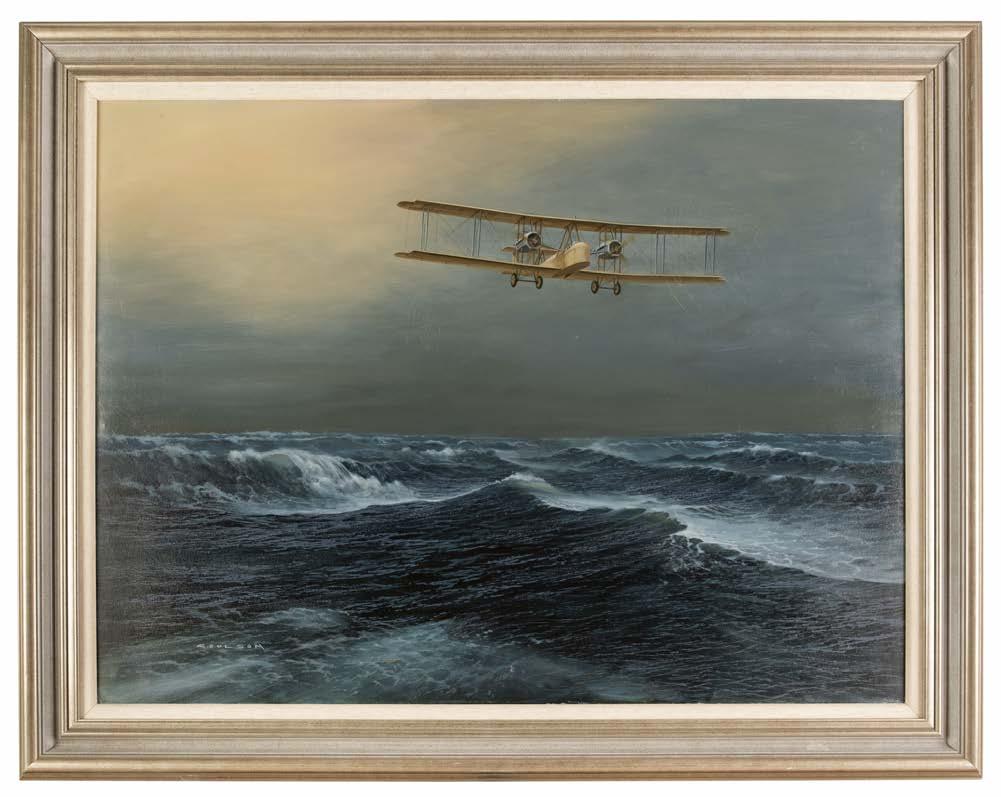


283AR* Cowland (Anthony, R.G.). The Christmas Mail Arrives, oil on board, showing Railway Air Services (D.H. 89 Dragon Rapide) over a winter landscape, signed lower right, 54 x 74.5 cm, frame size 64 x 84 cm
Christopher Foyle OBE (1943-2022), chairman of Foyles Bookshop and founder of cargo airline business.
The Guild of Aviation Artists, Annual Exhibition 1996. (1)
£300 - £500
284AR* Diggens (Rodney). ‘Ambassador’ 1996, watercolour, showing “Sir John Hawkins” Airspeed A.S.57 Ambassador in flight, signed lower left, 36.5 x 52 cm, mount aperture, framed and glazed, frame size 52 x 67 cm, Guild of Aviation label to verso, catalogue price £500
Christopher Foyle OBE (1943-2022), chairman of Foyles Bookshop and founder of cargo airline business. (1)
£100 - £150
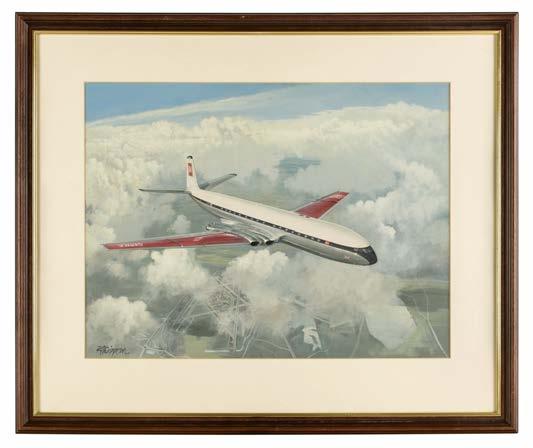
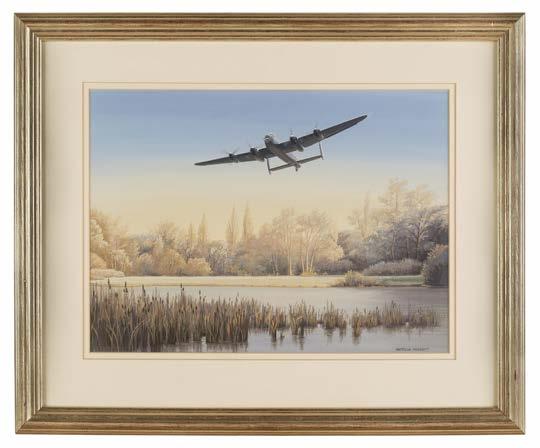
285AR* Diggens (Rodney). Comet AB, 1995, watercolour and gouache, showing this aircraft in flight, signed lower left, 56 x 42 cm, mount aperture, framed and glazed, frame size 65 x 78 cm, Guild of Aviation label to verso, catalogue price £800
Christopher Foyle OBE (1943-2022), chairman of Foyles Bookshop and founder of cargo airline business.
The original artwork for a poster design.
(1)
£200 - £300

286AR* Diggens (Rodney). ‘Viscount’ 1997, watercolour and gouache, showing Vickers Viscount V806 in flight, signed lower left, 36 x 53 cm, mount aperture, framed and glazed, 56 x 71.5 cm, Guild of Aviation label to verso, catalogue price £600
Christopher Foyle OBE (1943-2022), chairman of Foyles Bookshop and founder of cargo airline business.
(1)
£200 - £300
287AR Forrest (Patricia). A Frosty Homecoming, 1996, watercolour and gouache, showing Avro Lancaster over a wintery landscape, signed lower right, 35.5 x 48.5 cm, mount aperture, framed and glazed, frame size 57 x 69 cm, Guild of Aviation label to verso, catalogue price £495
Christopher Foyle OBE (1943-2022), chairman of Foyles Bookshop and founder of cargo airline business. (1)
£100 - £150
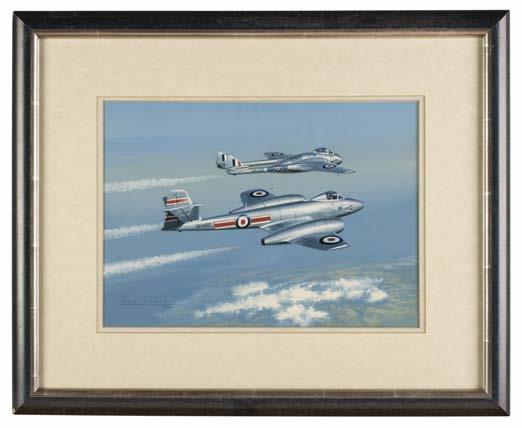
288AR* Hardy (Wilfred). ‘High Altitude Heraldry’, gouache, showing Gloster Meteor and De Havilland Vampire in flight, signed and dated (19)92 lower right, 25 x 35 cm, mount aperture, framed and glazed, frame size 45 x 55 cm, Guild of Aviation label to verso, catalogue price £600
Christopher Foyle OBE (1943-2022), chairman of Foyles Bookshop and founder of cargo airline business. (1)
£150 - £200
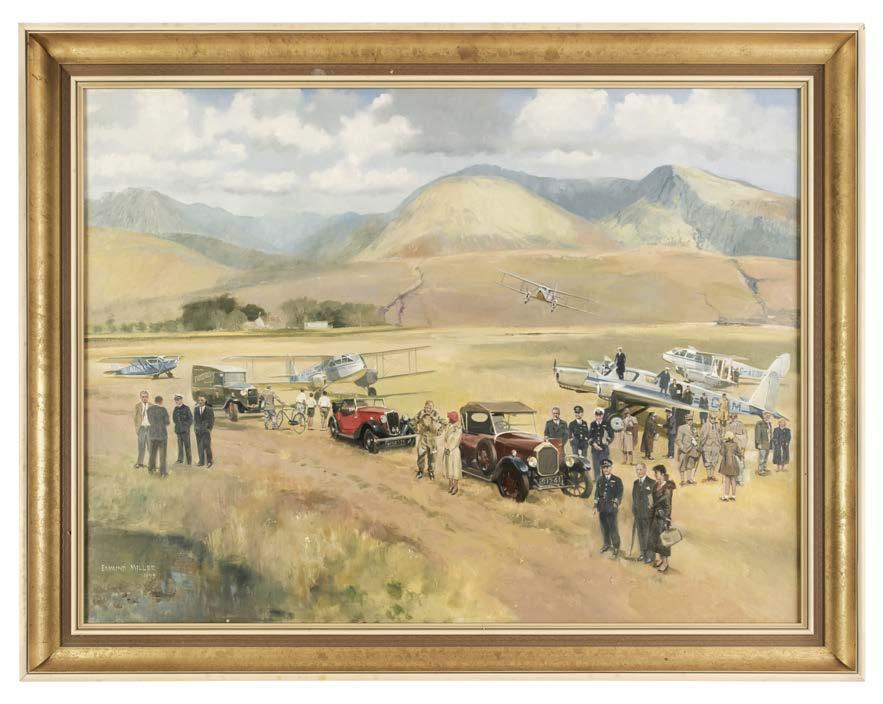
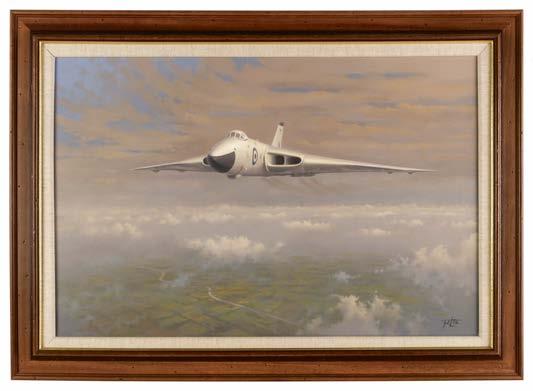
289AR* Lea (Geoffrey E, 1938-). “Great White Bird”, oil on canvas, showing a Vulcan in flight, signed lower right, 51 x 76.5 cm, framed, 66.5 x 92 cm, The Guild of Aviation Artists label verso
Christopher Foyle OBE (1943-2022), chairman of Foyles Bookshop and founder of cargo airline business.
(1)
£200 - £300
290AR* Miller (Edmund). Wings Over The Glens, oil on board, showing Northern and Scottish Airways on the Isle of Syke, signed and dated 1995 lower left, 76 x 101 cm, framed, frame size 89 x 116 cm, Guild of Aviation label verso, catalogue price £6000
Christopher Foyle OBE (1943-2022), chairman of Foyles Bookshop and founder of cargo airline business.
(1) £700 - £1,000

291AR* Payton (A.H.). Fresh Snow (Fieseler Storcha) 1995, oil on canvas, showing a WWII Luftwaffe monoplane over snowy mountains, signed lower right, 60.5 x 50.5 cm, framed, frame size 77 x 68 cm, Guild of Aviation label to verso, catalogue price £750
Christopher Foyle OBE (1943-2022), chairman of Foyles Bookshop and founder of cargo airline business.
(1) £200 - £300
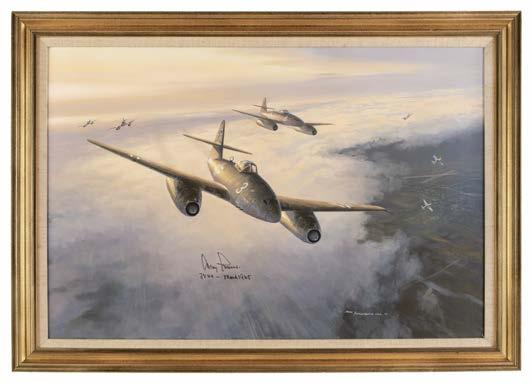
292AR* Postlethwaite (Mark, 1964 -). The Final Days, oil on canvas, showing Me262s of Jagdverband 44 (JV 44), signed and dated (19)95 lower right, additionally signed in ink by Adolf Galland and dated March 1945 to recto and signed by Galland and dated 24 March 1995 to verso, 50.5 x 76.5 cm, framed, frame size 60 x 85.5 cm, with Guild of Aviation Artists label to verso
Christopher Foyle OBE (1943-2022), chairman of Foyles Bookshop and founder of cargo airline business.
The Guild of Aviation Artists, 1995 Exhibition, number 164. (1)

£300 - £500

293AR* Thurston (Paul). Javelin Jaunt 1993, oil on board, showing Gloster Javelin F(AW) MkI in flight over the ocean, signed lower right, 35.5 x 61 cm, framed, frame size 42.5 x 68 cm, Guild of Aviation label to verso, catalogue price £450
Christopher Foyle OBE (1943-2022), chairman of Foyles Bookshop and founder of cargo airline business. (1)
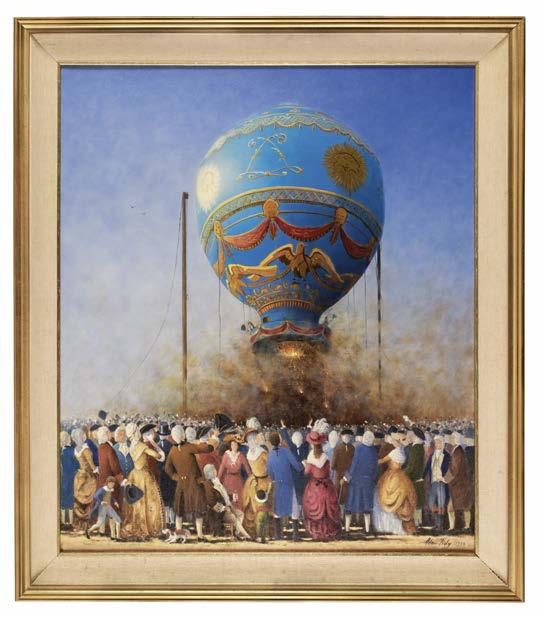
£100 - £150
294AR* Tidy (Alan). Paris 1783, oil on canvas, showing the first manned hydrogen balloon, signed and dated 1995 lower right, 59 x 76 cm, framed, frame size 68.5 x 87 cm, a description of the event is inscribed verso with an additional signature by the artist, Guild of Aviation label to verso, catalogue price £765
Christopher Foyle OBE (1943-2022), chairman of Foyles Bookshop and founder of cargo airline business.
295AR* Tidy (Alan). The First Aeronauts, Hot Air Balloon, oil on canvas, showing Pilâtre de Rozier and the Marquis d’Arlandes ascending in a Montgolfier balloon from the gardens of La Muette, France, November 1783, signed and dated 1995 lower right, inscription of historial event to verso, additionally signed and dated 1995 by the artist, 71.5 x 61 cm, framed, frame size 81.5 x 71 cm, Guild of Aviation label to verso, original price £650
Christopher Foyle OBE (1943-2022), chairman of Foyles Bookshop and founder of cargo airline business. (1)
£200 - £300
The first manned hydrogen balloon with the Montgolfier brothers ascending from Tuileries Gardens, Paris on 1st December 1783. There were an estimated 400,000 people (half the population of Paris at the time) who had come to watch. The voyage lasted two hours and five minutes trouble free. (1)
£200 - £300

296AR* Tidy (Alan). The Sheep, The Cock and the Duck Airborne, Versailles 1783, oil on canvas, signed and dated 1998 lower right, 61 x 76.5 cm, framed, frame size 73.5 x 88.5 cm, titled verso, additonally signed by the artist and dated 1998, Guild of Aviation label to verso, catalogue price £950
Christopher Foyle OBE (1943-2022), chairman of Foyles Bookshop and founder of cargo airline business.
(1)
£200 - £300

297* Trevithick (Richard J.). Fairey Barracuda nosediving 1943, watercolour and gouache on paper, signed and dated lower right, 54 x 37cm, framed and glazed, together with two others by the same artist comprising Fairey Barracuda attacking an enemy ship 1943, black and white watercolour on paper, signed and dated lower right, sheet size 54 x 36.5cm, framed and glazed and Fairey Fulmer flying over HMS Ark Royal 1941, signed and dated lower left, numbered ‘1’ lower right, closed tears and damage to the righthand side, sheet size 36 x 26cm, framed and glazed
Christopher Foyle OBE (1943-2022), chairman of Foyles Bookshop and founder of cargo airline business.
Richard J Trevithick was the son of William Trevithick (1899-1956), both father and son were illustrators for The Aeroplane magazine and this is a preliminary and unfinished sketch for the periodical.
(3)
£200 - £300
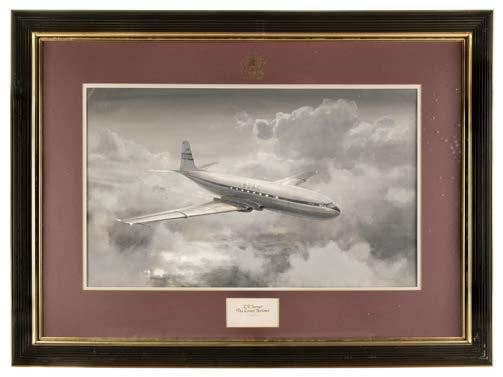
298AR*T urner (Charles Eddowes, 1883-1965). The Comet Airliner, 1952, watercolour, signed lower right, 44.5 x 74 cm, mount aperture with gilt embossed amorial, black and gilt frame, 81 x 107 cm
Christopher Foyle OBE (1943-2022), chairman of Foyles Bookshop and founder of cargo airline business.
(1)
£400 - £600
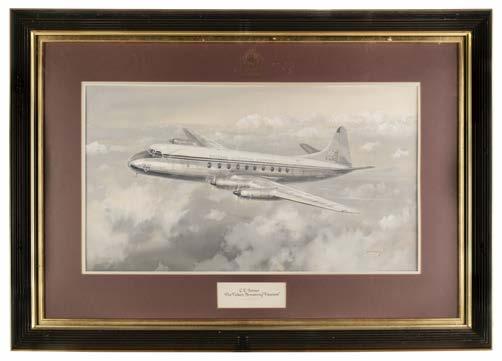
299AR* Turner (Charles Eddowes, 1883-1965). The Vickers Armstrong ‘Viscount’, 1953, watercolour, signed lower right, 42 x 75 cm, mount aperture with gilt embosed amorial, black and gilt frame, 77 x 108 cm, Carroll Art Collection stamp to verso numbered 118 Christopher Foyle OBE (1943-2022), chairman of Foyles Bookshop and founder of cargo airline business.
(1)
£400 - £600
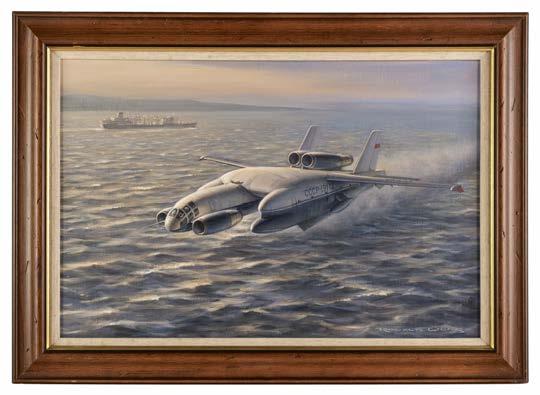
300* Wong (Ronald). Bartini’s Bizarre Behemoth (Beriev 14 M1P) 1996, oil on canvas, showing this Soviet Russian aircarft over the sea, signed lower right, 40.5 x 61 cm, framed, frame size 52.5 x73 cm, Guild of Aviation label verso, catalogue price £495
Christopher Foyle OBE (1943-2022), chairman of Foyles Bookshop and founder of cargo airline business.
(1)
£100 - £150

301* Wong (Ronald, 1940-). Enigmatic Ekranoplan, oil on canvas, showing Soviet aircraft VVA-14 ekranoplan over a naval convoy, signed lower right, 46 x 69 cm, framed, frame size 56 x 79 cm, The Guild of Aviation Artists label verso
Christopher Foyle OBE (1943-2022), chairman of Foyles Bookshop and founder of cargo airline business.
The Guild of Aviation Artists, Annual Exhibition 1997, number 258. (1) £200 - £300

302AR* Woodcock (Keith). Friday the Thirteenth, watercolour, showing Handley Page Halifax LV906 over a snowy landscape, signed lower right, 33 x 50 cm, mount aperture, framed and glazed, frame size 52.5 x 69 cm, Guild of Aviation label to verso, catalogue price £850
Christopher Foyle OBE (1943-2022), chairman of Foyles Bookshop and founder of cargo airline business.
(1)
£200 - £300
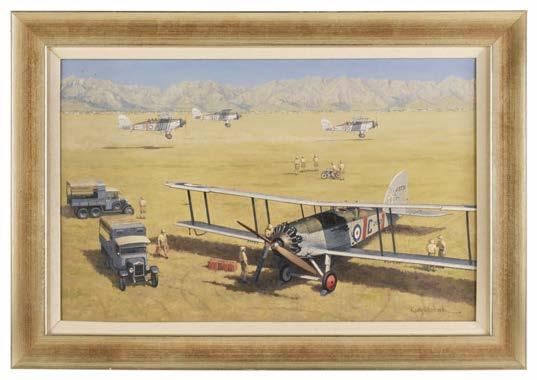
303AR* Woodcock (Keith). Royal Air Force, Westland Wapiti, oil on canvas, showing 31 Squadron on the North West Frontier during WWII, signed lower right, 35.5 x 56 cm, framed, frame size 47 x 67.5 cm
(1)
£200 - £300
Norman Parker, 1926-2024, was a man of many talents and multiple interests, mostly stemming from his long and varied career in aviation in an area of historical significance for Great Britain but particularly for military aviation on Salisbury Plain, Wiltshire.
In 1940 Norman, a Barnardo’s boy from London, began work as a teenager at the Vickers Armstrong factory in Weybridge repairing Wellington bombers with a move in 1944 to Vickers Supermarine to work on Spitfires. Both projects fired an early and lifelong passion for these particular aircraft and all things aviation. Soon after WWII ended, Norman having witnessed the importance of ongoing National Defence and Security, was commissioned into the Royal Observer Corps eventually retiring after 37 years when the Corps was de-commissioned in the late 1980’s.
A brief stint in the RAF led to employment at RAF Boscombe Down A&AEE where in the early 1950’s he joined Fairey Aviation becoming lifelong friends with test pilot Peter Twiss whilst establishing the world speed record in 1956 with the FD2.
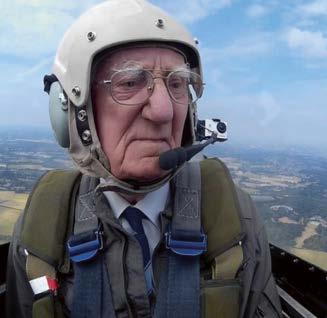
Also, during this period performing tests on the landmark English Electric Lightning in Aiden with eventual work on the Rotodyne keeping him at home in Amesbury and Boscombe Down where he continued to work in various guises until 2018 when he finally ‘retired’ from Boscombe as their archivist at the age of 92 to focus on his latest project the documentary Secret Spitfires that he advised on as historian and also presented.
Normans’ tireless pursuit of interesting facts, stories and artefacts was evidential throughout his life and career. From archaeological digs to recover bouncing bomb remnants at Ashley Walk to spotting aircraft from various ROC bunkers, chairman and founder of many societies from local history to aviation, Salisbury Cathedral tour guide to founder of local museums, instigator of the spitfire memorial in Salisbury, industrial radiographer, pyrotechnics manager, writer, speaker, district and parish councillor, historical advisor and archivist, father and husband.
This collection is a small insight into a fascinating life of hard work, stoicism, dedication and pride for his country. A passion for history and stories untold. A life well lived.
Emma Parsons (Norman’s granddaughter), 2024
304* Aircraft Instruments. Smiths Type KCA 0104 Compass, serial no 11868, in original wooden transportation case, finished in grey, the lid inscribed ‘Delicate Instrument Handle With Care’, the front panel stencilled ‘Type KCA 0104 W Compass’, box 9.5 cm high x 10.5 cm wide x 9 cm deep, together with a large pair of RAF Mk14 spectacles, 22/C 2433, cased plus a WWII RAF IFF (Identify Friend or Foe) Contactor Master Type 2, numbered 10A/10994, in excellent condition, with original wooden transportation case and Venner Time Switches Ltd card box (3) £200 - £300 Lot 304
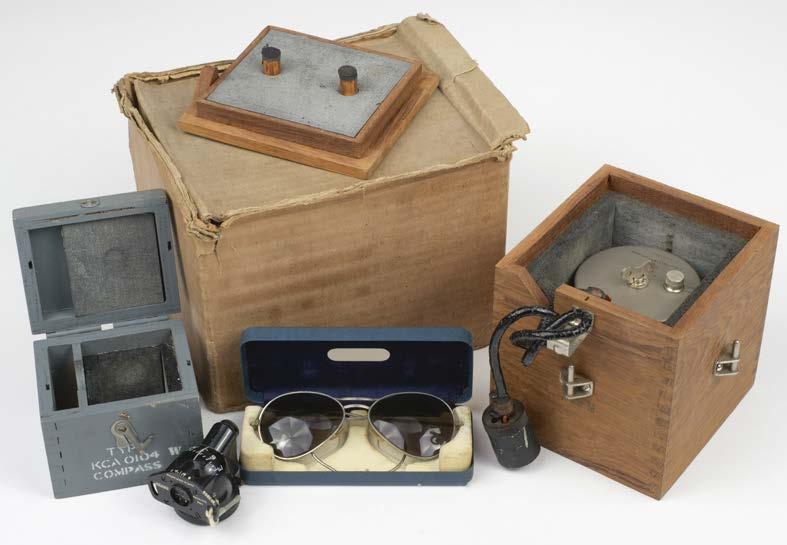
305* Aviation Ephemera. Miscellaneous collection of aviation ephemera, including Motor-Glider Competitions at Lympne Aerodrome near Hythe, 8th-13th October 1923 brochure, approximately 90 black and white snapshot photographs of aircraft circa 1930-50, contained in a scrapbook, 35 x 24 cm, another similar album containing approximately 100 snapshot aircraft photographs, a photograph album titled ‘Wiltshire School of Flying Aircraft 1946-1950 D.H. Tiger Moths, Pilot’s Notes for Warwick Air Sea Rescue Mark I, March 1944, the cover inscribed with owner’s name ‘F/S Drewitt’, Pilot’s Notes for Wellington Aircraft Mark III and Mark X, Standard Technical Training Notes for Fitters II (Engine), Aircraft and Armament Experimental Establishment Armaments Testing Methods, Boscombe Down 1946 and other items (a carton) £200 - £300
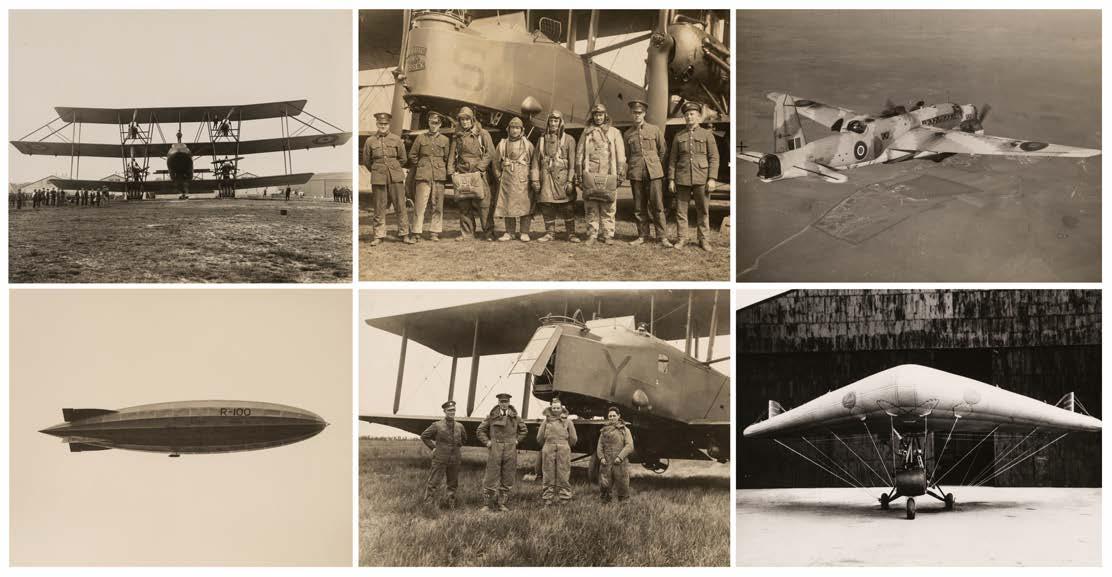
306* Aviation Photographs. A collection 1000 + black and white military aircraft photographs, WWI, WWII and Post WWII, many with WWII Air Ministry, Vickers and A.&A.E.E. Secret stamps to verso, including Vickers Wellesley, interior and exterior construction, 25 x 19.5 cm (2), smaller photographs of this aircraft (44), The Rubber Bomber (28), Tarrant Tabor Triplane (18), showing its first and last flight, 20.5 x 26 cm, Vickers Warwick (34), Concorde and TSR2 (23) and many other types of aircraft (1000 +)
£700 - £1,000
307* Aviation Photographs. A collection of original WWII period black and white aircraft photographs, mostly 15 x 20.5 cm, some smaller, comprising Handley Page ‘Halifax’ (28), Boeing Aircraft Corporation B-17 ‘Fortress’ (11), Lockheed ‘Ventura’ B-34 ‘Hudson’ (12), Douglas ‘Boston’ (6), North American P-51 ‘Mustang’ (17), Grumman ‘Martlet’, ‘Wildcat’ (5), A.W. Albamarle (3), Grumman ‘Avenger’ (14), Republic Aviation P-47 ‘Thunderbolt’ (10), Brewster 340 ‘Bermuda’ (6), North Americn ‘Mitchell’ (4), Martin ‘Maruder’ (5), Consolidated Corp ‘Liberator’ B-24, ‘Dominator’ B-32 (21), Avro ‘York’ (6), Grumann ‘Hellcat’ (4), Curtis ‘Kittyhawk’ (2), Chance-Vought ‘Corsair’ (7), North American ‘Harvard’ (2), De Havilland ‘Mosquito’ (24), De Havilland ‘Hornet’, ‘Sea Hornet’ (19), Short Brothers ‘Stirling’ (7), Fairey Aviation Company ‘Firefly’ (30), Fairey Aviation ‘Barracuda’ (14). Fairey ‘Swordfish’ (9), Manchester, Lancaster, Lincoln (63) many cockpit images, Bristol ‘Beaufighter’ (11), Hawker ‘Typhoon’, ‘Tempest’, ‘Fury’, ‘Sea Fury’ (37), Westland ‘Wyvern’ (12), Westland ‘Lysander’ (12), Miles ‘Messenger’, ‘Mercury’, ‘Master’, ‘Martinet’ (36), Interiors, Turrets + Bits and Pieces (58), many with Air Minstry and The Aeroplane & Armament Experimental Establishment stamps to verso and dated circa 1943, some have been hole punctured (approx. 400)
£400 - £600
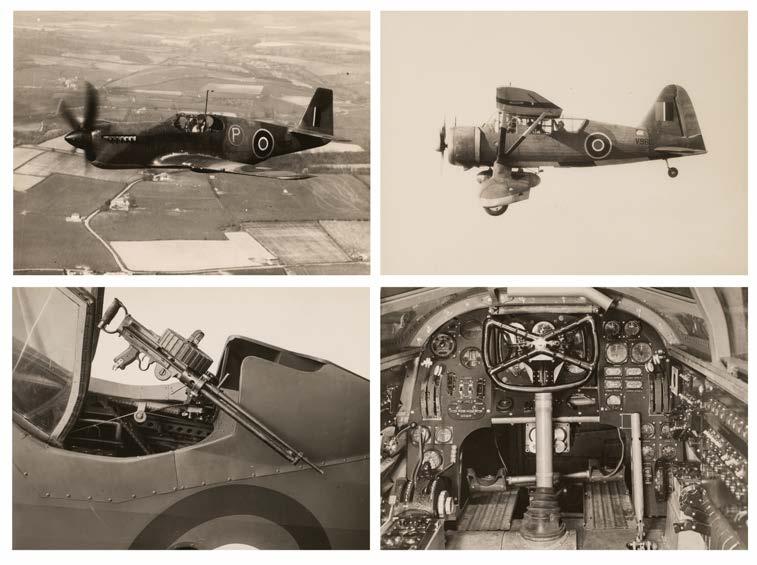
308* Battle of Britain. A WWII RAF Pilot’s Flying Logbook kept by Pilot Officer K.H. Cox, 610 Squadron, Killed in Action 28 August 1940, commencing 2 January 1938, training exercises in various aircraft including DH82A, Magister, Hart and Audax. Cox converted to Spitfire P9462 on 10 July 1940 with further training, he joined 610 Squadron on 28 July and went to Biggin Hill the following day. On 12 August Cox won his first aerial victory shooting down two Me109 in P9330, and on 14 August he shot down a Me109 in X4103 and on 18 August another Me109 in X4103 and one probable on a Do215 after being attacked, the final entry in the logbook is on 28 August 1940 where he is listed as ‘killed’ in P9511, the comments section notes ‘Bowes Farm, Stelling Kent, number brought down, broke German formation of 60 marching “vide” Police Office (County) Canterbury, together with a private purchase pair of Luxor flying goggles, poor condition but a type used in the interwar and early stages of WWII, plus an original black and white photograph inscribed to verso ‘Probably taken at Aston Down just before he was commissioned on July 6th 1940’ plus copied photographs
Kenneth Henry Cox (1916-1940) was born in Kings Norton, Birmingham. The family moved to Melbourne, Australia in 1924. He remained in Australia until 1937 when he returned to the UK and was employed by the Midland Aero Club and joined the RAFVR in December 1937 as an Airman and untrained Pilot. He obtained his civil licence in March 1939.
Cox was called up for service on 1 September 1939 and sent to 3 ITW Hastings, he left on 2 February 1940 to complete his training which ran until 29 June 1940. He was commissioned on 6 July and posted to 5 OTU Aston Down. He converted to Spitfire and joined 610 Squadron at Biggin Hill on 28 July. On 8 August he claimed a Me109 damaged, on the 12th two Me109s were destroyed and on the 15th another and on the 18th one destroyed and also probably a Do215 or Do17. Cox was killed on 28 August 1940 when his Spitfire P9511 disintegrated over Bower Farm, Stelling, Minnis, south of Canterbury. A note included in the logbook states ‘There is also an additional sad ending to this story, his parents, became extremely upset when they failed to receive a personal letter from the squadron commander. It transpired that the letter had been written and put into the orderly room for posting but when Biggin Hill was bombed, the orderly room received a direct hit and it was destroyed. Three days later the squadron moved to Acklington and contact was lost it was resolved but it was very upsetting for the family at the time.’
(2)
£500 - £800


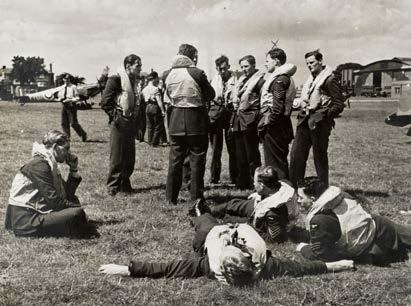
309* Boscombe Down & Ashley Walk. An archive relating to The Aeroplane & Armament Experimental Establishment, Boscombe Down, comprising approximately 50 black and white photographs, all aerial views of the camp and airfield for the period of 17 January 1941 to 15 January 1951, all laid down on card with typed captions including date, for example ‘18.3.49 A.A.E.E. Progress of work on new runway and perimeter track’, 15 x 21.5 cm, a folder of documents titled ‘The Aeroplane & Armament Experimental Establishment, Development of the Reconstruction Programme, June 1951’ inscribed ‘Secret’, containing details on the construction of many buildings for example Highpost Hangar, Armoury, Flying Control and Explosives Room, with many diagrams, 35.5 x 23.5 cm, several other related booklets including three official Ministry of Supply Reports for the A.A.E.E. Boscombe Down, dated one dated 18 April 1955 with Short Brothers & Harland Technical Library stamp, mostly additionally inscribed ‘unclassified’ in the 1960s, a plastic crate containing 100 + black and white photographs including English Electric Lightning and civil and military aircraft circa 1940-50s, together with an archive of copied research papers and photographs compiled for his book, Ashley Walk, It’s Bombing Range, Landscape and History, these notes include photographs of bouncing bombs, Dambusters crew member Johnnie Johnson, copy of the original reports for, ‘Air Attack on Dams, copy of the original report on proposed method of attacking dams by B.N. Wallis 1942-3’ (reproduced 1969), ‘A Note on a Method of Attacking the Axis Powers by B.N. Wallis ... 1960’ (reproduced 1970), a folder devoted to Pillboxes around the UK and other related paperwork
MoD Boscombe Down is situated on the outskirts of Amesbury in Wiltshire. It is the home of military aircraft testing. The Royal Flying Corps opened an aerodrome at Boscombe Down in October 1917 and it was occupied by the RAF during the inter-war years but on the outbreak of WWII in 1939, The Aeroplane and Armament Experimental Establishment (A&AEE) arrived from RAF Martlesham Heath in Suffolk and this move marked the beginning of aircraft research and testing here. The airfield soon expanded and many new buildings and runways were built.
Boscombe Down is famed for many first flights including the English Electric 1, forerunner of the English Electric Lightning, the Folland Gnat and Midge and the BAC TSR2.
Ashley Walk is a former WWII bombing range in New Forest, Hampshire. Barnes Wallis’s Bouncing bomb which was used by 617 Squadron on the Dambusters Raid was tested there. Visitors today can still see the bomb craters, an observation shelter and chalk markings made on the ground to help bombers find their targets.
(two cartons)
£100 - £200

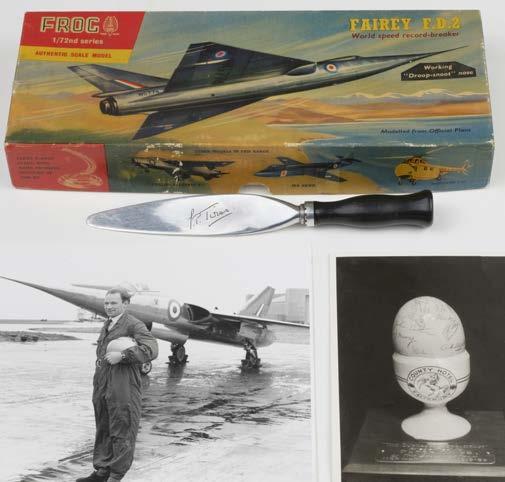
310* Fairey Delta 2. A small archive relating to Peter Twiss, Fairey F.D.2. test pilot, comprising a FD2 scrap album containing newspaper cuttings, magazine articles, and photographs including an original black and white air to air photograph of FD2 WC774 signed in blue ink by Peter Twiss and Gordon Slade, 11.5 x 16.5 cm, photograph of Peter Twiss holding a presentation piece from County Hotel Salisbury with a multi signed egg by the record breaking team who stayed at hotel, he is wearing a jacket with toggles, the RAG toggles are sellotaped in this album, 40 photographs of Twiss, FD2 in the workshop and runway, a group photograph of Twiss and the development team after breaking the air speed record, creased and a tear resulting in loss, 16 x 21 cm, letters to Norman Parker from Twiss including one dated 2000, 3 first day covers signed by Twiss, one is multisigned with 5 other signatures including Norman Parker and Group Captain K. Dennison, invitation and menu to 50th Anniversary Luncheon for Peter Twiss on 10 March 2006, a Frog 1/72nd series authentic scale model of a Fairey F.D.2. (incomplete and much missing, nice original box though!), plus a letter opener in the form of an aircraft propeller, the 13 cm aluminium blade engraved with the signature of Peter Twiss, the black composite handle inset with white ‘Fairey’ roundel, overall length 20 cm
Lionel Peter Twiss, O.B.E., D.S.C. & Bar (1921-2011) was a British pilot who held the World Air Speed Record in 1956.
The Fairey Delta 2, powered by a Rolls-Royce Avon jet engine was the first aircraft in the world to exceed a speed of 1000 mph in straight and level flight over a measured course under F.A.I. conditions. It achieved this distinction while establishing an Official World Speed Record of 1,132 mph in March 1956.

311* Fairey Rotodyne. A scrap album stamped ‘The Fairey Aviation Co. Ltd’, containing approximately 30 black and white photographs of the Rotodyne and related staff members, events etc, skillfully assembled with related newspaper cuttings, magazine articles, cutaway diagrams and other items, including a photograph of test pilots John Morton and Ron Gellatly (the latter pilot’s logbooks were sold in these rooms, see lot 456, 23 May 2024), 21 x 17 cm, various headings, ‘The First Transition’, ‘Rotodyne on Show’, there are also several photographs of a Rotodyne being used as a flying crane!, the album 35.5 x 23.5 cm, together with 28 loose black and white photographs of the Rotodyne, mostly large format, 16 x 21 cm and smaller plus Gibbings (David), Fairey Rotodyne, paperback publication signed by the author and dedicated to Norman Parker
The Fairey Rotodyne was a 1950s compound gyroplane designed and built by Fairey Aviation. It was intended for commercial and military uses. The Rotodyne featured a tip-jet-powered rotor which was driven for vertical takeoffs, landings and hovering.
On 6 November 1957, the prototype performed its maiden flight, piloted by helicopter test pilot Squadron Leader W. Ron Gellatly and assistant chief helicopter pilot Lieutenant John G.P. Morton. The Rotodyne set a world speed record in the convertiplane category on 10 April 1958 reaching a speed of 190.9 mph and was demonstrated several times at the Farnborough and Paris air shows, it is noted for lifting a 100-foot girder bridge (see photographs in this lot.
Despite its success, the programme was cancelled in 1962, largely as a result of failing to attract commercial orders. The project was governmentfunded.
(1)
£100 - £150
Twiss joined Fairey Aviation at Boscombe Down, Wiltshire as a test pilot in 1946 and flew many of the company’s aircraft, including Fairey Primer, Gannet, Delta 1 and Rotodyne compound-helicopter. He worked for two years on the Fairey Delta 2, on 17 November 1955, the FD2 suffered engine failure and the hydraulic power loss on a test flight, and Twiss managed to crash-land at Boscombe Down. He received the Queen’s Commendation for Valuable Service in the Air for this feat. The aircraft was repaired and he went on to break the world speed record on 10 March 1956. His medals, logbooks and memorabilia were sold in a Hampshire auction in 2012 which included the hardboiled egg photographed in this lot. (1)
£200 - £300
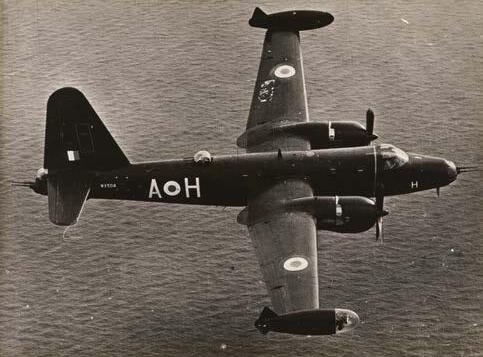
£100 - £150
312* Lockheed “Neptune”. A photograph album compiled by Squadron Leader Leonard Dickson, 203 Squadron circa 1947, all photographs with detailed captions and many include large black and white photographs of aircraft, including the Neptune, together with study guide for the P2V5 Neptune Mk 1 Aircraft, 33-page report inscribed 236 OCU RAF Kinloss 1953/54, and inscribed Flt Ly L Dickson, 203 Sqn, with two black and white photographs of the aircraft (2)

313* Luftwaffe Photographs. Blohm & Voss, Hamburg Aircraft Constructional Department promotional photograph album circa 1930s, comprising 10 large black and white photographs (23 x 16.5 cm) of the aircraft factory showing aircraft tail fins, flying boat fuselages and rudders, all laid down on black card with typed captions, the album with printed Blohm & Voss trade label, 31 x 22.5 cm

314* Martin Baker Aircraft Company Limited. Ejection From High Speed Aircraft, A lecture by James Martin, O.B.E., F.R.Ae.S. delivered to the Isle of Wight branch of the Royal Aeronautical Society on the 24th November, 1955, a 31 page booklet with numerous photographs and diagrams, 17.5 x 23 cm, together with Martin Baker Co, Report on Ejection Seat Design Part I 1944-1949, with a preface by James Martin dated 1948, 38 page booklet, 23 x 33 cm, another booklet The Story of an Enterprise 1929-1955, 80 printed pages, 22.5 x 33 cm, and some loose related literature including notes on ‘The History and Development of Martin-Baker Ejection Seats read by Wing Commander John Jewell, O.B.E., R.A.F. Martin Baker Aircraft Company at the Royal Aeronautical Society Boscombe Down Branch 4th January 1960’ (3) £100 - £200
315* Military & Civil Aviation. A vast collection of 35 mm slides (1000 +), negatives and copied photographs compiled by Norman Parker over several decades, the slide boxes mostly labelled for example, Boscombe Down, Defence of Britain, Spitfire, Larkhill, Salisbury Plain Aviation, Aircraft, Wellington, Industrial Archaeology, Upavon, Netheravon, Stonehenge, topographical slides including Castles, Cathedrals and Churches, Salisbury etc, contained in two large boxes and entirely unsorted
£100 - £150
The Shipbuilders Blohm & Voss, Hamburg was founded in 1877. It built many U-boats and ships including the Bismarck. The company diversified in 1933 and built long-range flying boats notably for the German state airline Deutsche Luft Hansa. (1)
Many of these photographs have been used by Norman Parker for the many articles and books written him over the course of his career as both an aviation specialist and Stonehenge / Wiltshire expert.
Please note this is a very mixed collection and viewing is strongly recommended.
(two cartons)
£200 - £300
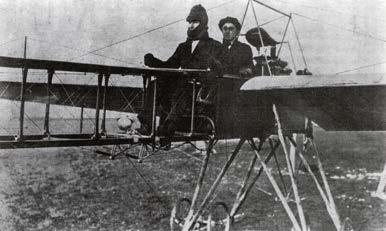


316* Pioneer Aviation. “Possibly the first officially contracted test pilot in the UK”, Aeronautical Syndicate Ltd (ASL), the original contract issued to pioneer aviation pilot Bertie Woodrow by The Aeronautical Syndicate Ltd dated 18 March 1910, the typed contract with 6 clauses for example ‘The said Bertie Woodrow shall at all times during the period of his employment use his best endeavours for the success of the business of the Syndicate and shall not undertake any other business or in any Monoplanes Aeroplanes or Flying Machines belonging to any other person persons or Corporation than the Syndicate without the consent in writing of the Syndicate.’, the contract is signed in black ink by Woodrow and witnessed by William Carrington of 17 Adelaide Square Windsor, with three additional signatures by two Aeronautical Syndicate directors Charles Worsley Battersby and Herman Rudolph Schmettau plus secretary Douglas W. Davidson alongside the common seal of the Aeronautical Syndicate, folded and closed tears along the folds, together with four copied photographs of showing the Valkyrie B Racer piloted by Mr Barber, plus a facsimile copy of the Flight periodical dated 1 April 1911 which reports on the Valkyrie Racer, together with a folder of research and copied photographs documenting the crash, memorials etc these compiled and used by Norman Parker for presentation purposes plus Barber (Horatio), The Aeroplane Speaks, Fourth Edition, inscribed ‘J.H. Watson 6th Bn East Lancashire Regt 10.1.18’
The Aeronautical Syndicate Ltd was formed in April 1910, they appointed Horatio Barber as their general manager. Barber was an early pioneer of aviation who had made his fortune in Canada and developed a passion for aeronautics and on his return to England, he rented a workshop in some disused railway arches at Battersea (next to the Short Brothers), developing a monoplane with the help of his friend consulting engineer, Howard Wright. The monoplane was completed and delivered to Larkhill, Salisbury Plain in June 1909.
Barber joined the Aeronautical Syndicate Ltd and continued his developments. The first aircraft was the ASL monoplane No.1., which was of canard layout with a pusher propeller. He employed his chauffeur Bertie Woodrow (1888-1969) as his test pilot, Barber is noted to have said ‘You drive my car so you had better drive my aeroplane!’. It is noted on the A.S.L. website that Woodrow was possibly the first officially contracted test pilot in the UK. The aircraft was overweight and failed to fly. It was later sold off and believed to have crashed on its first real flight.
Barber’s second machine was the A.S.L Monoplane No.2 which was delivered to Larkhill in the spring of 1910. Woodrow flew this on many test flights, eventually crashing it when the foreplane was experimentally set at too steep an angle.
Barber applied for Patent No 7289 (Improvements in Monoplane Flying Machines) which led to the Valkyrie series of Canard monoplanes, this was the syndicate’s most successful aircraft. Barber was later taught to fly by Woodrow, and he gained his RAeC Aviators Certificate in 1910. Barber flew a Valkyrie from Brighton to Horsham in 17 minutes. The syndicate then moved their operation to the newly erected sheds at Hendon in September 1910 and the company closed in 1912.
(1)
£700 - £1,000
317* Pioneer Aviation. Nieuport 253 B.4 test pilots’ logbook kept by Major Basil Herbert Barrington-Kennett, the logbook mimeographed and inscribed in ink, commencing 29 November 1911 ‘went out to Shrewton and back. Turning to make ... circuit, the ... indicator dropped to zero. I landed on Kingston Down, breaking a bolt in undercarriage. Discovered that bolt had jumped out and also caused indicator to cease working. Manhandled machine back behind car ...’ each date has a secondary report written by the pilot’s navigator, final entry 9 August 1912 ‘Buckled wheel whilst “tax-ing” buckled axle spinning (ditto), both replaced, engine running well’, hardback binding inscribed ‘Log Book’, “Nieuport” 253 B.4.’
The Air Battalion of the Royal Engineers was formed at Larkhill, Salisbury on 1 April 1911 from an expansion of the School of Ballooning which had been part of the British Army since 1888. Major B.H. Barrington-Kennett was tasked with flying B.4. Nieuport 253 which entered service over the winter of 1911. On 14 February 1912, he won the Mortimer Singer prize of £500 when he flew for a record-breaking 4 hours and 51 minutes which covered 249 miles and 840 yards, and continued as the longest flight by an army officer flying with a passenger.
Major Basil Herbert Barrington-Kennett, M.I.D. was an officer of the Grenadier Guards but attached to the Aerial Battalion. He played an important part in the development of the Royal Flying Corps from the old Air Battalion. For some time he was Adjutant of the RFC at Farnborough and was noted for his singular personal charm which stood him in good stead. When WWI broke out he was appointed to the Staff as Deputy Assistant Adjutant and QuartermasterGeneral, subsequently leaving the RFC to serve with his regiment, the Grenadier Guards. He was killed in action leading his men against the Germans on 18 May 1915. Barrington-Kennett is commemorated in Le Touret Military Cemetery, Richebourg-L’Avoue, France. His headstone is inscribed Per Ardua Ad Astra (through adversity to the stars). His two brothers were also killed during WWI. (1) £700 - £1,000
Each lot is subject to a Buyer’s Premium of 20% (Lots marked * 24% inclusive of VAT @ 20%)
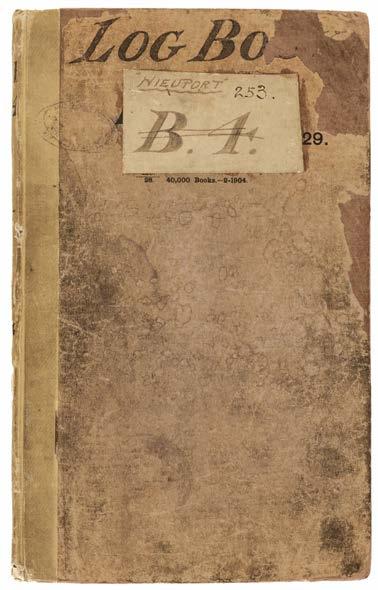
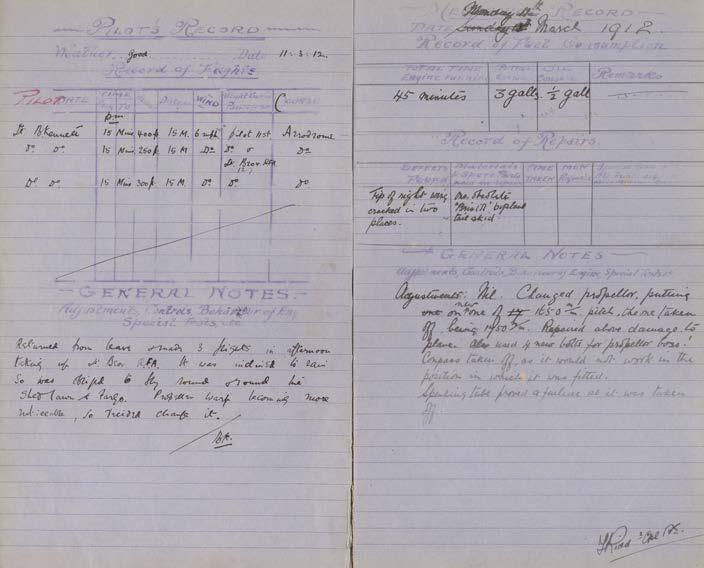
318* Propeller. The Bristol Scout propeller blade recovered from Major A.W. Hewetson’s monoplane which crashed near Larkhill in 1913, the laminated mahogany blade with original Bristol Propeller decal, additional holes having once been used as a coat rack and applied with captioned historical photographs, 128 cm long
The Bristol-Prier monoplane of No 108, Bristol School of Flying was flown by Major Alexander William Hewetson of 6th Battery, Royal Artillery crashed near Larkhill, Salisbury Plain, Wiltshire on 17 July 1913. Hewetson had been undertaking training exercises and the aircraft overbanked, dived and caught fire. Hewetson was thrown clear of the aircraft and was killed instantaneously. The aircraft, after striking the ground caught fire. Hewetson is buried at Deansgrange, Blackrock, Co. Dublin but a memorial cross was erected on the south-east corner of Fargo Plantation half a mile from Stonehenge.
There is a secondary memorial at Larkhill which was rededicated in 1997. Norman Parker was instrumental in this and the propeller blade is likely to have come into his possession around this time having been used as a coat rack in a local house since 1913.
(1)
319* Royal Flying Corps. A WWI pilots logbook kept by Lieutenant George Herbert Heaton, RFC late1/1st Kent Cyclist Battalion, commencing 30 April 1917, training exercises in Ismalia, Egypt, final entry 23 July 1918, hardbound publication, the cover inscribed with parent regiment, the title page with commission dates and record of service, spotting and wear to the spine, 19 x 12.5 cm
George Herbert Heaton served in Ismalia from 30 April to June 28 1917 (57 Reserve Squadron), Waddington, 21 August to 11 September 1917 (51st Training Squadron), Rencombe, 6 October to 23 November 1917 (62 Service Squadron) and Boscombe Down 24 November 1918 (6.T.D.S.), 14 types of aircraft flown including BE2B/C/E, DH6, Sopwith Pup and Fokker all training exercises including aerial gunnery.
(1)
£100 - £150
£300 - £500

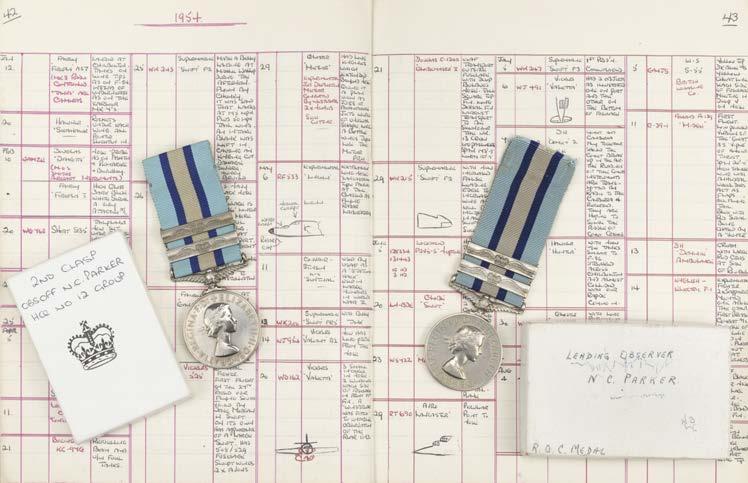
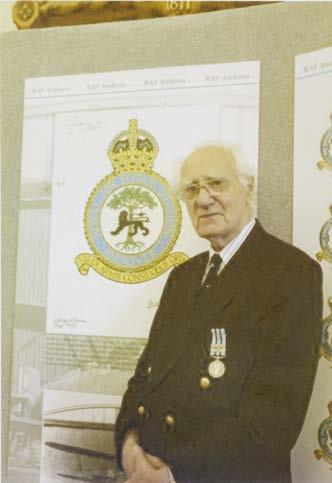
320* Royal Observer Corps. A vast and comprehensive archive relating to Head Observer Norman Parker, Royal Observer Corps who served in Hampshire and Wiltshire for a period of 37 years from 1949-1986, comprising, Royal Observer Corps Medal, E.II.R., 2nd Issue with Second and Third Award Bars (L/Obs N C Parker ROC), extremely fine in card box of issue inscribed ‘2nd Clasp ObsOff N.C. Parker Hq No 12 Group), together with another Royal Observer Corps Medal, E.II.R., 2nd Issue with Second and Third Award Bars (Leading Observer N.C. Parker), extremely fine in card box inscribed ‘Leading Observer N.C. Parker ... R.O.C.’, both named correctly and entirely as issued, with dress miniature award plus a typed slip accompanies the medals issued by the R.O.C. giving a record of service
Seven Royal Observer Corps Certificates for First Class Proficiency for the period of 14 March 1954 to 12 March 1961 (Group 14), two certificates issued by The Aircraft Recognition Society for Second Grade Test in the Recognition of Aircraft dated 18 March and 21 October 1953
A wooden index box containing photographic air recognition cards together with another box of silhouette air recognition cards, each circa 1950s an additional wooden box containing index cards in alphabetical order recording aircraft movements circa 1939 to 1950
Several original logbooks kept by Parker recording thousands of aircraft movements for the period of 27 March 1947 to 26 April 1954, the logbook records De Havilland “Venom” F.B.I. WE258 a jet night fighter which crashed on 26 November 1952 after a mid air collision bursting into flames, the pilot was killed but seven officers survived (copied newspaper articles are included), other logbooks for 27 April 1954 to 26 June 1955, 1 January 1956 to 30 October 1958 and 31 October 1958 to 3 March 1966 plus there is also an additonal logbook for 1 September 1957 to 30 December 1961 giving location, aircraft type for example on 29 February 1960 22 aircraft were spotted including Meteor 7, Sea Vixen, Viscount 800 etc
twelve duplicate manifold books circa 1962-1983 with copies of letters written by Parker for internal Royal Observer Corps use WWII Air Ministry Silhouettes of Royal Air Force British manual in printed September 1939, Spotter books, personal diaries, pocket jotter filled with aircraft types, training manuals, personal papers and invitations and luncheon menus, maps and other related items Norman Parker (1926-2024) was an Observer Officer in the Royal Observer Corps from June 1949. He was initially stationed on the Hurstbourne Tarrant Post in Andover before moving to the small village of Grateley in Hampshire and then on to Amesbury in Wiltshire where he served as an Observer, Leading Observer and Head Observer. He was commissioned in 1963 taking on all posts between Chippenham and Newbury and Downton and Marlborough. A total of 22 posts and the logbooks included in this lot reflect his immensly busy anti-aircraft role! This was reduced to 8 when he assumed his nuclear role. During this period the Corps had many exercises and became a very efficient organisation which in the event of a real need, the Corps could fulfil its war time function within 4 hours. He served both as Group Officer and NRC Officer in No 12 and 14 Group. He retired from service in 1986 having spent the last 16 years of service in charge of a Corps Operations Room display for the RAF at Upavon and Andover.
The Royal Observer Corps was dispanded in 1991. (two cartons)
£700 - £1,000


321* Safety on the Sea. An archive relating to Pains Wessex manufacturers flare guns and other safety apparatus, circa 194050s, various black and white photographs of trials with flare guns, cannisters, one captioned ‘A.W.L. Schermuly 1905 aboard cableship Dacia, 12 x 7 cm, aerial views of High Post airfield, Wiltshire, factories and promotional photographs including Schermuly Chute Installation on a Skeeter and Auster dated 1960, press and commercial photographs for Waeco Ltd, including one showing cannisters displayed for sale, 20 x 25 cm, another showing the 1956 Olympic torch in which the fuel packs were made by Waeco Ltd, Pyrotechnic Enginners in Salisbury, related books including ‘The First 60 Years, The story of the development of The Schermuly Pistol Rocket Apparatus Ltd, issued on the occassion of its Diamond Jubilee 1897-1957’ by C.R. Thompson, together with two plastic crates containing printers blocks and glass plate negatives of flare guns, cannisters and related items which would have been used for advertising and promotional purposes circa 1950s, plus an original watercolour and gouache on card illustration for the No 3 Schermuly flare gun catalogue (page 9), showing a ship in distress and a crew member firing a flare, 6 x 13 cm, plus two Victorian photographs, each laid on J Martin, 14 West India Dock Road E trade cards, one showing a tin inscribed ‘Rocket Apparatus’, each 16 x 10.5 cm
Norman Parker worked for Pains Wessex from 1976 as their Control Manager. There are many original letters to and from Parker included in this lot that relate to his time with the company, as well as technical diagrams and related epherema.
Pains Wessex is known to be the oldest marine distress signal brand with origins back as far as 1620. The company applied for the first patent of a marine distress flare in 1873 and in the 1980s occupied buildings on the High Post Airfeld between Salisbury and Amesbury. Here they manufactured explosives and fireworks.
William Schermuly left his career as a seamen in 1880 and began working on ways to save the lives of men who were in distress or in trouble at sea.
In 1897 following a decade of experimenting with various ideas and methods, Schermuly developed a practical ship line throwing appliance, however it would not be until 1920, with his son that Schermuly would invent the Pistol Rocket Apparatus, and a series of demonstrations around the world was started. (a carton) £300 - £500
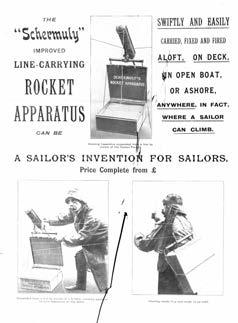
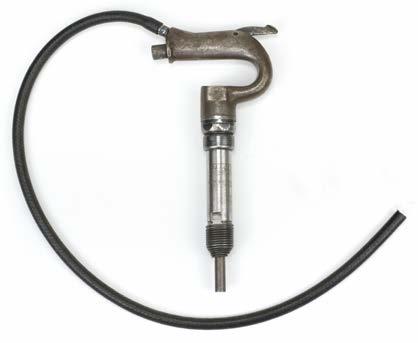
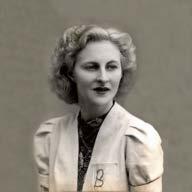
322* Secret Spitfires. A WWII Spitfire pneumatic rivet gun by John Macdonald & Co Ltd, Pollockshaws, Glasgow, stamped ‘Size 4 No E421893’, the grip stamped with war department arrow and serial no 2994/55, 31 cm long, together with a tin of rivets and related items
Provenance: Norman Parker, Aviation Historian. Having formerly belonged to Bette Blackwell (1921-2018). Bette’s story is told in the 2016 documentary “Secret Spitfires” in which this rivet gun is featured,.
Bette Blackwell was one of thousands of civilian women to be recruited during WWII. She was part of a secret workforce producing Spitfires in factories hidden in Salisbury and the surrounding areas.
The Luftwaffe bombed Southampton in what is commonly referred to as the “Southampton Blitz” on 26 September 1940. They targeted Supermarine Spitfire Factories near Woolston. Having reduced the number of factories, production was moved more inland to Salisbury.
Bette Blackwell was called up to help with the war effort and told to report to Wessex Motor Garage unbeknown that this was now a factory that build Spitfires. On her arrival she was overwhelmeled by the noise and fumes of the machines. She was expected to master the tools and techniques of riveting quickly. The factory produced fuselages and tail unit leading edges and riveters worked in pairs to hold the rivet up to protect the thin aluminium sheets. Bette often did the job of ‘holding up’ because she was small and could fit inside the body of the aircraft.
She worked 12 hours a day for 6 days a week and the women had to hit delivery targets. They were well rewarded for the hardwork, well paid and regular bonuses. Bette worked in the factory for 2-3 years but never saw the aircraft that she worked on move out of the factory owing to the secrecy. Salisbury remained unbombed unlike Southampton because of the level of “top-secrecy”.
Over 2000 Spitfires were built in Salisbury (10% of all Spitfires produced during WWII).
(1)
£200 - £300
323* Spitfire Instruments. A Merlin compressor, inscribed in relief ‘Type SH6/2/P Compressor 137G/3’, with manuscript label inscribed ‘FAO Fred Ballam’ (Westland), together with an altitude meter scratch mark 2849/55, port and starboard brake indicator numbered 630/63 and other instruments, a metal 6 aperture instrument panel, a large black and white photograph laid on card showing a Spitfire cockpit, 26 x 29 cm, relics recovered from Spitfire JF318 which crashed over Amesbury, Wiltshire on 25 September 1944 including gun cartridge cases, two WWII RAF compases, P8 and P11, each in wooden transport case, a Marconi Crystal Junior and other related items (a carton)
£200 - £300
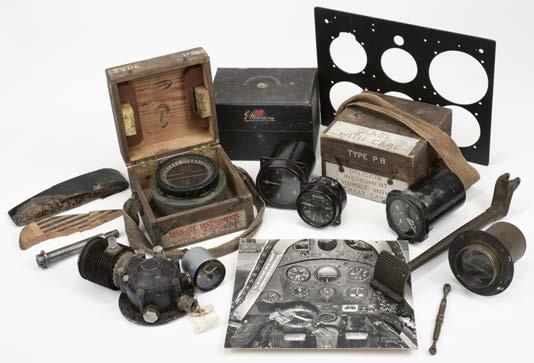

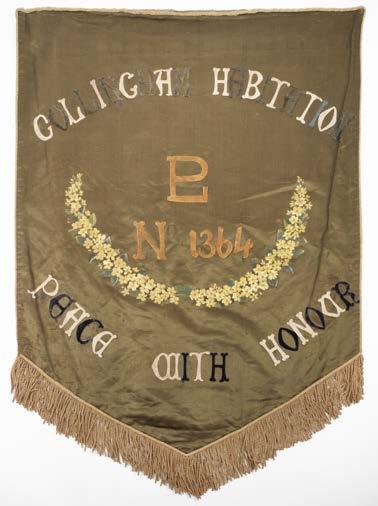
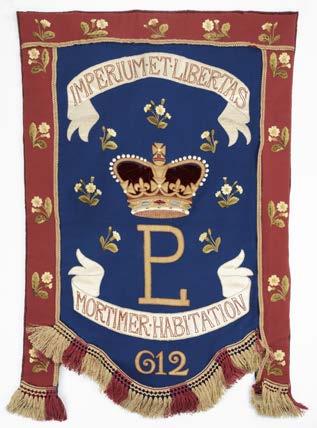
324* The Primrose League. A vast collection of Primrose League memorabilia, including a Grand Master white metal and enamel 10-point star, with six Special Service award bars for 1889, 1892-1896 inclusive with ornate top ribbon bar, 6 cm across with a pin to the reverse, together with 5 further 10-point star medals plus three breast stars plus 200 + badges and award bars including Knight's and Dames full dress badges, Shield of Service, two velvet banners, The Primrose Dames Needle Compendium, related paperwork, books, crested china and other items
Provenance: Norman Parker, President of The Amesbury History Centre. Norman's collection is featured in a four-part article written which he wrote for the local history society (a copy is included with the lot)
The Primrose League was founded in 1883 and was an organisation for spreading Conservative principles in the UK. It was named after the former prime minister Benjamin Disraeli's favourite flower. Queen Victoria sent a wreath of primroses to his funeral on 26 April 1881 on the day of unveiling Disraeli's statue all conservative members of the House of Commons were decorated with a primrose. (a carton)
Each lot is subject to a Buyer’s Premium of 20% (Lots marked * 24% inclusive of VAT @ 20%)
£700 - £1,000


325* Air Ministry Binoculars. A pair of WWII RAF binoculars by Watson-Baker Co Ltd dated 1943, the X6 binoculars with Air Ministry stamp and numbered 6 E/293 7047, leather sheaths of blackened brass body, optics a little grubby but working, with canvas neck strap and brown leather case stamped A.M and Wray 6E/293 London
(1)
£70 - £100

326* Aircraft Windows. A group of seven WWII period aircraft windows, unidentified, each with perspex window, lightweight aluminium frame with four fixing brackets, with serial numbers 6061
T6 and F L 617, 50 cm high x 44 cm wide x 4 cm deep (7)
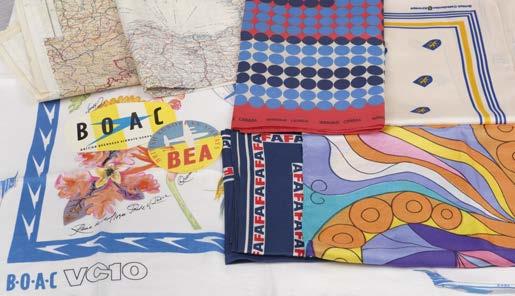
327* Airline Silks and Luggage Labels. A collection of 24 silks, including a BOAC VC10 floral printed silk scarf, circa 1960s, two Qantas 'Australian Wildflowers' printed silk scarves, circa 1960s, three CAAC (Chinese Aviation Administration of China) printed silk handkerchiefs, two depicting buildings (pagoda/skyscrapers), the other depicting a pavilion on a rocky outcrop, two blue and red Wardair Canada silk scarves with circular pattern, two Air France scarves, one printed with all-over pattern of aircraft and the globe on a maroon ground, the other with blue and red double border repeating the letters 'A F' on a blue ground, and Finnair, British Airways and other airlines, together with two WWII escape maps, one for Southern Europe, the Germany, Slovakia and Hungry, plus air luggage labels and other related civil aviation ephemera (cigarette cards, scraps, stamps, etc.)
(a carton)
£200 - £300
£200 - £300

328* Airship Shed Plaque. WWI RNAS airship shed brass plaque circa 1917, the rectangular plaque cast ‘Delacombe Marechal & Hervieu Ltd, Transportable Airship Shed, Type B.S., Serial No 4, British Made, 166 Piccadilly London. W.’. with four holes for fixing, 9.5 x 16 cm
Delacombe Marechal & Hervieu Ltd supplied 16 airship hangars for the Royal Naval Air Service (RNAS) during WWI. They were made of timber and corrugated metal with a large sloped roof to accommodate the airship. An example of this type of hangar can be found at Moat Farm on the Hoo Peninsula, Kent. This example is believed to have originated from RNAS Kingsnorth which is in close proximity to St. Mary Hoo, where it was later relocated circa 1930.
(1)
£150 - £200

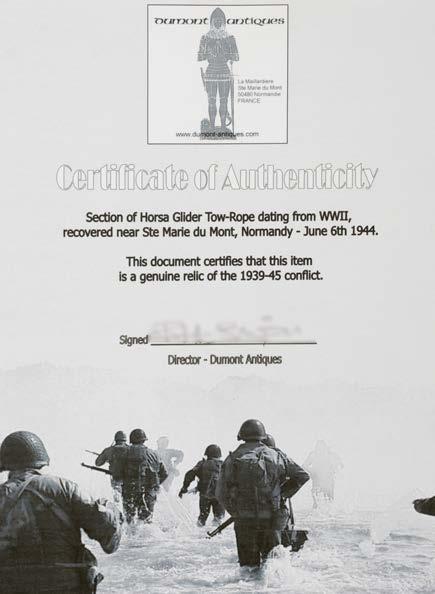
329* Airspeed Horsa. A WWII Horsa Glider Tow-Rope reputedly recovered from a downed glider on D-Day, thick twisted rope complete with telephone cable woven into it so both pilots could converse, approximately 262 cm long with rusted shackle
The lot is accompanied by a “Certificate of Authenticity” provided by Dumont Antiques of Normandie, France and states ‘Section of Horsa Glider Tow-Rope dating from WWII recovered near Ste Marie du Mont, Normandy - June 6th 1944. This document certifies that it is a genuine relic of the 1939-45 conflict’.
According to the information included it belonged to a Mr Charles Gosslin who was chauffeur driving high ranking French military officers during the German invasion of France. He was captured and sent to a POW camp in Germany but he managed to escape and returned to the village of Ste Marie du Mont (where his parents owned a farm). He was hiding at the farm on 6 June 1944, when he was awoken at about 7am by loud bangs coming from the area of ‘La Madeleine’ (Utah Beach). In a field behind the farm was a downed glider. Everyone on board was dead and the glider riddled with bullet holes. Attached to the front was a section of rope, which he kept. The interview with Mr Gosslin took place on 6 June 2006 (aged 97) and a copied photograph of Mr Gosslin.
(1)
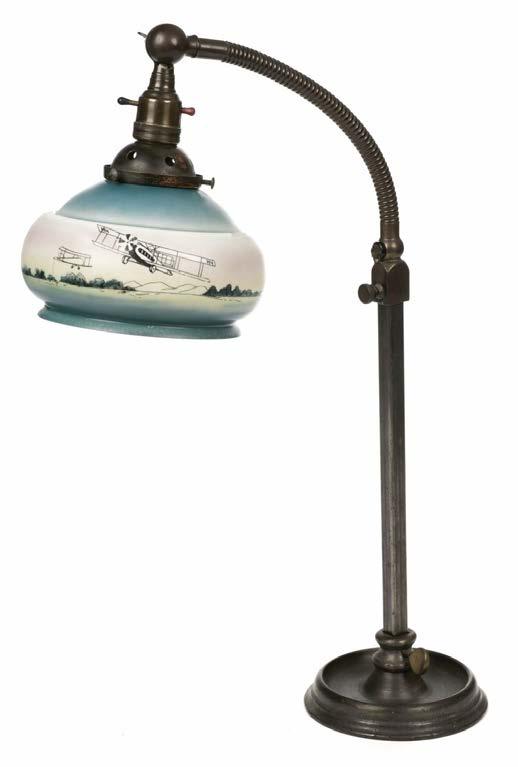
£200 - £300
330* Aviation Table Lamp. An early 20th-century Electric Desklamp, circa 1920s, of machinist-pattern design with cast metal circular-base and square-columnar pillar-support with copper and brass adjustable head, retaining a fine art-deco glass shade depicting an early biplanes and airliner above an airfield with landscape background, having hand-painted decoration on green and pastel glazed ground, 51 cm high (1)
£200 - £300

331* Boulton & Paul. An aircraft manufacturer’s enamel sign probably for advertising or factory use, the shaped single sided metal sign with white font on a blue ground, six holes for wall fixing, 102 cm long
Boulton & Paul Ltd was a general manufacturer from Norwich. The company was established in 1797 as an ironmonger’s shop. In 1905 the company started its construction engineering division. In 1915 it became involved in aircraft manufacture more widley known for the production of 550 Royal Air Force FE.2b. They also built more Sopwith Camels than any other manufacturer. The company is also noted for providing the structure for the R101 airship which was transported to RAF Cardington in Bedfordshire. (1)
£300 - £500

332* Car Badge. Cinque-Ports Flying Club Car Badge, circa 1930s, pre-war members’ club badge ‘Lympne Airport Kent’, evocative imagery of biplane in cloudscape and winged motif, partguilloche enamel on chromed brass, excellent condition Rare.
(1)


£250 - £350

333* Car Badge. Cotswold Aero Club, circa 1930s, an early pre-war members' car badge for the aerodrome at Down Hatherley, winged motif with decorative lettering design, enamel on nickel-plated brass, a little wear
During the late 1920s to early 1930s this popular local was home of Sir Alan Cobham’s Air Circus near Churchdown in Gloucestershire. Rare. (1)
£100 - £150

334* Car Badge. Derby Aero Club, circa 1930s, pre-war members car badge, artdeco design of three-blade propeller on winged format, enamel on gilt brass, excellent condition (1)
£100 - £150
335* Car Badge. Herts and Essex Flying Club and Wolverhampton Aero Club, circa 1930s, pre-war members' car badges, winged motifs, decorative relief designs, enamel on chromed brass, some wear (2)
£100 - £150

336* Car Badges. Midland Aero Club and Coventry Aeroplane Club, circa 1930-50, two membership car badges of the pre and early post-war period of popular private flying, distinctive motif designs, enamel on chromed brass (2)
£100 - £150
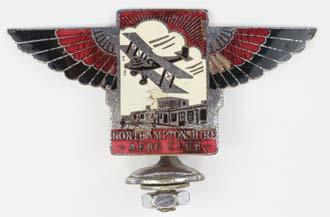
337* Car Badge. Northamptonshire Flying Club, circa 1930s, pre-war members' car badge showing a Biplane flying over the art deco clubhouse, enamel chromed brass with pillar mount, patinated condition Scarce. A well-established pre-war flying club patronised by Amy Johnson and notably famed for its original clubhouse (now a Hotel) which stands at the heart of this busy aerodrome and home to 'The Grace' Spitfire. (1)
£300 - £400
338* Car Badge. Redhill Flying Club, circa 1930s, a pre-war members car badge, with art deco design including bird motif design, enamel on chromed brass, a little wear (1)
£100 - £150

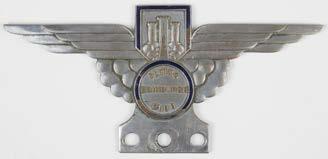
339* Car Badge. Scottish Flying Club and Edinburgh Flying Club, circa 1920-1930, two early pre-war members car badges, comprising heavy and deep-relief winged format with lion rampant SFC motif, fine art deco winged design with castle motif for the latter, both enamel on chromed and nickelled brass
Rare. (2)
£150 - £200
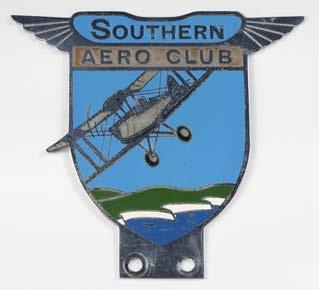
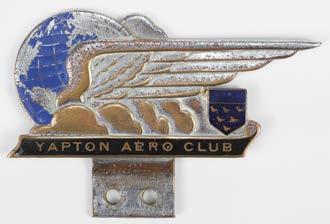
343* Car Badge. Yapton Aero Club, circa 1920s, early pre-war members car badge for the Sussex aerodrome, a fine art deco relief winged design with world globe and cloudscape motifs, enamel on chromed brass, patinated condition
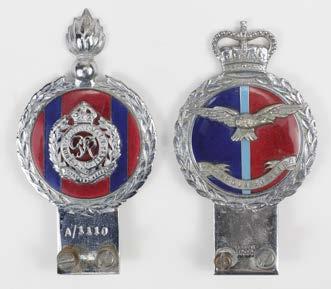
340* Car Badge. Southern Aero Club, circa 1930s-1940s, pre or early post-war issue members' car badge for the Shoreham-based aerodrome, showing a DH Gipsy Moth type biplane flying over the White Cliffs of Dover, enamel on chromed brass, in very good condition Scarce. (1)
£200 - £300

341* Car Badge. Surrey Flying Club, circa 1930-1940, pre or early post-war members car badge, showing a DH Tiger Moth biplane, enamel on brass, possibly pre-proof sample, excellent condition (1)
£200 - £300
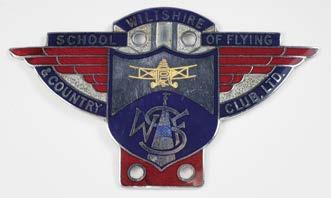
342* Car Badge. Wiltshire School of Flying & Country Club, circa 1930s, pre-war members car badge, elaborately crafted art-deco winged design with biplane and church-spire motif, enamel on chromed brass, excellent condition (1)
£200 - £300
Scarce. Located on the South Coast near Bognor Regis: later known as RAF Ford during WWII following requisition and thereafter. (1)
£200 - £300

344* Car Badge. Yorkshire Motor Traders Flying Association, circa 1920s, early prewar members car badge, art deco winged design incorporating the White Rose county motif with entwined initials cypher, enamel on nickel plated brass, patinated condition (1)
£200 - £300
345* Car Badges. WWII and Later RAF & Regimental Car Badges, circa 1940s-50s, members badges by J.R Gaunt of London for RAF ‘Per Ardua ad Astra’ and Grenadier Regiment stamped no. A/1110, part guilloche enamel on heavy chromed brass, fine quality, very good condition. (2)
£100 - £150
346* Car Badges. WWII and Later RAF Car Badges, group of three enamelled badges for RAF members’ clubs, comprising rare ‘The Pathfinders Club’ elite force, RAF Association early edition, and RAF ‘Malcolm Clubs’ badge (3)
£100 - £150
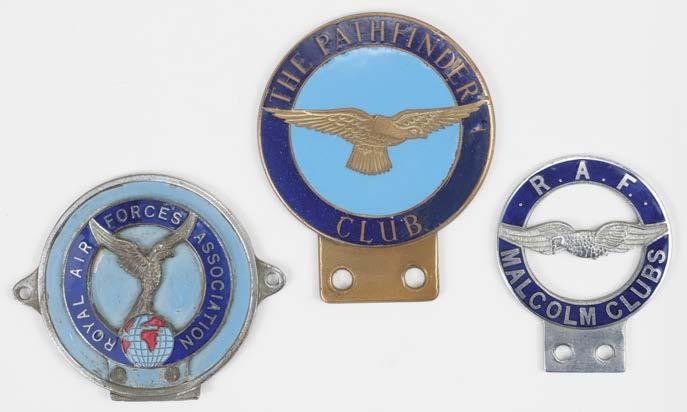
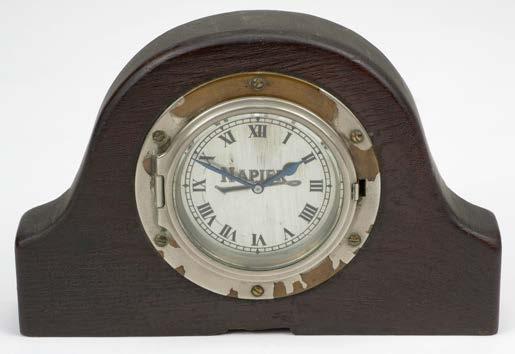
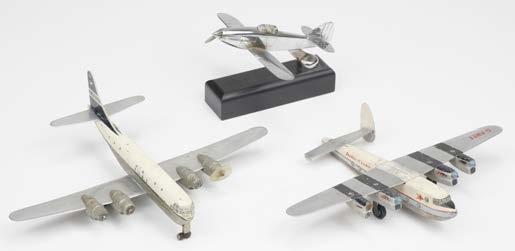
347* Car Clock. Napier Motors Dashboard Clock, circa 1920, manufacturer’s named clock probably for a motorcar, nickel plated brass casing with hinged front glazed lens, eight day movement with incised numerals, batons, and inscribed ‘Napier’ logo to silvered dial, good working order, some loss to nickel plated casing, sometime fitted to stained oak mount for mantel display, 9 cm diameter (1)
£200 - £300
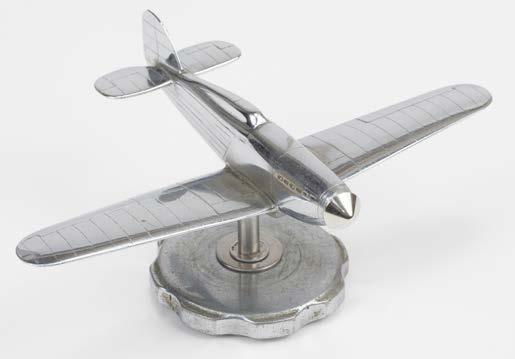
348* Car Mascot. A WWII RAF Hawker Hurricane Car Mascot, example of the famous Battle of Britain Fighter Defence aircraft of the Allied Forces, chrome-plated bronze with striated details and markings, mounted upon a pre-war radiator-cap from a Morris car, propeller lacking, wingspan 19 cm (1)
£200 - £300
349* Car Mascot. An inter-war monoplane car mascot circa 1930s, with an articulated two-blade propeller, engraved detail to the fuselage, wings and tailfin, perspex cockpit, 15.5 cm long, 16 cm wingspan, mounted on a black composite base, together with two naive model aircraft, comprising BOAC Calyso, G-ANUB, wooden fuselage and aluminium wings and tailfin, 22.5 cm, 30 cm wingspan and Skyways of London G-AHFF, in wood and aluminium, 20.5 cm long, 27 cm wingspan, last two lacking components (3)
£100 - £150
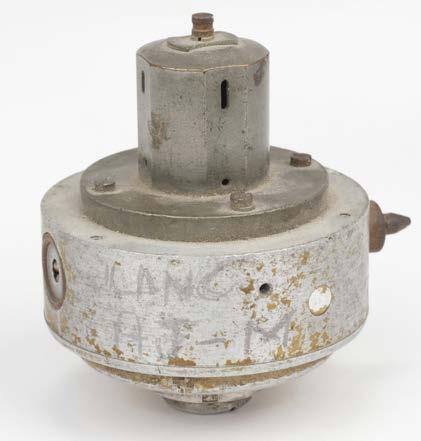
350* Dambusters. A relic reputedly recovered from Lancaster AJM (M Mother) flown by John Vere 'Hoppy' Hopgood on the Dambuster Raid, 16/17 May 1943, the relic unidentified but inscribed 'Lanc AJ-M', and additional scratched mark 'J138', aluminium with steel ball bearings, approximately 7 cm diameter Reputedly found by the vendor's uncle (a retired Beaufighter pilot) when he visited the crash site of Hopwood's Lancaster in the 1960s. He had been working as a consultant on the Mohne Dam and with a keen interest in aviation history was invited to meet a German veteran of the Dambusters Raid at the crash site. It was then handed to the vendor, a 6-year-old aviation enthusiast and has been in their collection until now. There is no documentation or provenance and therefore, sold as seen. All proceeds from this sale are being donated to the Royal Air Force Benevolent Fund. (1)
£70 - £100


351* De Havilland Mosquito. A WWII escape hatch from a Mosquito, two curved perspex panels with smaller circular panel, red stencilled instructions to the aluminium frame, a yellow release handle on the opposite side, age wear and general scratches, commensurate with age and service, 54 x 60.5 cm
Provenance: The vendor’s father, thence by descent. (1)

352* Desktop Model. De Havilland Comet, B.O.A.C., G-ALYZ metal desktop model circa 1950, possibly for use as a travel agents display piece, 22 cm long, 26 cm wingspan, presented on a curved wooden stand with lozenge shape base and an engraved plaque
The De Havilland Comet was the first passenger jet to fly in 1949. G-ALYZ was the fifth Comet produced for the British Overseas Airways Corporation (BOAC).
In October 1952 BOAC G-ALYZ Flight 115 was en route from London to Johannesburg with stops in Rome and then Cairo. However, the aircraft crashed taking off from Ciampino Airport in Rome, all 43 passengers and crew survived. This crash market the first hull-loss of a Comet.
(3)
£300 - £500
£150 - £200
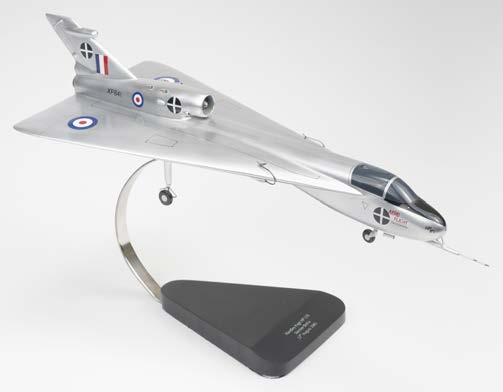
353* Desktop Model. Handley Page HP 115 Slender Delta XP841 built by Nice Airplanes Limited, a fine wooden model with silver finish and RAF roundels, a long pitot tube and landing gear, 49 cm long, 19 cm wingspan, presented on a curved stand, as new with original packaging
Provenance: Purchased from Nice Airplanes Limited, circa 2013. The Handley Page HP.115 was an experimental delta wing aircraft built to test the low-speed handling characteristics expect from the slender delta configuration anticipated for a future supersonic airliner. On 17 August 1961, it performed its maiden flight.
(1)
£150 - £200
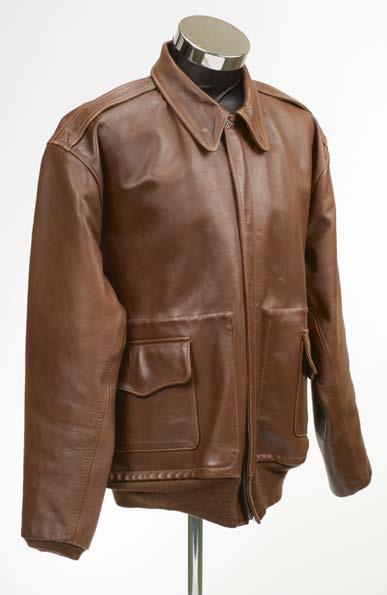

354* Doolittle Raid. A WWII-style American Air Force Type A-2 flying jacket, size 48, soft brown leather with two pockets to the front, the brown cloth lining stamped ‘352nd Ftr Grp’ and signed in black ink with the original signatures of five Doolittle Raider veterans, comprising David M. Jones, Richard E. Cole, Tom C. Griffin, David J. Thatcher and Edwin W. Horton Jr, 72 cm long, inner arm 47 cm
The addition of the signatures was a personal courtesy to the jacket’s original owner (not part of any limited-edition release or other commercial offering). The jacket was subsequently gifted to the current owner, aviation author and publisher Nigel Macknight.
Nigel has written and signed a letter to accompany the jacket and also added a dinner menu from the Doolittle Raiders’ UK visit, which has been signed by Cole, Griffin, Horton, Jones and Thatcher, it also bears a sixth signature, that of Dr George Gumbert, another notable American aviator.
The Doolittle Raid, also known as the Tokyo Raid was an American air raid on Japan during WWII. It was carried out on 18 April 1942 and was the first American attack on the Japanese homeland since the Japanese bombing of Pearl Harbour on 7 December 1941.
The carefully planned raid was designed to boost morale after Pearl Harbour and demonstrate to the Japanese that they, too, were vulnerable to air attacks. Lieutenant Colonel James H. Doolittle led the mission, which involved 16 modified B-25 Mitchell bombers launched from the USS Hornet, an aircraft carrier in the Pacific. The bombers were not designed for aircraft carrier operations, making the mission very risky.
The bombers targeted several cities including Tokyo, Yokohama, Nagoya and Kobe. Each aircraft carried a five-man crew and dropped incendiary and high-explosive bombs on military and industrial targets. After the bombing, the crew were to continue to China as they could not return to the aircraft carrier due to lack of fuel. 15 of the 16 bombers either crash-landed in China or were abandoned by their crew. One crash landed in Russia and was interned there. Out of the 80 crew members, 3 were killed during the raid, 8 were captured (3 were executed) and the rest escaped or rescued with the help of Chinese civilians.
The raid embarrassed Japan's military leadership and prompted them to accelerate plans to attack the decisive Battle of Midway in June 1942, which became the turning point in the Pacific War.
(1)
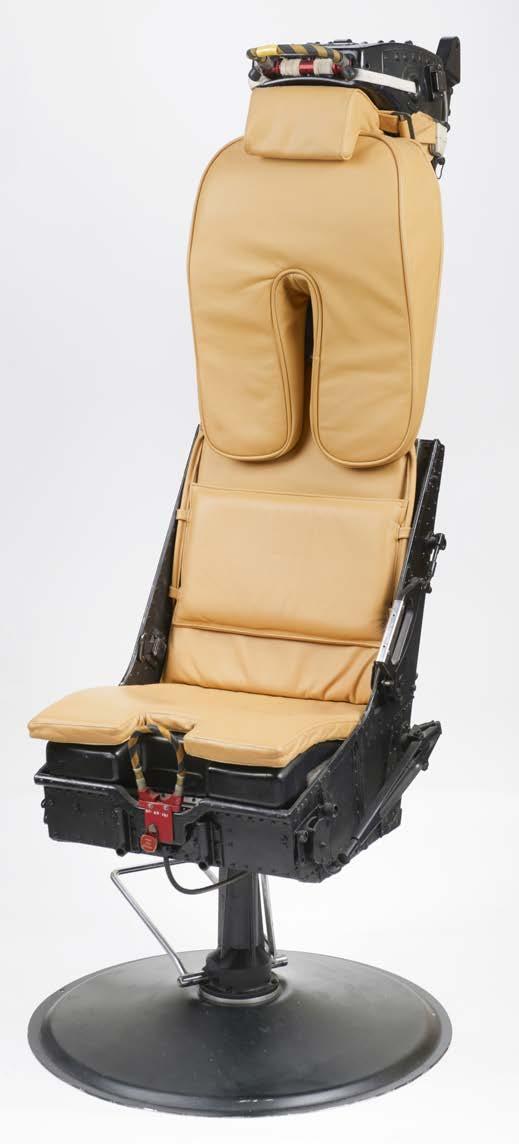
355* Ejector Seat. A Martin Baker ejection seat from a Jet Provost, Mk4, circa 1960s currently used as an officer swivel chair, modern tan leather upholstery which have been made to replicate the original parachute harness, 157 cm high
The BAC Jet Provost was a jet trainer used by the RAF between 1955 to 1993. It was originally developed by Hunting Percival and later produced by the British Aircraft Corporation (BAC).
(1)
£700 - £1,000
£1,000 - £1,500
356* Empire Flying Boat. A scarce art deco commercial airline passenger’s seat from an Empire Flying Boat circa 1930s, the reclining seat upholstered in cream leather with green piping, quilted cushions with headrest, one side incorporating a reading light, the left armrest with a light switch and steward button, the back of the seat with two pockets, general wear commensurate with age and use, approximately 108 x 60 cm, together with three related advertising boards (these modern copies for display) framed and glazed
Private collection, Surrey.
(1)
£6,000 - £8,000

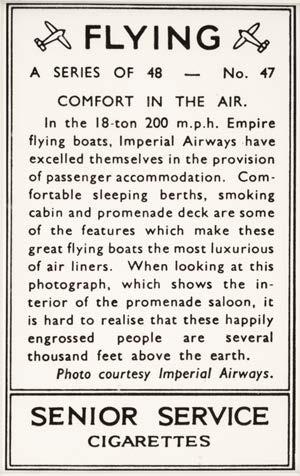
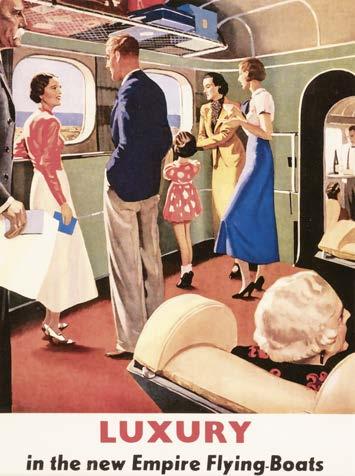

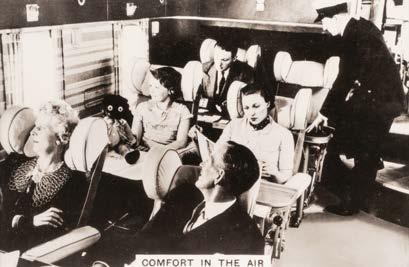
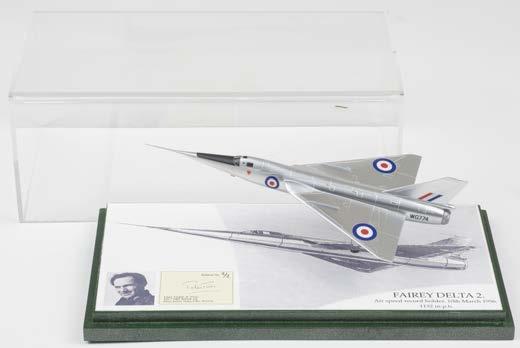
357* Fairey Delta 2. FD2 model by Phil Edwards Record Models, limited edition 2/2, composite silvered finish, 22 cm long, 12 cm wingspan, presented in a perspex display case with historical information, case size, 11 cm high x 28 cm wide x 15 cm deep
This fine 1/72-scale model of the Fairey Delta 2 research aircraft was made by the late Phil Edwards in 2006 to celebrate the achievement of what proved to be Britain’s final World Air Speed Record success. On 10 March 1956, test pilot Peter Twiss took the Fairey Delta 2 to a speed of 1,132 mph. Peter Twiss’s personal signature is featured alongside the model, only two of which were produced.
(1)
£100 - £150
358* French Aviation. L’Oiseau de France circa 1920, aircraft model kit, with original card box, trade label for Coupe Gordon Bennett, Des Petits Aéròplanes and instructions, in poor condition but a rare survivor
(1)
£100 - £150

359* Frog Model Aircraft. Hawker Hart Flying Model Aeroplane, circa 1930s, former-flying model of the RAF Frontline Fighterbomber biplane of the inter-war years, supremely realistic with excellent detail, with detachable wing sections and propeller nosepiece, complete in its original decorative box with instruction leaflet and accessories, rubber band ‘motor’ perished, other minor age-distress, wingspan approx. 48.5 cm
Finely detailed model of the RAF frontline fighter-bomber biplane. (1)
£400 - £600

360* Frog Model Aircraft. De Havilland ‘Puss-Moth’ Flying Model Aeroplane, circa 1930s, detailed former-flying model high-wing monoplane Passenger-transport light-aircraft of the inter-war years, decoratively attired livery with detachable wings, and propeller nosecone, complete in its original box with instruction leaflet and accessories, rubber band ‘motor’ perished, other minor age-distress, wingspan approx. 47 cm, together with Frog Interceptor Monoplane Flying Model, circa 1930s, boxed and complete (2)
£200 - £300
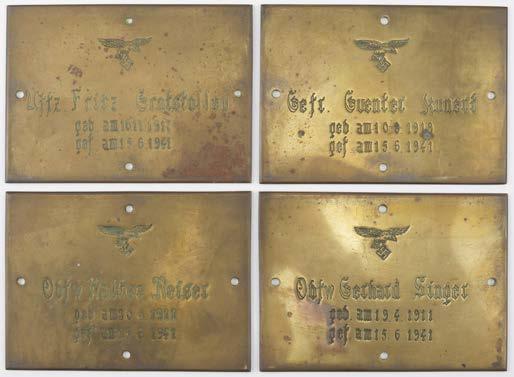
361* Luftwaffe. A set of four WWII Luftwaffe brass memorial plaques each commemorating the crew of an Fw 200 Condor 3 which crashed on 15 June 1941, the aircraft had been hit by flak and exploded in mid-flight over Amarelja, Portugal, the rectangular brass plaques engraved with the crew’s names, Oberfeldwebel Gerhard Singer (1911-1941), Oberfeldwebel Walter Reiser (1911-1941), Unteroffizier Fritz Grotstollen (1917-1941) and Gefreiter Guenter Kunert, each engraved with the full date of birth and death dates surmounted by a Luftwaffe eagle, four holes on each for mounting, 10.8 x 15 cm
In the early hours of 15 June 1941, some locals from Amarelja in Portugal watched in disbelief as a German bomber crashed near the town. It was Focke-Wulf 200 C-3, which exploded in mid-flight after failing to get rid of one of the bombs it was carrying. The aircraft had been involved in an attack on a naval convoy west of Gibraltar and had been hit by an Allied bomber. The explosion caused the wreckage to be scattered over an area of about three kilometres. All 6 crew were killed, the plaques offered here represent the lives of 4.
(4)
£200 - £300
362* Luftwaffe. A WWII Luftwaffe Instrument-board Clock by Zenith, Swiss-made, flangemounting with bezel-wind mechanism, black dial with luminous numerals, hands with sweep-second facility, souvenir-mounted in mahogany hinged case as travelling clock, appears in working order, 6.5 cm (1)
£100 - £150
363* Luftwaffe. A German porcelain table top made to commemorate the route of the “Around Germany Air Race” in 1934 by KPM (Royal Porcelain Factory, Berlin), the top formed of four large tiles decorated to show the route map, the KPM mark in red lower right, the lettering ‘Ehrenpreis Deutschlandflug 1934’ is faded, the DVL insignia remains clear as is the map, 50 x 60 cm, mounted in an art deco style table with a lower section (1)
£3,000 - £5,000
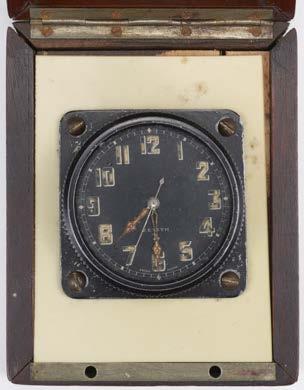


364* Mitchell (Reginald Joseph "R.J."). A set of four pewter napkin rings from the estate of R.J. Mitchell, the chief designer of the Supermarine Spitfire, each applied with a Spitfire Club fundraising badge, showing a Spitfire with 'Spitfire Club' across the wings and fuselage and 'W.T.' on the tail, the napkin rings with a hammered finish, unmarked, 40 mm diameter, contained in a fitted wooden box together with a letter of provenance supplied by the vendor
Reginald Joseph Mitchell (1895-1937) was an aircraft designer who worked for the Supermarine Aviation Works in Southampton from 1916-1936. Mitchell is best known for designing racing seaplanes such as the Supermarine S.6B and of course the Supermarine Spitfire.
(4)
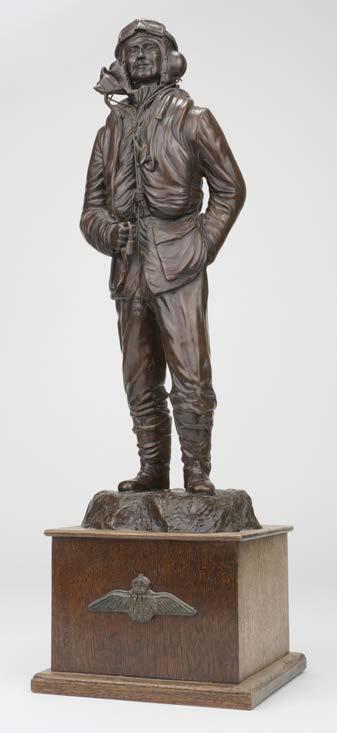
365* Powling (Kevin). “Battle of Britain Pilot”, late 20th century, a superb and large cast bronze sculpture of a pilot wearing B type flying helmet, goggles, mae west and flying boots, unsigned, 53 cm high, mounted on a square oak base applied with bronze RAF wings, overall height 69.5 cm, with certificate of authenticity
One of five bronze sculptures produced by the artist. (1)
£300 - £500
£2,000 - £3,000

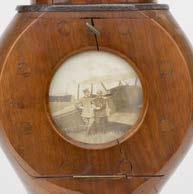
366* Propeller Clock. An interesting WWI “Trophy” made from RAF propellers, the lower laminated boss stamped ‘Imperial Propeller N1094’, the central mahogany boss inset with a French enamel clock signed ‘Massuelie Rolbaix’, with black arabic numerals handpainted with flowers and two winding holes, an articulated miniature two-blade propeller below each end with a German naval flag decal, the top section with a cut propeller blade tip converted to a photograph frame featuring a black and white photograph of Kaiser Wilhelm II, the frame with a German naval decal and additional Iron Cross decal, behind the frame is a cut section of propeller with a tin rim in the shape of a horseshoe (lucky?), a hammered brass base to it, this probably an ashtray, the opposite side with a hinged door encompassing a black and white photograph of two German Naval airman standing by an RAF biplane, a dropdown hinged door encompassing a drum shape clock movement, 57 cm high
A curious piece of WWI souvenir art. The photograph of the German airman standing by an RAF aircraft suggests the propeller sections could well have been used from a captured British aircraft subsequently destroyed and used to create this intriguing “trophy” war souvenir.
(1)
£1,500 - £2,000

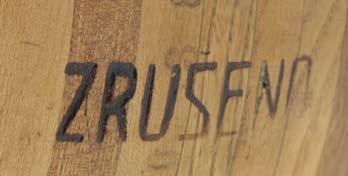


367* Propeller. A Northern European two-blade propeller circa 1930s, the substantial laminated pine propeller stamped on the boss 'Zrusend Cisio 881', additionally stamped 'P 81, S220, SL21', approximately 300 cm long (1)
£1,500 - £2,000
368* Propeller. A rare walnut aircraft propeller by Lucien Chauviere circa 1913/14 for a Type B, Franco British Aviation (F.B.A.) Reconnaissance Flying Boat as used by the R.N.A.S and other Navies, of laminated wood with sheathed brass tips and decals various stamps including F.B.A. and Gn 100 Mono, reverse side Numero 26527, Serie 2317, 261cm long overall, the boss has at one time accommodated a clock
Provenance: Purchased from Wallis & Wallis, Lewes. The auction had several items from the estate of Sir Thomas Sopwith.
The FBA Type B was a reconnaissance flying boat produced in France prior to WWI. The design originated with patents by Donnet-Leveque and had three type A, B & C, type B & C had two bay wings which otherwise only differed in the engine installed, with the type B using 75kW (100hp) Gnome Monosoupape and the type C using a 97kw (hp) Clerget 9B. The RNAS contracted 20 type B’s. The French Aeronautuique Maritime and Italian Navy also ordered Type B’s in 1915. The FBA flying boats were used for naval patrols and frequently were under fire from German and Austro-Hungarian Navy counterparts which led to some being converted to single seaters armed with a machine gun.
(1)
£1,000 - £1,500

369* Propeller. A WWII four-blade wooden generator propeller as used on the Defiant and Mosquito, the mahogany propeller with various stamps under the metal boss, 92 cm across
These propellers were used to power a drogue winch on target tug aircraft, such as a Boulton Paul Defiant TT Mk III and the de Havilland Mosquito. During WWII the RAF target tug aircraft towed an unmanned drone, a fabric drogue or other kind of target, for the purposes of gun or missile target practice.
(1)
370* Propeller. American aluminium ‘nose art’ style propeller blade by Hartzell circa 1951, attractively and contemporarily painted with the female nude ‘Miss Cropsprayer’ seen wearing a flying helmet and flying jacket and dated 1951, the opposite side finished in black, with various marks to the base including ‘Hartzell R.C.10’, ‘ZG 24’, 95 cm long Hartzell Propeller, Ohio, was founded in 1917 by Robert N. Hartzell as the Hartzell Walnut Propeller Company. They produced metal propellers for Hamilton-Standard during WWII and from 1948 aluminium propellers were developed introducing the first-feathering propellers for a light twin engine in the 1950s. These propellers were used in the Aero Commander, Piper Apache, Cessna 310 and Beech Twin Bonanza.
(1)
£150 - £200
£300 - £500



371* Propeller. An RAF de Havilland Tiger Moth two blade wooden propeller, finished in black with yellow tips and ‘Airscrew’ decal, the boss stamped ‘DRG.Z.6013/2’, ‘D6.67.P4.51.’, ‘86915’, 204 cm long
(1)
£1,000 - £1,500

372* RAF Archive. A collection of RAF memorabilia belonging to Air Vice Marshal Neville Howlett, C.B., including his No.1 dress tunic, with Au Wai Lam & Co tailors label and E.II.R. cloth brevet, staybrite buttons, 80 cm, long, inner arm length 47 cm, mess jacket, waistcoat and trousers, together with five large framed photographs, including de Havilland Vampires flying in formation, 29 x 37 cm, laid on card, Spitfire PS853 over Canterbury Cathedral, 28.5 x 37 cm, laid on card, a colour photograph showing a Lockheed C-5 Galaxy in flight, with card mount inscribed ‘Presented to Air Commodore N.S. Howlett, MBIM, RAF by MAC-DOV 19 July 1976,27 x 33.5 cm, photographs showing his service in the RAF including an album of colour photographs, the cover inscribed ‘United States Air Force, Air Commodore Howlett Attache Tour 1975’, another album inscribed ‘Tactical Air Command presents Neville S. Howlett this certificate in recognition of his flight with a tactical air command F-IIIA combat crew at Mountain Home Air Force Base’ and other related items
C.B. London Gazette: 31 December 1981
Neville Stanley Howlett (1927-2023), qualified as a pilot in the RAF in 1945 and served as an N.C.O. pilot in No. 32 Squadron in 1948, the squadron flew Spitfire and Vampires. He qualified as a pilot in No. 64 Squadron flying Gloster Meteor F8.
(a carton)
373* RAF Memorabilia. A collection of RAF memorabilia relating to 616 Squadron, including a 616 Squadron colour print showing a side profile of Supermarine Spitfire MkVb W3458, signed in pencil by Lionel “Buck” Casson, Denis K. “Red” Parker, William L.B. Walker and Kenneth A. Wilkinson, framed and glazed, frame size 36 x 46.5 cm, a small silverplated presentation mug, with enamel squadron badge and engraved ‘Air Commodore G.R. Pitchfork in Grateful Appreciation from 616 Squadron Members Association’, 9.5 cm high, a squadron badge mounted on a wooden shield, 26 cm long, another embroidered squadron badge, framed and glazed, frame size 28.5 x 29 cm and other related items, plus an RAF black bakelite telephone by Krone circa 1950, with winding crank handle and paper label printed ‘259 Eng. Exec RAF Wildenrath’, an additional label printed ‘speech on this telephone is not secure’, with cord and bakelite adapter and an interwar commission certificate issued to Flight Lieutenant Walter English Swann, RFC later RAF for his appointment to Flight Lieutenant on 1 January 1926, in original Air Ministry card tube
£150 - £200
RAF Wildenrath was an airbase near Wildenrath in North Rhine-Westphalia, Germany. Operating from 1952-1992. In 1953, the station commander was Group Captain JE ‘Johnnie’ Johnson, top scoring WWII ‘ace’ fighter pilot. (8)
£100 - £150
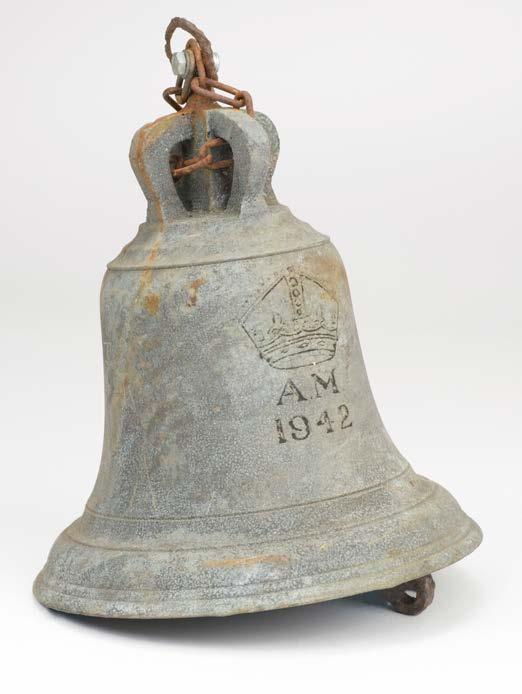
374* RAF Station Bell. A WWII Air Ministry “Scramble” Bell, engraved with a large A.M. crown motif and dated 1942, infilled in black, with rusted clapper and hanging loop, 32 cm high x 27 cm diameter, a good weathered example in original condition (1)
£2,500 - £3,000

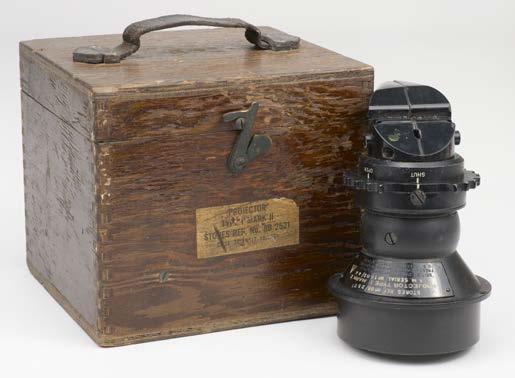
375* Red Arrows. Two rear exhaust jet pipes from a BAE Hawk trainer as used by the Red Arrows, circular steel construction, each numbered ‘64 CT B’, 61 cm diameter (2)
£200 - £300
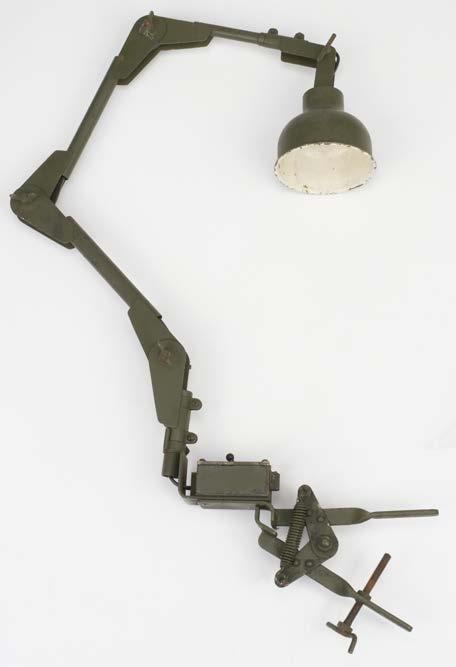
376* Red Ball Express Lamp. A WWII American Engineer / Mechanics adjustable lamp, the anglepoise lamp finished in green with and stamped ‘O.S.3852 A. Lamp Electric Adjustable Mark 3’, with flick switch fuse box clamp
These lamps were fitted to the recovery trucks of the “Red Ball Express” and this one was used on the vendor’s Willys Jeep. (1)
£150 - £200
377* Reflector Gunsight. A WWII RAF Reflector Gun Sight Mark II dated 1944 for night fighter service in Spitfire and Hurricane, stamped Stores Ref. No 8B/2521, A.M. Serial No 1682/44 with various patent numbers dating from 1937 to 1938, Air Ministry stamps, a bakelite plug stamped A.M. Ref No 5C/890 (this loose), contained in original wooden transport box with leather carrying handle and with original printed label ‘ Projector Type I Mark II Stores Ref. No. 8B/2521 Case Transit 8B/2559, case size 17.5 cm high x 20 cm wide x 18.5 cm deep (1)
£500 - £800

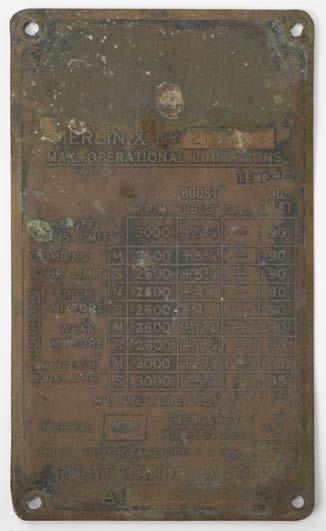
378* Rolls Royce. A WWII Rolls Royce Merlin engine rocker cover as fitted to Spitfire and Hurricane, numbered D8988, 107.5 cm long, together with brass Merlin X data panel, numbered 2143 (2)
£600 - £800
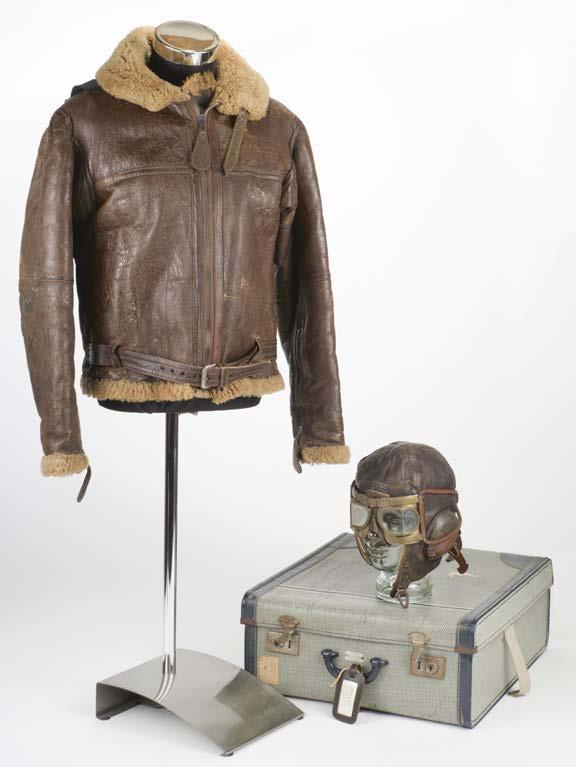
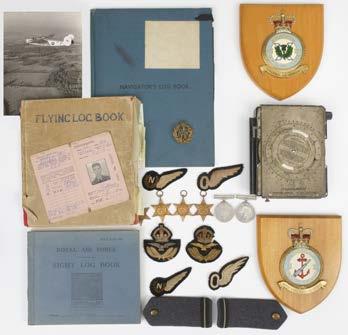

379* Royal Air Force. A comprehensive collection of WWII RAF memorabilia belonging to Navigator Evan Albert Rutland, 53 Squadron, who served in Liberators as Coastal Command, Iceland including WWII Medals, comprising 1939-1945 Star, Atlantic Star, Africa Star, Italy Star, Defence and War Medals, extremely fine, with Normandy 1944 Veterans Medal, with Normany’ clasp, numbered ‘16525’ in Royal Mint case of issue, Battle for Britain Veterans Medal, with Royal and Air Force and Police Forces clasps, in original case of issue with packaging, various cloth badges including four Observer wings (two padded), two Navigators wings, two officer’s cap badge including one by J.R. Gaunt & Sons Ltd, The King’s Badge For Loyal Service, boxed, B Type flying helmet (No 4), brown leather with tailors label for Wareings (Northampton) Ltd St. James’ St Northampton, No 4 71/2 - 7 3/4, dated 1939, with zip-up ear cups (lacking pullers), chamois lining, faintly inscribed ‘Rutland’, with bakelite loom and Air Ministry earphones numbered 10A/7063, a pair of Mk IV flying goggles, brass metal frame with hinged in the centre, split hinged lenses, velvet and brown leather nose pad, cord loops and brown leather head-strap stamped AM Mk VIB, a WWII Irvin flying jacket, brown leather with fleece lining, WWII brown leather Irvin flying jacket, sheep fleece lined with ‘AM’ zips (all functional), belt and suspension loop to the collar, length 57 cm, inner arm length 50 cm
Original documents and ephemera including Flying Logbook, commencing 8 August 1942, final entry 30 October 1943 (there are later entries for 1946 and 1974), RAF Sight Logbook, first entry 29 March 1943, final entry 25 March 1946, Navigator’s Logbook, 53 and 63 Squadron badges, photograph albums with captioned snapshot size photographs, pocket notebooks, navigational instruments including a Navigational Computor Mk III D, with green canvas bag stamped G&S Ltd, 1943 AM, framed photographs including “B” Flight, 53 Squadron, RAF 1943, a Baltimore under repair on Malta and other related items, contained in an old suitcase with luggage label, a full list of the items offered here is available on request
The logbook records Rutland at No 47 Air School, Queenstown, South Africa from 8 August 1942 to 10 January 1943, he moved to No 75 O.T.U., Gianaclis, Egypt from 15 June 1943 to 20 August 1943. He joined No 69 Squadron at Luqa, Malta on 28 December 1943, and in January 1944 flew 2 sorties in Baltimore. He served with No 53 Squadron, St. Eval, Reykjavik from 19 May 1944 to 17 April 1945 flying 48 Sorties in coastal command, the logbook records him crashing on landing in Reykjavik on 29 May 1945 (Liberator), the squadron moved to several locations including St Davids, Merryfield and Gransden Lodge his last entry with the squadron was 1 March 1946, he moved to No 220 Squadron based in Waterbeach his final entry here was on 12 March. Rutland ser ved in 20 different types of aircraft including Oxford, Anson, Blenheim, Baltimore, Liberator, Dakota and Beaufighter. The lot includes handwritten operational orders for his time in Iceland where he is noted for serving in Liberators.
53 Squadron was based in Iceland from September 1944 and remained there until the end of WWII. When it came back to the UK to RAF St Davids joining RAF Transport Command to carry troops to India. The squadron was disbanded at RAF Gransden Lodge on 15 June 1946. (1) £2,500 - £3,000
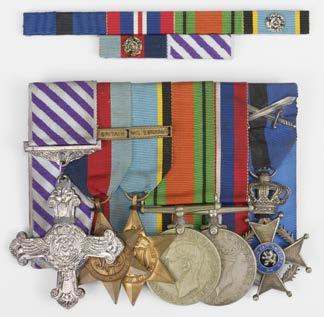
380* Royal Air Force. A WWII DFC group, 1939-1945, all copies comprising DFC, Star with Battle of Britain clasp, Air Crew Europe Star with France & Germany clasp, War Medal, General Service Medal, and Belgian Order of King Leopold with Crossed Swords, mounted for wearing, showing age and discolouration, with related group awards on ribbon-bar (appears unworn)
(1)
£100 - £150
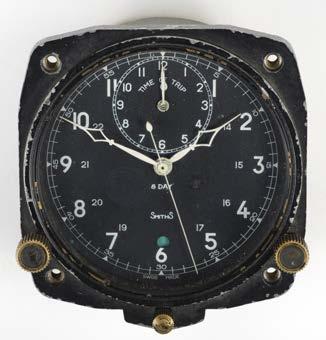
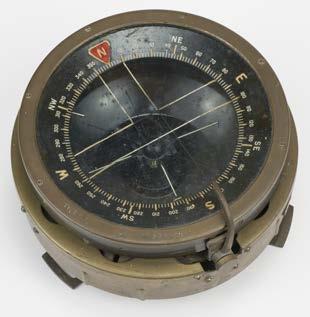
382* Royal Air Force. A WWII RAF Lancaster Cockpit Compass, circa 1940s, Air Ministry issue type P4A No.54863T, with Crown Cypher 6A/1276, patinated brass casing, previously polished, good original condition, 18.5 cm (1)
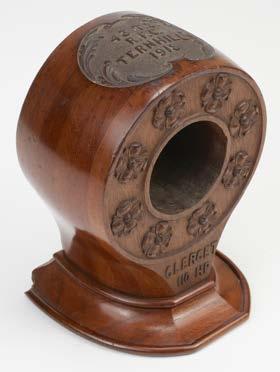
£100 - £150
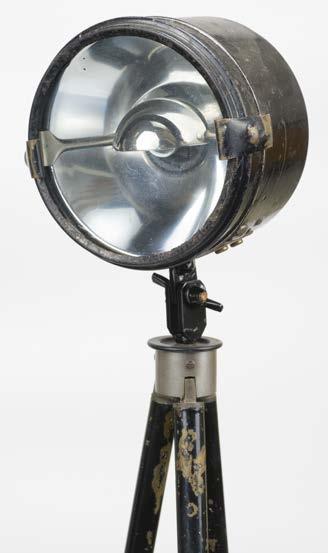
384* Royal Flying Corps. A WWI RFC Propeller-hub Presentation Memento circa 1916-18, artisan-fashioned memorial mantel-display clock, two-blade propeller-hub from a rotary 110 Clerget motor, marked and inscribed 'RFC Ternhill 1918', with polished to faint inscription '110HP Sopwith', polished laminated mahogany with deep hand-carved incised decoration to all surfaces, decorative rosettes covering original mounting-holes, minor loss to base at rear, 30 cm high Ternhill Aerodrome, near Market Drayton Shropshire, was commissioned by the RFC in 1916 as 95 Squadron base, subsequently home to 132, 133 & 134 Squadrons as well as 43 Squadron Training Unit. Closing again in 1918. Repurchased by the Air Ministry and recommissioned during World War Two, it remains operational as barracks. (1) £200 - £300
381* Royal Air Force. A WWII RAF (or later) Instrument-board Chronograph Clock, circa, 1940s-50s, Air Ministry Broad-arrow marked Type 6A3157 Jaeger type movement by Smiths serial nos. 248/61, black face with white numerals 12 and 24 hours subordinates, time-of-trip inset with sweep-seconds stop-facility, matt-black case, as used in late mark series Spitfire, Hurricane, Typhoon etc., good working order, 8 cm diameter (1)
£400 - £600
383* Royal Air Force. An Air Ministry searchlight, probably WWII period, the small light with black casing with A.M. stamp and stores reference number ‘REF No 5A 2335’, clear glass panel to the front and a flick switch to back, case size 13.5 cm diameter, mounted on a black and brass tripod stand, height 132 cm (1)
385* Royal Flying Corps. WWI RFC Door Plate, a brass vertical finger-plate with incised oval escutcheon, engraved entwined 'RFC' Cypher badge, former museum exhibit attached to a section of blue painted doorframe, applied old label with typescript appellation, shows considerable agewear from storage, lightly rubbed area revealing the engraved segment, 31 x 9 cm (1) £100 - £150
£100 - £150

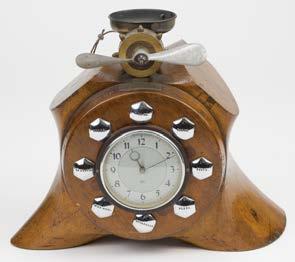
386* Royal Flying Corps. WWI RFC Propeller Hub Presentation Memento, circa 1918, an artisan-fashioned memorial manteldisplay ornamented clock-lamp, utilising a large four-bladed propeller-hub from a 140HP R.A.F. RE8 aircraft, variously marked and stamped to hubplate rim, with eight engraved domed-bolts inscribed with the names of principal battles of the Great War, including ‘Hill 60, Ypres, Arras, Menin, La Bassee, Flers, High Wood & Zonnebeke’, inset clock to hub-centre, miniature propeller on dummy rotary-engine with electrical connection surmounted by lamp-bulb globe mount, 33 x 38 cm (1)

£300 - £400
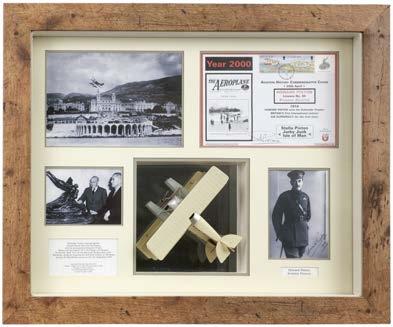
387* Schneider Trophy. A framed montage commemorating Howard Pixton, winner of the 1914 Schneider Trophy Air Race, comprising 1/72 scale model of the Sopwith SS, 12 cm long, 16 cm wingspan, this is presented on a mirror to allow the underside to be viewed, Aviation History Commemorative first day cover signed by Stella Pixton (daughter) 2000, three copied monochrome photographs including one portrait photograph of Pixton signed and dated 1915 (facsimile) and typed historical information, skillfully presented in a deep display case, glazed with wooden frame, frame size 48 x 58 cm The model, to 1/72-scale, and also the framing, were the work of the late Phil Edwards. He was regarded as one of the most accomplished professional model-makers in the UK during an intensively busy career in which he undertook prototype work for Airfix and other brands, and built on a much larger scale, mock-ups for the film industry. The unique and stunning model display was made in 2005 as a special gift for Stella Pixton, the daughter of Captain Howard Pixton. Stella’s signature, and photos of her famous father, are featured alongside the model. Later, Stella donated the display to aviation author and publisher Nigel Macknight. A copy of Nigel Macknight’s autobiographical book, “Inspirations”, which he has signed and features a chapter on Howard Pixton is included with the lot.
Cecil Howard Pixton (1885-1972) was an aeronautical engineer, test pilot and air racing pilot, he was the first pilot to win the Schneider Trophy seaplane race for Great Britain. On 20 April 1914, Pixton took his Sopwith Tabloid to 88.78mph over Monaco.
(1)
£200 - £300
388* Scramble Bell Bracket. A WWII period cast iron bracket, a substantial piece with a large bell hook, the remains of black paint throughout, 45.5 x 26 cm
(1)
£200 - £300
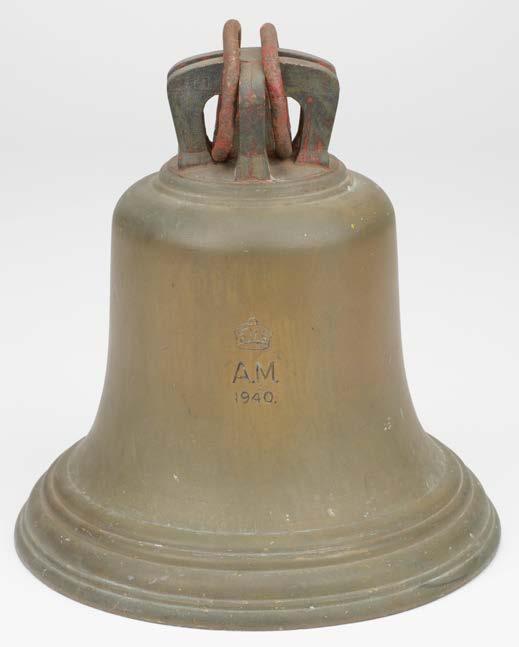
389* Scramble Bell. A WWII RAF “Battle of Britain” period bronze aerodrome station bell dated 1940, with crowned Air Ministry motif, additionally stamped ATW with a broad military arrow on the crown, with original clapper and red painted hanging rings, 31 cm high, 32 cm diameter
(1)
£2,000 - £3,000
390* Scramble Bell. A WWII RAF aerodrome station bell dated 1942, with small crowned Air Ministry motif dated 1942, additionally stamped ATW with a broad military arrow on the crown (the crown has been cut through and adapted at some point in history), with original clapper and rope, 31.5 cm high x 27.5 cm diameter (1)
£1,000 - £1,500

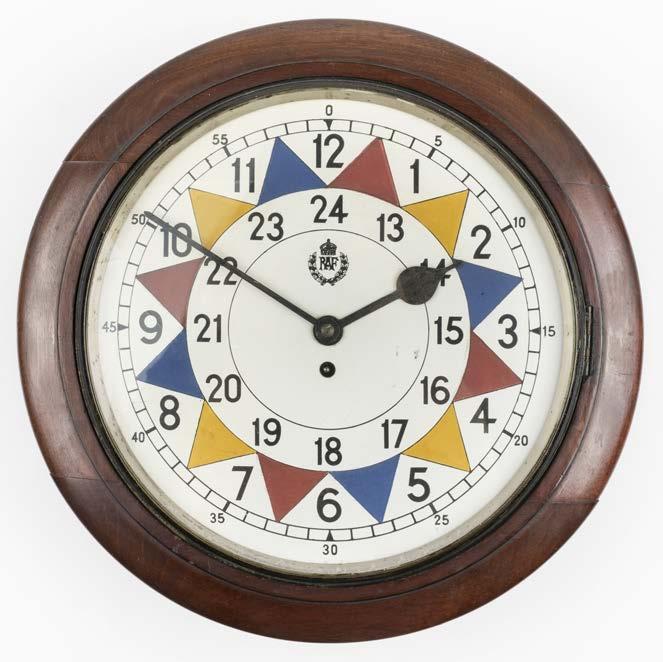
391* Sector Clock. A very early and original RAF sector clock circa 1937, the 36 cm diameter white enamel dial featuring the crowned RAF laurel wreath motif, 12 and 24 hour arabic numerals. the distinctive blue, red and yellow sectors, contained in original Air Ministry mahogany case stamped ‘A.M. F.W. Elliott 1937’, the fusee brass movement by F.W. Elliott numbered 2116 and dated 1936, case size 49 cm diameter, with key and pendulum and in good working order
Provenance: Private collection, Surrey.
Purchased from Circadian (UK) Ltd, Specialists in Aero Memorabilia (Lt Col Bob Gardner, author of A History of Clocks in the RAF). A copy of the receipt is included in the lot dated 2010, which confirms authenticity. (1)

£3,000 - £5,000


392* Space Exploration. Hermes Space Shuttle, Maquette 1/50, a composite model with decals, 33.5 cm long, wingspan 20 cm in mint condition with perspex stand and original packaging
This scale model of the French mini-shuttle Hermes was one of a very small batch produced for display purposes by a specialist model-making concern in Toulouse for the French national space agency, CNES. The Hermes project was subsequently cancelled in 1992. Aerospace author and publisher Nigel Macknight has owned this model for over 35 years, dating from his time as Founding Editor and Publisher of the monthly magazine “Spaceflight News”. The model featured with Nigel in an edition of the nationally-broadcast, Saturday-morning children’s TV programme “Get Fresh” in 1988, when he was interviewed in the studio by the show’s copresenter, Gaz Top. All three members of the pop group “Bananarama” were also in the studio for that session, to promote their latest single. (1) £100 - £150
393* Spade Grip. A WWII Hurricane control column from Hurricane 5287 which crashed in South Africa on 28 December 1944, all parts numbered including AH 2040, the spade grip with gun firing button and brake lever, approximately 32.5 cm long, together with a South African Air Force Pilot’s Logbook, commencing 11 January 1944, final entry 28 February 1946, the entry date of the crash with the comment ‘tail clipped by Kittyhawk flown by 2nd Lt. Mayne’, with an additional Air Ministry black and white photograph, 16.5 x 21.5 cm, documenting the crash site, inscribed to verso ‘Friday 29-12-44, 06.30. Baled out of ... and landed 1/4 mile from embes. Was his at 9000ft opened chute at approx 5000 ft’, a large portrait photograph of the pilot Flight Sergeant V.S. Meakin in RAF service uniform, 20.5 x 15.5 cm, laid on card, Pilot’s Notes for Spitfire Mark F.VII and Mark F.VIII Merlin Engines (Air Ministry December 1943) and another for Hurricane II Aeroplane Merlin Engine, annotated by Meakin
Victor Stuart Meakin was fighter training in South Africa on 28 December 1944 when he crashed Hurricane 5287. The aircraft was wrecked and this control column was salvaged from the aircraft. Meakin went on to serve a long and varied aviation career clocking up 18,500 flying hours by the time he retired aged 65. He continued his service with RAF reserve after WWII flying DH Vampires. Meakin went to Kenya to fly for the Kenya Police Airwing for 7 years from 1960 and during this time he won the East African Flying Club trophy for acrobatics flying Chipmunks 3 years running. From there he went to Zambia as Chief Pilot, Air Charter Zambia, flying the DH Dove among other aircraft. He then joined Zambia Airways on the DC 3, followed by HS 748, BAC1 11 and B707. He then went to South Africa and joined Air Botswana flying Viscount 8 and HS 748 as well as other regional Airlines. He was also an Instrument training examiner for the South African CAA. During a long and varied career, he flew all over Africa in many types of aircraft. He was in the news more than once, notably when he landed a Merlin Metro at Johannesburg on one main gear, the other failing to descend with no injury to the occupants. At age 64 he flew a DC 3 on a pioneer Tsetse fly spraying programme which involved high precision flying at night at a height of 50 feet in the Okavango, Botswana. (5) £2,000 - £3,000

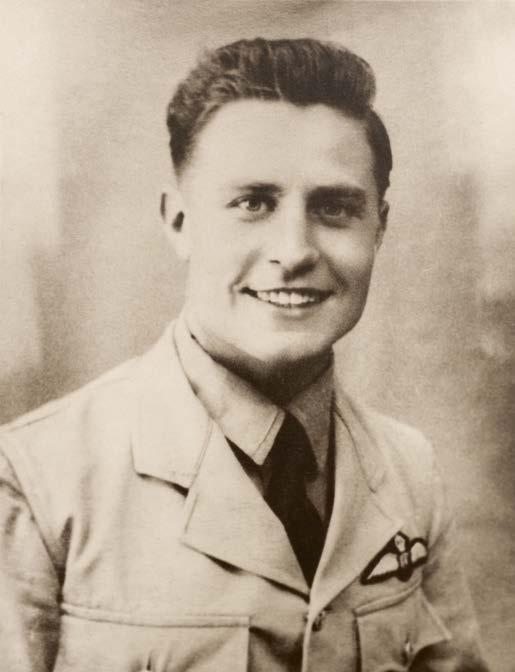
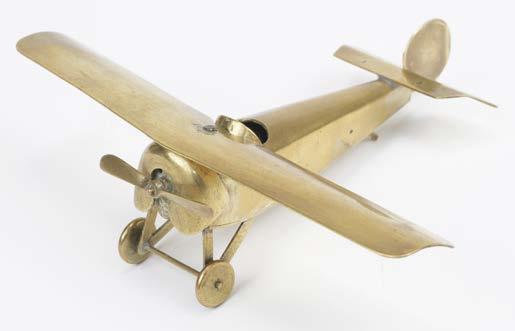
394* Trench Art. A WWI Trench Art Monoplane Scout model, artificer-made representation desk piece of a Morane-type 'Scout' of the Allied Air Forces, fabricated from brass shell case metal, with simple detail incorporating movable wheels, revolving propeller on miniature rotary engine, within nacelle-housing, wingspan 15 cm (1) £100 - £150

395* U.S.S. Shenandoah (Z.R.1). An American “position reference point” wooden sign from Hangar Number 1 at Lakehurst Naval Air Station, painted in black ‘This Line for F.R. 170 ZR1.’ with directional arrow, traces of grey paint on a softwood board with two fixing holes, 17.5 x 38 cm
Provenance: Acquired by the previous owner from Hangar 1, Lakehurst Maxfield Field around 50 years ago (a note is included with the lot).
The board served as a position reference point for frame 170 on the ZR1 (U.S.S. Shenandoah) during berthing in hangar 1.
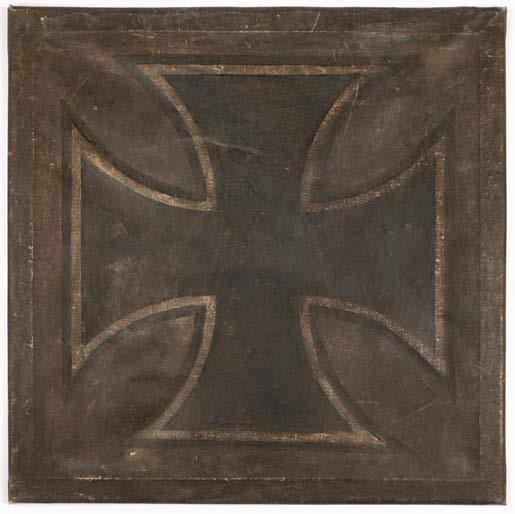

396* WWI German Aircraft Fabric. A section of canvas cut from a German aircraft, painted with a black iron cross bordered in white on a green ground, 65 x 64 cm, typed paper label to verso ‘Souvenir of the Great European War, Presented to Lafleur Museum in memory of my late husband George Mills 68 Sqn R.F.C. - killed in action Amiens 1917, given by Mrs Edith Mills’ (1) £300 - £500
U.S.S. Shenandoah was the first of four United States Bavy rigid airships. Built between 1922 and 1923 at Lakehurst Navan Air Station. It first flew in September 1923 and made the first crossing of North America by airship. ZR1 was destroyed in a squall line over Ohio in September 1925, it had completed it’s 57th flight. (1)
£150 - £200
Flight Lieutenant William ‘Bill’ Townsend (1921-1991) was born in Gloucestershire, and educated at Monmouth School. He joined the army at the outbreak of WWII, before transferring to the Royal Air Force in May 1941. After training he joined 49 Squadron, where he completed 26 operations and was recommended for the D.F.M. He was then selected to join the newly formed 617 Squadron, led by Wing Commander Guy Gibson (1918-1944), specifically formed for Operation Chastise, better known as ‘The Dambusters Raid’.
The Raid took place on the night of 16/17 May 1943. The mission involved attacking German dams, using specially designed ‘bouncing bombs’ developed by Barnes Wallis. The primary targets for 617 Squadron were the Möhne, Eder and Sorpe Dams in the Ruhr Valley. These dams were critical to Germany’s industrial operations.
Townsend’s aircraft, Lancaster AJ-O, was one of three aircraft held back in reserve, then cleared for take-off at 00:14 on Sunday 17 May. Their mission was the bombing of one of the secondary targets, the Ennepe Dam. After three attempts their bomb was finally dropped at 03:37 but, after bouncing twice, it exploded short of the dam. Townsend then turned for home, passing over the Möhne dam, where he and the crew witnessed the devastation.
With dawn fast approaching, Lancaster AJ-O had a hair-raising journey back to base. As they approached the Dutch coast, the Germans opened fire and their aircraft was hit by heavy flak. They landed at 06:15 with only three engines working, and were greeted by a group of Bomber Command’s most senior officers, including ‘Bomber’ Harris. Townsend was the last pilot to arrive home from the Raid.

The Raid itself was a significant achievement in terms of innovation and execution, causing considerable damage to German infrastructure and helping to boost Allied morale. While the mission had its successes and failures, the legacy of the Dambusters, and all the men involved, remains a testament to the courage and ingenuity of those who participated in it.
Townsend received the Conspicuous Gallantry Medal (C.G.M.) for his bravery. Five of Townsend’s crew were also awarded medals, making them the second most decorated Dams Raid crew after Guy Gibson’s.
397* Dambuster Logbooks. Two RAF logbooks kept by Flight Lieutenant William “Bill” Townsend, 617 Squadron
Logbook 1, first entry 21 July 1941, D.H.82, general training, 7 August “First Solo”, further training, 17 August “action in the event of fire, restarting the engine in flight, abandoning an aircraft”, 8 September converted to Airspeed Oxford, 13 September “First Solo”, 9 March 1942, training completed, 151hrs50mins flying time, 23 March converted to Avro Anson, followed by Handley Page Hampden, further training with 16 O.T.U., 30 May, first operation, 49 Squadron “Night Operations, Cologne”, final entry, 1 June 1942 “Operations Essen, returned to base a/c u/s”, total flying time 258hrs45mins, original linenbacked printed boards, inscribed ‘Townsend 656738’, 8vo
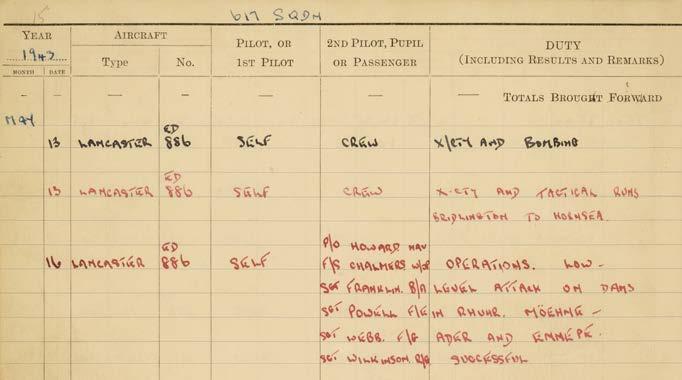
Logbook 2, first entry 17 June 1942, 49 Squadron Conversion Flight, Scampton, Avro Manchester, 25 August 1942 converted to Avro Lancaster, training exercises, 18 September “Operations: Mining East Coast of Denmark”, 24 September “Operations: Mining odd Bornholm Island”, further operations on 1, 6 and 15 October, 6, 7, 9 and 28 November these over Genoa, Hamburg and Turin, 9 December “Operations, Turin”, 23 March 1943, final entry with 48 Squadron, Townsend had flew a total of 26 Sorties. He was posted to 617 Squadron on 4 April, Avro Lancaster, further training, after 29 April this entry is signed by Guy Gibson, 16 May 1943 “Operations, low level attack on Dams in Rhuhr. Möehne- Ader and Ennepe successful”, signed by Les Munroe, June 1943 is signed by Guy Gibson and George Holden, 15 July 1943 “Low level attack on Transformer Plants at Arquata Scrivia Italy”, 24 July “Ops, Blida to base via Leghorn: Italy”, on 11 September 1944 he was posted to 1668 Conversion Unit, Balderton, followed by 85 O.T.U. Husbands Bosworth on 15 July 1944, Vickers Wellington,No 7 F.I.S., Upavon, Wiltshire on 21 July 1944, returning to to 85 O.T.U. Husbands Bosworth om 27 August and other postings, he flew Liberators towards the end of the war and his final entry is on 5 December 1945 having been stationed at RAF Chakulia, a total of 1197hrs05mins flying time, a later entry is dated 19 May 1967, Avro Lancaster “Commemorative Flight from Biggin Hill to Scampton”, 12 May 1983, Battle of Britain Flight “Airborne Interview with Paul Burden (BBC) prior to Dams Raid with Anniversary Celebration”, original linen-backed printed boards, inscribed ‘Townsend W’, worn on the spine, 8vo (2) £10,000 - £15,000
Each lot is subject to a Buyer’s Premium of 20% (Lots


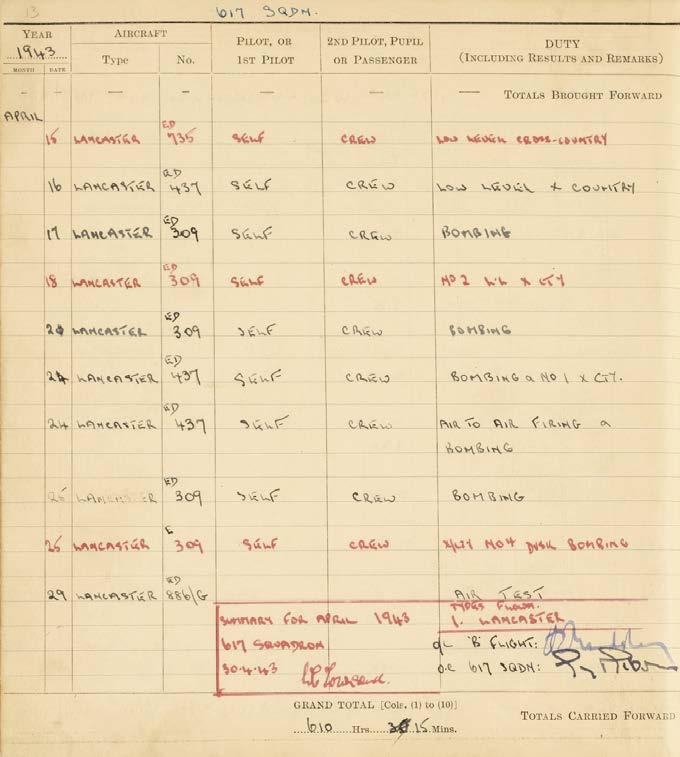
398* School Caps. Monmouth School Rugby Club cap belonging to Flight Lieutenant William “Bill” Townsend, soft brown velvet with embroidered heraldic lion with M.S.R.F.C. beneath the peak dated 1938-9-40, with a bullion tassel, the lining soft light brown, together with his Oxford University cap, grey and black felt, the lining with tailors label for Walter’s & Co, The Turl Oxford, inscribed ‘W. Townsend’ and additionally inscribed ‘W. Townsend’, plus some ephemera items including Pilot’s Noted for Merlin XX, 21, 22, 23, 6th Edition 1942, pocket version inscribed ‘W. Townsend’, a telegram from his father dated 23 May 1943 congratulating him on his C.G.M., plus 14 aviation first day covers (18)
£200 - £300

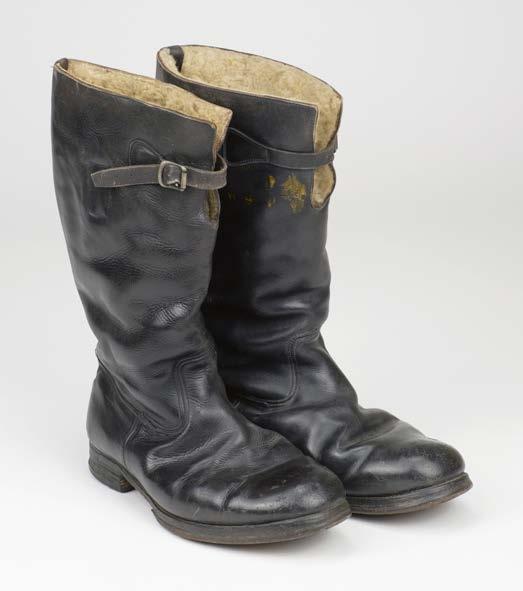
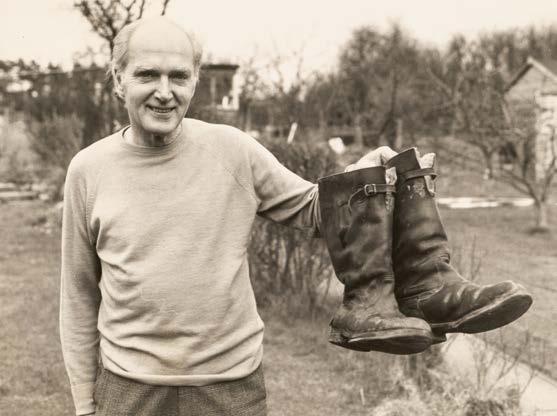
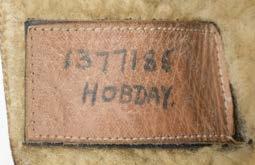
399* Flying Boots. Bill Townsend’s RAF 1939 Pattern Flying Boots, the size 9 black leather boots with sheepskin lining and Air Ministry label numbered 6982/39, the other label inscribed in ink ‘1377185 Hobday’, general wear and commensurate with age
Provenance: Flight Lieutenant William "Bill" Townsend, C.M.G., D.F.M., thence by family descent. Although these boots are inscribed Hobday, these are the boots worn by Townsend on the Dambusters Raid. In the haste to get ready for take-off that night it seems most likely that Townsend and Hobson's identical flying boots became mixed up. For the rest of his life Townsend proudly showed these boots off as his Dambusters boots. 1377185 Flying Officer Harold "Sydney" Hobday (1912-2000) was born in Croydon, Surrey. He joined the RAF in 1940 and trained in South Africa before qualifying as a navigator in 1942. He crewed up with the Australian pilot Leslie "Les" Knight in the Summer of 1942 and other members of the soon to be Dambusters crew and they joined 50 Squadron later that year. Hobday and Knight took off for the Dams on the night of 16 September 1943 in Lancaster ED912/G. The aircraft was badly damaged approaching the Dortmund Ems canal and Knight ordered the crew to bale out. Hobday managed to evade capture and within a few hours managed to make contact with Dutch resistance. He was taken to a woodland shack near Baarn where he was reunited with his colleague, Fred Sutherland, a Canadian gunner. They were then smuggled back through France to the Pyrenees and then on to Gibraltar before returning to England. (1)
Each lot is subject to a Buyer’s Premium of 20% (Lots marked * 24% inclusive of VAT @ 20%)
£2,000 - £3,000
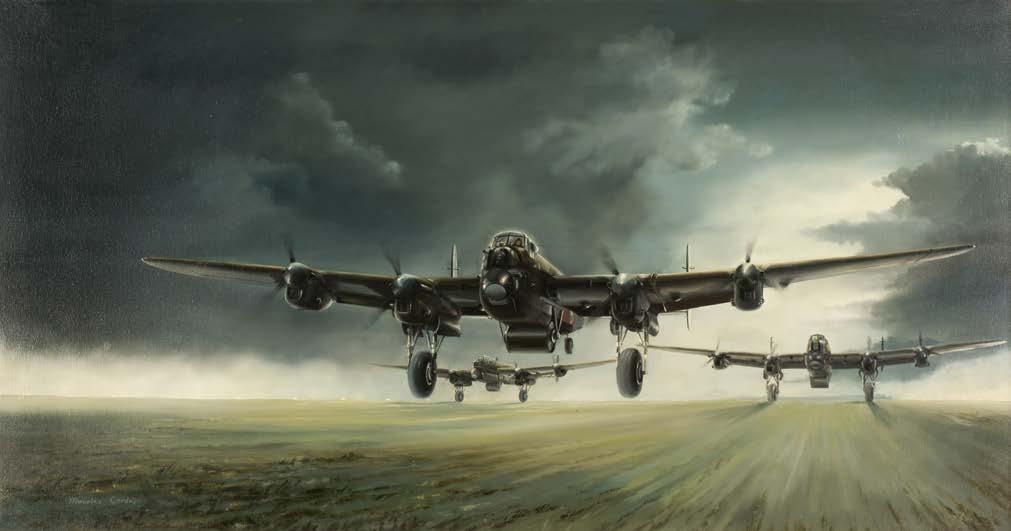
Provenance: Flight Lieutenant William “Bill” Townsend, C.M.G., D.F.M., thence by family descent. (1)
£1,000 - £1,500
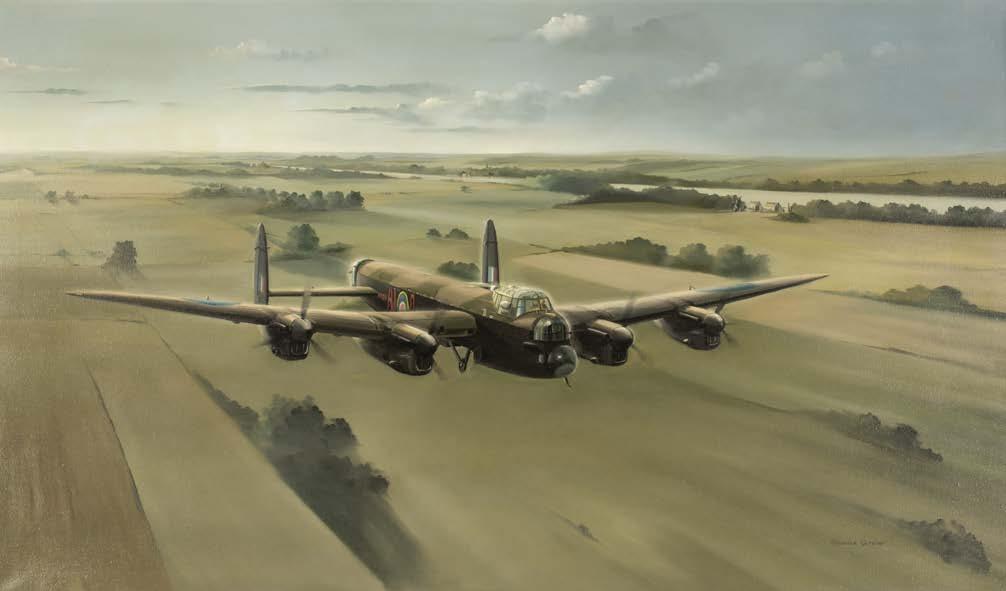
Provenance: Flight Lieutenant
£1,000 - £1,500
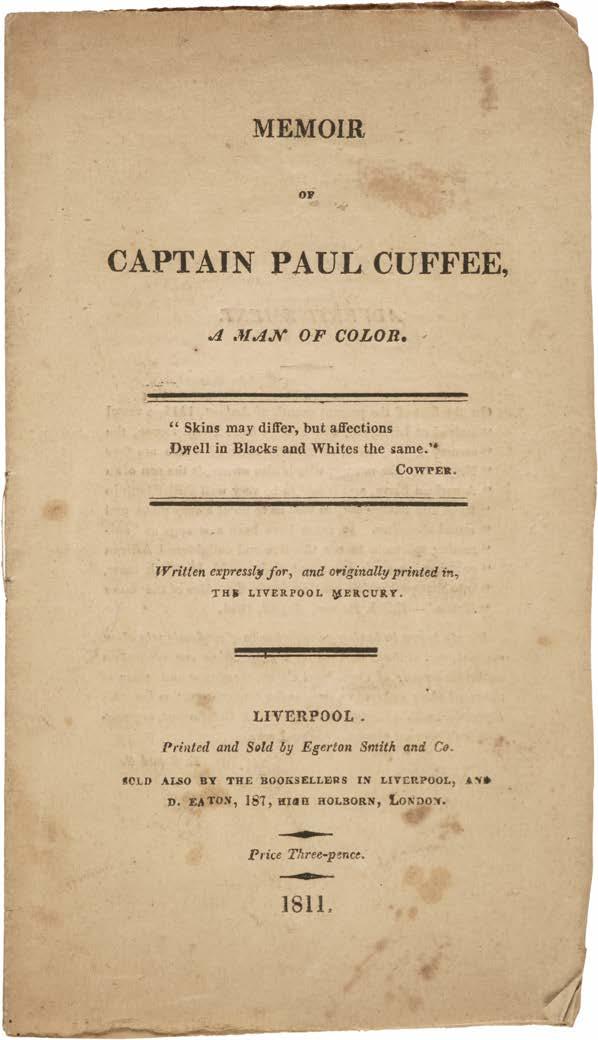
Paul Cuffee. Memoir of Paul Cuffee, a man of colour. Written expressly for, and originally printed in, The Liverpool Mercury, Liverpool: Printed and Sold by Egerton Smith and Co., 1811, 12 pp., advertisement to title verso, some spotting and light browning, heaviest at front and rear, stitched as issued, slim 12mo Sabin 17850.
A scarce memoir of the renowned pan-Africanist Captain Paul Cuffee, published in his lifetime.
Paul Cuffee, also known as Paul Cuffe (1759-1817), was a businessman, whaler and abolitionist. The son of an emancipated African slave and Wampanoag Indian, Cuffee was an influential figure in America’s first back-to-Africa movement. He became a leader in the cause of African colonization, making several trips to Sierra Leone with extensive efforts to settle freed slaves.
This rare biographical sketch, reprinted from The Liverpool Mercury, contains an outline of his life, struggles and successes, recording the difficulties he faced as one of the first African-American captains. ‘Thither he sailed, but on his arrival the people were filled with astonishment and alarm. A vessel owned and commanded by a black man, and manned with a crew of the same complexion, was unprecedented and surprising…’ (p. 9). Earlier in the account are related his encounters with ‘Refugee Pirates, who chased and seized both him and his vessel; robbed of every thing he returned home penny less, but without sinking under this discouragement’ (p. 5).
Cuffee is often considered the founder of the first racially integrated school in America; ‘[he] worked in earnest and had a suitable house built on his own ground, which he freely gave up to the use of the public, and the school was opened to all who pleased to send their children. How gratifying to humanity is this anecdote! and who that justly appreciates human character would not prefer Paul Cuffee, the offspring of an African Slave, to the proudest statesman that ever dealt out destruction amongst mankind?’ (p. 8). The account ends by noting that he has been received into the Society of Friends (or Quake
Estimate £300-500
For further information please contact John Trevers, Stephanie Wynn or Nathan Winter:
john@dominicwinter.co.uk
stephanie@dominicwinter.co.uk nathan@dominicwinter.co.uk
Online Results: If you weren’t present or able to follow the auction live, you can find results for the sale on our website shortly after the sale has ended.
Payment: The price you pay is the amount at which the auctioneer’s hammer falls (the hammer price), plus a buyer’s premium (a percentage of the final hammer price) and vat where applicable. You will be issued with an invoice made out to the name and address provided on your registration form.
Please note successful bids made via live bidding cannot be invoiced or paid for until the day after an auction. A live bidding fee of 3% + VAT (Dominic Winter / Invaluable) or 4.95% + VAT (the-saleroom) will be added to your invoice.
Cheque: Cheques will only be accepted on the day of the sale by prior arrangement (please contact our office for further information). Cheques by post will be accepted but a period of 5 working days will be required for the cheque to clear before purchases can be collected or posted.
Cash: Payments can be made at the Cashier’s Office, either during or after the sale.
Debit Card: There is no additional charge for purchases made with debit cards in the UK.
Credit Cards: We accept Visa and Mastercard. It is advisable to let your card provider know in advance if you are intending to purchase. This reduces the time needed to obtain authorisation when the payment is made.
Bank Transfer: All transfers must state the relevant invoice number. If transferring from a foreign currency, the amount we receive must be the total due after the currency conversion and the deduction of any bank charges.
Note to Overseas Clients: All payments must be made by bank transfer only. No card payments will be accepted unless by special prior arrangements with the auctioneers.
Collection/Postage/Delivery: If you attend the auction in person and are successful in your bid, you are free to collect your item once payment has been made.
Shipping: Successful commission or live bids will be invoiced to you the day after the sale. When it is possible for our in-house packing department to send your purchase(s), a charge for postage/packing/insurance will be included in your invoice. Where it is not possible for our in-house packing department to send we will recommend other shipping specialists.
London Deliveries: We provide a monthly delivery service to Central London only, usually on Wednesday of the week following an auction. Payment must be received before this option can be requested. A charge will be added to your invoice for this service.
Lots marked with AR next to the lot number may be subject to Droit de Suite.
Droit de Suite is payable on the hammer price of any artwork sold in the lifetime of the artist, or within 70 years of the artist's death. The buyer agrees to pay Dominic Winter Auctioneers Ltd an amount equal to the resale royalty and we will pay such amount to the artist's collecting agent. Resale royalty applies where the Hammer price is £1,000 or more.
The amount is calculated as follows:
Royalty For the Portion of the Hammer Price
4.00% up to £50,000
3.00% between £50,000.01 and £200,000
1.00% between £200,000.01 and £350,000
0.50% between £350,000.01 and £500,000
Please refer to the DACS website www.dacs.org.uk and the Artists’ Collecting Society website www.artistscollectingsociety.org for further details.
1. The Seller warrants to the Auctioneer and the buyer that he is the true owner or is properly authorised to sell the property by the true owner and is able to transfer good and marketable title to the property free from any third party claims.
2. (a) The highest bidder to be the buyer. If during the auction the Auctioneer considers that a dispute has arisen he has absolute authority to settle it or re-offer the lot. The Auctioneer may at his sole discretion determine the advance of bidding or refuse a bid, divide any lot, combine any two or more lots or withdraw any lot without prior notice.
(b) Where goods are bought at auction by a buyer who has entered into an agreement with another or others that the other or others (or some of them) shall abstain from bidding for the goods and the buyer or other party or one of the other parties is a dealer (as defined in the Auction Biddings Agreement Act 1927) the buyer warrants that the goods are bought bona fide on joint account.
3. The buyer shall pay the price at which a lot is knocked down by the Auctioneer to the buyer (“the hammer price”) together with a premium of 20% of the hammer price. Where the lot is marked by an asterisk the premium will be subject to VAT at 20% which under the Auctioneer’s Margin Scheme will form part of the buyer’s premium on our invoice and will not be separately identified (the premium added to the hammer price will hereafter collectively be referred to as “the total sum due”). By making any bid the buyer acknowledges that his attention has been drawn to the fact that on the sale of any lot the Auctioneer will receive from the seller commission at its usual rates in addition to the said premium of 20% and assents to the Auctioneer receiving the said commission.
4. (a) The buyer shall forthwith upon the purchase give in his name and permanent address and pay to the Auctioneer immediately after the conclusion of the auction the total sum due.
(b) The buyer may be required to pay down during the course of the sale the whole or any part of the total sum due, and if he fails to do so after such request the lot or lots may at the Auctioneer's absolute discretion be put up again and resold immediately.
(c) The buyer shall at his own expense take away any lot or lots purchased no later than five working days after the auction day.
(d) The Auctioneer may at his own discretion agree credit terms with a buyer and extend the time limits for collection in special cases but otherwise payment shall be deemed to have been made only after the Auctioneer has received cash or a sterling banker’s draft or the buyer's cheque has been cleared.
5. (a) If the buyer fails to pay for or take away any lot or lots pursuant to clause 4 or breaches any other condition of that clause the Auctioneer as agent for the seller shall be entitled after consultation with the seller to exercise one or other of the following rights:
(i) Rescind the sale of that or any other lots sold to the buyer who defaults and re-sell the lot or lots whereupon the defaulting buyer shall pay to the Auctioneer any shortfall between the proceeds of that sale after deduction of costs of re-sale and the total sum due. Any surplus shall belong to the seller.
(ii) Proceed for damages for breach of contract.
(b) Without prejudice to the Auctioneer's rights hereunder if any lots or lots are not collected within five days or such longer period as the Auctioneer may have agreed otherwise, the Auctioneer may charge the buyer a storage charge of £1.00 + VAT at the current rate per lot per day.
(c) Ownership of the lot purchased shall not pass to the buyer until he has paid to the Auctioneer the total sum due.
6. (a) The seller shall be entitled to place a reserve on any lot and the Auctioneer shall have the right to bid on behalf of the seller for any lot on which a reserve has been placed. A seller may not bid on any lot on which a reserve has been placed.
(b) Where any lot fails to sell, the Auctioneer shall notify the seller accordingly. The seller shall make arrangements either to re-offer the lot for sale or to collect the lot and may be asked to pay a commission not exceeding 50% of the selling commission and any special expenses incurred in cataloguing the lot.
(c) If such arrangements are not made within seven days of the notification the Auctioneer is empowered to sell the lot by auction or by private treaty at not less than the reserve price and to receive from the seller the normal selling commission and special expenses.
7. Any representation or statement by the Auctioneer in any catalogue, brochure or advertisement of forthcoming sales as to authorship, attribution, genuineness, origin, date, age, provenance, condition or estimated selling price is a statement of opinion only. Every person interested should exercise and rely on his own judgement as to such matters and neither the Auctioneer nor his servants or agents are responsible for the correctness of such opinions. No warranty whatsoever is given by the Auctioneer or the seller in respect of any lot and any express or implied warranties are hereby excluded.
8. (a) Notwithstanding any other terms of these conditions, if within fourteen days of the sale the Auctioneer has received from the buyer of any lot notice in writing that in his view the lot is a deliberate forgery and within fourteen days after such notification the buyer returns the same to the Auctioneer in the same condition as at the time of the sale and satisfies the Auctioneer that considered in the light of the entry in the catalogue the lot is a deliberate forgery then the sale of the lot will be rescinded and the purchase price of the same refunded. "A deliberate forgery" means a lot made with intention to deceive. (b) A buyer's claim under this condition shall be limited to any amount paid to the Auctioneer for the lot and for the purpose of this condition the buyer shall be the person to whom the original invoice was made out by the Auctioneer.
9. Lots may be removed during the sale after full settlement in accordance with 4(d) hereof.
10. All goods delivered to the Auctioneer's premises will be deemed to be delivered for sale by auction unless otherwise stated in writing and will be catalogued and sold at the Auctioneer's discretion and accepted by the Auctioneer subject to all these conditions. In the case of miscellaneous books, the Auctioneer reserves the right to extract and dispose of books that, in the opinion of the Auctioneer at his absolute discretion, have no saleable value and, therefore, might detract from the saleability of the rest of the lot and the Auctioneer shall incur no liability to the seller, in respect of the books disposed of. By delivering the goods to theAuctioneer for inclusion in his auction sales each seller acknowledges that he/she accepts and agrees to all the conditions.
11. (a) Unless otherwise instructed in writing all goods on the Auctioneer's premises and in their custody will be held insured against the risks of fire, burglary, water damage and accidental breakage or damage. The value of the goods so covered will be the hammer price, or in the case of unsold lots the lower estimate, or in the case of loss or damage prior to the sale that which the specialised staff of the Auctioneer shall in their absolute discretion estimate to be the auction value of such goods.
(b) The Auctioneer shall not be responsible for damage to or the loss, theft, or destruction of any goods not so insured because of the owner’s written instructions.
12. The Auctioneer shall remit the proceeds of the sale to the seller thirty days after the day of the auction provided that the Auctioneer has received the total sum due from the buyer. In all other cases the Auctioneer will remit the proceeds of the sale to the seller within seven days of the receipt by the Auctioneer of the total sum due. The Auctioneer will not be deemed to have received the total sum due until after any cheque delivered by the buyer has been cleared. In the event of the Auctioneer exercising his right to rescind the sale his obligation to the seller hereunder lapses.
13. In the case of the seller withdrawing instructions to the Auctioneer to sell any lot or lots, the Auctioneer may charge a fee of 12.5% of the Auctioneer's middle estimate of the auction price of the lot withdrawn together with Value Added Tax thereon and any expenses incurred in respect of the lot or lots.
14. The Auctioneer’s current standard notices and information (i.e. Collation and Amendments) will apply to any contract with the Auctioneer as if incorporated herein.
15. These conditions shall be governed by and construed in accordance with English Law.
